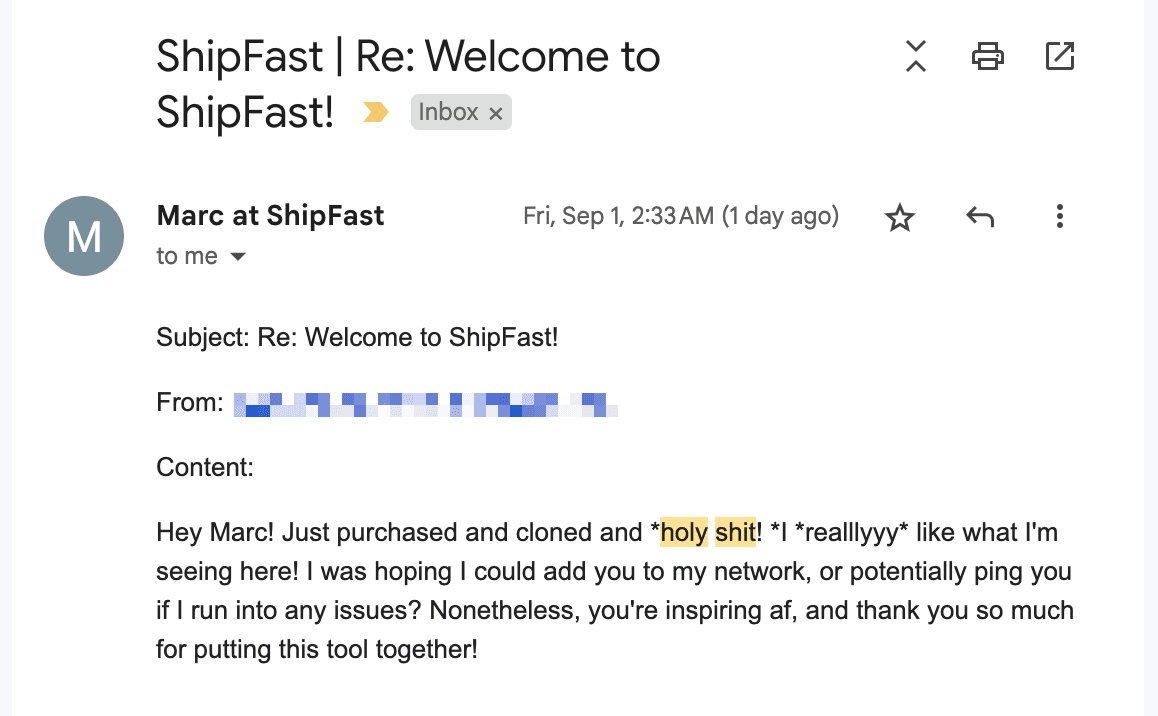The Almanack of Marc Louvion
A guide to escape the 9-5 and build a life you love
Wahab Shaikh
Contents
- Part 1: Audience
- Part 2: Marketing
- Ditch your subscription
- How to get your 1st customer
- How to get customers with programmatic SEO
- I made $250,000 selling JavaScript
- Rewriting 3 tweets
- Make catchy screenshots to grow on 𝕏
- How to launch a startup on Product Hunt
- How to get customers with free tool marketing
- 7 lessons from building 9 startups in 2023
- How to name a startup
- How to launch a startup on Hacker News
- How to write a landing page that sells
- Part 3: Mindset
- Part 4: Product
- Ditch your subscription
- I earn $1,753/day with this simple tech stack
- How I built 21 products in 2 years
- How to get customers with free tool marketing
- 3 profitable alternatives to free plans
- 7 lessons from building 9 startups in 2023
- Ditch your free plan
- Build your micro SaaS in 24 hours
- How to name a startup
- How to sell your micro startup
- How to validate a startup idea?
- Part 5: Design
- Part 6: Personal
- I Made $1M as a Solopreneur
- Noah Kagan texted me, haters, broken boards.
- I earn $1,753/day with this simple tech stack
- I built a micro SaaS in 31 hours
- I made $250,000 selling JavaScript
- How I built 21 products in 2 years
- 7 lessons from building 9 startups in 2023
- My solopreneur story: $0 to $65,000/month in 2 years
- Solopreneur Rollercoaster: From $1 to overcoming depression
- My first $1 online
- $6,000 of profit in 48 hours
Part 1 Audience
How to get your 1st customer
If you have 0 audience and $0 for marketing, here are 4 marketing strategies I used to get customers for all my startups.1/ Launch 2/ Cold outreach 3/ Build an audience 4/ Code, code, code
I assume you have a product but 0 audience and $0 for marketing.
Here are 4 marketing strategies I use as solopreneur to get customers for all my
startups.
1/ LAUNCH
List your product on popular launch platforms like Product Hunt.
It’s the fastest way to get results. And it’s free.
* How to launch a startup on Reddit
https://marclou.beehiiv.com/p/how-to-launch-a-startup-on-reddit* How to launch a startup on Product Hunt
https://marclou.beehiiv.com/p/how-to-launch-a-startup-on-product-hunt* How to launch a startup on Hacker News
https://marclou.beehiiv.com/p/how-to-launch-a-startup-on-hacker-newsSpend at least 1 hour crafting your headline. It’s 80% of a successful launch.
If you’re building an AI tool and have a few bucks to spare, list on AI
directories like TIAAIFT & Futurepedia.
2/ COLD OUTREACH
Developers like myself are scared of this task. But it works.
I made my first $1 online and grew a SaaS to $4,000 MRR
https://youtu.be/qj6Hy1u05NUusing cold emails.
Cold DM on Twitter, LinkedIn, and Instagram works too — If you do it right. I
get 30 cold outreachs per day. 99% are generic. 99% end up in the trash.
Quantity doesn’t matter. Quality does. Spend hours carefully crafting your
message:
* Benefit-oriented
* Ultra personalised
* Short (5 sentences max)
Cold outreach works best if you’re doing high-ticket clients or B2B.
If you can afford it, sponsor niche newsletters (like mine, but I don’t do
sponsorships, sorry!). It’s a clever way to do cold outreach at scale without
being salesy.
3/ BUILD AN AUDIENCE
It changed my life.
But unlike the other marketing channels, it takes a lot of time and it’s not for
everyone.
This part could be a book, so here’s the 80/20:
1. Pick a platform where you’re comfortable sharing your work: Twitter if you
like writing, Instagram if you’re good with photos, YouTube if you prefer
videos.
2. Build cool stuff. People need a reason to follow you.
3. Communicate using the platform’s code. Learn from creators who are already
successful.
4. Respect people’s time. Too short is better than too long.
5. Find your signature: Start by getting inspired by others, shine by being
you.
4/ CODE, CODE, CODE
This is for you if you’re a developer who can’t close VSCode.
* Build free tools you can launch anywhere and go viral
https://marclou.beehiiv.com/p/marketing-for-product-obsessed-developers* Rank hundreds of pages on Google, for free, with pSEO
https://marclou.beehiiv.com/p/how-to-grow-a-micro-startup-with-programmatic-seoIf you tried all the strategies above but none is working, it’s usually one of
these:
1. Your product doesn’t solve a real problem, consider moving on
2. Your landing page copy isn’t converting, improve it
https://marclou.beehiiv.com/p/how-to-write-a-landing-page-that-convertsYour first endeavor won’t magically be a success. But if you show up for long
enough, luck will find you.
Make catchy screenshots to grow on 𝕏
Visuals get you heaps of attention on 𝕏, if done right.1. Zoom, even too much2. Center the most important information3. Explain when necessary 4. Favor square and portrait format
If done right, visuals get you heaps of attention on 𝕏.
And when you’re building in public, there’s much worth sharing.
Let’s review the best practices for attention-grabbing screenshots with the
Stripe example below.
Estimated reading time: 2 min 47 sec
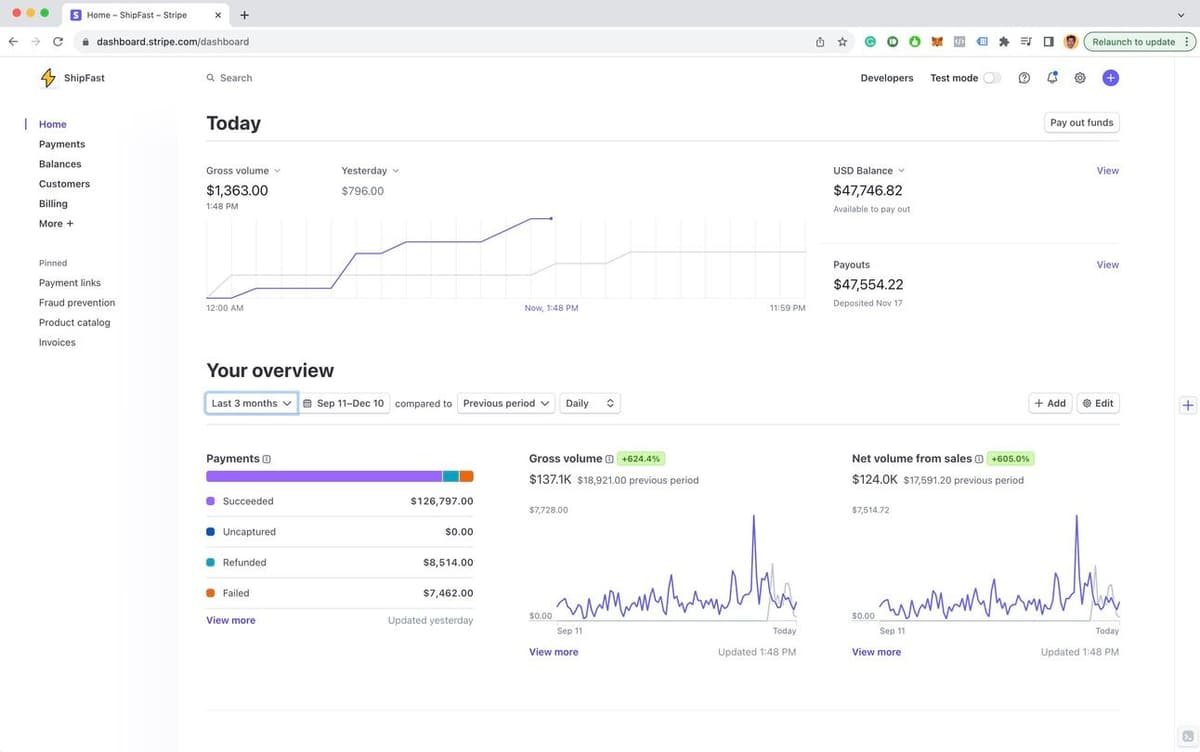
Let’s turn this raw screenshot into a tweet
BUILD-IN-PUBLIC UPDATE
I just started sharing what I do & learn as a solopreneur on my YouTube channel
https://www.youtube.com/@marc-lou/videosOne video a week — until I burn out 😄
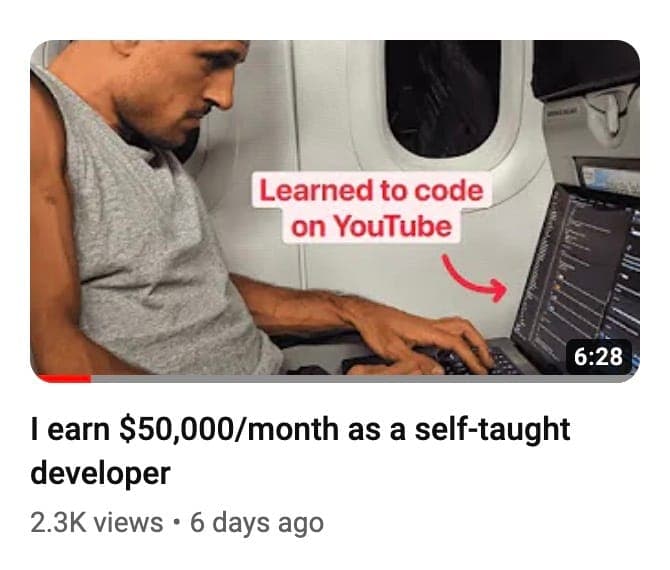
1. ZOOM, EVEN TOO MUCH
The width of a tweet is smaller than 500 pixels (13.2 centimeters or the length
of a pen).
Compared to your computer screen, the content will be less readable. People
won’t click and zoom.
Ditch everything that’s not crucial. Zoom until you can’t.
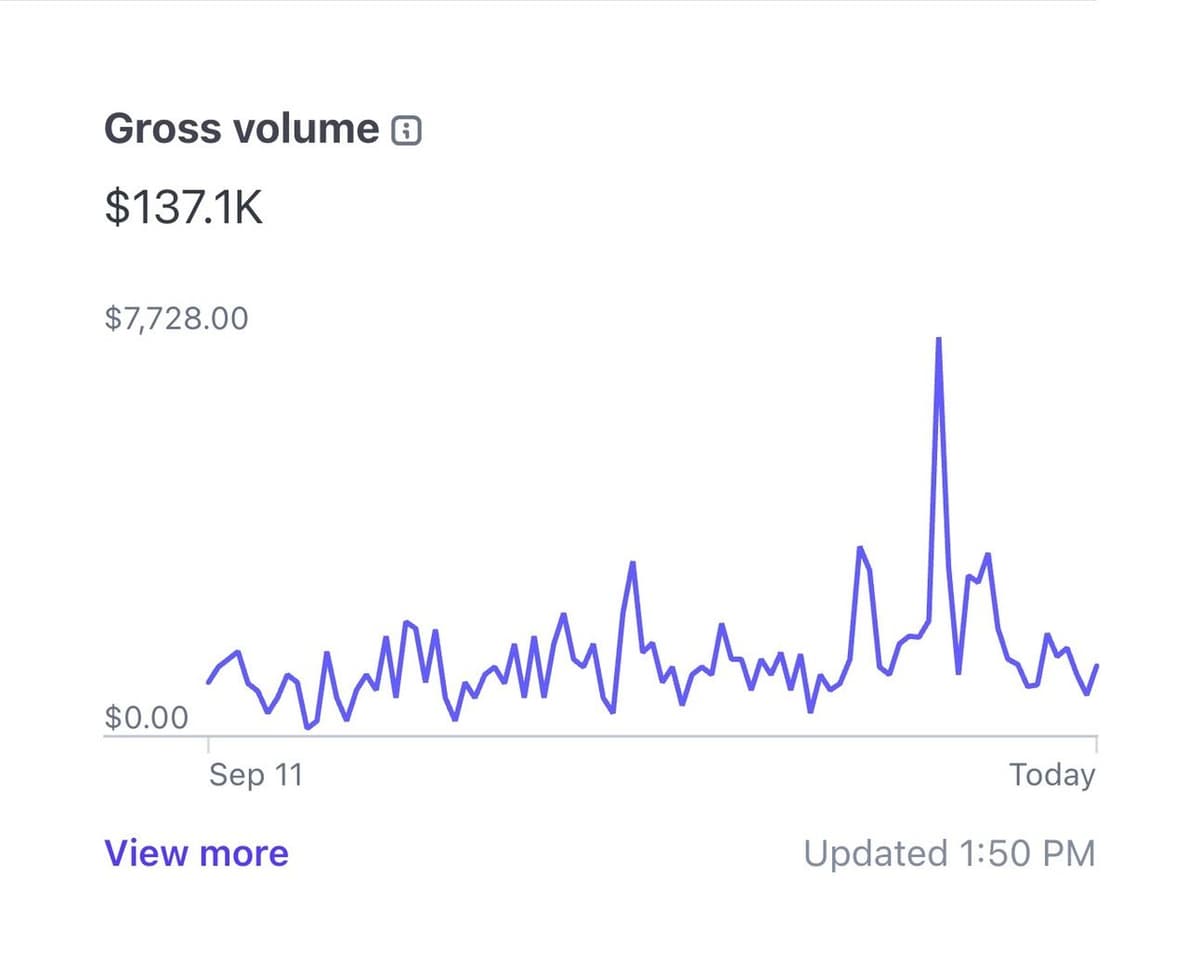
Zoom to capture only the interesting part
2. CENTER THE MOST IMPORTANT INFORMATION
The further away from the center, the less people will notice.
Information at the edges of the screenshots is usually ignored.
3. EXPLAIN WHEN NECESSARY
Screenshots that don’t convey any meaning get lost in the void. Use clear and
visual explanations for people to understand your message.
* Use arrows to tell people where to look
* Underline to showcase information
* Write text to explain the meaning
Screenshot tools like CleanShotX or Xnapper have features to help you do this
without design skills.
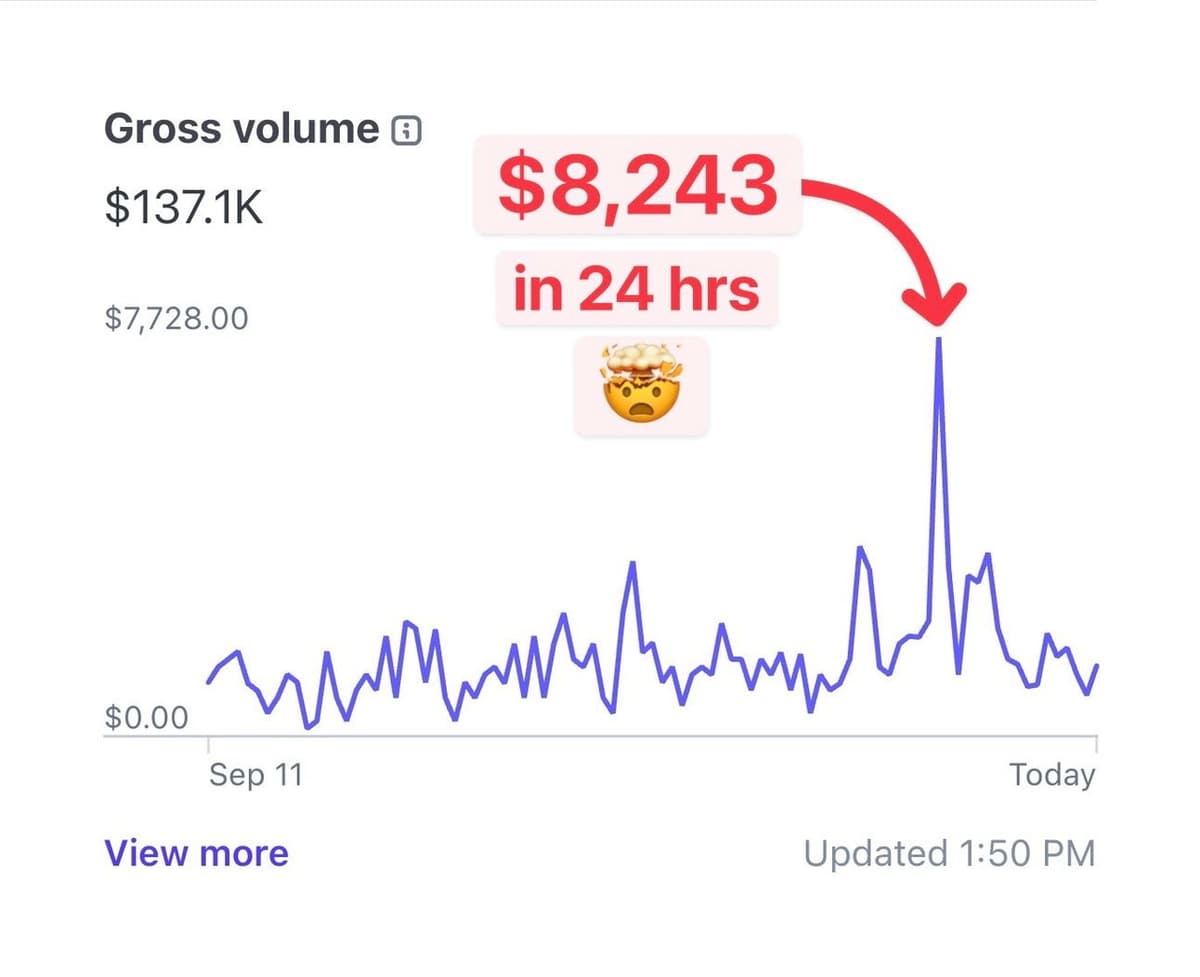
After getting hooked by a screenshot, people want to learn more
4. FAVOR SQUARE AND PORTRAIT FORMAT
It gets more real estate on the 𝕏 feed.
If you’re working on a laptop, resize your window as a mobile before taking a
screenshot. The format will be more suitable for a tweet.
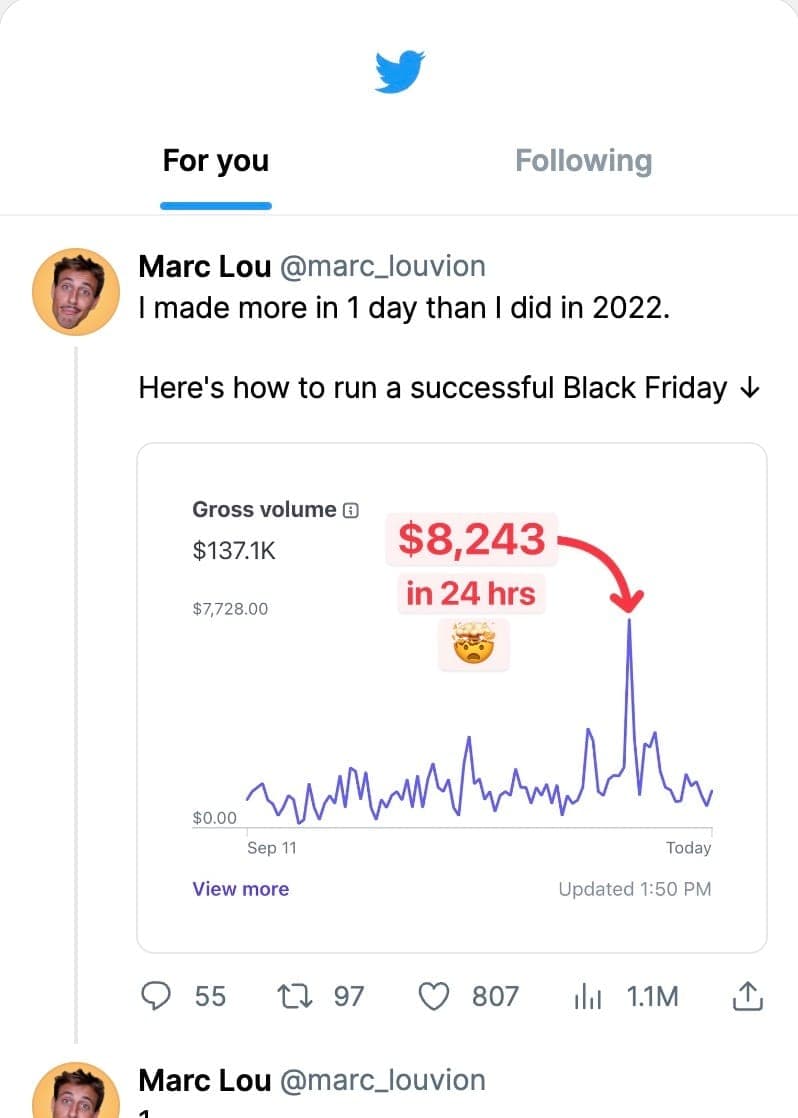
Now you have my attention, let me read the thread
AVOID BACKGROUNDS
Colorful/gradient backgrounds in screenshots are a bit overrated.
* They distract from the actual content.
* They reduce readability and make the image cramped.
* Fancy backgrounds aren't meaningful for analytics or bill screenshots.
I only add backgrounds to success screenshots with minimal content, like revenue
or followers milestones.
My rule of thumb for anything I create (websites, videos, tweets): Convey
meaning within 2 seconds.
I hope the best practices above will help you get more attention. Tag me when
you tweet, and I’ll check if it can be improved. Have a great weekend!
— Marc
7 lessons from building 9 startups in 2023
1. Don't marry your idea 2. Ditch free plans 3. Subscriptions headache is real 4. Swap vitamins for painkillers 5. Emotions sell 6.First impressions matter 7. Food + Sleep + Workout = Psychiatrist1. Don’t marry your idea2. Ditch free plans3. Subscriptions headache is real4. Swap vitamins for painkillers 5. Emotions sell6. First impressions matter7. Food + Sleep + Workout = Psychiatrist
I was lucky in 2023 — my income jumped from $1,500 in January, to $65,000 in
November.
But the real outcome was the knowledge I acquired.
Here are 7 lessons I wish I knew when I started the solopreneur journey.
Estimated reading time: 2 min 36 sec
BUILDING IN PUBLIC UPDATE
My logo maker LogoFast
https://logofa.st/got the full awards from Product Hunt 🤩
Less time designing, more time shipping!
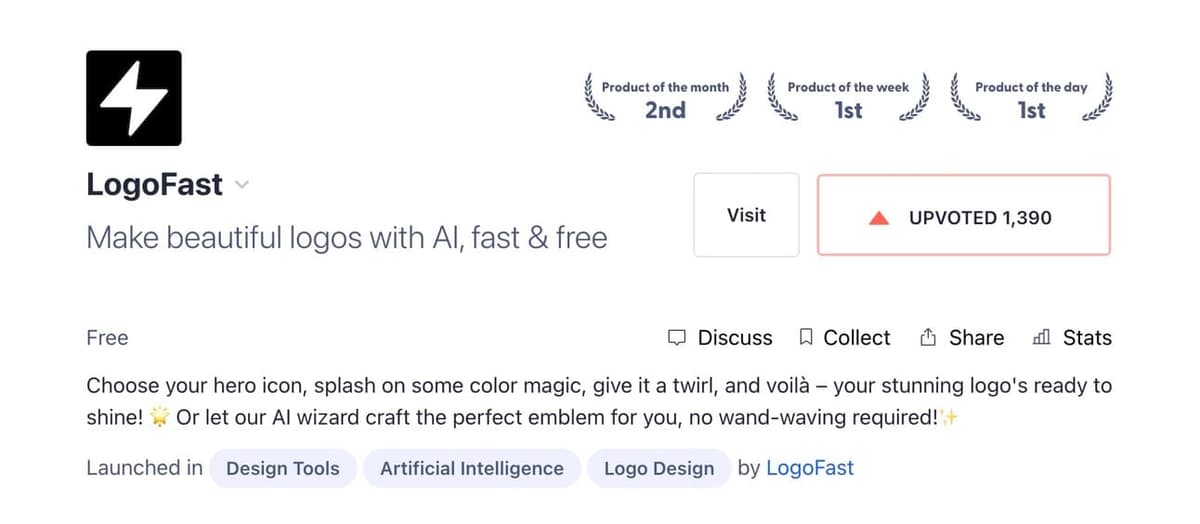
1. DON’T MARRY YOUR IDEA
Out of the 20+ startups I launched, only 1 made good money and grew.
It’s the same pattern for most solopreneurs who made life-changing money.
When it’s time to focus on your startup, you’ll know.
2. DITCH FREE PLANS
Only 3% of users upgrade to paid plans
https://marclou.beehiiv.com/p/ditch-your-free-plan.You need 10,000 users to make $3,000 ($10/mo subscription). That’s an insane
amount of work for a solopreneur.
“Grow first, monetize later” is for VC-backed startups.
3. SUBSCRIPTIONS HEADACHE IS REAL
I killed a startup by swapping one-time payments for recurring ones.
Monthly passive income is good for business owners only. Users are much more
reluctant to subscriptions.
Start with one-time payments. Add subscriptions if there’s a demand.
4. SWAP VITAMINS FOR PAINKILLERS
100,000 visitors on my nice-to-have product website made $6,000.
100,000 visitors on my must-have product website made $100,000.
Unless you have an audience, avoid note-taking apps or habit trackers. People
buy solutions to painful problems.
5. EMOTIONS SELL
Few care about a NextJS boilerplate. But many care about a shortcut to ship
startups faster and reach financial independence.
Rephrase your copy to trigger an emotional reaction.
6. FIRST IMPRESSIONS MATTER
In our digital world, it’s the headline of your website, the thumbnail of your
YouTube video, or the first sentence of your tweet.
That one sentence has more impact on your conversion rate than anything else.
7. FOOD + SLEEP + WORKOUT = PSYCHIATRIST
As a solopreneur, you’re wearing 10 hats (developer + copywriter + accountant…).
Burnout is around the corner.
* Eat healthy, avoid carbs, quit sugar and alcohol
* Exercise daily, even if it’s an easy 15-minute workout
* Make sleep your #1 priority. Sleep at the same time every day in a dark room
at 18°. Don’t drink coffee 10 hours before bed, don’t drink water 3 hours
before bed, dim lights 1 hour before bed.
Your first 1,000 followers on 𝕏
What I would do if I lose 50,000 followers overnight.1. Create your unique profile2. Engage with creators of your expertise3. Post about your work
In 2022, my tweets would get 1 like (mine) before disappearing into the void.
In 2023, my tweets allow me to speak to 50,000 followers, make a living, and
create relationships.
Here’s what I would do if I had to start again.
Estimated reading time: 3 min 38 sec
A chart showing 𝕏 followerss growth
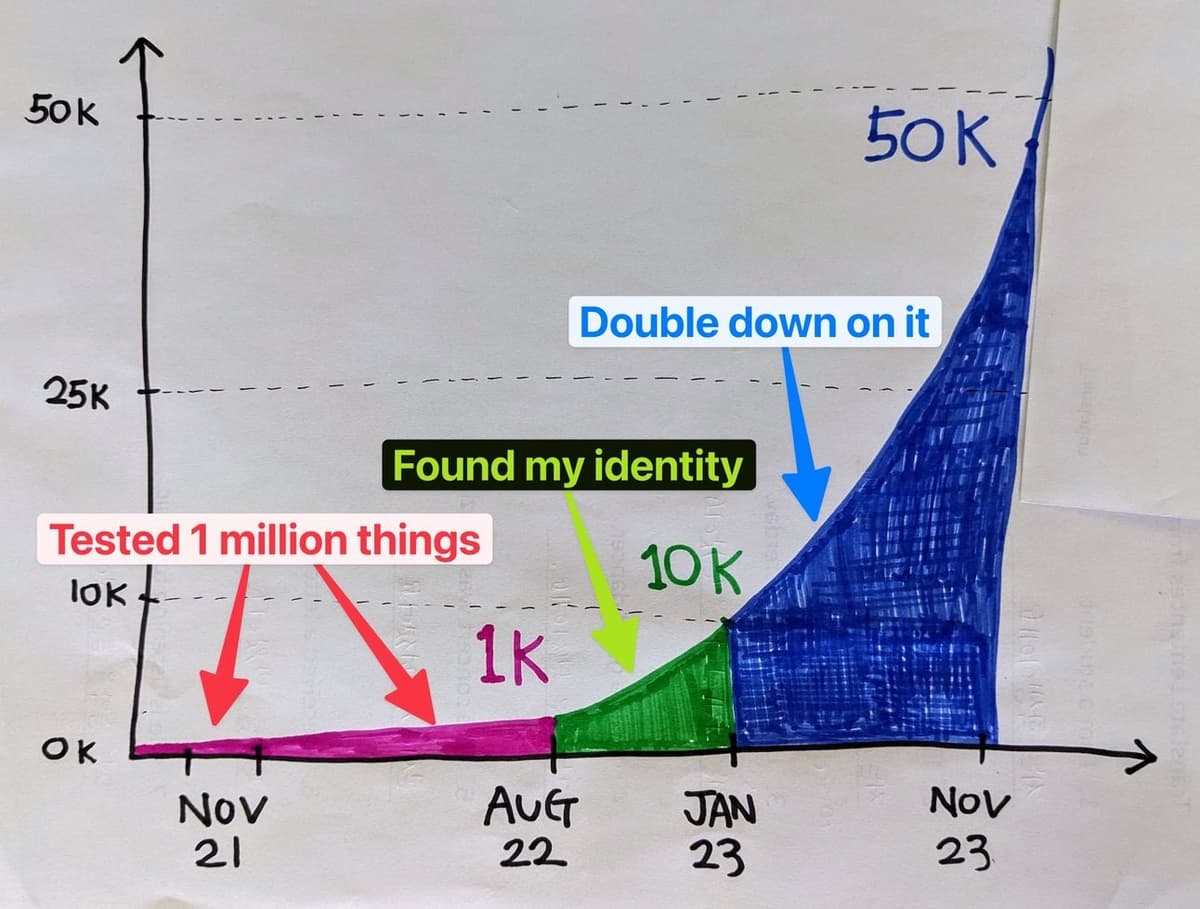
BUILDING IN PUBLIC UPDATE
I’ve been playing with videos on 𝕏 this year and the results are incredible.
This tweet
https://x.com/marc_louvion/status/1727669772257841416generated $11,000 in 36 hours during Black Friday last week.
Videos could be really big on 𝕏 in 2024.
1. CREATE YOUR UNIQUE PROFILE
Your 𝕏 profile is what people see before clicking “Follow”. It should be
crystal clear (or noise-free).
Start by finding your identity. Are you a tech solopreneur? A designer? Then
build your profile around it:
* Your bio: Mention your identity explicitly. If you have a relevant track
record, add it. Otherwise, keep it simple.
* Your name: It should be your name or a nickname. Not your startup or revenue
goal.
* Your profile picture: It should be as close to you as possible (unless you’re
in crypto).
* Your banner picture and pinned tweet: Showcase your identity or promote your
work.
Ditch everything that doesn’t add value to your identity: dad of 3, part-time
student, hobbies… Now, onto the most important part.
2. ENGAGE WITH CREATORS OF YOUR EXPERTISE
Most of your new followers will not come from your tweets, but from your replies
to established creators’ tweets.
First, follow 100 creators with the same identity as yours. 𝕏 is good at
recommending them. Like their tweets so your feed will be filled with their
content.
Then reply to their posts as much as you feel comfortable. Make a witty joke,
root for them, and add value. Don’t promote your work unless it’s super
relevant. Behave like you would in real life to create relationships.
3. POST ABOUT YOUR WORK
You want to tell us a story and build your identity. People will start to see
you as the person working on XYZ and root for you. Here’s what I would post
about:
* 60% of behind-the-scenes: What course are you learning from? What feature are
you adding to the app?
* 30% of learnings: What do you know now, and didn’t a month ago?
* 10% of lifestyle: Sunday plan?
This could be a dedicated issue but here are some tips for crispy tweets:
* Say “I”, not “you”
* Avoid long format
* Don’t use ChatGPT
* Tell a story in each post
* 1 sentence = 1 paragraph
* The first sentence is the most important
* Add visuals to add trust (i.e. traffic analytics, code screenshots)
You don’t need analytics or tools. Engage with people, behave like you would in
the real world, and show up daily. That’s how you build relationships and grow
your 𝕏 following.
How to grow on 𝕏?
This is what I'd do if I lost 36,000 followers.Why should someone follow you?How to be useful?
Hey, it’s Marc
I started 𝕏 in November 2021 with 0 followers. It took 8 months to get the
first 1,000 followers.
Now, it takes 10 days to get 1,000 followers. The game-changer was knowing what
to write, and what not. Let’s talk about it!
Estimated reading time: 3 minutes 12 seconds
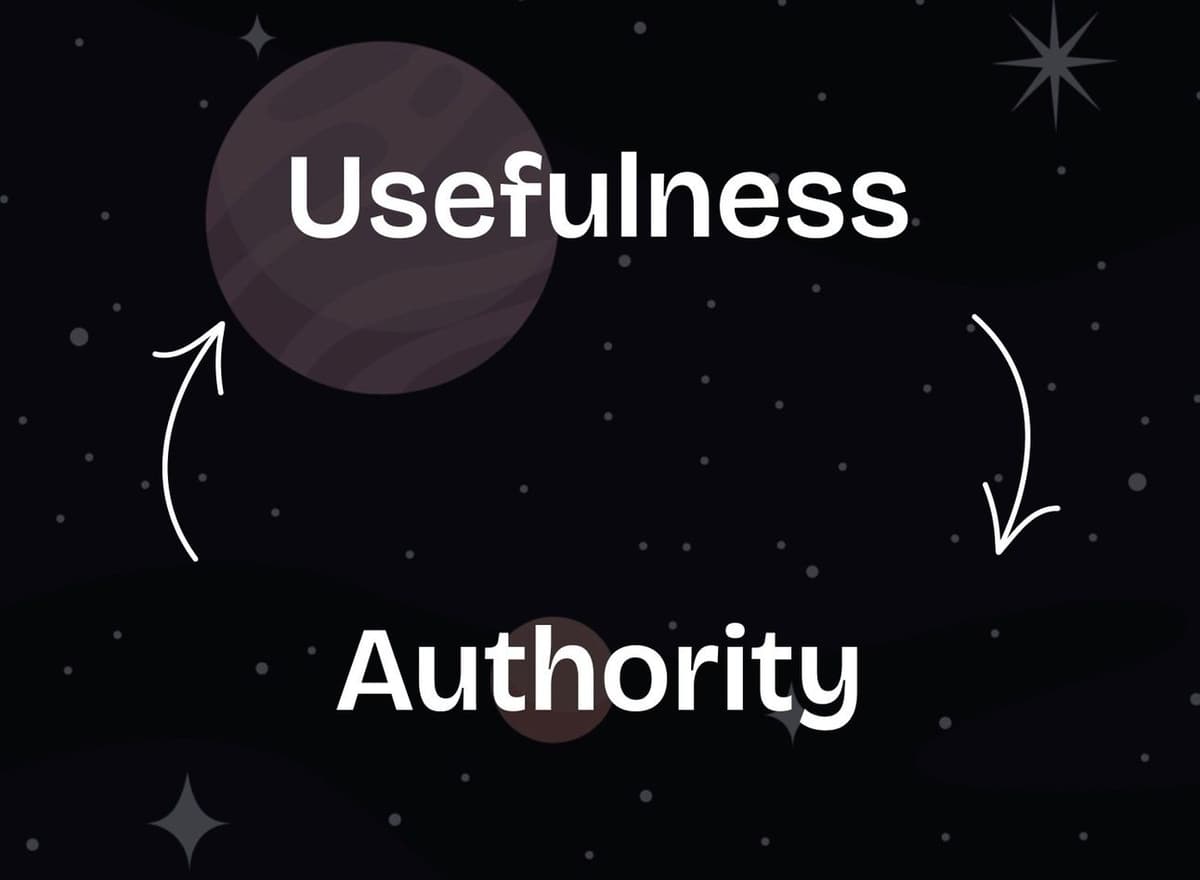
WHY SHOULD SOMEONE FOLLOW YOU?
It comes down to 2 criteria:
1. USEFULNESS
There are only two types of content we consume on 𝕏: educational and
inspirational.
* Educational tweets make us smarter, like how to use GPT-4 to improve SEO.
* Inspirational tweets motivate us to crush our goals, like an MRR growth chart
from a fellow solopreneur.
Usefulness describes the level of education/inspiration of a Tweet.
90% of your content should be useful (it’s OK to post about your cat from time
to time).
2. AUTHORITY
6,000 tweets per second.
We’re all competing to get attention. What’s the easiest way to know if a
creator is worth our time?
Her number of followers. If people trust her, so should I.
But authority is a just byproduct of usefulness. So we start with the latter.
HOW TO BE USEFUL?
1. YOU INSPIRE OTHERS
People should read your tweets and think you’re special, unique, and different.
At first, you’re inspirational with what you do:
* You build startups from a boat
* You learn how to code in 6 weeks
* You ship an app every month while working 9 to 5
Then you keep inspiring with your results:
* You get acquired
* You reach ramen profitability
* You get a DM from someone famous
There’s no way to manufacture inspiration. You have to live a remarkable life,
share it, and be patient.
Avoid the future tense trap: a commitment is far less inspiring than an
achievement.
2. OR YOU EDUCATE THEM
You don’t need to be an expert to teach. You only need to know something people
don’t:
* A MacOS shortcut
* A new subreddit to promote an app
* A writing formula to get upvotes on Hacker News
For instance, I follow @wono_strategy because he writes about growing an
audience in a genuine way. I binge, like, and retweet everything he says because
it resonates with me and I haven’t heard this before.
There are two traps to avoid:
1. Everything Education: If you write about habits, audience building, and
finance, your readers will be lost. Focus on your field of expertise.
2. Abstract Education: Topics like motivation, focus, or productivity are too
abstract to be taught on 𝕏. Avoid them, or niche down like @heyeaslo
(productivity + Notion)
My 𝕏 account started to grow once I realized which category I fell into. People
were inspired by the velocity at which I built apps. So I redesigned my profile
and focused on shipping more.
Part 2 Marketing
Ditch your subscription
I killed 3 startups because of recurring paymentsThe Subscription Fatigue Era$10/month VS. $100One-time payments alternativeWhen subscriptions make sense
The most popular advice for entrepreneurs is to charge subscriptions. Passive
income and predictable revenue, yes sir!
This is terrible advice.
Here’s why recurring payments are killing your business.
SOLOPRENEUR UPDATE
I spent the last 3 months building a new SaaS… 🥁
Introducing DataFast
https://datafa.st/— the actionable analytics tool for founders who want to grow their startups
with data.
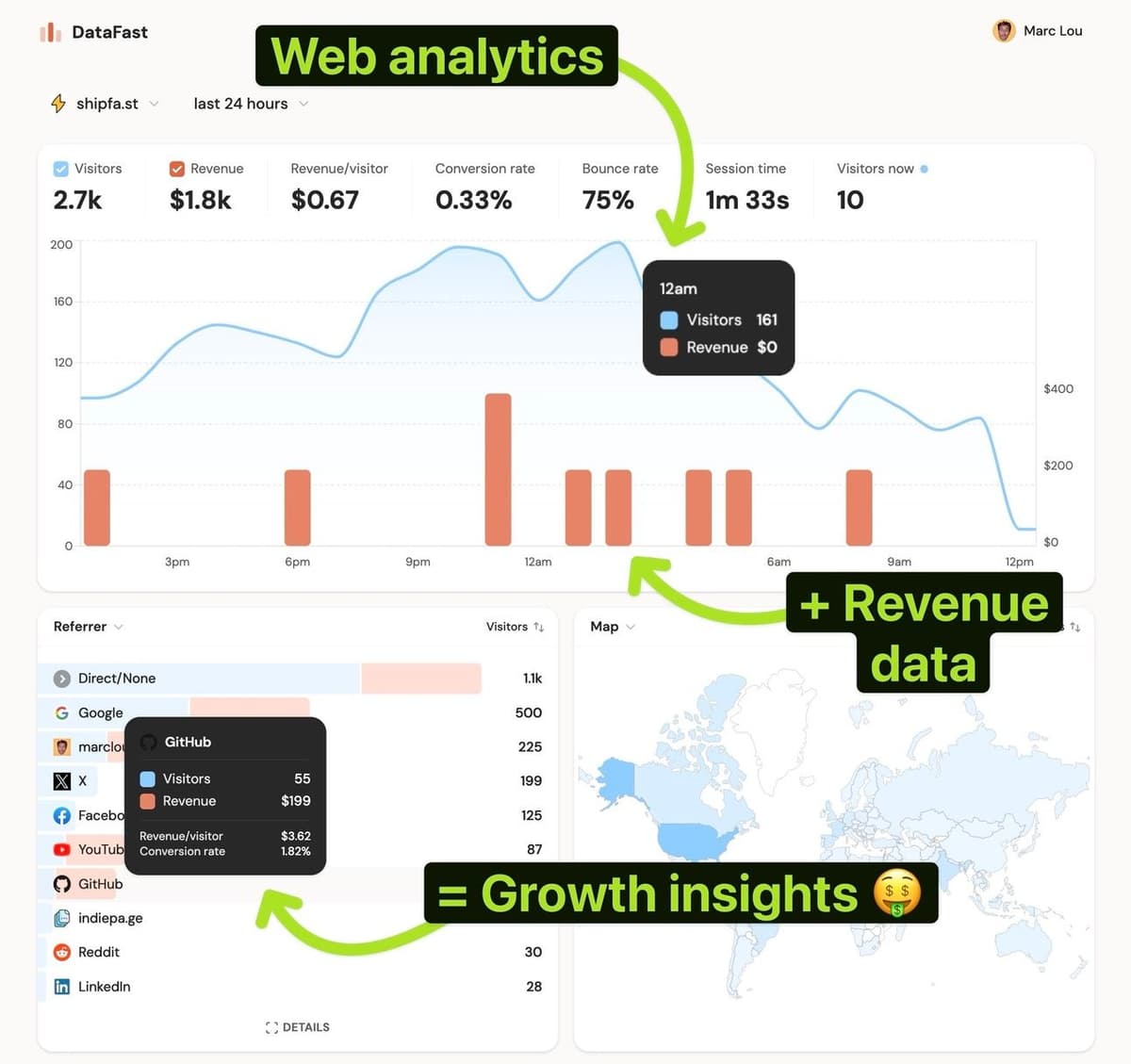
If you try it, I’d love your feedback!
THE SUBSCRIPTION FATIGUE ERA
I killed 3 startups because of recurring payments:
1. IndiePage
https://indiepa.ge/* ✅ It makes $4,000/month on autopilot ($45 for lifetime access).
* ❌ It made $0/month when I priced it at $15/year.
2. MakeLanding
https://makelanding.ai/* ✅ It made $100/day when I launched ($19 per landing page generated).
* ❌ It made $0 with a $5/month subscription.
3. HabitsGarden
https://habitsgarden.com/* ✅ 100% of users chose the $47 lifetime deal.
* ❌ Nobody buys the $5/month plan.
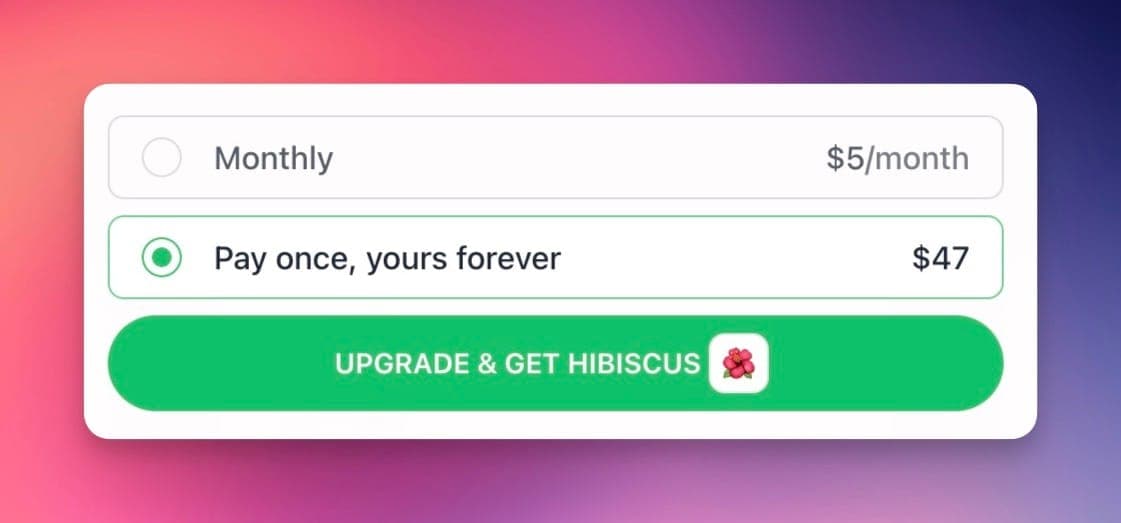
10x the monthly price, but 100% of the sales
Netflix, Spotify, wifi... I spend a few thousand dollars a year on these
services. When I see $19/month, it’s not just $19. It’s $228 a year, on top of
everything else.
Business owners love subscriptions. Customers hate them.
Here’s the invisible cost of charging recurring payments:
* Conversion rate drop: People are reluctant to commit to another subscription,
which triggers objections and hesitation.
* Fighting churn: People lose interest soon after signing up. Instead of a
steady income, you’re constantly replacing customers who cancel.
$10/MONTH VS. $100
Selling a $10/month monthly subscription is as hard as selling a $100 one-time
payment.
Let’s assume you built an excellent SaaS (10% churn = 10% of your customers
cancel at the end of the month).
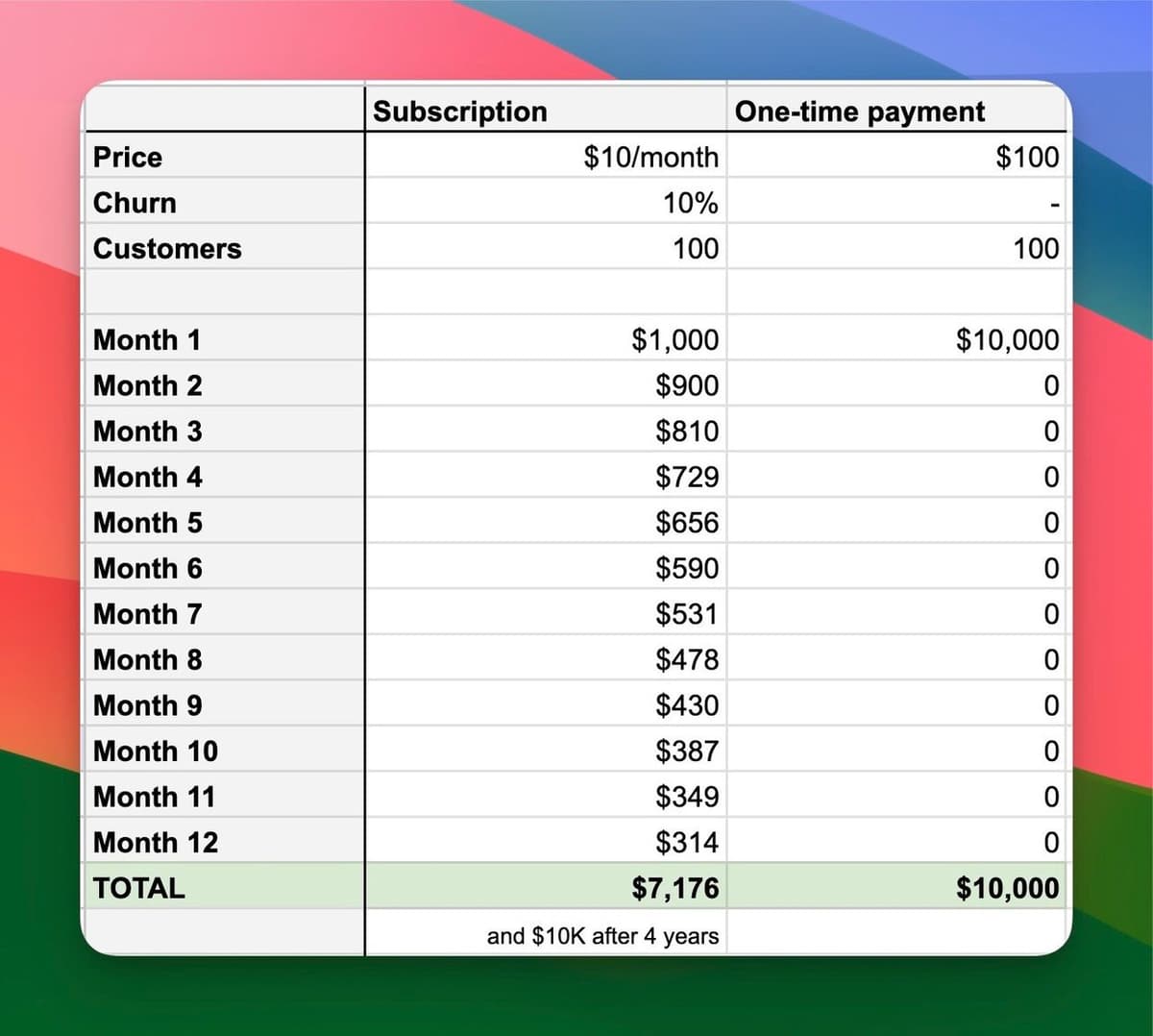
Imagine you get 100 customers today:
* You’ll earn $7,176 with subscriptions, after 365 days.
* You earn $10,000 with one-time payments, right now.
Subscription doesn’t mean recurring revenue. If you’re working solo, in 99% of
cases you’re better off financially with one-time payments.
ONE-TIME PAYMENTS ALTERNATIVE
Sometimes, your business has recurring costs, and you can’t afford one-time
payments. I’m not talking about bandwidth (that’s negligible) but things like AI
credits or database costs.
Then try credits-based pricing:
* Let your customers pay upfront for what they’ll use. Generate 10 AI photos
for $5.
* Then, add a Good-Better-Best
https://hbr.org/2018/09/the-good-better-best-approach-to-pricingpackage. 100 AI photos for $20 ($.2/photo looks cheap now)
This removes the subscription friction (which boosts your conversion rate) and
helps you avoid constantly fighting churn.
WHEN SUBSCRIPTIONS MAKE SENSE
* B2B: If you’re selling to businesses, subscriptions make sense because the
end goal of any business is to make money.
* Complex credits: When tracking credits is too complex or it’s hard to
quantify what your customers use.
Subscriptions serve a specific purpose. Recurring payment = Recurring value
according to my friend Dan
https://twitter.com/DanKulkovJust because competitors charge recurring payments doesn’t mean you should.
Remember, people are tired of subscriptions, and purchase behavior is changing.
Not charging a subscription can be a competitive edge.
Oh, and entrepreneurs flex on each other with MRR charts. It’s a status game,
don’t fall for it. In the end, the customer is king.
How to get your 1st customer
If you have 0 audience and $0 for marketing, here are 4 marketing strategies I used to get customers for all my startups.1/ Launch 2/ Cold outreach 3/ Build an audience 4/ Code, code, code
I assume you have a product but 0 audience and $0 for marketing.
Here are 4 marketing strategies I use as solopreneur to get customers for all my
startups.
1/ LAUNCH
List your product on popular launch platforms like Product Hunt.
It’s the fastest way to get results. And it’s free.
* How to launch a startup on Reddit
https://marclou.beehiiv.com/p/how-to-launch-a-startup-on-reddit* How to launch a startup on Product Hunt
https://marclou.beehiiv.com/p/how-to-launch-a-startup-on-product-hunt* How to launch a startup on Hacker News
https://marclou.beehiiv.com/p/how-to-launch-a-startup-on-hacker-newsSpend at least 1 hour crafting your headline. It’s 80% of a successful launch.
If you’re building an AI tool and have a few bucks to spare, list on AI
directories like TIAAIFT & Futurepedia.
2/ COLD OUTREACH
Developers like myself are scared of this task. But it works.
I made my first $1 online and grew a SaaS to $4,000 MRR
https://youtu.be/qj6Hy1u05NUusing cold emails.
Cold DM on Twitter, LinkedIn, and Instagram works too — If you do it right. I
get 30 cold outreachs per day. 99% are generic. 99% end up in the trash.
Quantity doesn’t matter. Quality does. Spend hours carefully crafting your
message:
* Benefit-oriented
* Ultra personalised
* Short (5 sentences max)
Cold outreach works best if you’re doing high-ticket clients or B2B.
If you can afford it, sponsor niche newsletters (like mine, but I don’t do
sponsorships, sorry!). It’s a clever way to do cold outreach at scale without
being salesy.
3/ BUILD AN AUDIENCE
It changed my life.
But unlike the other marketing channels, it takes a lot of time and it’s not for
everyone.
This part could be a book, so here’s the 80/20:
1. Pick a platform where you’re comfortable sharing your work: Twitter if you
like writing, Instagram if you’re good with photos, YouTube if you prefer
videos.
2. Build cool stuff. People need a reason to follow you.
3. Communicate using the platform’s code. Learn from creators who are already
successful.
4. Respect people’s time. Too short is better than too long.
5. Find your signature: Start by getting inspired by others, shine by being
you.
4/ CODE, CODE, CODE
This is for you if you’re a developer who can’t close VSCode.
* Build free tools you can launch anywhere and go viral
https://marclou.beehiiv.com/p/marketing-for-product-obsessed-developers* Rank hundreds of pages on Google, for free, with pSEO
https://marclou.beehiiv.com/p/how-to-grow-a-micro-startup-with-programmatic-seoIf you tried all the strategies above but none is working, it’s usually one of
these:
1. Your product doesn’t solve a real problem, consider moving on
2. Your landing page copy isn’t converting, improve it
https://marclou.beehiiv.com/p/how-to-write-a-landing-page-that-convertsYour first endeavor won’t magically be a success. But if you show up for long
enough, luck will find you.
How to get customers with programmatic SEO
You don't need an audience or a marketing budget to get visitors. Here's how to grow a startup for free when you're a solopreneur who loves coding.What’s Programmatic SEO?1. Find 1 keyword2. Build a webpage empire3. Rank on Google
Imagine making money while you sleep… with 0 followers and $0 in marketing.
Sounds like I’m selling you a get-rich-quick course. Hold on!
This is just a guide about how I get 300 visitors a day from Google, for free,
using programmatic SEO.
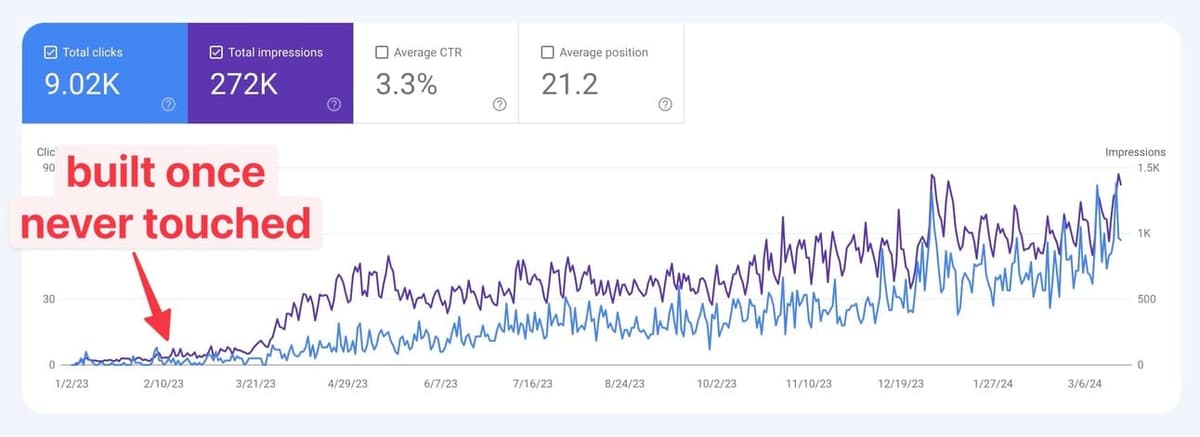
WHAT’S PROGRAMMATIC SEO?
Programmatic SEO (pSEO) is a marketing strategy to rank on Google for a group of
long-tail keywords related to 1 main keyword.
You use programming to build a skeleton. And you fill it with content, usually
generated programmatically too. In other words, SEO for features-addict
developers.
That’s how I got
* 15,600 visitors on BooksCalculator
https://bookscalculator.com/* 9,000 visitors on GamifyList
https://gamifylist.com/* 4,500 visitors on WorkbookPDF
https://workbookpdf.com/I built them once and never touched them again. All free traffic from Google.
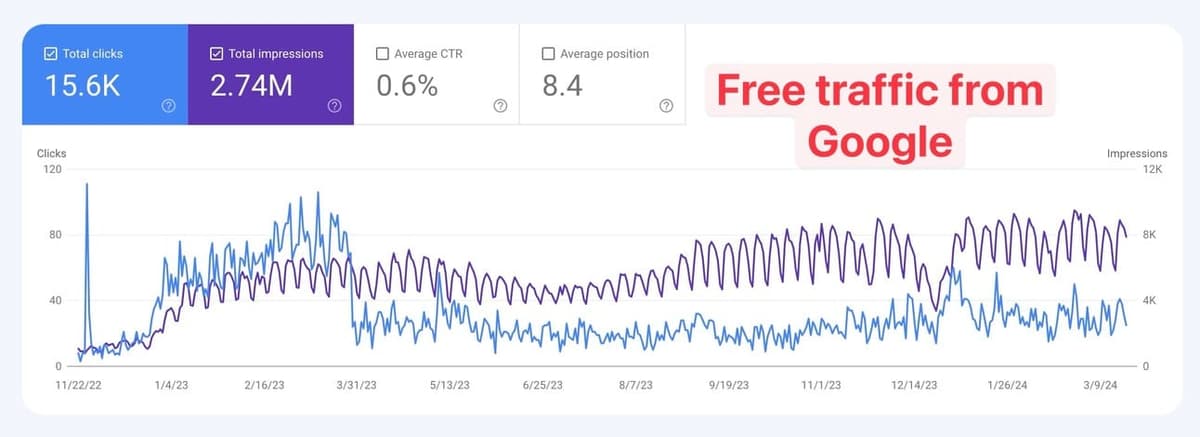
1. FIND 1 KEYWORD
Let’s use a real example.
Our business is a directory of rage rooms — like TripAdvisor — to help people
find the best place to smash away stress.

The business model?
1. Get traffic on autopilot
2. Show ads and profit
3. Move to Bali
Let’s skip the last part and focus on getting traffic with pSEO.
First, you need 1 keyword with:
* Keyword Difficulty (KD) lower than 20. It requires 10 backlinks or less
required to rank on Google
* Search volume superior to 500 per month in 1 country (3x this for worldwide
searches)
Ahref's free keyword generator tool
https://ahrefs.com/keyword-generator/shows you exactly that. And guess what? The keyword “rage room” is (almost)
perfect.
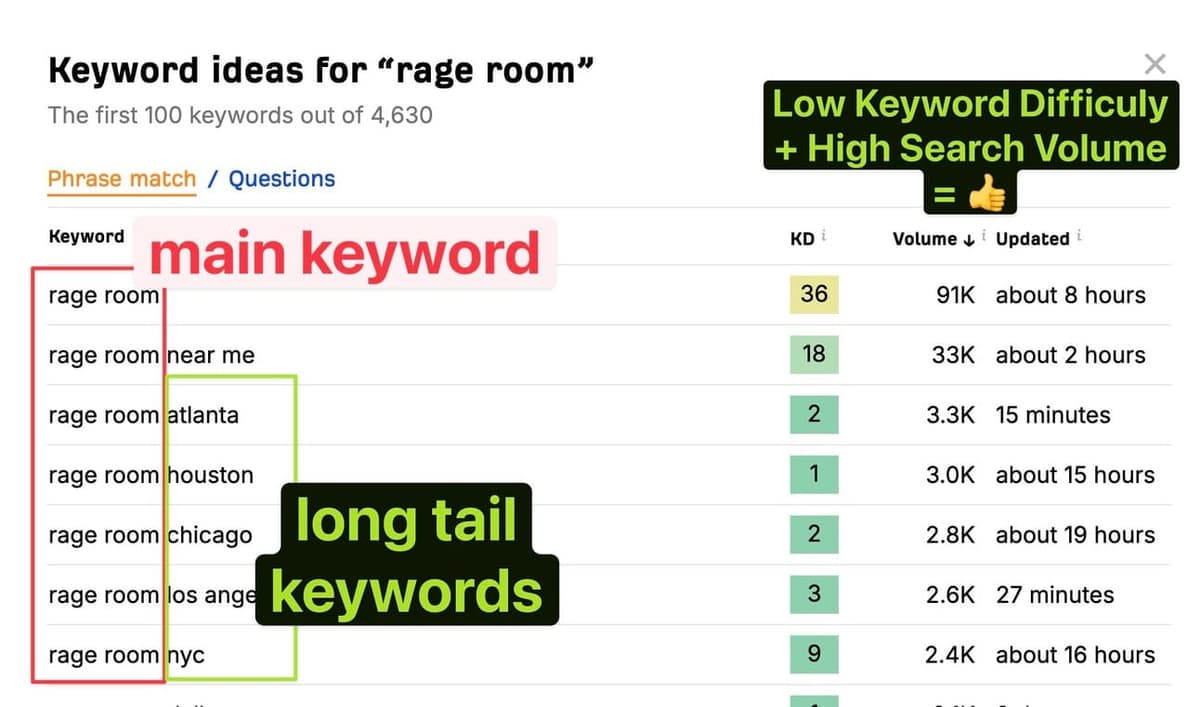
KD is a bit high for a start, it’s just an example
Second, we need numerous long-tail keywords (at least 20).
There’s a high volume of searches for “rage rooms in [city]” and a low keyword
difficulty. Let’s build around these keywords.
2. BUILD A WEBPAGE EMPIRE
We want to create 1 webpage per long tail keyword.
There are 333 cities with over 100,000 people in the USA. Let’s assume there are
1000 rage rooms (random guess).
Here’s what our website structure looks like:
* / → main welcome page (1 webpage)
* /[city] / → all rage rooms in [city] (1 skeleton, 333 webpages)
* /rage-room/[rage room name] → a rage room page (1 skeleton, 1000 webpages)
A. CREATE A SKELETON
A skeleton is an HTML mold. Add some data, and you have a unique webpage.
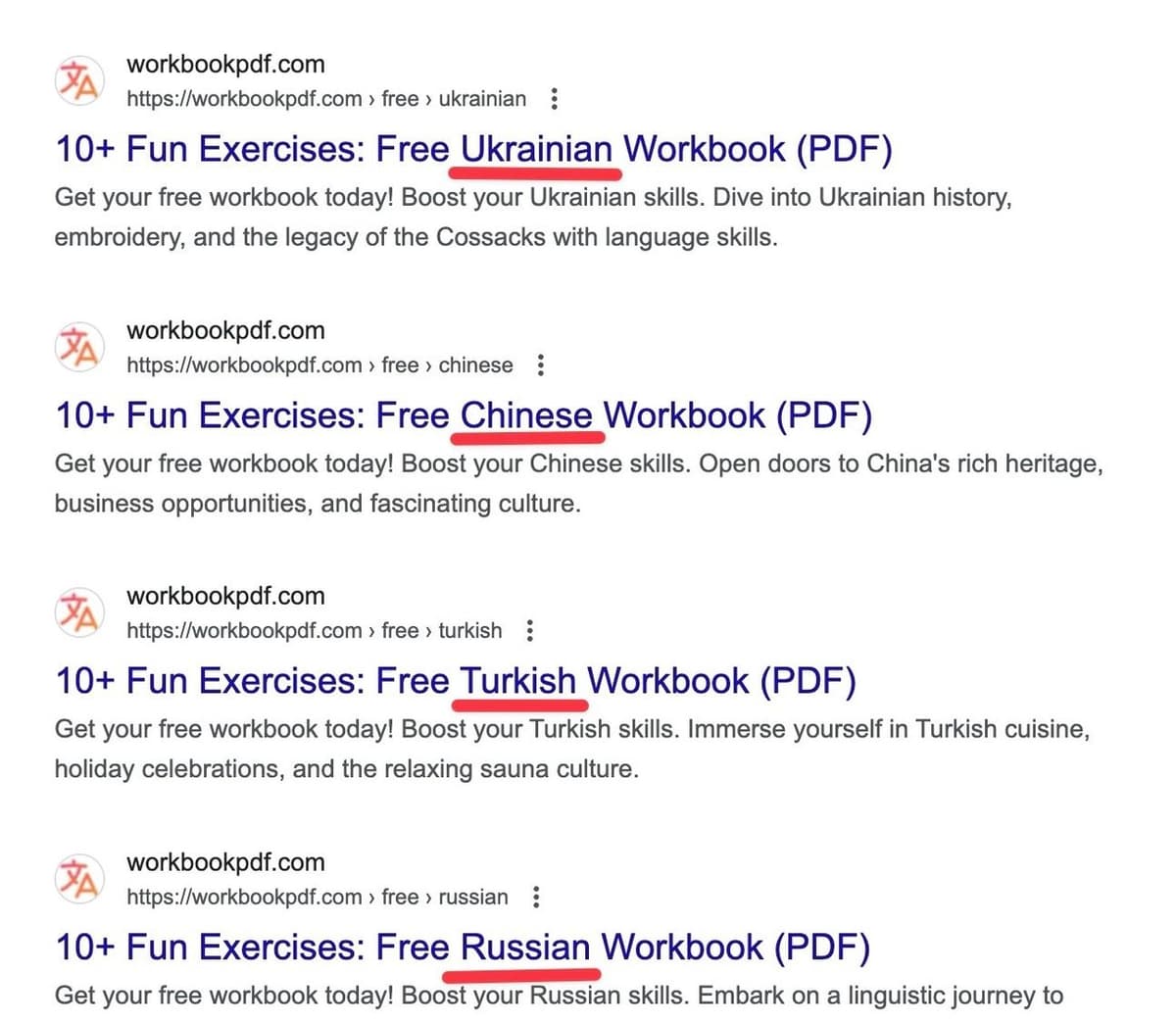
My product WorkbookPDF has 1 skeleton for 25 pages:
https://workbookpdf.com/free/[language]
For instance, the skeleton for the /[city] route (the 333 webpages with all rage
rooms in [city]) would look like this:
* H1: “The [total] best rage rooms in [city]”
* Description: “Explore [city]’s top rage rooms! Find the perfect spot to smash
away stress and have a blast. From [district_1] to [district_2], we've got
you covered. Let the fun begin!”
We want to build as many valuable pages as possible. Pretend you’re searching
for a rage room in New York. What do you want to see?
* The list of rage rooms, sorted by Google Maps stars
* The price per hour and the type of objects you can break
* A button to book a rage room
The list goes on. Search for patterns while crafting the experience of the
end-user. By building 3 HTML skeletons, we can have 1334 web pages ranking on
Google.
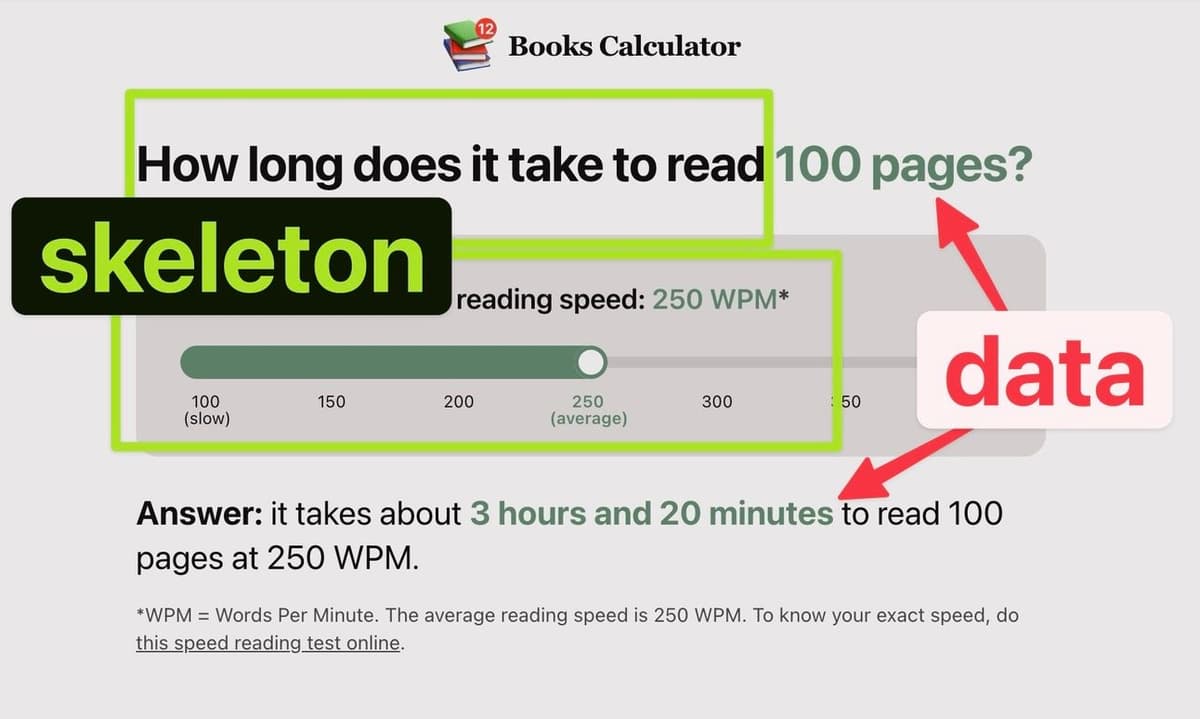
BooksCalculator has 100+ pages ranking for “How long to read [pages_number]?”
B. COLLECT GOOD DATA
We need rich data to build valuable web pages and rank on Google. For example:
* 333 cities
* City name
* City photo
* Popular districts
* 1000 rages rooms
* Business name
* Starting price
* Reviews
Most of our data could be obtained using Google Maps API.
To get richer data, outsource the data collection for a few hundred dollars
and/or use ChatGPT for some parts, like the meta description.
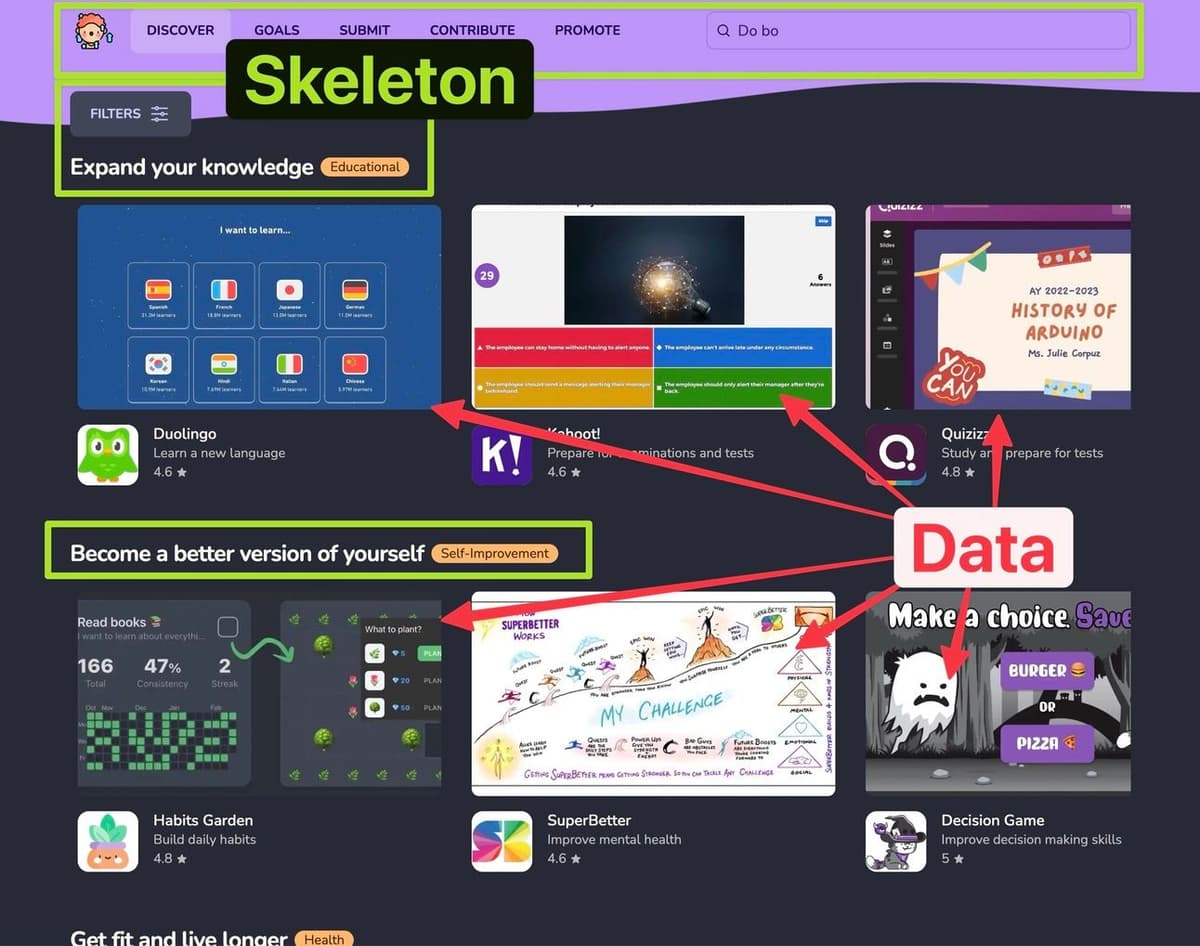
For GamifyList, I spent $150 to collect the best 600 gamification apps from a VA
C. OPTIMIZE YOUR SEO
Once you have 1334 webpages built with your skeleton and the data, make them
SEO-friendly
* The long tail keyword should be in the title and <h1> tags, at least
* The images should have an alt text, good size, and lazy loaded
* Links and buttons should have titles
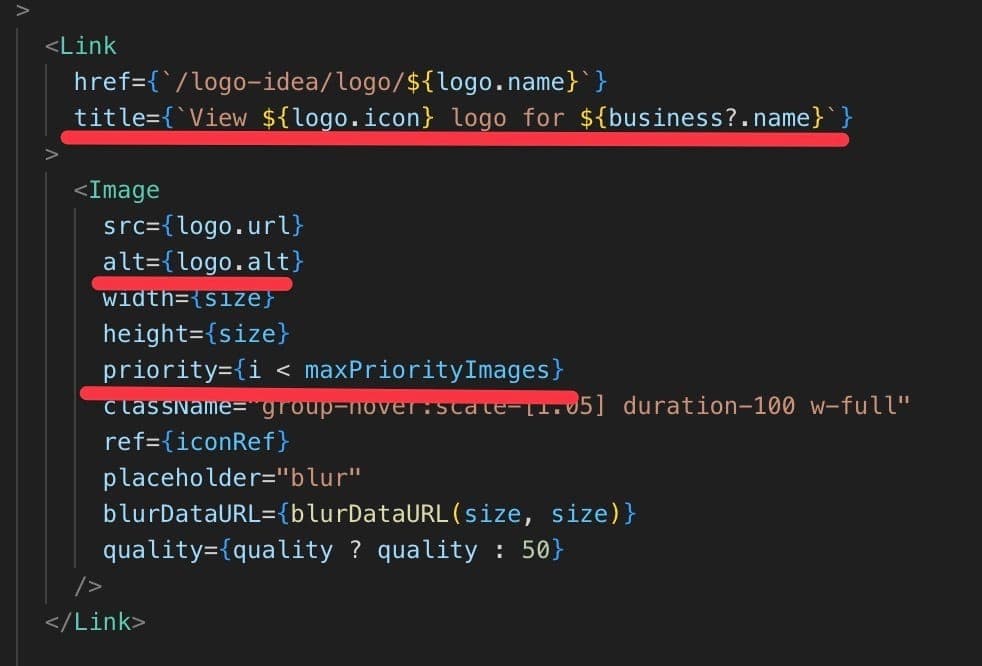
Lighthouse
https://chromewebstore.google.com/detail/lighthouse/blipmdconlkpinefehnmjammfjpmpbjk(Google Chrome) is your best friend.
Optimize for the long tail keywords, and add them at different strategic
locations.

Don’t stuff keywords though. Only add them where it matters for users.
Other marketing channels to get customers and grow your micro startup:
* Launch on Reddit
https://marclou.beehiiv.com/p/how-to-launch-a-startup-on-reddit* Launch on Hacker News
https://marclou.beehiiv.com/p/how-to-launch-a-startup-on-hacker-news* Launch on Product Hunt
https://marclou.beehiiv.com/p/how-to-launch-a-startup-on-product-hunt* Free tools marketing
https://marclou.beehiiv.com/p/marketing-for-product-obsessed-developers3. RANK ON GOOGLE
We need around 10 backlinks to start ranking on Google.
A. LAUNCH
The easiest way to start is to launch on Product Hunt which gives you a follow
link, regardless of the upvotes. Nice!
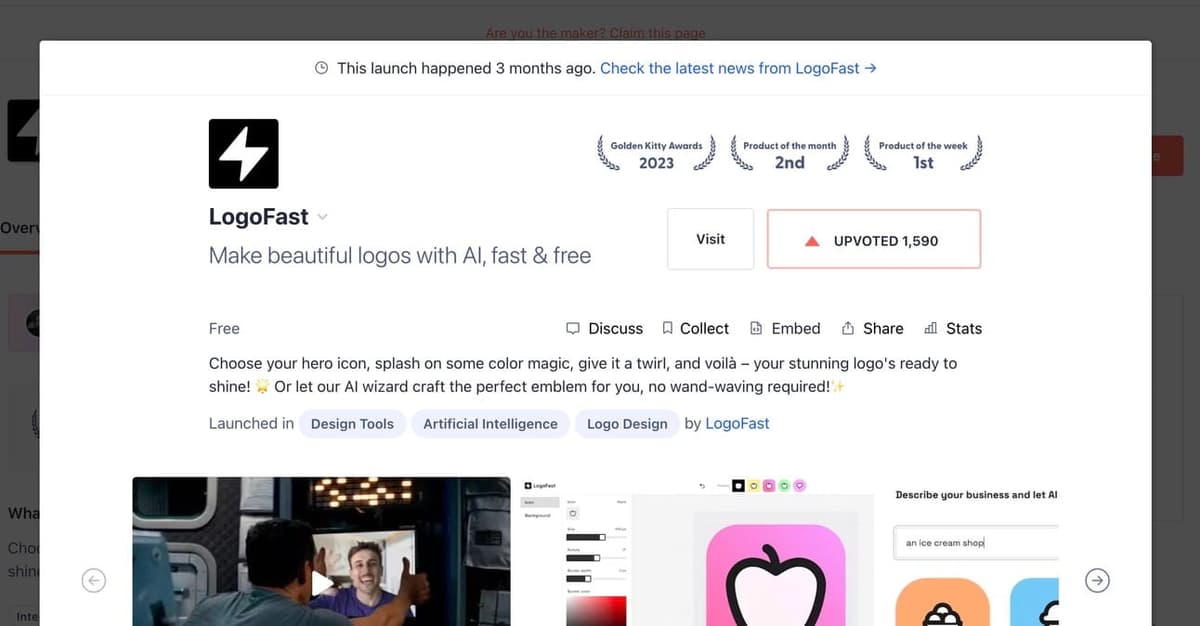
LogoFast was reshared in many newsletters after the launch
Platforms like Hacker News, Twitter & Reddit work too. It’s a nofollow link, but
people might reshare the website in their newsletter or blog.
B. BUY BACKLINKS
If you’re serious about the project, investing in backlinks is a great way to
kickstart the ranking.
You can either purchase a listing in a popular directory, like TIAAFT
https://theresanaiforthat.com/or buy a listing of sites to submit yours, like BACKL.IO
https://backl.io/directoryC. SUBMIT TO SEARCH CONSOLE
Verify your domain name in the Google Search Console.
Then manually request for a few page indexing. It makes Google index your
website faster.
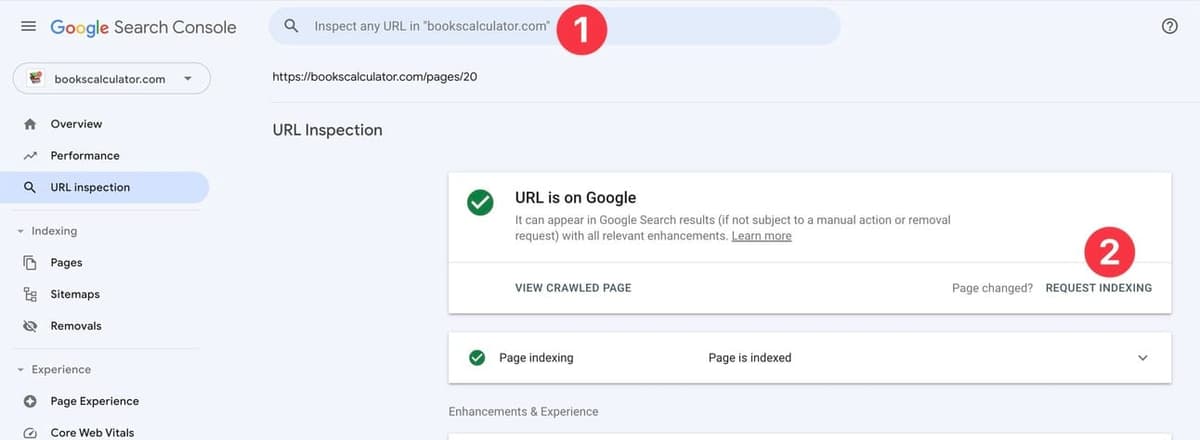
Search for a URL and click “Request Indexing”
Now, wait. Indexing is fast, but ranking for keywords takes 3 to 6 months.
You will get traffic from Google on autopilot, for free. Monetize it with a
product or ads and you make money when you sleep.
If you’re a developer who loves coding too much (like me) check out my guide
about growing a startup with free tools
https://marclou.beehiiv.com/p/marketing-for-product-obsessed-developers.PS: Thanks to Danny
https://twitter.com/dannypostmaa/status/1646368426246680579who taught me everything about pSEO. My article is a wrapper around his
knowledge. Thanks to Elias
https://twitter.com/illyismwho kickstarted the SEO for one of my projects.
I made $250,000 selling JavaScript
When I launched ShipFast, I told my wife we’d be lucky to make $100.Background Elements of success
When I launched ShipFast
https://shipfa.st/I told my wife we’d be lucky to make $100.
5 months later, the product made a quarter million dollars at 90% profit.
Here’s why (I think) my code boilerplate worked.
Estimated reading time: 3 min 34 sec
SOLOPRENEUR UPDATE
My new SaaS startup is live 🎉
ZenVoice
https://zenvoice.io/— Stripe invoices, without the fee: Let your customers generate and download
invoices, while you focus on your startup.
Get the lifetime deal at $50 off during the launch 🚀
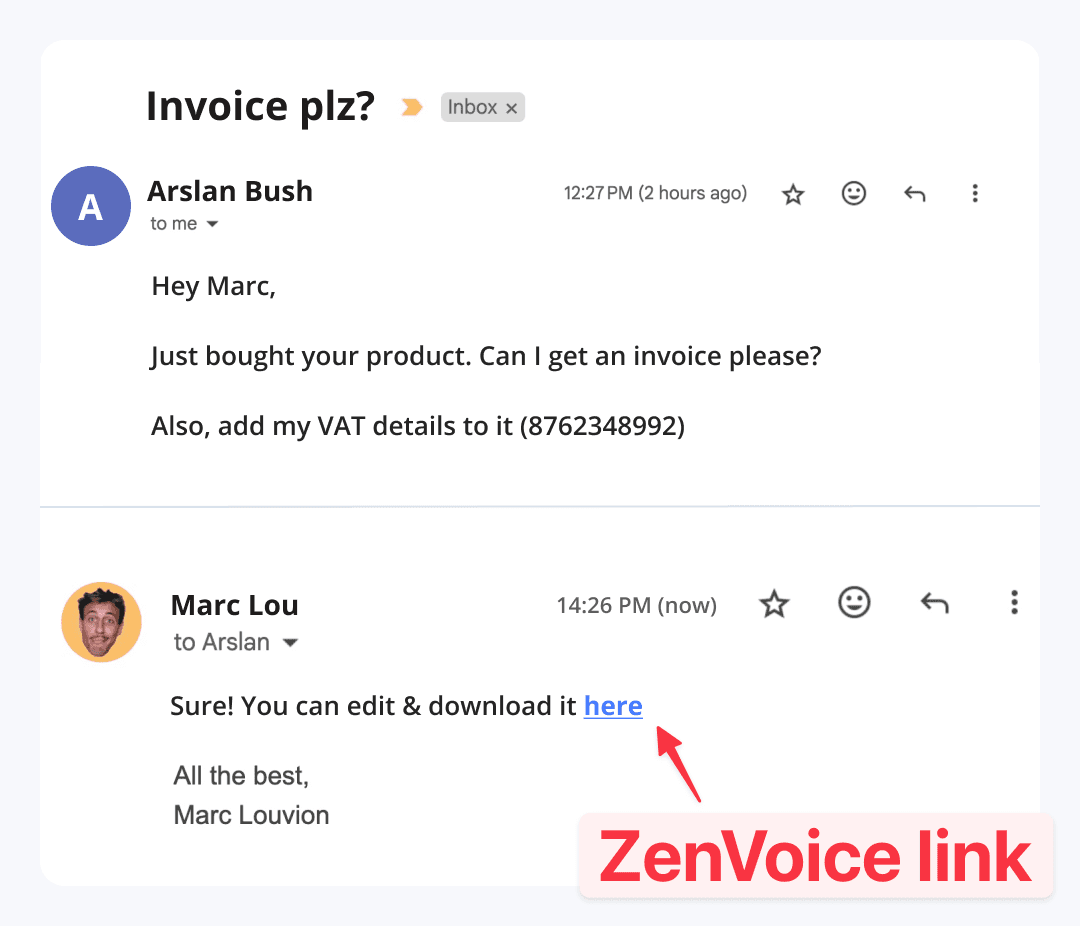
BACKGROUND
In November 2021, I joined the community of programmers building small startups
in public on Twitter
https://twitter.com/marc_louvionIn August 2023, I shipped almost 20 side-projects and grew an audience of 35,000
people. 10 of my products made money. I sold 3 of them for $50,000. The others
were making me $4,000/month. Reasonable salary when you live in Bali.
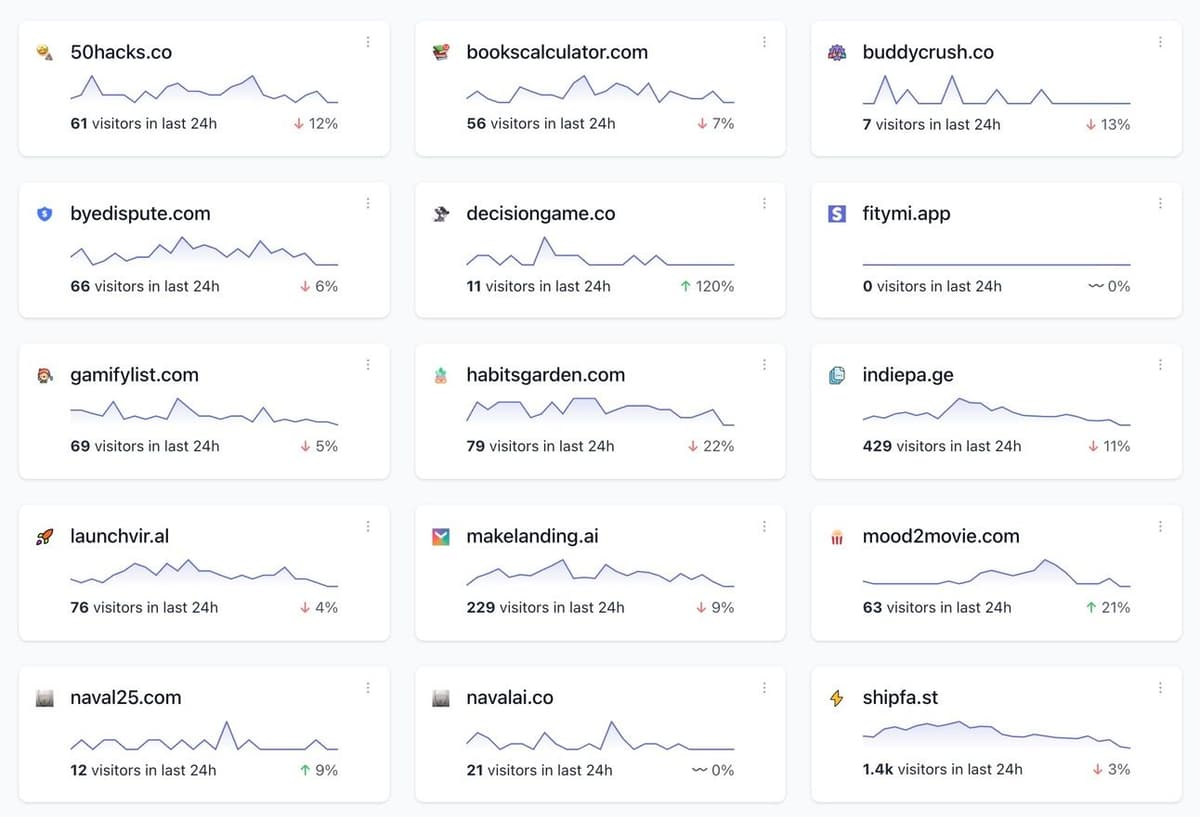
All my projects and revenue
https://www.marclou.com/To ship faster, I spent a week building a code boilerplate with landing page
components, Stripe payments, user login, etc. I launched on Product Hunt and
made $6,000 in 48 hours
https://marclou.beehiiv.com/p/usd6000-of-profit-in-48-hours.Part of the success is luck, but keep in mind that I was in the game for 2 years
— with an audience and proof of work.
ELEMENTS OF SUCCESS
The ShipFast growth launched hundreds of boilerplates. (It became a joke on
Twitter so I made a video
https://x.com/marc_louvion/status/1732015492788089142But none came close to ShipFast’s revenue. Here’s my take:
1. FIRST MOVE ADVANTAGE
Being first in entrepreneurship is a competitive advantage. First, people like
new stuff. Second, every other product will be compared to yours — it’s free
marketing.
In August 2023, there was no go-to boilerplate for NextJS — the most popular
React framework.
People talked about ShipFast on Twitter, blogs, and newsletters because it was
new. The website was getting 500 to 1,500 daily visitors without spending a dime
on ads.
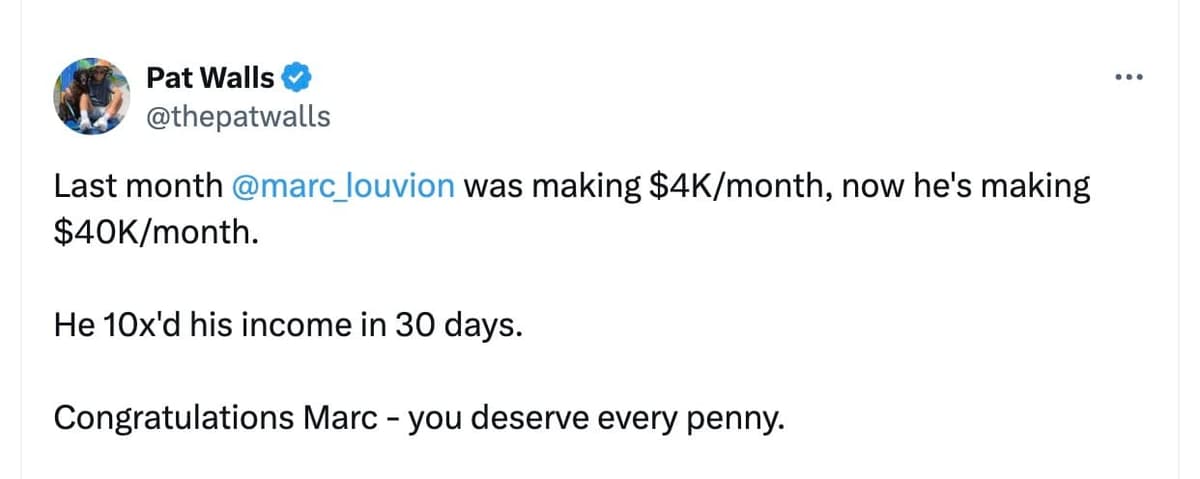
The next trendy boilerplate will be for another platform than the web. visionOS
maybe?
2. EMOTIONAL OUTCOME
I can’t stress enough how important emotions are in marketing, especially if
you’re a product-obsessed developer like me.
People don’t care about features. People want money, status, and respect.

ShipFast was the first boilerplate to tie a product to an actual goal: Launch
your startup, get profitable, and quit your 9/5.
3. REAL SOCIAL PROOF
Thanks to the emotional outcome, customers of ShipFast are pumped to get
started. Their motivation drives results: they actually launch startups and make
money.
The testimonials on the site
https://shipfa.st/reflect that perfectly — Videos of coders in their bedrooms who just experienced
a life transformation.
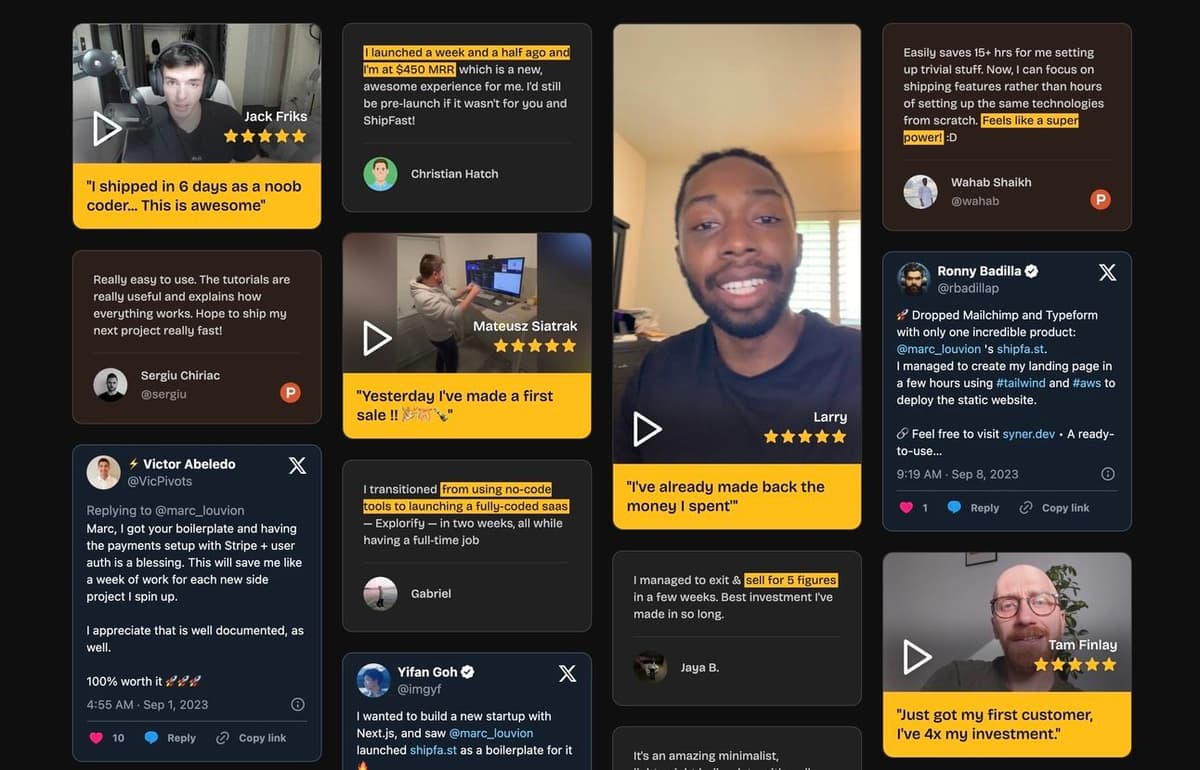
It’s reinforced by my story. In 1.5 years, I went from 0 to $4,000/month with an
audience by shipping apps fast.
4. UNFAIR ADVANTAGE
You get attention when you make $55,000/month as a solo founder.
Newsletters, retweets from bigger accounts, YouTubers. People spread the word.
It brings traffic to my site, which increases revenue and makes more people
spread the word.
In hindsight, it’s easy to understand why it worked. But 5 months ago, I had no
clue what I was doing.
Your best bet to become profitable is to show up daily and produce something: a
tweet, an app, a video. You’ll be surprised by what can happen in a few months.
Rewriting 3 tweets
My 𝕏 account grew by 60,000 followers in 2023. It’s not earning money, but writing that had the biggest impact.Tweet 1 — First impression mattersTweet 2 — Just Give Me a ReasonTweet 3 — To the point
My 𝕏 account grew by 60,000 followers in 2023.
It’s not earning money, but writing that had the biggest impact.
I’ll share what I learned by rewriting 3 of your tweets.
Estimated reading time: 2 min 34 sec
BUILD-IN-PUBLIC UPDATE
Since last Monday, I’ve been live streaming while building a new SaaS startup.
It’s harder to code, but I’m more productive because I can’t procrastinate 😅
I’ll keep streaming on Monday to finish the product!
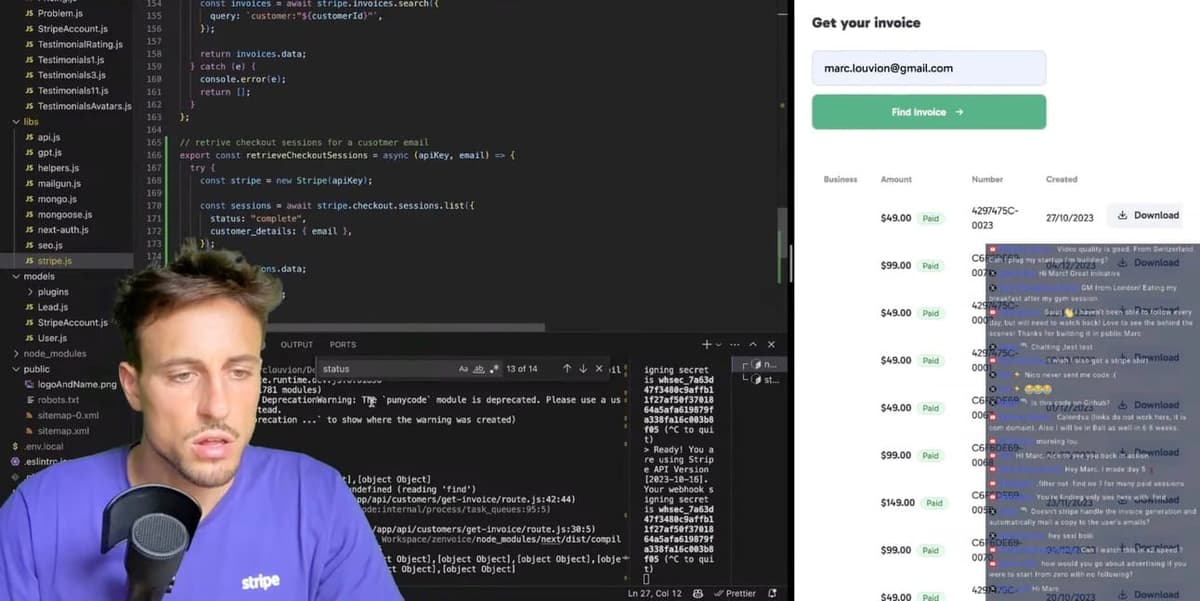
https://www.youtube.com/live/pM4LOw5xFcE?si=xeNPb8UsjS9c_ZUJ&utm_source=marclou.beehiiv.com&utm_medium=referral&utm_campaign=rewriting-3-tweets
https://www.youtube.com/live/pM4LOw5xFcE?si=xeNPb8UsjS9c_ZUJ&utm_source=marclou.beehiiv.com&utm_medium=referral&utm_campaign=rewriting-3-tweetsDay
1 stream
https://www.youtube.com/live/pM4LOw5xFcEgot 5,200 views 🤯
TWEET 1 — FIRST IMPRESSION MATTERS
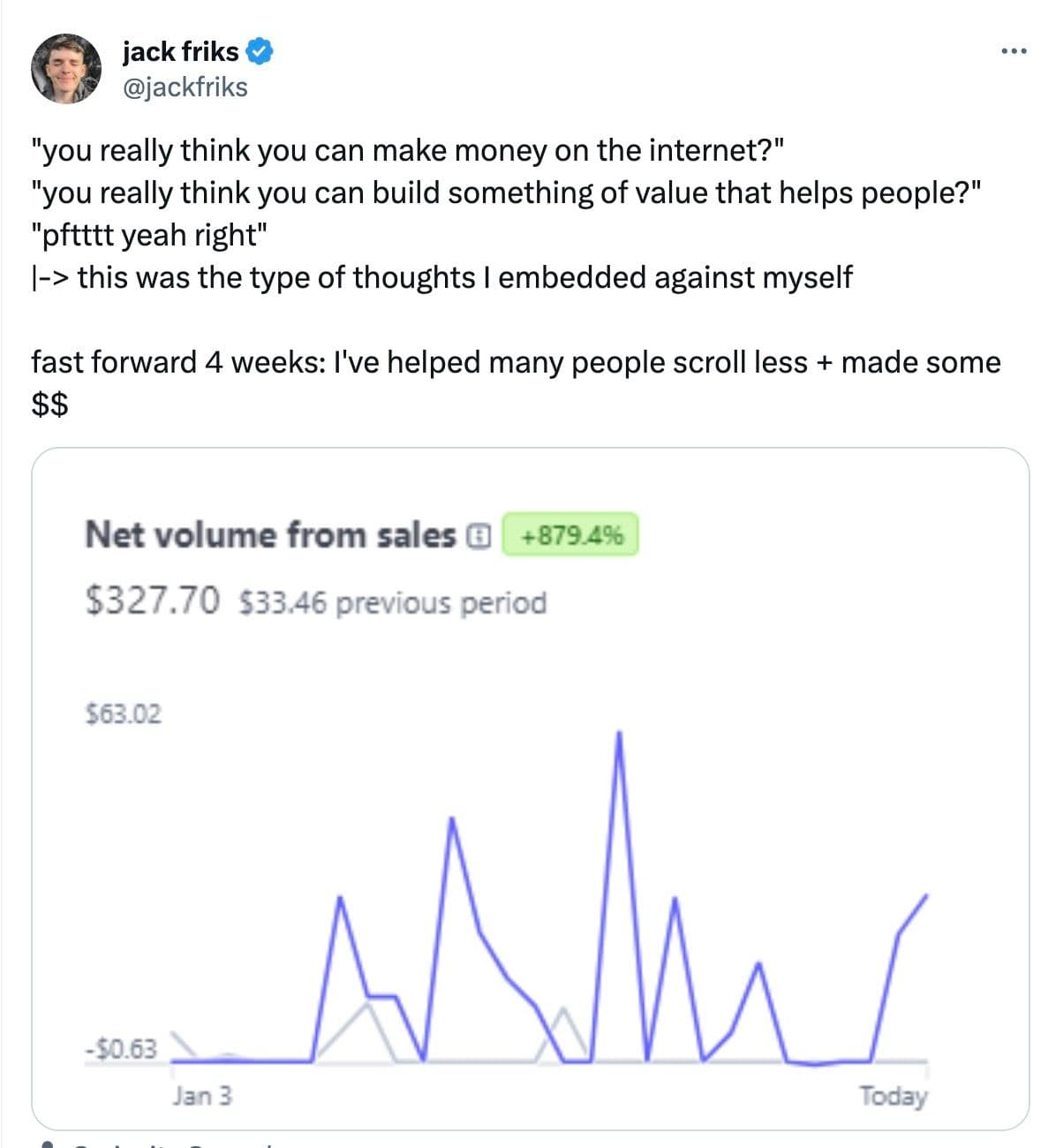
WHAT’S MISSING
1. The screenshot is low quality
2. The text structure is off: I use energy before I start reading
3. The meaning comes late: I have to read 80% of the tweet (202 characters) to
grasp it
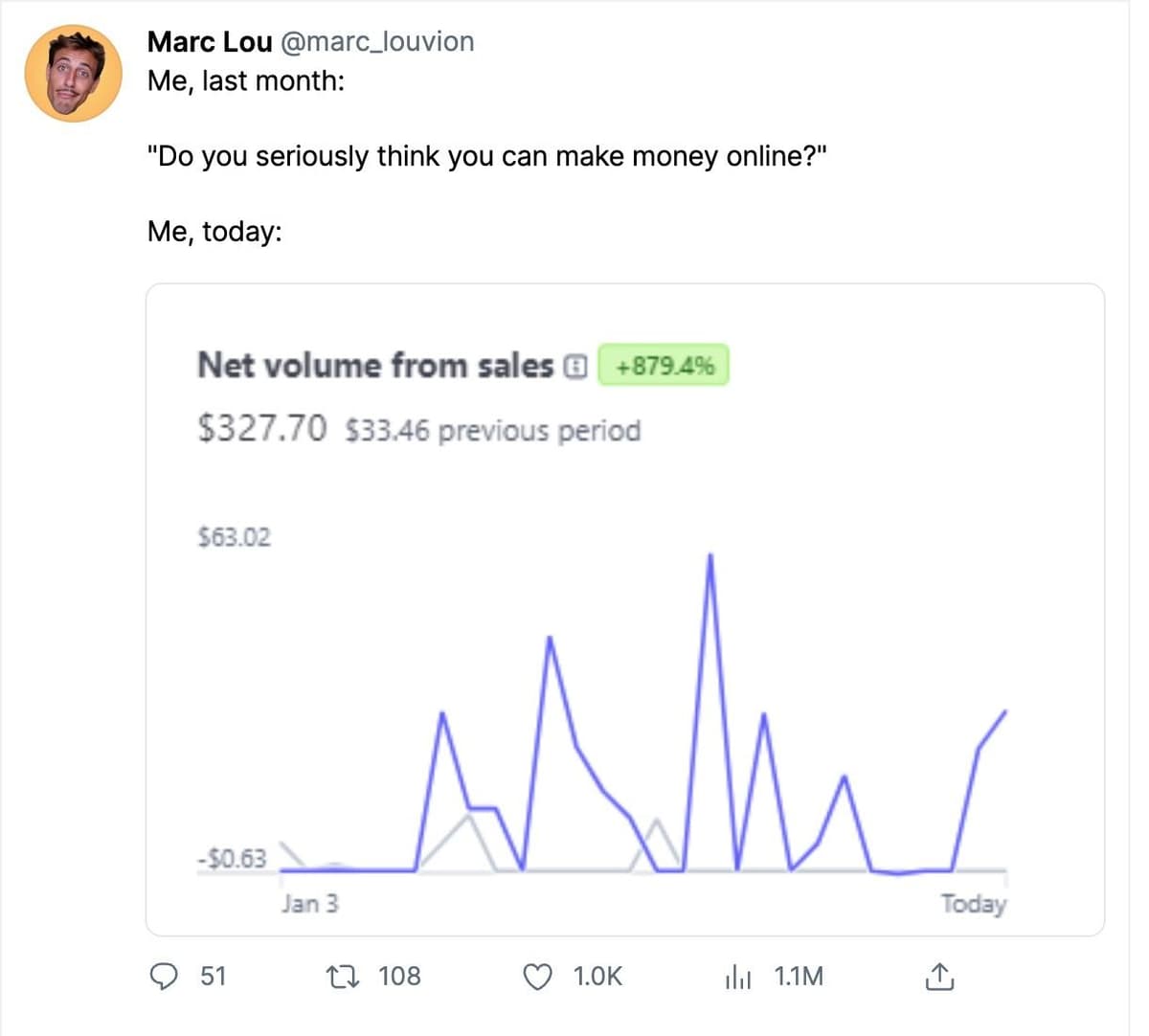
REWRITING
There’s a lot of noise out there, the first impression matters:
* Use simple structures (listicles, before/after)
* Convey meaning in the first sentence
* Add space between lines
I started following Justin Welsh
https://twitter.com/thejustinwelshin 2022 and my writing has drastically improved.
TWEET 2 — JUST GIVE ME A REASON

WHAT’S MISSING
Kyzo is doing a great job of telling the story intro. The first sentence is a
bit long and intense, but it’s OK — I can relate.
But then? There is no incentive to click on the thread to learn more.

REWRITING
People are busy.
Reading a thread, clicking a link, or even liking a tweet is a lot to ask.
Wave a clear outcome to convert the attention you get.
TWEET 3 — TO THE POINT
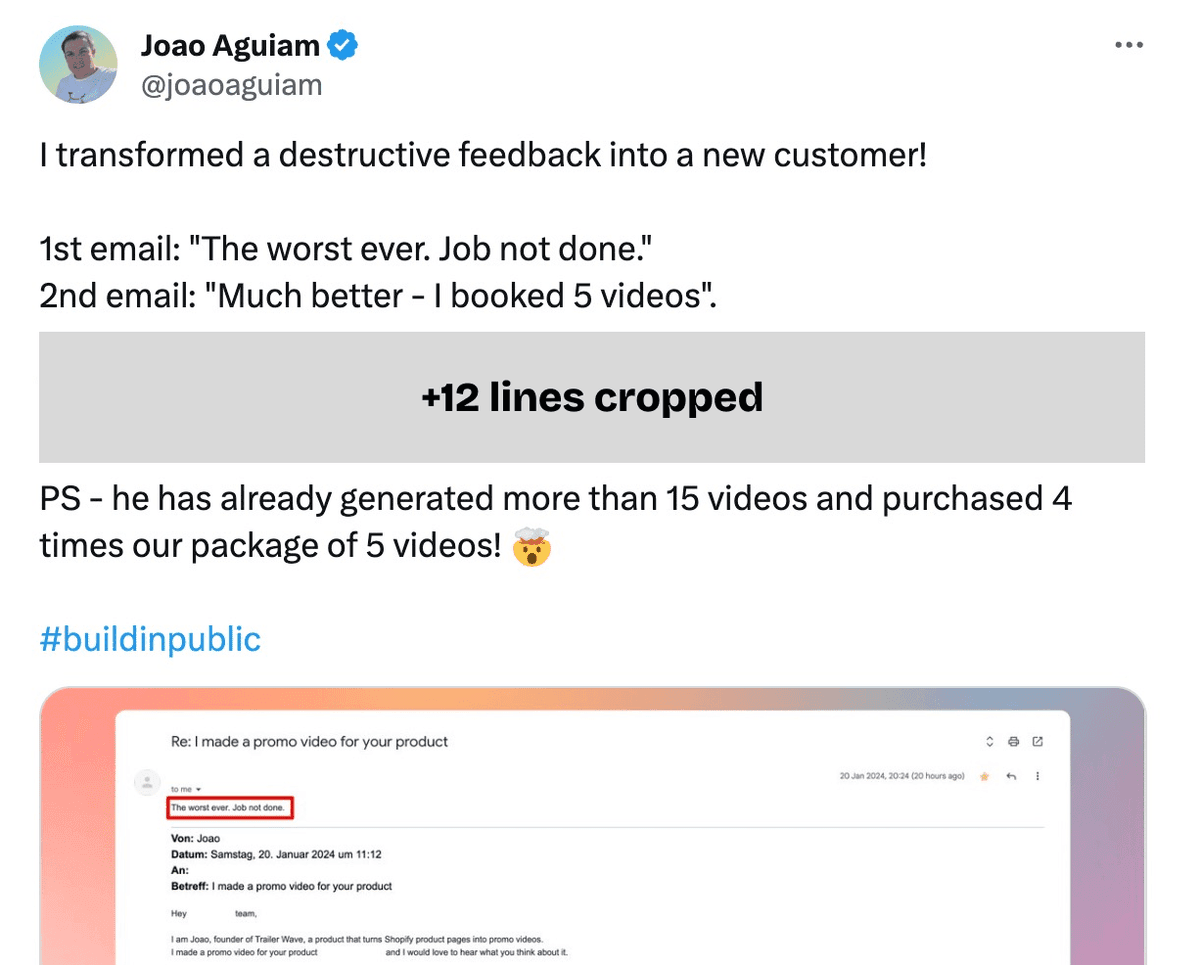
WHAT’S MISSING
The first line got my attention. And the structure is great.
But then I’m facing 228 words telling 3 different stories. Each should have its
own tweet.
Also, the screenshot is too hard to read. I wrote a few words last week to make
catchy screenshots
https://marclou.beehiiv.com/p/how-to-make-catchy-screenshots.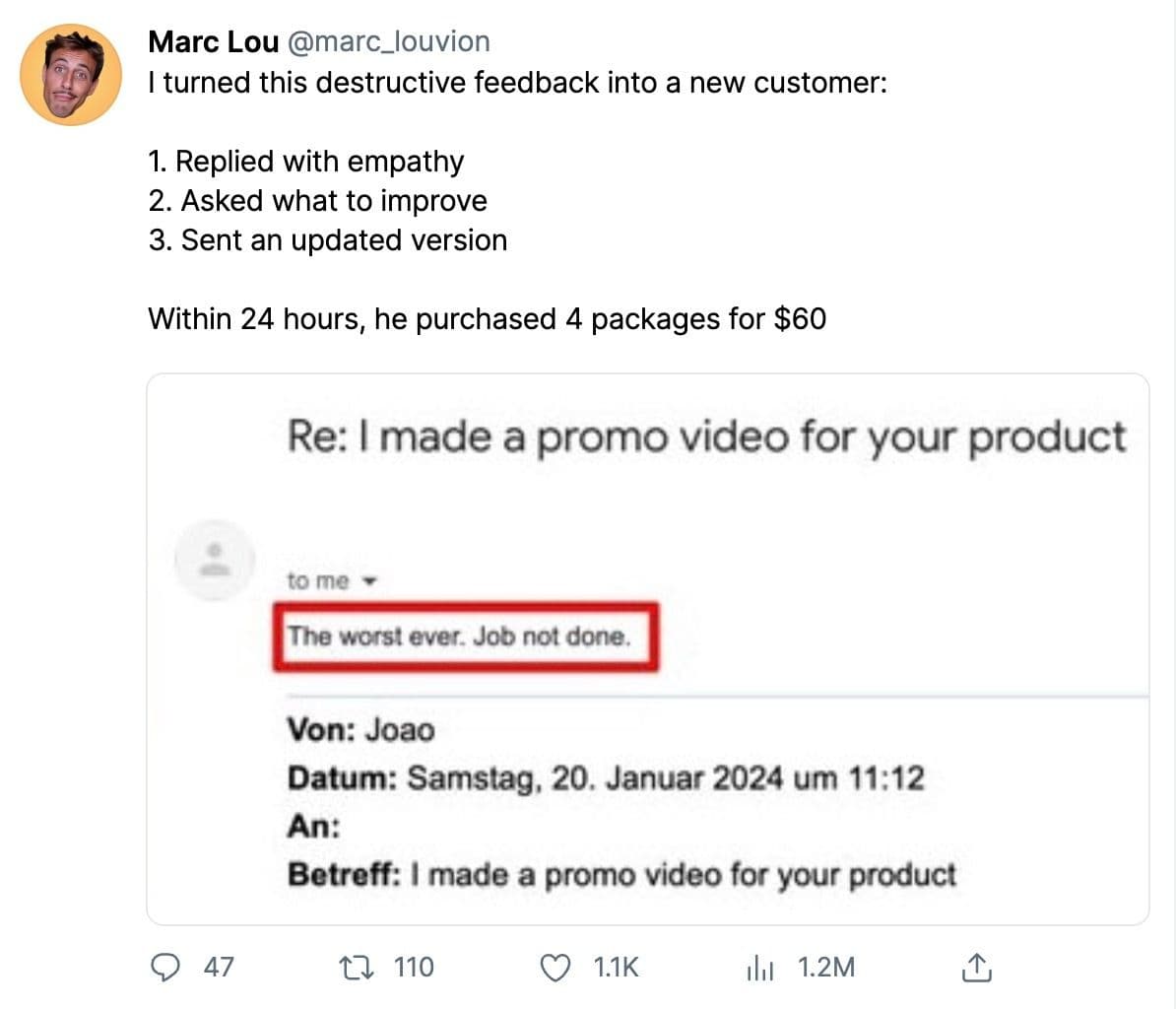
REWRITING
I would write 3 tweets instead:
1. Inspirational one-liner: “I just got my first customer”
2. The tweet above explains how to get the most out of unsatisfied users
3. Educational tweet about how to scrap Shopify stores (this is interesting,
and could even be a product)
The easiest way to grow on 𝕏 is to improve your writing. Look at what’s working
in the feed, find patterns, and replicate.
Make catchy screenshots to grow on 𝕏
Visuals get you heaps of attention on 𝕏, if done right.1. Zoom, even too much2. Center the most important information3. Explain when necessary 4. Favor square and portrait format
If done right, visuals get you heaps of attention on 𝕏.
And when you’re building in public, there’s much worth sharing.
Let’s review the best practices for attention-grabbing screenshots with the
Stripe example below.
Estimated reading time: 2 min 47 sec

Let’s turn this raw screenshot into a tweet
BUILD-IN-PUBLIC UPDATE
I just started sharing what I do & learn as a solopreneur on my YouTube channel
https://www.youtube.com/@marc-lou/videosOne video a week — until I burn out 😄

1. ZOOM, EVEN TOO MUCH
The width of a tweet is smaller than 500 pixels (13.2 centimeters or the length
of a pen).
Compared to your computer screen, the content will be less readable. People
won’t click and zoom.
Ditch everything that’s not crucial. Zoom until you can’t.

Zoom to capture only the interesting part
2. CENTER THE MOST IMPORTANT INFORMATION
The further away from the center, the less people will notice.
Information at the edges of the screenshots is usually ignored.
3. EXPLAIN WHEN NECESSARY
Screenshots that don’t convey any meaning get lost in the void. Use clear and
visual explanations for people to understand your message.
* Use arrows to tell people where to look
* Underline to showcase information
* Write text to explain the meaning
Screenshot tools like CleanShotX or Xnapper have features to help you do this
without design skills.

After getting hooked by a screenshot, people want to learn more
4. FAVOR SQUARE AND PORTRAIT FORMAT
It gets more real estate on the 𝕏 feed.
If you’re working on a laptop, resize your window as a mobile before taking a
screenshot. The format will be more suitable for a tweet.

Now you have my attention, let me read the thread
AVOID BACKGROUNDS
Colorful/gradient backgrounds in screenshots are a bit overrated.
* They distract from the actual content.
* They reduce readability and make the image cramped.
* Fancy backgrounds aren't meaningful for analytics or bill screenshots.
I only add backgrounds to success screenshots with minimal content, like revenue
or followers milestones.
My rule of thumb for anything I create (websites, videos, tweets): Convey
meaning within 2 seconds.
I hope the best practices above will help you get more attention. Tag me when
you tweet, and I’ll check if it can be improved. Have a great weekend!
— Marc
How to launch a startup on Product Hunt
Among the 21 products I launched, 13 got the Top Product badge and one ranked #2 Product of the Month.But first… Is Product Hunt dying?Inbound upvotes Outbound upvotes When should I launch?Is it time to launch?
Among the 21 products I launched, 13 got the Top Product badge and one ranked #2
Product of the Month.
I also got the Maker of the Year 2023 award.
Here’s everything I learned about Product Hunt — as a solopreneur competing
against VC-backed startups.
Estimated reading time: 6 min 13 sec
BUILD-IN-PUBLIC UPDATE
My new course generated $6,000 in presales in December.
I just finished recording all the videos and… it’s now live!
Introducing LaunchVir.al
https://launchvir.alLearn how to grow your startup with viral videos. The $70 off launch discount
expires on Monday.
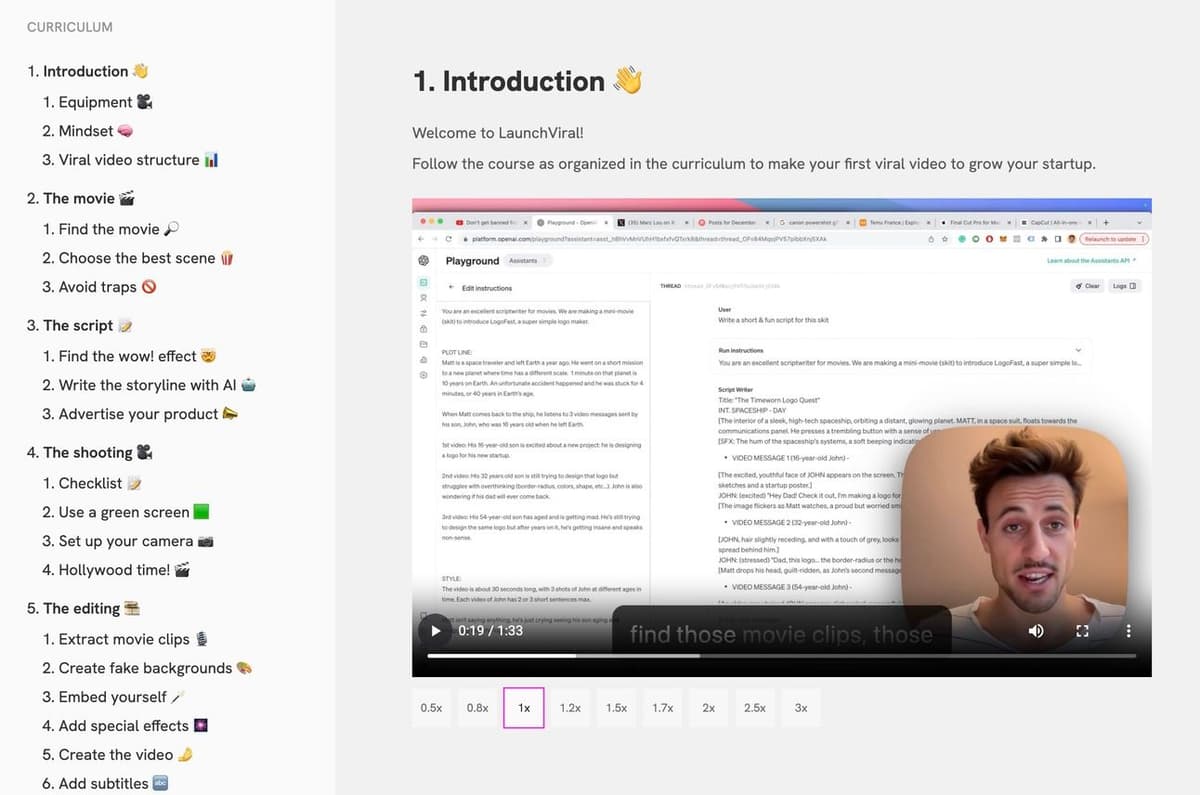
BUT FIRST… IS PRODUCT HUNT DYING?
This is a recurring question on Twitter, and unfortunately, there’s some truth
to it — Product Hunt isn’t as big as it used to be.
But it remains one of the best places to launch a startup:
* 4M monthly high-quality visitors
* One of the biggest tech newsletter
* Massive media coverage
Unlike any other platform, if you work on the launch, you’ll get predictable
traffic and grow your customer base.
Let’s get some upvotes.
INBOUND UPVOTES
There are 2 ways to get upvotes.
Inbound upvotes are given by Product Hunt users who casually browse the site.
Your listing should be on point:
* Your startup name should be crystal clear. I wrote about making names people
remember [https://marclou.beehiiv.com/p/how-to-name-a-startup].
* Your tagline should be short, straight to the point, and possibly trigger an
emotional reaction. You can use trendy tech words like GPT-4 but don’t go too
deep. Designers, product managers, and marketers must understand your
tagline.
* Animate your logo as a GIF, it’s such an easy way to get attention because
few are doing it
* Images in the gallery should be extremely concise, like a YouTube thumbnail.
One feature per image. Zoom on the feature until you can’t before taking the
screenshot.
When your listing is scheduled, write the first comment.
You’re a solopreneur, not a VC startup — this is inspiring, so write about it.
Explain why you came up with the idea.
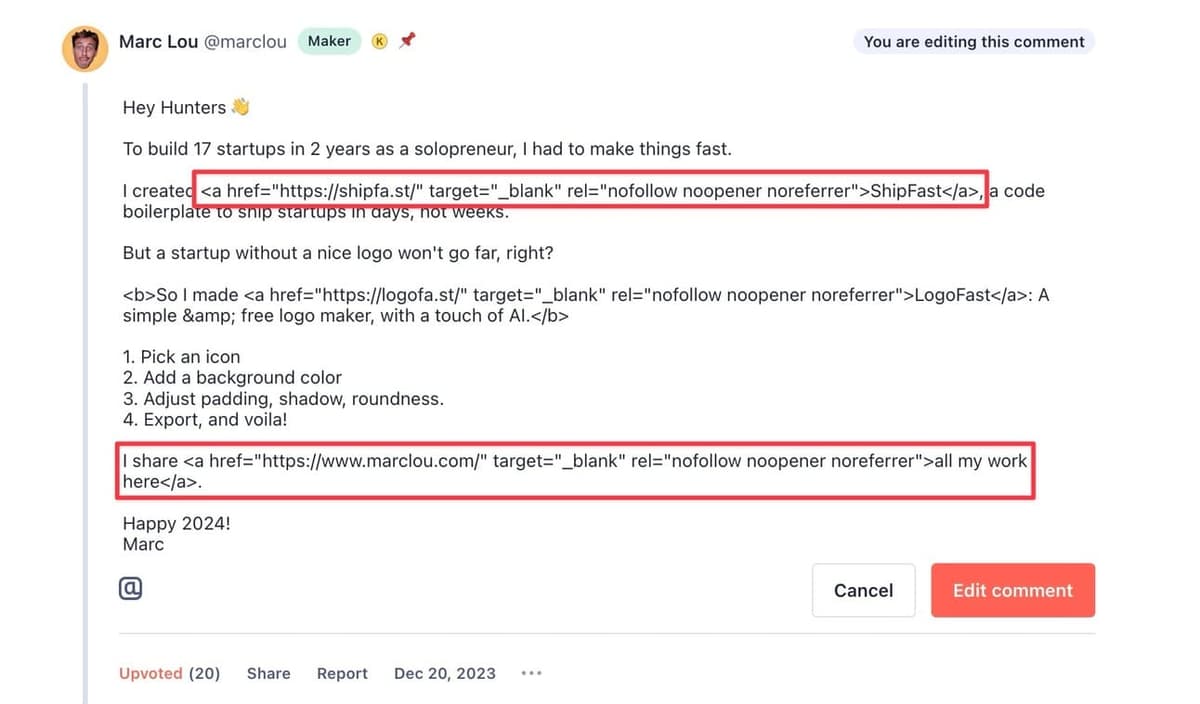
Product Hunt comments section support markdown
The comment section supports markdown. Add a link to your product name to
maximize traffic. I also recommend plugging your Twitter to build an audience
and make the next launches easier.
Finally, if you learned anything valuable when building your startup, create a
Product Hunt conversation on the day of the launch. Plug your launch link at the
end. People are already browsing the site, it’s an easy upvote.
OUTBOUND UPVOTES
You’ll compete against VC startups, so you need help from outside Product Hunt —
outbound upvotes.
1. TWITTER
Twitter is the biggest source of outbound upvotes you can get because our
community is big and very supportive.
Within the first 4 hours after the beginning of the launch, make a tweet to
announce it, and include the link.
There are more makers than ever, so your tweet will need to stand out. I always
add a launch video: Each tweet would get 300+ likes and my startup gets a
Product Hunt badge — even when I had 1,000 followers. I made LaunchViral
https://launchvir.al/to help you replicate this.
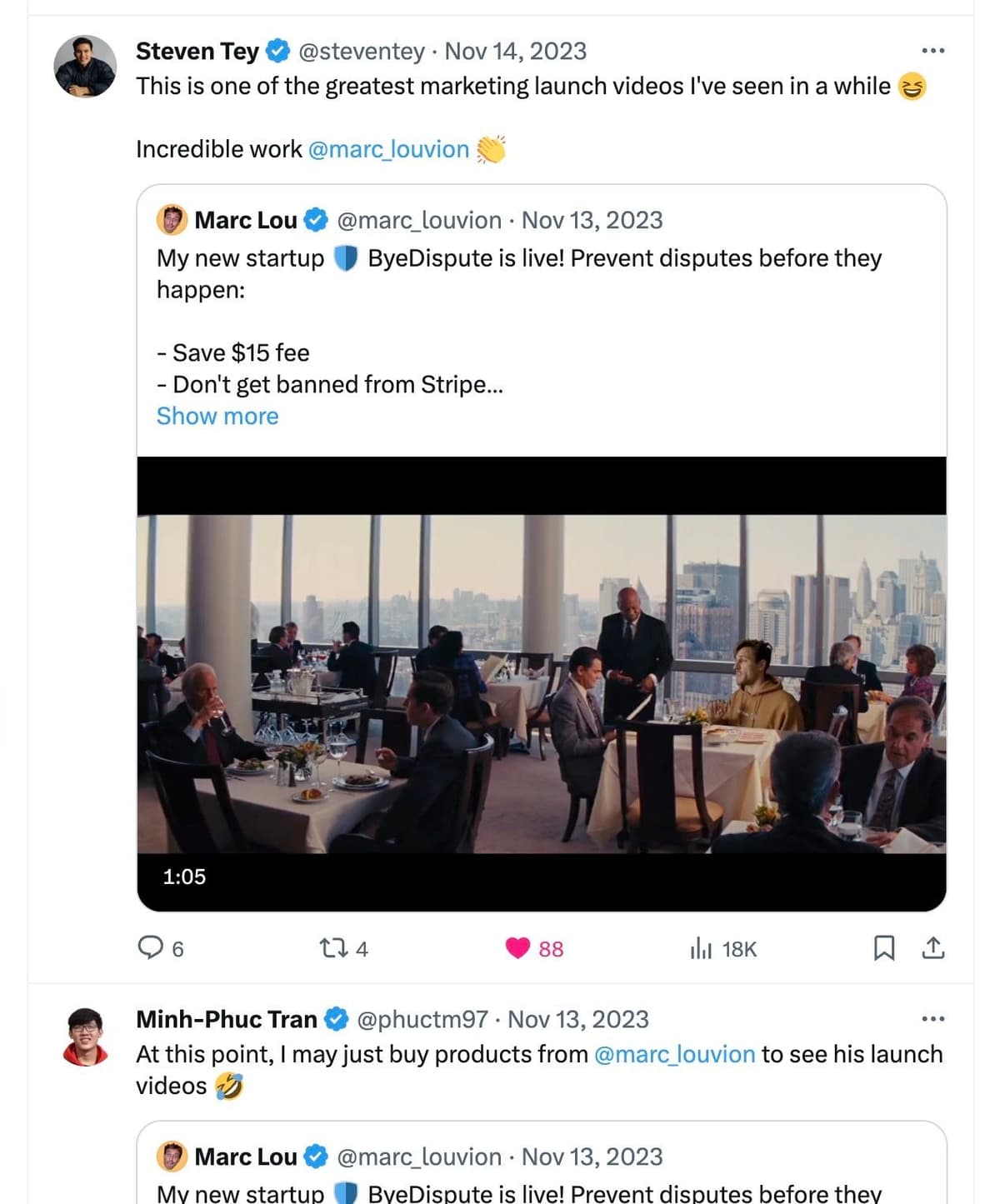
Who said ads can’t be fun?
Retweet the launch tweet a few hours later.
I also schedule 2 or 3 tweets later in the day — not related to the launch — so
that hopefully one goes viral and newcomers discover my profile (don’t forget to
pin your launch tweet).
2. WEBSITE BADGE
Add a Product Hunt-branded badge to your landing page which links back to your
launch page.
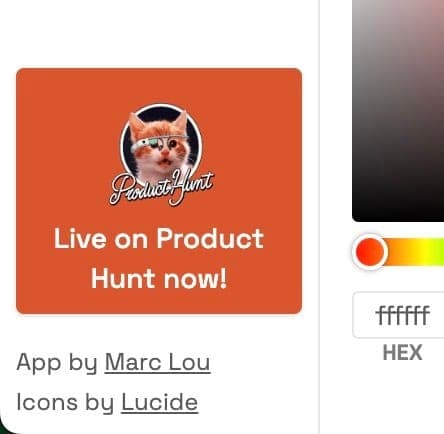
A subtle badge — fixed at the bottom-left on desktop
Then launch your product on other sites like Indie Hackers, Reddit
https://marclou.beehiiv.com/p/how-to-launch-a-startup-on-reddit, and HackerNews [https://marclou.beehiiv.com/p/how-to-launch-a-startup-on-hacker-news].
If one of your posts goes well, you’ll upvotes from your landing page badge.
Other marketing channels to get customers and grow your micro startup:
* Launch on Reddit
https://marclou.beehiiv.com/p/how-to-launch-a-startup-on-reddit* Launch on Hacker News
https://marclou.beehiiv.com/p/how-to-launch-a-startup-on-hacker-news* Free tools marketing
https://marclou.beehiiv.com/p/marketing-for-product-obsessed-developers* Programmatic SEO
https://marclou.beehiiv.com/p/how-to-grow-a-micro-startup-with-programmatic-seoWHEN SHOULD I LAUNCH?
Monday to Friday are busier. More traffic, but more competition.
If you’re chasing for the badge, launch on Sunday.
If you want traffic, launch on Monday (VC startups don’t work on Monday 0:01 AM)
IS IT TIME TO LAUNCH?
Get social proof first. Ask a few customers/users and add their testimonials to
your landing page.
Then, launch as soon as possible, especially if you’re getting started,
The first Product Hunt launch is unlikely to be a big hit. And that’s OK. It’s a
learning process.
You can re-launch a few months later after adding new features. You can also
launch free tools promoting your product
https://marclou.beehiiv.com/p/marketing-for-product-obsessed-developers tosharpen your skills.
Meanwhile, you build an audience and each launch will be easier.
How to get customers with free tool marketing
Grow your micro SaaS or AI tool, and fulfill your inner builderFree tool marketing How to find ideas2 key factors to get paying users
I never enjoyed marketing.
But I’d never earn $50K/month without doing some kind of marketing.
I found a better alternative by making free tools that fulfill my inner builder.
Estimated reading time: 4 min 13 sec
BUILD-IN-PUBLIC UPDATE
My free logo maker —LogoFast— was nominated for the Product Hunt Golden Kitty
Awards 2023
https://www.producthunt.com/golden-kitty-awards/bootstrapped-small-teamsIf you liked it, I’d love your support!
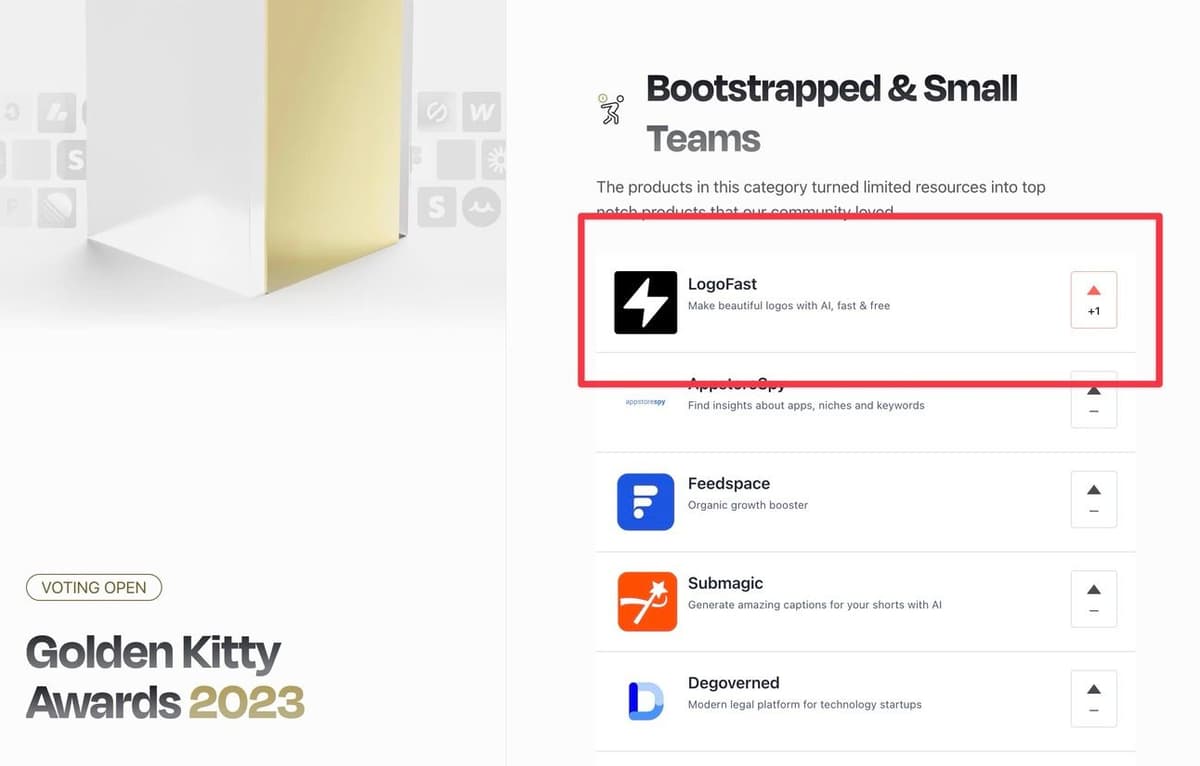
FREE TOOL MARKETING
I am a developer and I love building apps. But I also need marketing to pay the
bills.
Free tool marketing is symbiosis.
It consists of launching free and viral mini-apps to promote your main startup.
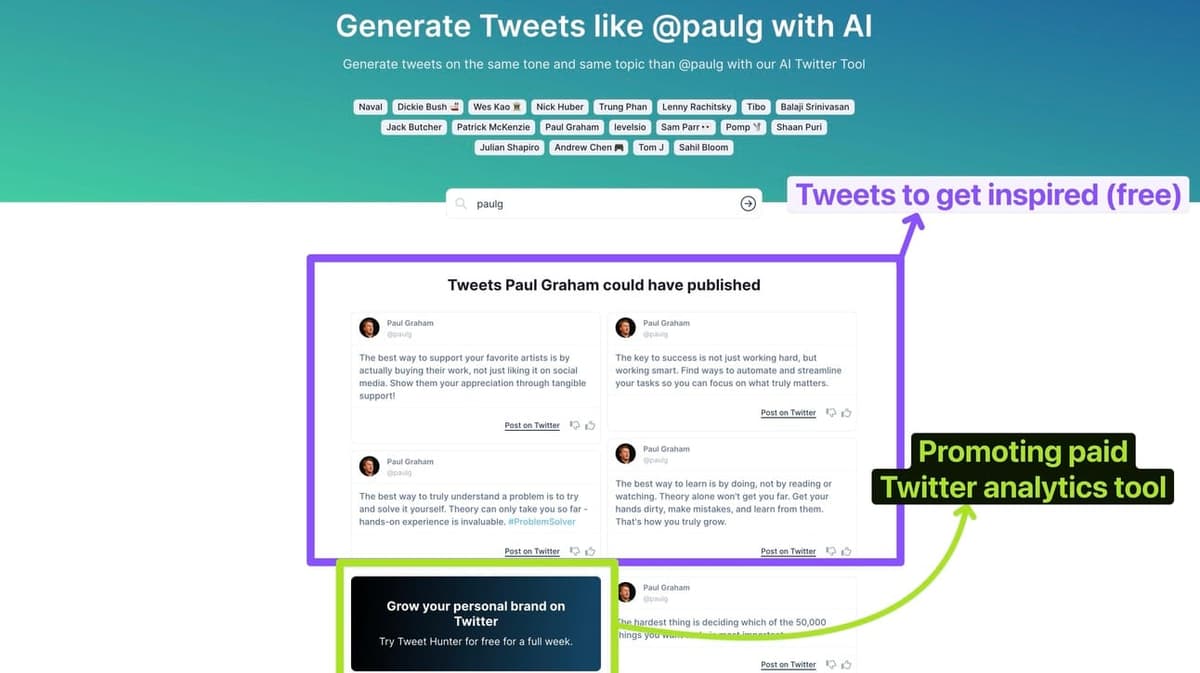
AI Tweet Generator (free) by Tweet Hunter (paid)
Free tool marketing works because:
* It expands your audience to a wider market.
* You rank for new SEO keywords.
* It’s sharable so people spread the word on TikTok, for instance.
* You grow an audience by launching often.
* It creates a good first impression to warm up potential customers.
* Your inner builder is motivated to work.
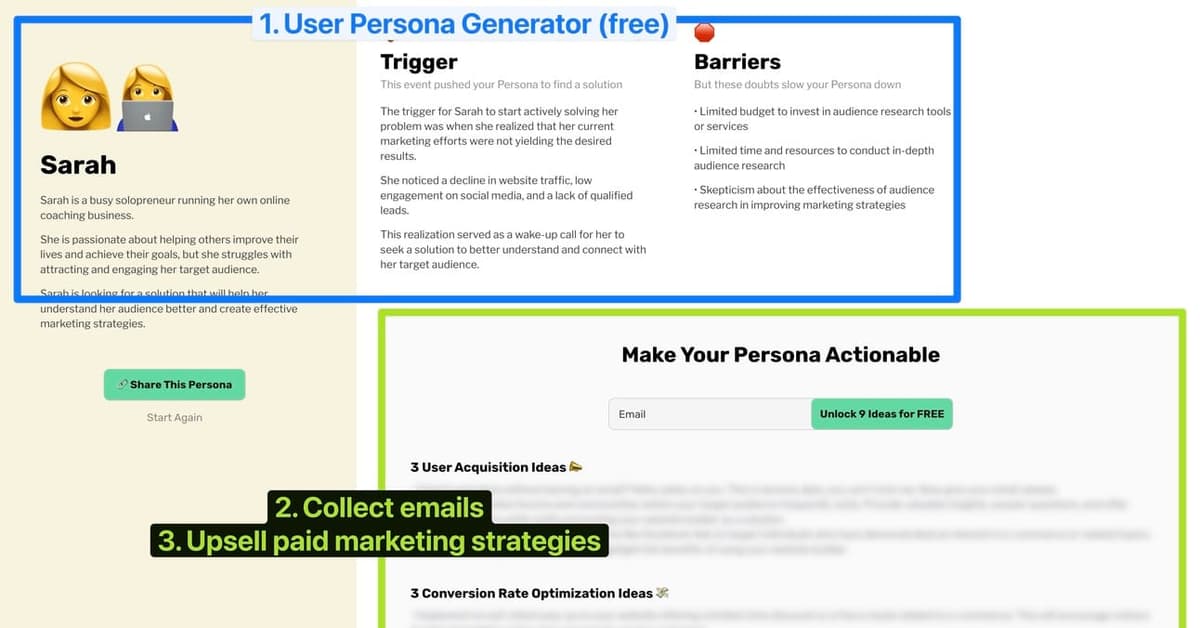
User Persona went viral on TikTok adding 226% revenue for MakerBox
Some guidelines for the best results:
* The app must be free, that’s how you create a viral loop.
* One feature is enough. It must be super simple.
* The name should tell exactly what the app does. That’s how people remember
and search on Google.
* The experience must start on the homepage. Visitors shouldn’t sign up or
click links.
* The app can be hosted on your main website, but it’s best to give it a
dedicated domain.
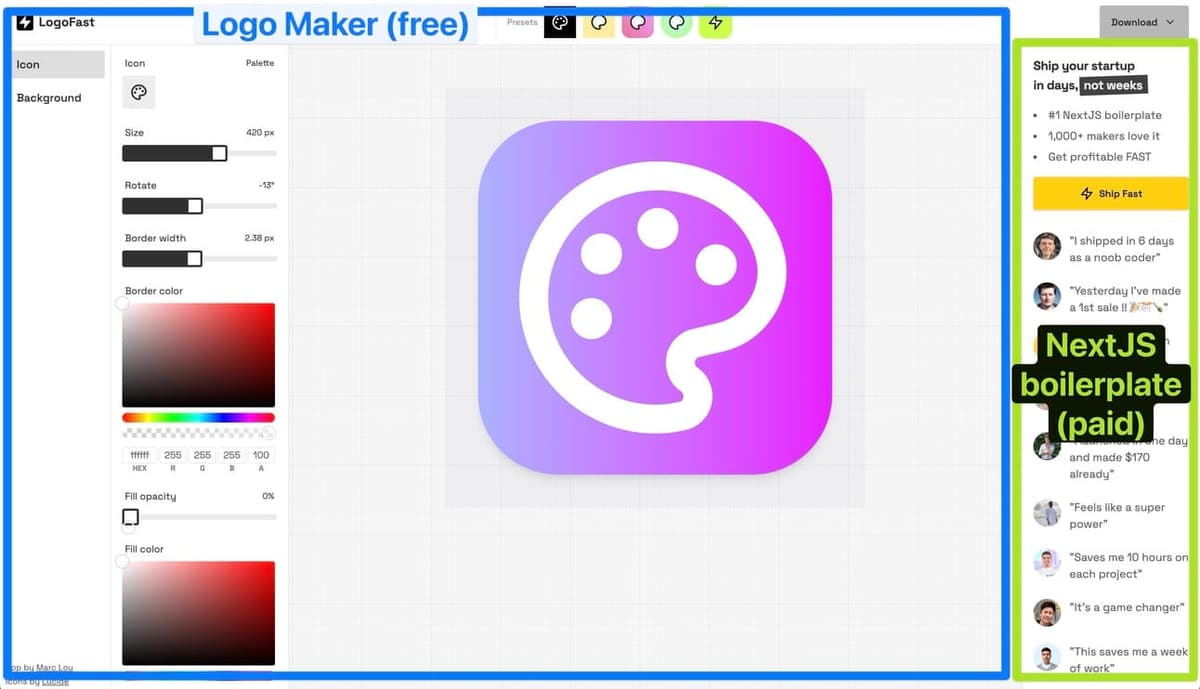
LogoFa.st
http://LogoFa.stis also hosted on ShipFa.st/tools/logo-fast
http://ShipFa.st/tools/logo-fastThe canonical URL points to the latter to boost the main site’s domain
authority.
Other marketing channels to get customers and grow your micro startup:
* Launch on Reddit
https://marclou.beehiiv.com/p/how-to-launch-a-startup-on-reddit* Launch on Hacker News
https://marclou.beehiiv.com/p/how-to-launch-a-startup-on-hacker-news* Launch on Product Hunt
https://marclou.beehiiv.com/p/how-to-launch-a-startup-on-product-hunt* Programmatic SEO
https://marclou.beehiiv.com/p/how-to-grow-a-micro-startup-with-programmatic-seoHOW TO FIND IDEAS
Take a standalone feature of your main startup and make a free version of it.
This works well if you already have traction because you know people need that
feature.
It’s also a good strategy to validate potential features. Instead of cluttering
your main product, launch a standalone feature as a free tool.
You’ll get more traffic, and you can still add the feature later if the market
validates it.
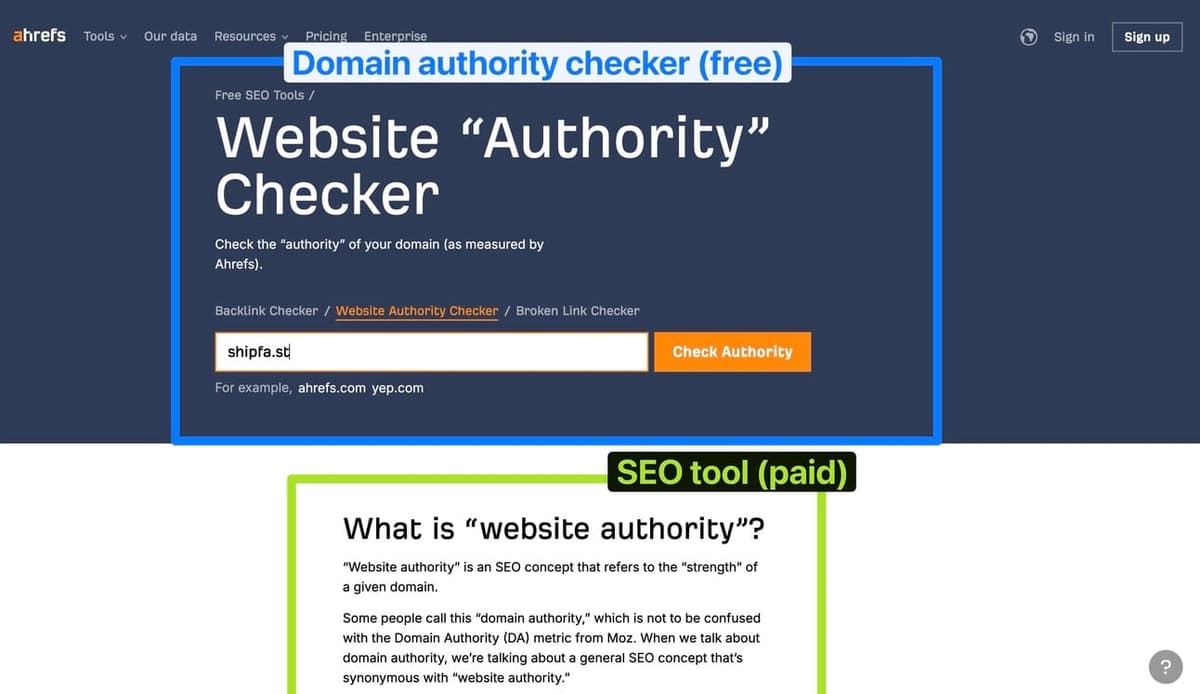
Ahrefs’s domain authority checker feature is also available in their paid plan
Another strategy consists of getting into your customer’s journey and thinking
about what they’ll need before using your product.
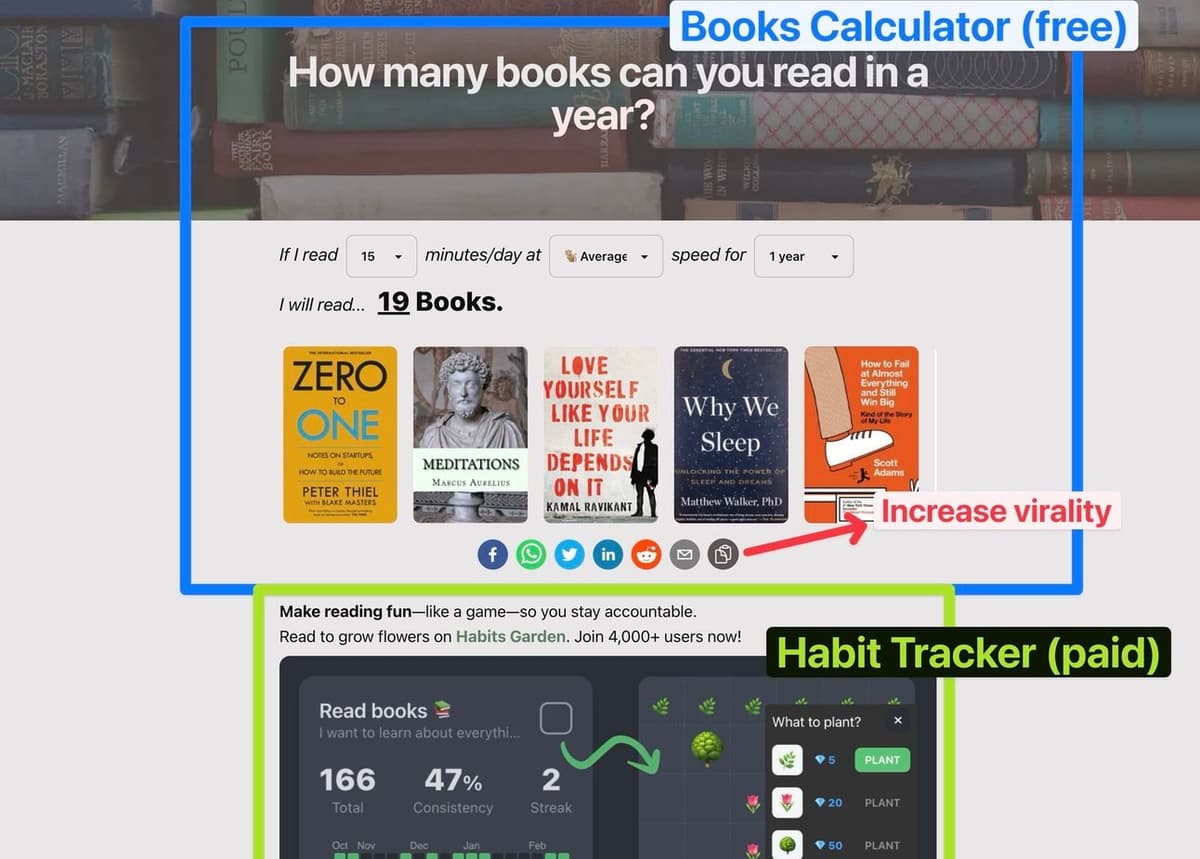
After realizing it’s possible to read 19 books a year with a 15-minute daily
habit, people might want to sign up for a habit tracker
2 KEY FACTORS TO GET PAYING USERS
#1 — PROMOTE YOUR STARTUP IN A SEAMLESS WAY
The simplest way to convert traffic from your free tools is to advertise your
startup. A simple ad placement can get up to 10% Click-Through-Rate.
You can pump these numbers up when the free tool seamlessly embeds into your
customer’s journey, so the promotion feels like an extension of your free tool.
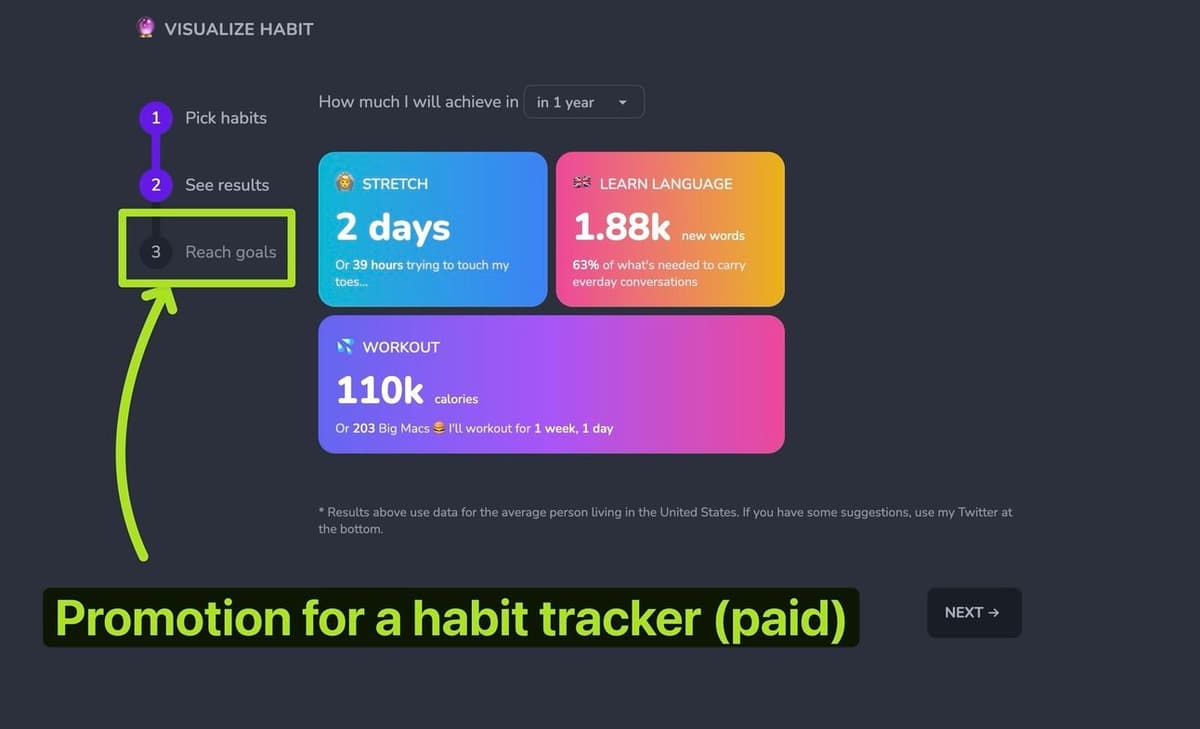
This is a free tool to show how much can be achieved in a year with tiny habits.
It automatically imports the habits when the user signs up for the habit
tracker. The conversion rate is 30% (traffic on the free tool to traffic on the
habit tracker)
Alternatively, you can collect emails and market through a follow-up sequence.
#2 — LAUNCH, PROFIT, REPEAT.
With free tools marketing, it’s common to get media coverage and go viral on
TikTok thanks to the embedded virality.
Launch everywhere. Hacker News
https://marclou.beehiiv.com/p/how-to-launch-a-startup-on-hacker-news, Reddithttps://marclou.beehiiv.com/p/how-to-launch-a-startup-on-reddit, Twitter,Product Hunt
https://marclou.beehiiv.com/p/how-to-launch-a-startup-on-product-hunt. Themore noise you make, the higher the revenue.
I launched 7 free tools in a year. Thanks to viral launch videos
https://launchvir.al/each product goes viral on 𝕏, gets a Product Hunt badge, and is reshared on
other social media.
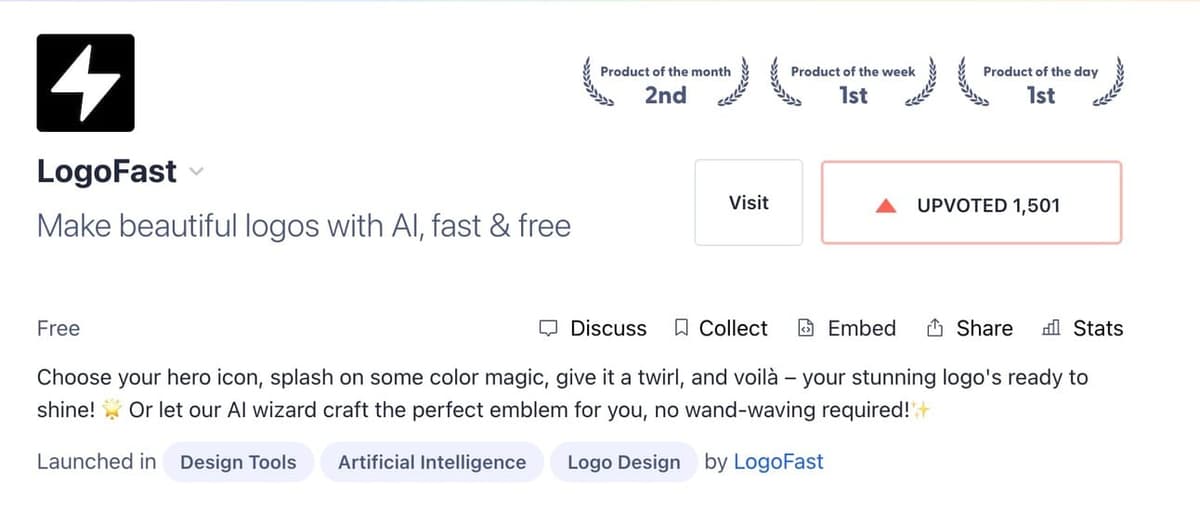
Once you’ve launched, move on to the next free tool.
Each launch will make more noise, increase your daily traffic, and grow your
startup — while keeping your inner builder satisfied.
7 lessons from building 9 startups in 2023
1. Don't marry your idea 2. Ditch free plans 3. Subscriptions headache is real 4. Swap vitamins for painkillers 5. Emotions sell 6.First impressions matter 7. Food + Sleep + Workout = Psychiatrist1. Don’t marry your idea2. Ditch free plans3. Subscriptions headache is real4. Swap vitamins for painkillers 5. Emotions sell6. First impressions matter7. Food + Sleep + Workout = Psychiatrist
I was lucky in 2023 — my income jumped from $1,500 in January, to $65,000 in
November.
But the real outcome was the knowledge I acquired.
Here are 7 lessons I wish I knew when I started the solopreneur journey.
Estimated reading time: 2 min 36 sec
BUILDING IN PUBLIC UPDATE
My logo maker LogoFast
https://logofa.st/got the full awards from Product Hunt 🤩
Less time designing, more time shipping!

1. DON’T MARRY YOUR IDEA
Out of the 20+ startups I launched, only 1 made good money and grew.
It’s the same pattern for most solopreneurs who made life-changing money.
When it’s time to focus on your startup, you’ll know.
2. DITCH FREE PLANS
Only 3% of users upgrade to paid plans
https://marclou.beehiiv.com/p/ditch-your-free-plan.You need 10,000 users to make $3,000 ($10/mo subscription). That’s an insane
amount of work for a solopreneur.
“Grow first, monetize later” is for VC-backed startups.
3. SUBSCRIPTIONS HEADACHE IS REAL
I killed a startup by swapping one-time payments for recurring ones.
Monthly passive income is good for business owners only. Users are much more
reluctant to subscriptions.
Start with one-time payments. Add subscriptions if there’s a demand.
4. SWAP VITAMINS FOR PAINKILLERS
100,000 visitors on my nice-to-have product website made $6,000.
100,000 visitors on my must-have product website made $100,000.
Unless you have an audience, avoid note-taking apps or habit trackers. People
buy solutions to painful problems.
5. EMOTIONS SELL
Few care about a NextJS boilerplate. But many care about a shortcut to ship
startups faster and reach financial independence.
Rephrase your copy to trigger an emotional reaction.
6. FIRST IMPRESSIONS MATTER
In our digital world, it’s the headline of your website, the thumbnail of your
YouTube video, or the first sentence of your tweet.
That one sentence has more impact on your conversion rate than anything else.
7. FOOD + SLEEP + WORKOUT = PSYCHIATRIST
As a solopreneur, you’re wearing 10 hats (developer + copywriter + accountant…).
Burnout is around the corner.
* Eat healthy, avoid carbs, quit sugar and alcohol
* Exercise daily, even if it’s an easy 15-minute workout
* Make sleep your #1 priority. Sleep at the same time every day in a dark room
at 18°. Don’t drink coffee 10 hours before bed, don’t drink water 3 hours
before bed, dim lights 1 hour before bed.
How to name a startup
The first impression matters. Let’s talk about making up an unforgettable name people will search on Google.
This newsletter is written 30,000 feet in the air—I’m going to Taiwan.
I used to spend days brainstorming for a startup name, to finally come up with
something nobody understood…
Let’s talk about making up an unforgettable name. First impression matters.
Estimated reading time: 3 min 09 sec
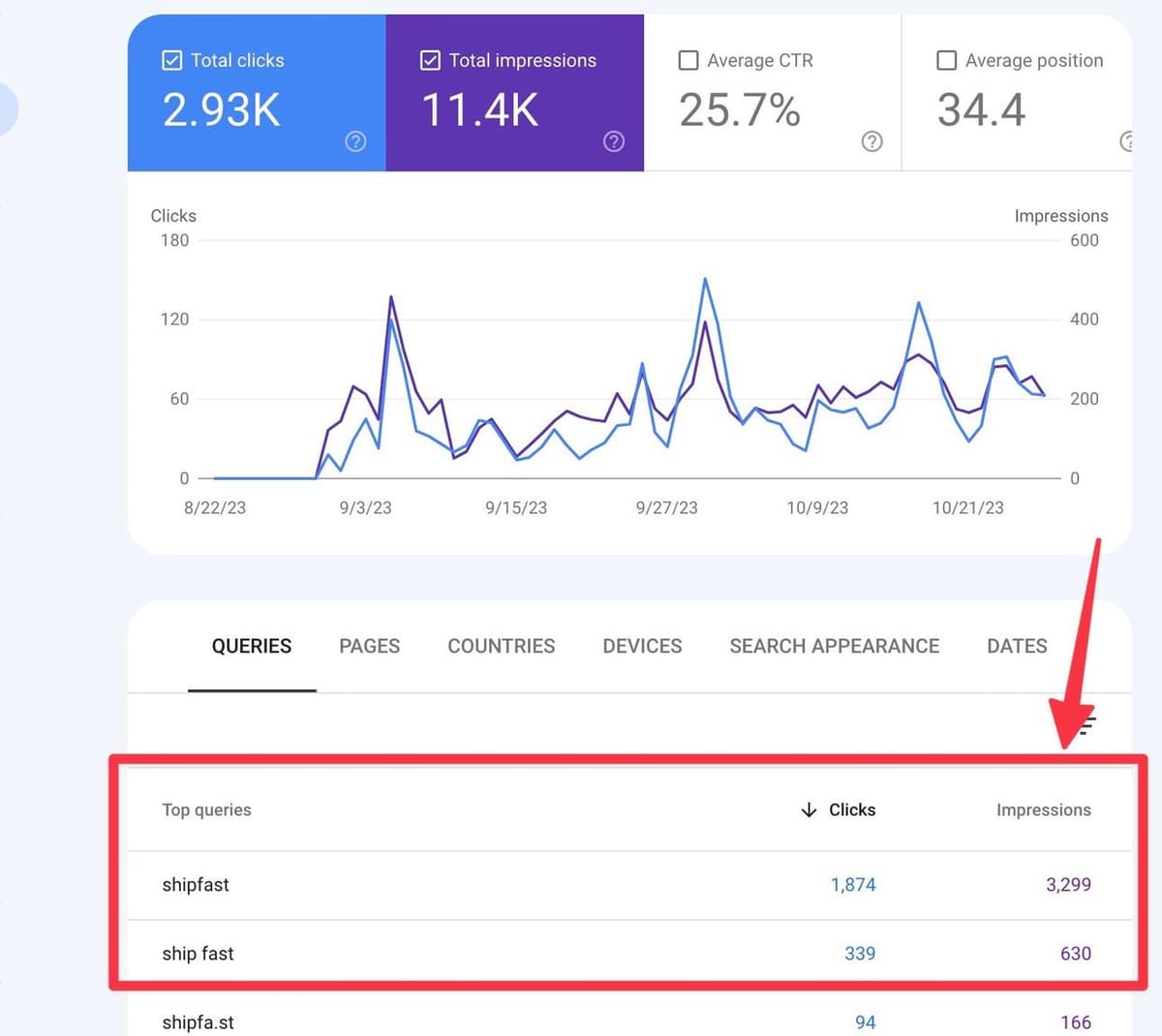
Here are 3 common ways to name a startup:
1. A super easy and short name—like Stripe or Butter. ChatGPT is good at making
them.
2. SEO-oriented names—like HeadshotPro.
3. Benefit-oriented names—like NomadList or Tweet Hunter.
Let’s focus on the last one. It’s the easiest way to be memorable as a
solopreneur with limited resources. The name is usually made of 2 short words.
One word should be super relatable to your customers. Speak a language they use
and understand.
* Tweet Hunter is for professionals on Twitter
* ShipFast is for indie makers
* OurBabyAI is for couples
The other word should signal a change in your customer’s life. It shouldn’t be
about your product at all. Why is your product useful? How will it change my
life?
* ShipFast: Finally launch that side project
* CleanShotX: Take beautiful screenshots with no skills
* NomadList: Go nomad, change your life
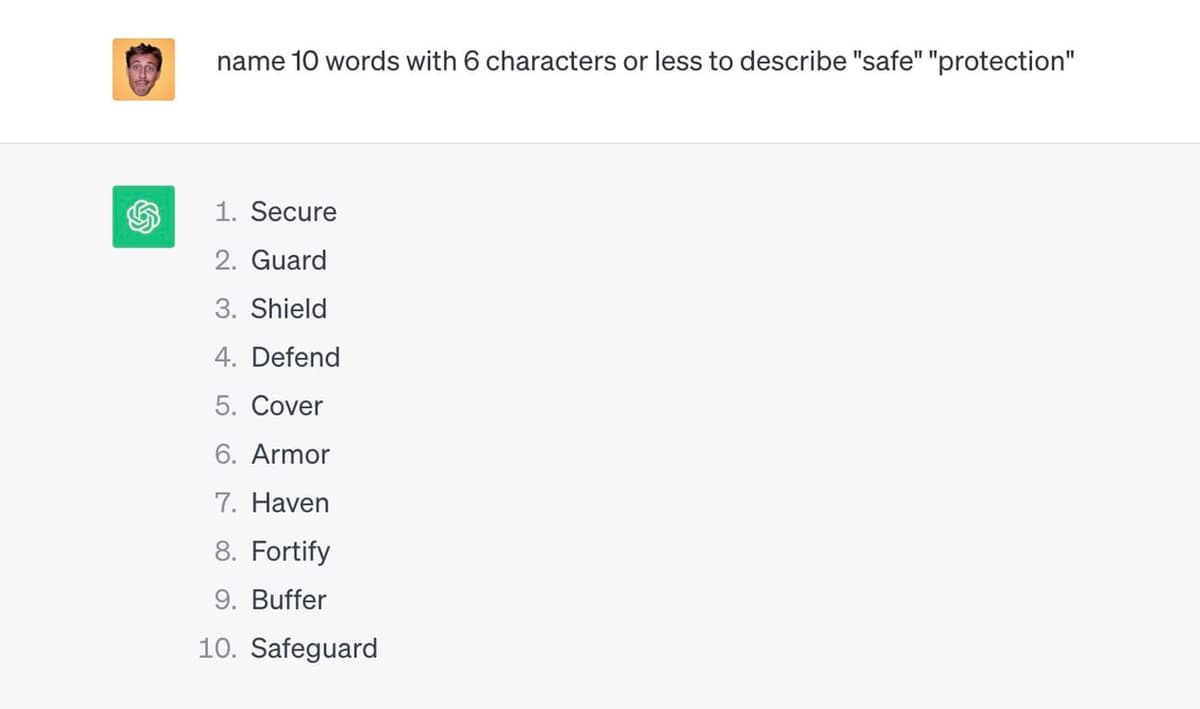
Now you have 2 words, find 5 short synonyms for each. Quick? Fast. Launch? Ship.
When you have 2 lists of 5 synonyms, ask ChatGPT to create all combinations.
Remove combinations that are over 10 words. Keep it simple.
Pick your 3 favorites and send them to a few friends: “What’s your favorite?”
Their answers don’t matter, yet. After 24 hours, remove your messages from the
chat and ask “Which one do you remember?” Your new startup name is the most
remembered. That’s it!
Don’t spend too much time on this. A name won’t make a startup. Pick one, and
start building!
How to launch a startup on Hacker News
What I’ve learned after 5 viral posts and 25,000 visitors from Hacker News.Show HNI made…The spiritTell the outcomeContributeDon’ts
Hey, it’s Marc
When I started Twitter in November 2021, I experienced the void. 0 likes for
months.
After a post on Hacker News, I got my first customers, and I started to get
traction on Twitter.
Here’s what I’ve learned after 5 viral posts and 25,000 visitors from Hacker
News.
Estimated reading time: 3 min 18 sec
Hacker News stats
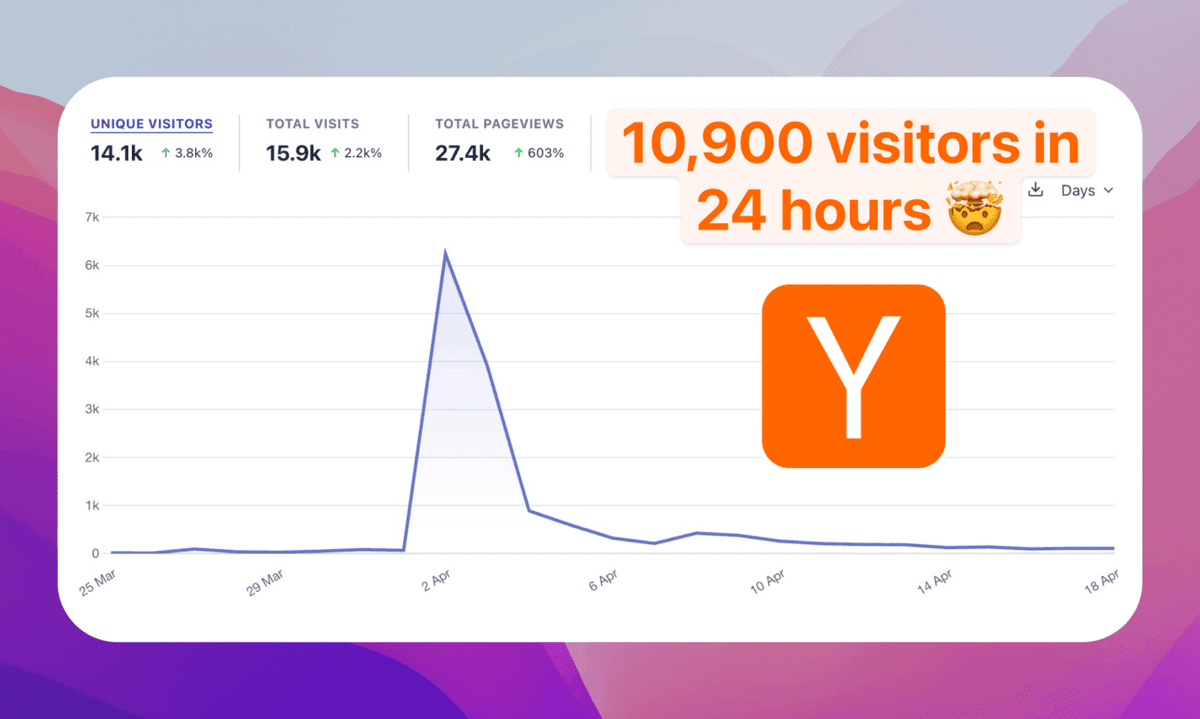
SHOW HN
There are many categories in Hackers News. Only one matters to us, makers: Show
Hacker News.
It’s a dedicated space for users to share their side projects. That’s where you
want to launch.
When you submit a post, add Show HN: to the title. The post will automatically
appear in the /newest category.
* Posts getting traction in /newest will be moved to /new for more visibility.
* Posts getting traction in /new will be moved to / for maximum visibility.
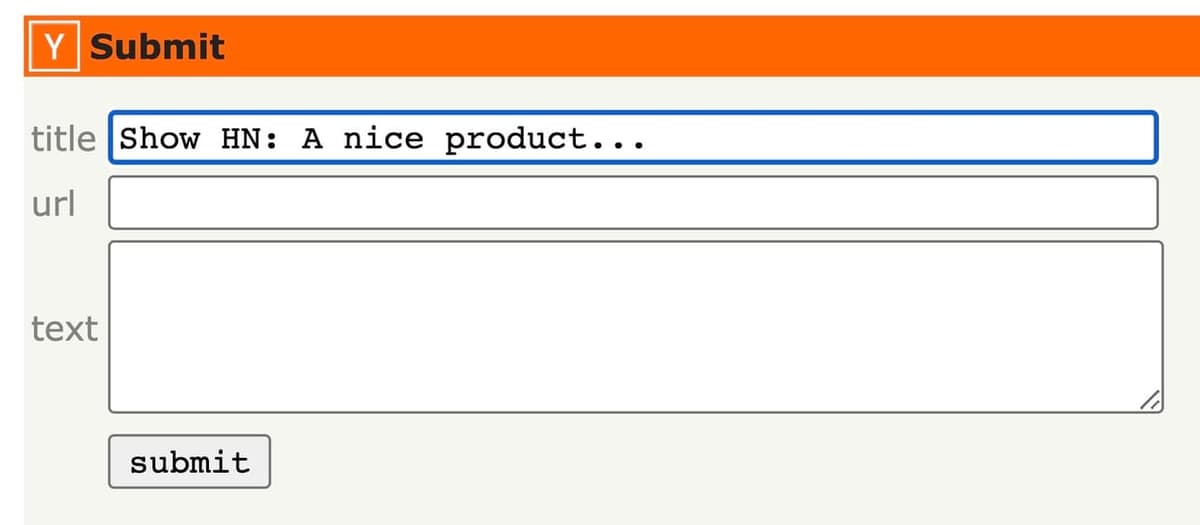
I MADE…
People don’t care about a big corporation getting richer. People care about you,
side hustler, shipping apps after your 9 to 5.
Make it personal. Start your post with I made or After 6 months coding…
THE SPIRIT
Developers and tech enthusiasts use Hacker News. Speak the language: I made an
SEO-optimized site entirely with GPT-4
Anything else will be ignored (course, coaching, e-commerce). Unless… you make
it techy. For instance, a habit tracker stands no chance—but a gamified habit
tracker does.
That’s how I got 11,000 visitors for my first startup (Habit Garden) and the
first customers.

TELL THE OUTCOME
Look at the list of the best Show HN posts of 2023
https://bestofshowhn.com/2023They all share one thing: You know what you’ll get by clicking on it.
What makes your product/service special? Why is it worth my time?
CONTRIBUTE
There’s a lot of spam and people trying to promote themselves without
contributing.
Add a comment to your post. Explain briefly who you are and why you built the
product. Ask for feedback.
Engage with users who comment. People say Hacker News is full of negativity, but
once you show you’re a real person, users are much more friendly.
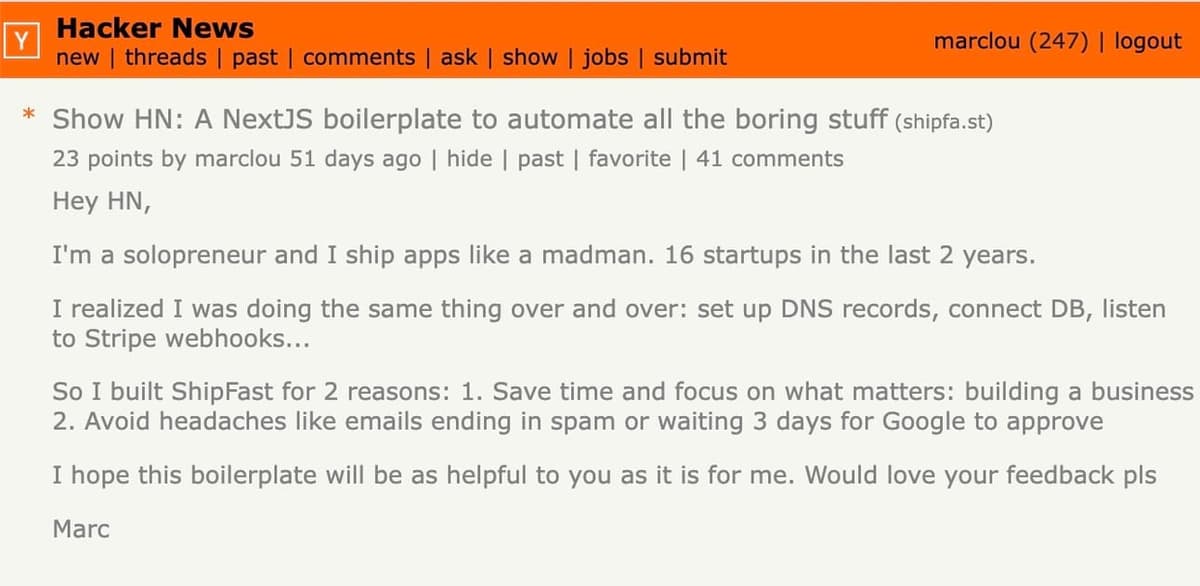
Other marketing channels to get customers and grow your micro startup:
* Launch on Reddit
https://marclou.beehiiv.com/p/how-to-launch-a-startup-on-reddit* Launch on Product Hunt
https://marclou.beehiiv.com/p/how-to-launch-a-startup-on-product-hunt* Free tools marketing
https://marclou.beehiiv.com/p/marketing-for-product-obsessed-developers* Programmatic SEO
https://marclou.beehiiv.com/p/how-to-grow-a-micro-startup-with-programmatic-seoDON’TS
DON’T ASK FOR UPVOTES.
At least not directly. I believe there’s a real person who decides which posts
get featured. They know when a user arrives from a direct link to your
submission.
If you want support from your friends, tell them to find your submission by
browsing Hacker News, not by sending a direct link. Keep in mind that multiple
upvotes from accounts with 0 karma look suspicious.
DON’T OVERTHINK IT.
Hacker News is very random. Unlike Product Hunt, there isn’t much you can do to
influence the success of a post.
DON’T USE EMOJIS.
How to write a landing page that sells
5 mistakes to avoid to write a damn good landing page1. Your brand (name + logo) doesn’t matter2. Your headline does 80% of the job3. People don’t trust you yet4. Let me try it! 5. OK—Can I buy it now?
I created 20+ startups and here's what you need to convert visitors into
customers: Create a damn good hero section on your landing page.
Here are 5 mistakes I see solopreneurs make, and how to fix them.
Estimated reading time: 3 min 46 sec.
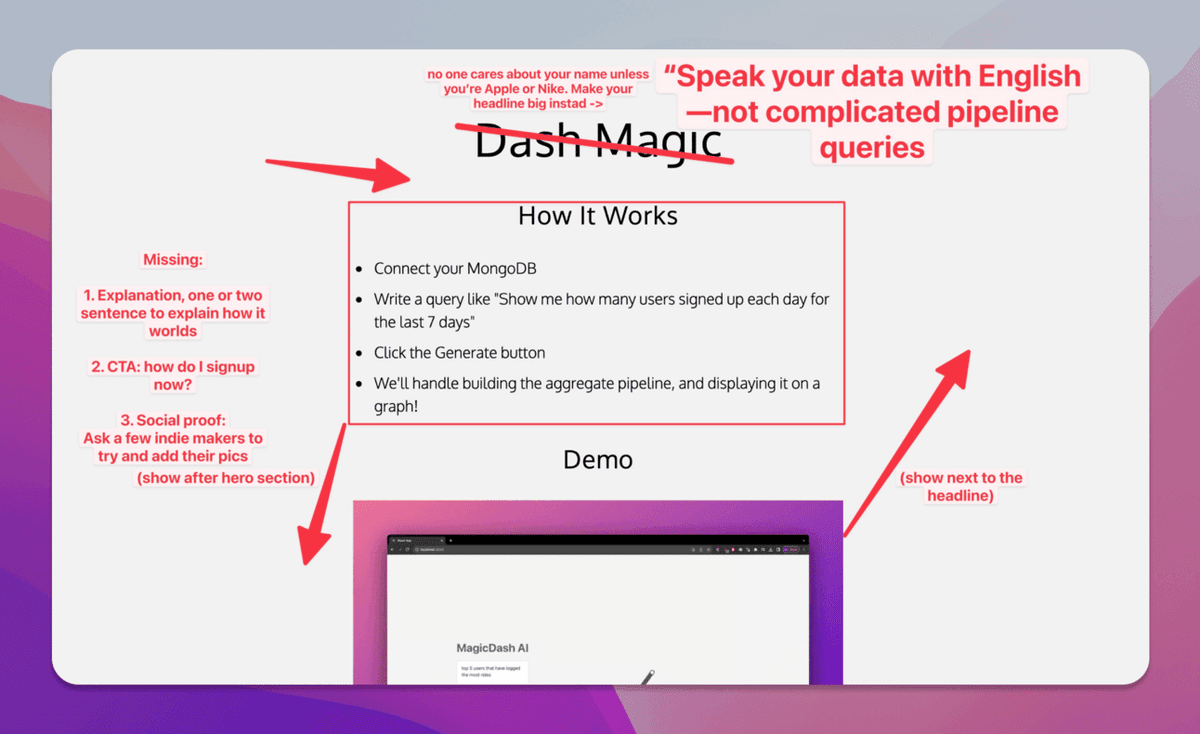
1. YOUR BRAND (NAME + LOGO) DOESN’T MATTER
I see websites with a massive 56px brand name and enormous logo in the center.
Yes, your brand matters. But only to you.
Internet is crowded. People have no time. They aren’t looking for a new brand
with a cool name. They want solutions to their problems. And your brand name
isn’t one of them (unless you’re Nike or Apple).
Let’s fix it:
* Make your brand name and logo smaller. 18 pixels max. for the font, and 32
pixels max. for the logo.
* Alight them at the top left corner.
* Make your brand name super simple (i.e. Zoom, Stripe, Butter) or
objective-oriented (ShipFast, MakeLogo, HeadshotPro).
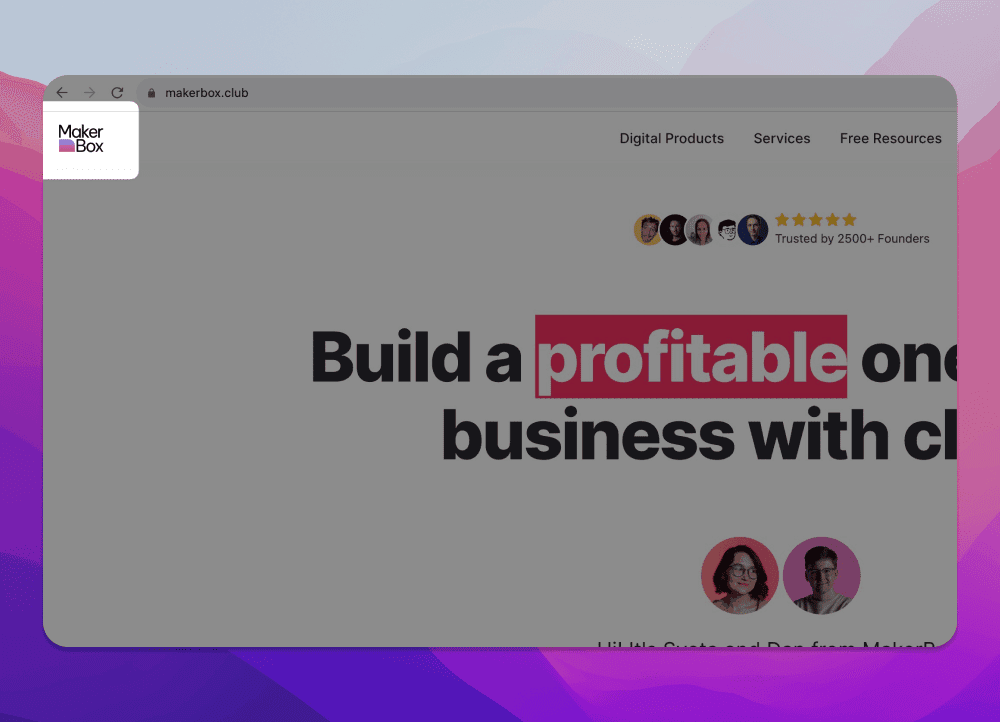
2. YOUR HEADLINE DOES 80% OF THE JOB
This is the first part of your site that people will read. It’s like the first
Tinder profile picture or a YouTube thumbnail. Miss it, and they’ll leave.
Let’s fix it:
* Every site needs a headline (I’ve seen some without).
* The font size should be BIG. 36px to 48px is a good font size
* The headline copy should answer this question: Why should a stranger stay on
your site for more than 10 seconds? Write about the pain it's relieving, the
problem it's solving, or the pleasure it's giving. This could be a dedicated
issue, let me know if you want to read more.
* Align your headline in the center or on the left if you have a product demo
on the right.
* Write 5 variations. Send them to 5 friends. After 24 hours, delete the
message. Ask which one they remember. Pick that one.
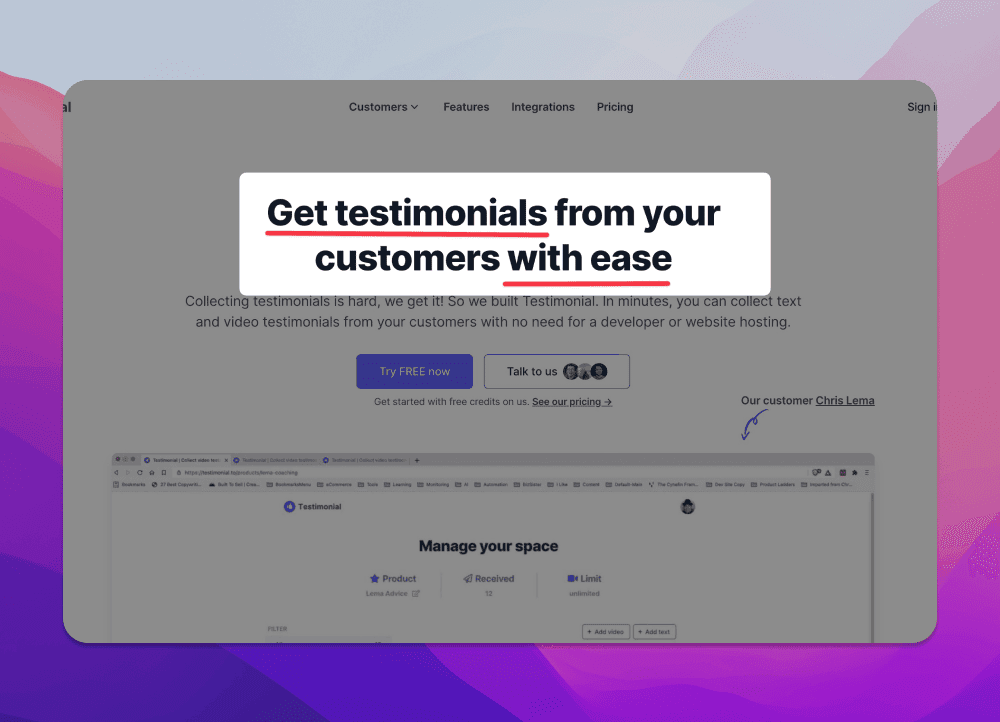
3. PEOPLE DON’T TRUST YOU YET
Asking for money, or even just an email is a lot on the internet. There have
been too many scams and humans are risk-averse. If there’s no social proof on
your site, the conversion rate will plummet.
Let’s fix it:
* Don’t call your users, users. They are students, product managers, or
solopreneurs.
* Don’t fake it at all. People are really good at spotting suspicious stuff. If
it seems suspicious, people will leave in a second. Confused shoppers don’t
buy.
* Get testimonials before you launch. DM the right people on Twitter, post in
the right subreddit, or ask relevant friends.
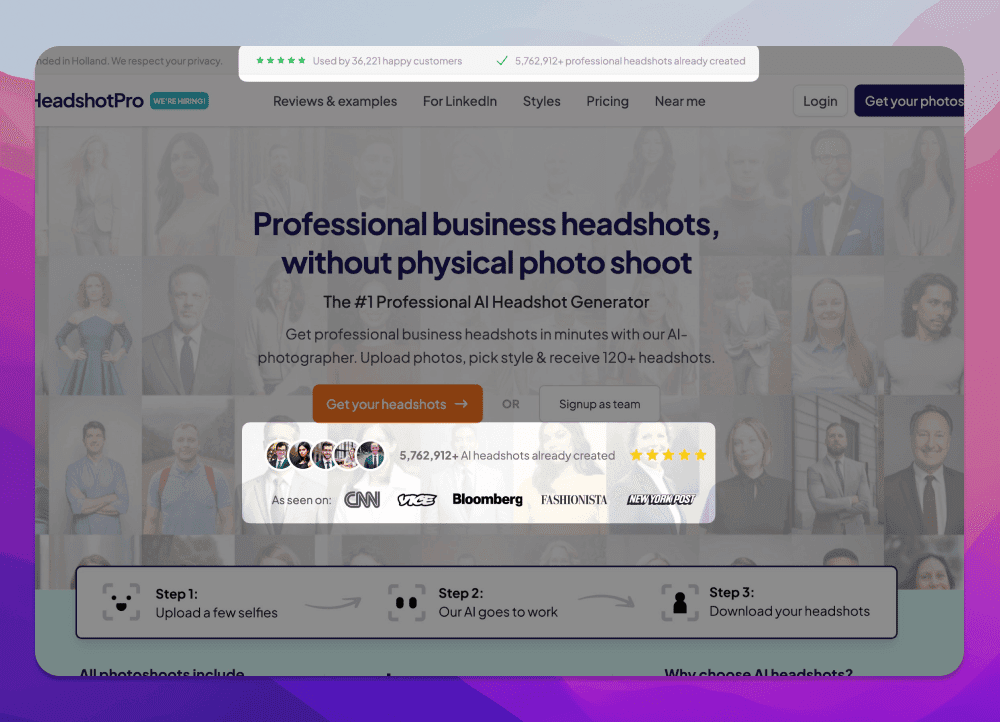
4. LET ME TRY IT!
Echoing the previous point: Asking for money, or even just an email is a lot on
the internet.
Is it worth my time? People want to see what’s in it for them.
This is how you show them:
* Add a demo of your product on the right side, or in the center, under the
headline/supporting headline/CTA block.
* An image is good. A video is better. A demo is best.
* Remove clutter, especially if your product is complex. You just need to show
the most important feature.
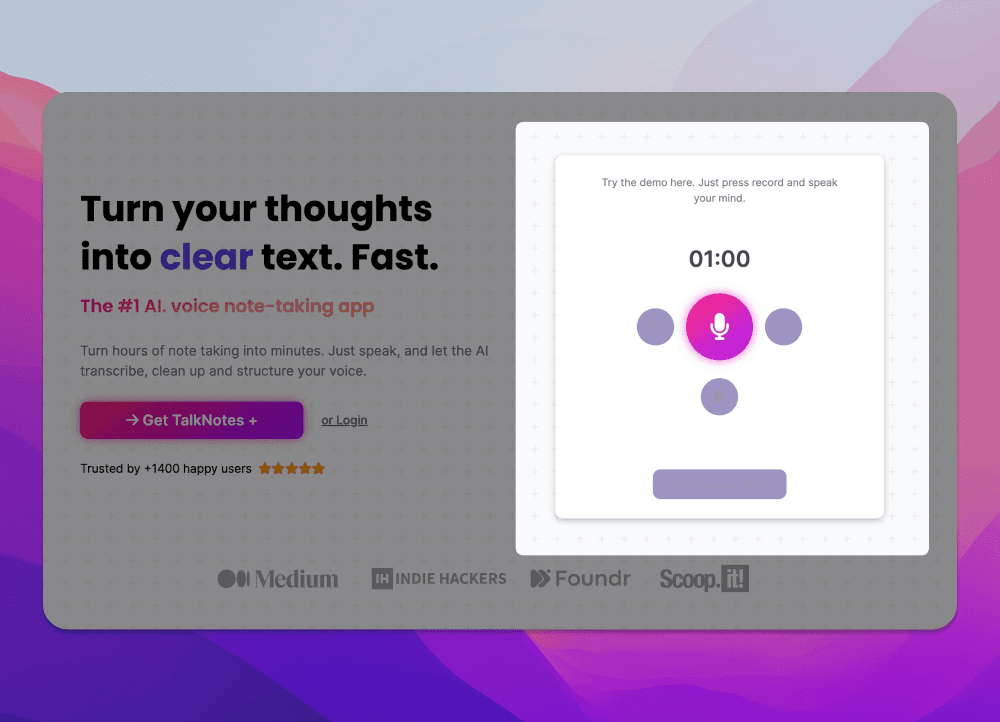
5. OK—CAN I BUY IT NOW?
Visitors on your landing page aren’t users. They are just a little bit
interested in what you have to offer. Make it very easy for them to start once
they’re ready.
Let’s fix the Call-To-Action:
* Your CTA should be a big button of the same color at different locations of
your site.
* Don’t add other CTAs. If you have a log-in button, use a neutral color or a
link.
* Don’t bury your call-to-action button somewhere on the page. Add one in the
hero section, usually under the headline/supporting headline block.
* Avoid Get Started or Sign Up. Remind the benefits to the user. Use this
formula: Verb + Benefit. Learn Korean now, Get your headshots, Make my logo.
* Answer objections in a small paragraph under the CTA:
* I bet it’s expensive → Start for free
* Another subscription… → One-time payment
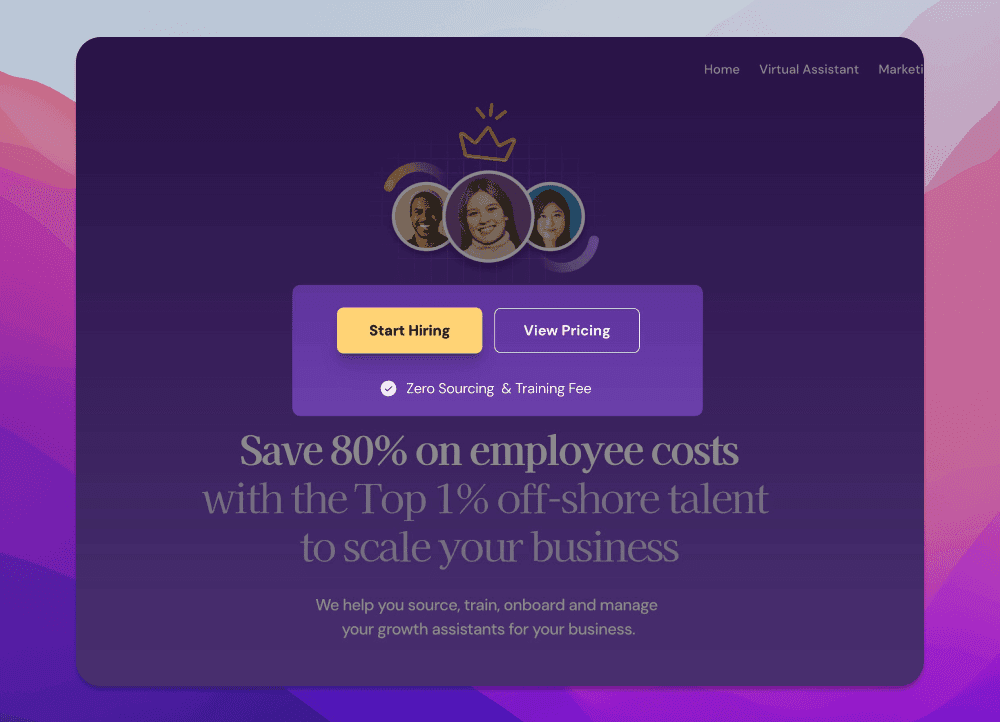
Finally, launch your website as soon as possible and find out how people react.
If there isn’t much conversion, try tweaking your headline for the most impact.
Part 3 Mindset
I built websites for 900 days without quitting
I made peanuts for 18 months. But I showed up daily until luck found me.
I made peanuts and tweeted in the void for 18 months.
But I showed up daily — even when I didn’t feel good — until luck found me.
Here’s how I stay motivated:
SOLOPRENEUR UPDATE
I just shipped a new feature from Japan 🇯🇵
Introducing... 🥁 … ShipFast Leaderboards!
https://shipfa.st/leaderboard* 🥇 Compete with 2,000+ makers
* 🌟 Feature your product
* 🧑💻 Stay motivated
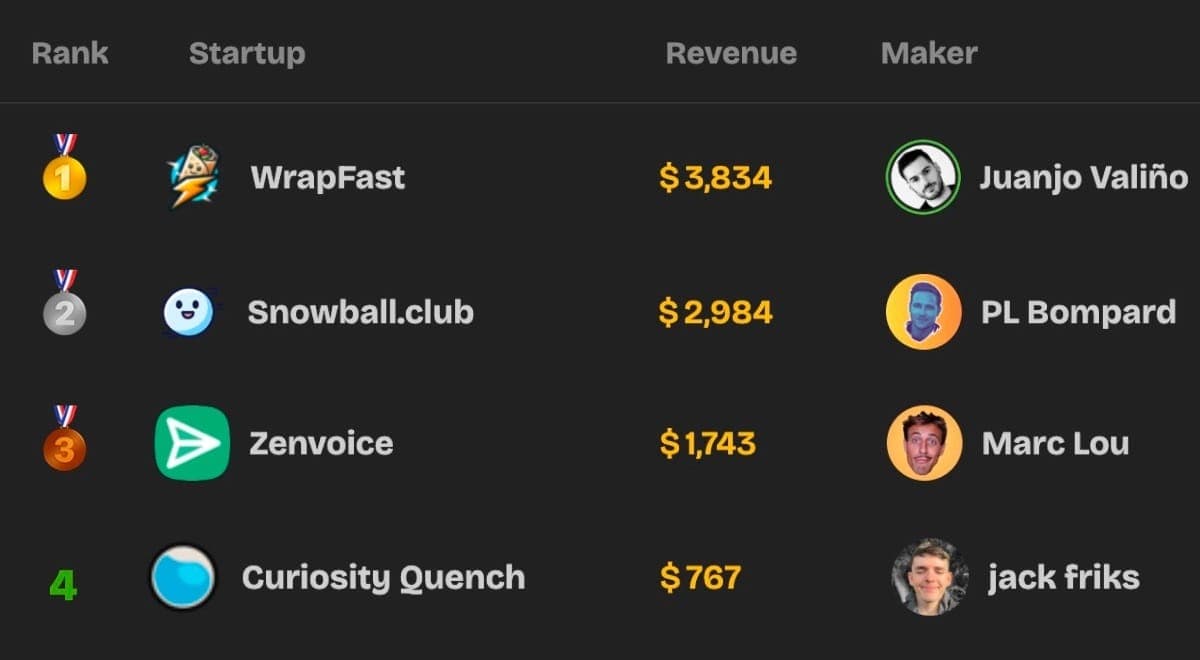
I ship small
Some solopreneurs spend years working on a startup until they get lucky. I did
that and burned out.
My monkey brain wants quick results. So I never spend more than a few weeks
building a new product.
No unicorn master plan. Just one feature.
I play with friends
I started Twitter at the same time as Dan
https://twitter.com/DanKulkovEvery day, I’d check if my tweets overperformed his (it usually did, sorry
buddy).
My monkey brain wants to play. So I compare myself with other solopreneurs at
the same stage.
No jealousy. Just healthy competition (we all win in the end).
I quit early
Most of my 28 products made at least $1. I’m tempted to focus and grow each of
them.
But I move on to the next startup idea after 10,000 visitors (unless it’s a hit,
like ShipFast).
My monkey brain hates losing. But I’d rather quit too early and miss an
opportunity than quit too late and burn out.
Entrepreneurship is a marathon. Those who don’t quit are rewarded in the end.
Show up daily — 1 hour is enough to build a habit. Create something small.
Compete with friends. Don’t quit. And trust the process. I root for you.
Why you won’t find good startup ideas
If good ideas could be found, there would be a marketplace
Nutella was an accident.
During World War II, there wasn't enough cacao, so Pietro Ferrero tried making
chocolate with hazelnuts instead. He ended up creating the world's biggest
chocolate spread.
Successful startups are born by accident too.
It starts with the founder either playing with new technology, solving a problem
they have, or listening to what their customers want.
Put your work out there.
You don’t need a good idea to start. Write an article about what you learned
last year, rebuild your note-taking app, or send a cold email to a business.
The process of creating will help you discover problems.
Real problems that people would pay you to solve. In the end, you might create a
successful business you never even imagined.
Less thinking, more doing.
— Marc
PS: My solopreneur journey was an accident. I was bored so I played with AI and
created MakeLanding. MakeLanding created ShipFast. ShipFast created ZenVoice.
ZenVoice created PoopUp.
I outsmart myself to be productive
How to love working so much, that everything else becomes a distraction1. The tribe 2. The system3. The carrot
Today is Sunday, 7:21 am in Bali.
I’m writing this newsletter instead of surfing (the waves are excellent).
There’s a force pulling me to work. It’s more addictive than my favorite sport.
How to love working so much, that everything else becomes a distraction?
SOLOPRENEUR UPDATE
Pieter Levels tweeted
https://x.com/levelsio/status/1761423301312729209about ZenVoice.
My friend Dan
https://twitter.com/DanKulkovtold me: “PRODUCTIZE IT”.
So I launched PoopUp
https://poopup.co/in 3 days — Turn your website visitors into customers with wake-up call popups.
It made $922 in 24 hours.
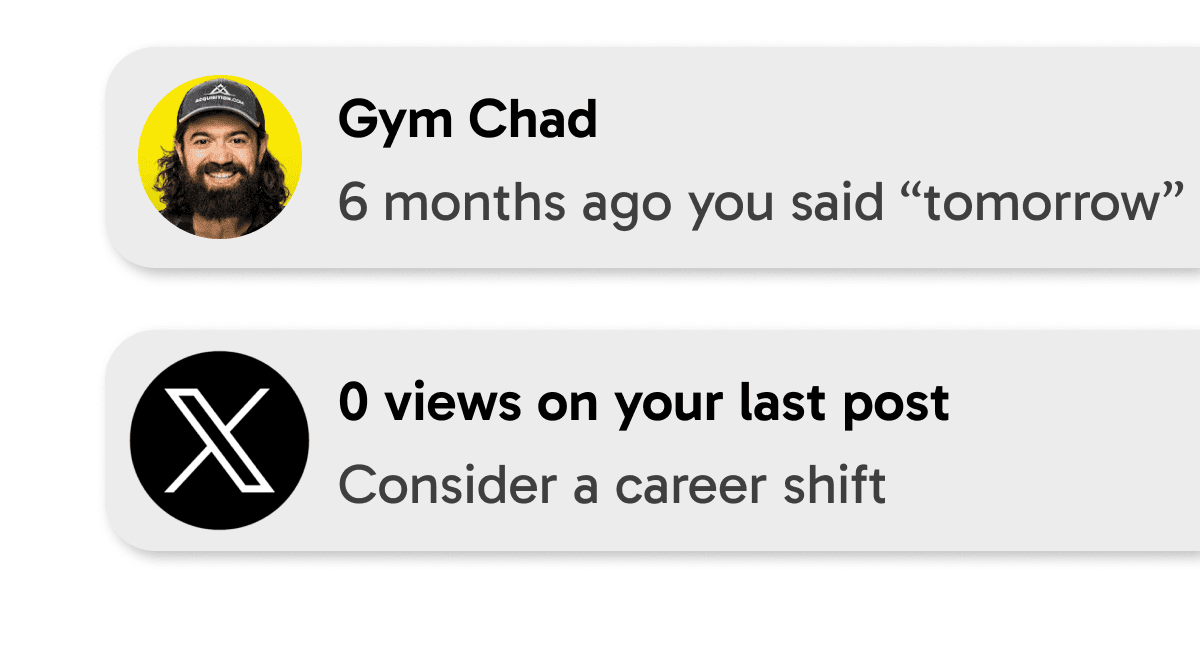
1. THE TRIBE
We are the most social creatures on the planet.
Art, books, startups, and everything we create have a fundamental purpose: To
contribute to society and evolution.
We’re hard-wired to care what people say, to be curious, and to compete.
Twitter changed my life. I found people I admire and people I could compete
against. It created a powerful and healthy desire to grind.
You don’t have to build an audience (although it helps). Subreddits, Telegram
chats, and Discord communities let you connect with like-minded people to
leverage our social drive.
2. THE SYSTEM
You can trick the brain into working hard, but we’re still monkeys. We expect
our efforts to bring results, quickly.
I have no clue how much I’ll earn next week, or how many followers I’ll get.
But I know exactly what I’ll achieve:
* 1 YouTube video
* 1 newsletter issue
* 1 feature (or startup)
With a short deadline and controllable goals, I always fulfill my expectations,
and quitting is not an option.
3. THE CARROT
I lived like a cockroach with $1,000/month for 5 years. No one cared about my
work.
Family, friends, and random people became curious when I started to earn $50,000
per month.
I don’t care what money buys (I didn’t even get a new surfboard). But I care for
my work to be recognized.
Money gets attention. And attention drives motivation. Get paid for your work
(ditch free plans). It’s a powerful drive to get things done.
Throughout my life, I’ve quit countless times — because one of these 3 drivers
was missing.
It took 2 years to understand what pulls me to work. This issue summarizes it.
PS: I won’t ship startups for 3-6 months. I’m working on a project that’s
important to me. I’m a bit scared, but it’s the right thing to do, I guess.
I built a micro SaaS in 31 hours
On February 5th, 2024, I hit "Start Streaming" and built a micro SaaS startup — live on YouTube in just 31 hours.Getting the startup idea Building the MVPGetting the 1st customer
On February 5th, 2024, I hit "Start Streaming" and built a micro SaaS live on
YouTube in 31 hours.
The product has made almost $2,000 in just 5 days. Here's the entire journey
from idea to launch.
Estimated reading time: 3 min 11 sec

GETTING THE STARTUP IDEA
After I realized I paid Stripe $1,600 to create PDF invoices, I turned off the
option. Within days, my inbox was flooded with customers asking for invoices.

A pain with a money incentive is promising. So I searched for alternatives but I
couldn’t find any. And just like this, a new startup idea was born: A self-serve
invoicing tool for Stripe (now called ZenVoice
https://zenvoice.io/I wrote more about getting ideas
https://marclou.beehiiv.com/p/how-to-find-startup-ideas (TL;DR; think less,build more).
BUILDING THE MVP
1. PRICING IS EVERYTHING
As a customer, that’s what you look at first, especially when you don’t
understand the product. As an entrepreneur, that’s how I pay the rent. So I
brainstorm pricing first.
I went with one-time payments because it’s almost free to run this startup:
* $49: Unlimited invoices for 1 Stripe account
* $69: Unlimited invoices for unlimited Stripe accounts
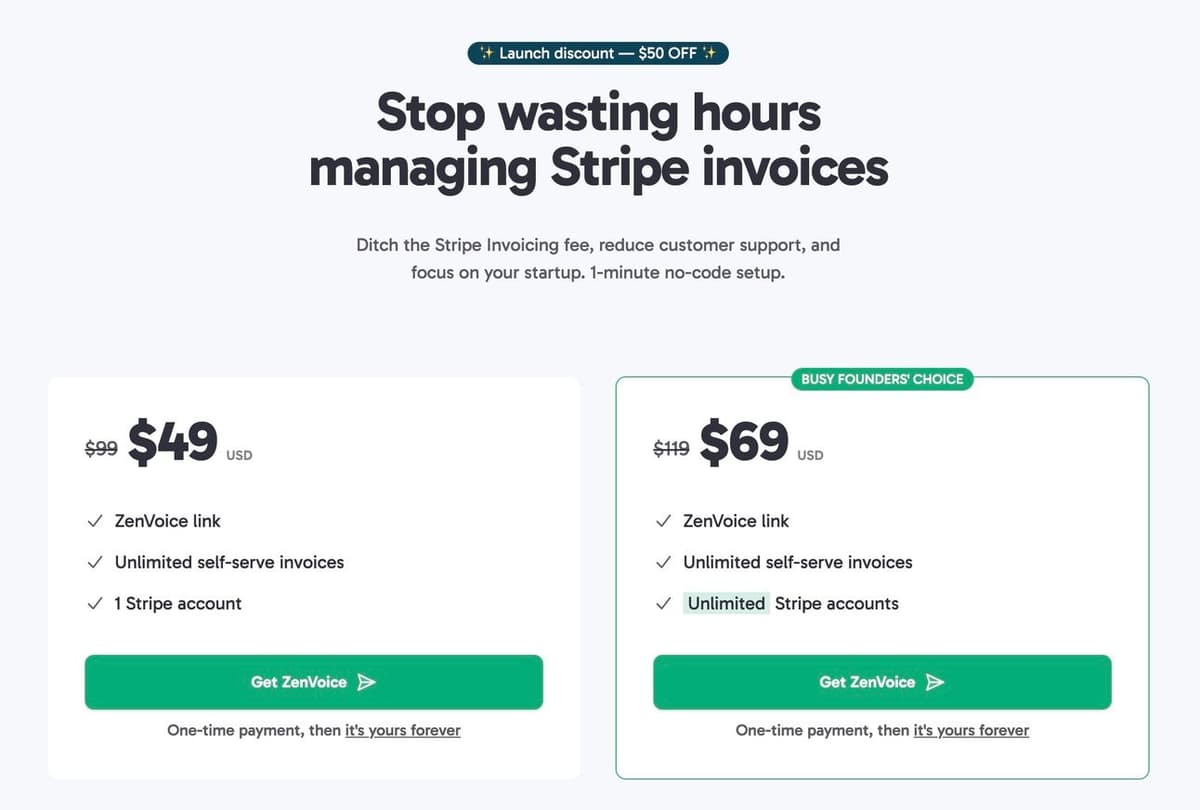
I only pay for bandwidth (<$1/month) and emails ($0.001 per email).
If a customer generates more than 49,000 invoices, I’m losing money. But this
will never happen for all customers.
There are 2 plans because people have no clue how much a tool like this costs.
Confused customers don't buy. The first plan ($49) is the anchor, so the second
one makes sense.
2. THAT ONE FEATURE
I had tons of features in mind. But I also remembered that 90% of startups
failed. So I have a rule to avoid wasting time (and eventually burning out):
1 startup = 1 feature
For ZenVoice, customers of my users should be able to generate invoices. That’s
it.
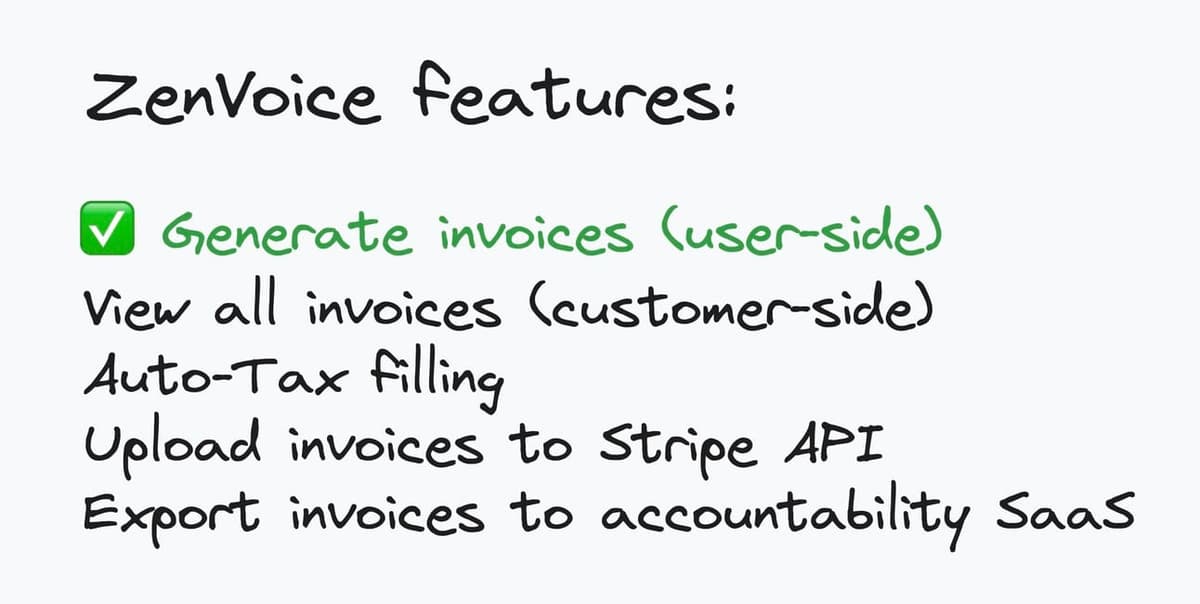
There’s no password reset form, invoice preview, or account deletion. But
there’s a feedback button so I know what users need instead of making a blind
guess.
3. THE LANDING PAGE IS AS IMPORTANT AS THE PRODUCT
On average, only 1 website visitors out of 100 will see your product.
I spent 11 hours on the landing page (37% of the time) to make sure it converts.
Here are the key elements I focused on:
* Problem agitation: Annoying notifications to remind potential customers why
they’re here.
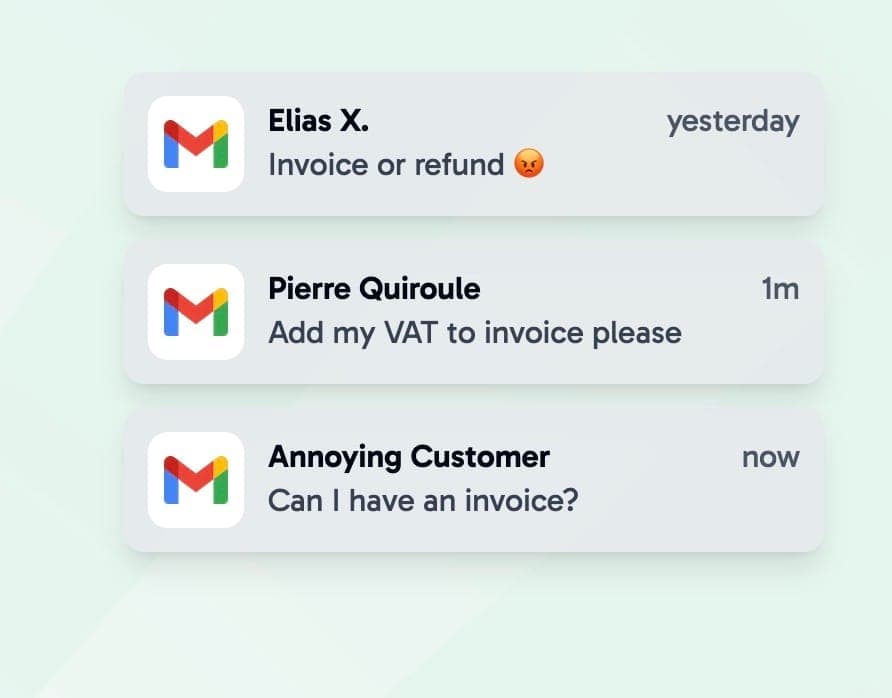
Emails you’d get if you turn off Stripe Invoicing — it got Vercel’s CEO's
attention
https://x.com/marc_louvion/status/1760348752924352952* Headline: A promise with an emotional outcome “Focus on your startup, not the
invoices”
* Demo video: I’m not a cold VC startup, so I demo the product and explain why
I built it
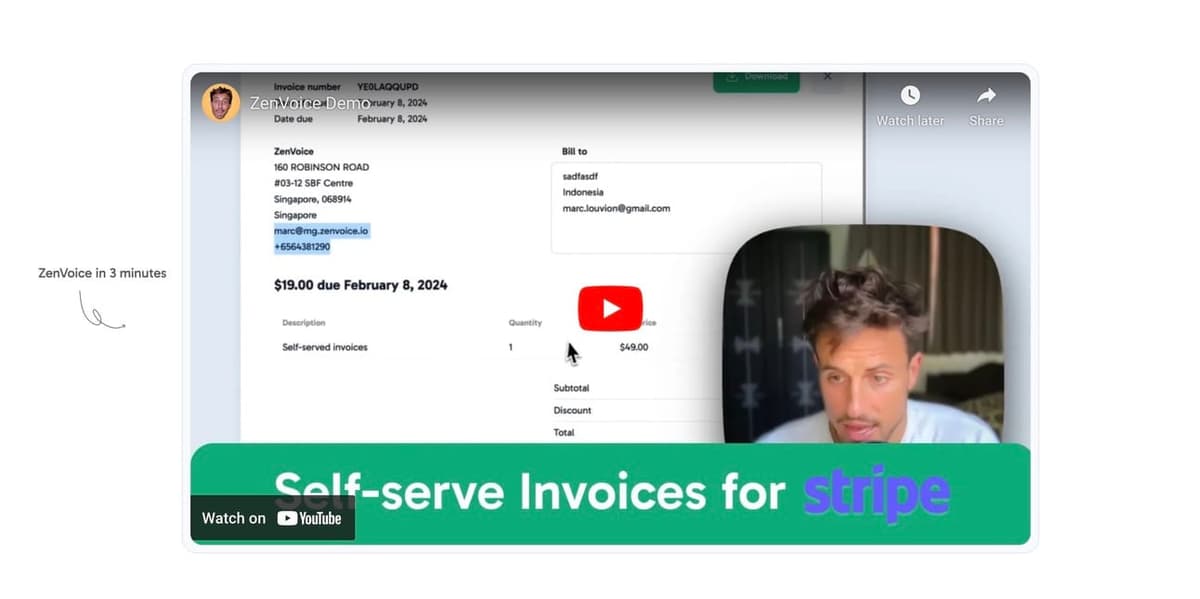
* Social proof: I let a few users beta test the product in exchange for a
testimonial
* Startup name: ZenVoice is easy to remember because it’s short and related to
the pain (in-voice)
I wrote more about making landing pages that sell
https://marclou.beehiiv.com/p/how-to-write-a-landing-page-that-converts.GETTING THE 1ST CUSTOMER
To get the first visitors (and customers), I launch everywhere:
Product Hunt, Reddit, Hacker News, and Twitter have the most impact.
For each platform, I try to format the post for the user’s language. For
instance, I use cold tech words on Hacker News, and friendly vibes with emoji on
Product Hunt. I also made a launch skit to kickstart the post
https://x.com/marc_louvion/status/1759503527125323796on Twitter.
I don’t know what’s next for ZenVoice, yet.
When it reaches 10,000 visitors (currently 7,600), I’ll look at just one metric:
$ per visitor. The worst I’ve had is $0.06 per visitor. The best is $0.93
(ShipFast
https://shipfa.st/If ZenVoice $-per-visitor is above $0.5, I will focus. Otherwise, I’ll let it
run by itself, fix bugs, and move on to the next startup.
How I built 21 products in 2 years
Speed is solopreneurs' best friend. Here is how to get ideas and build them fast.An idea, quickThe 24-hour startup
2017: I spent a year building a startup that made $0.
2023: I launched 10 products and made $263,000.
Speed is solopreneurs' best friend. Here is how to get ideas and build them
fast.
BUILD-IN-PUBLIC UPDATE
8 YouTube lives later, the micro startup is done!
Next week, I’ll stream the launch on Product Hunt, Twitter, Hacker News, etc.
Subscribe here to get notified
https://youtube.com/@marc-louso you don’t miss it 🤩
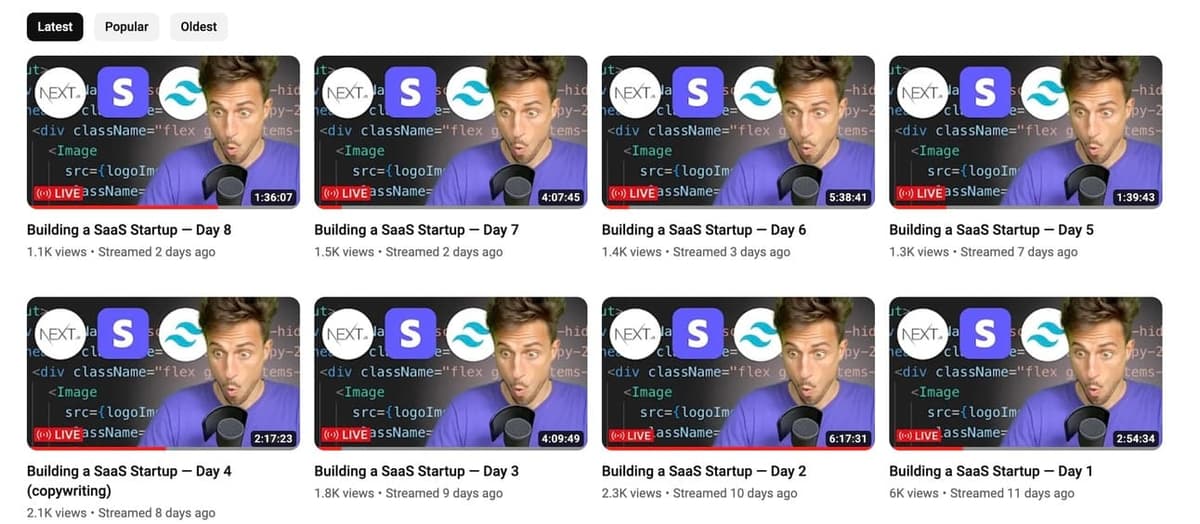
AN IDEA, QUICK
The most successful products were built by solopreneurs scratching their itches.
Pieter Levels building NomadList while traveling the world is a great example.
There are tons of existing problems gravitating around you. Build a habit of
looking around. If you’re working 9/5, it’s the best place to explore. Search
for experiences that bother you. Or knowledge you wish you had.
If nothing comes, start something new. Try a new sport, start a new daily
routine, or acquire new skills. You can also solve universal problems:
Businesses want more revenue, and people want to be more productive. Finally,
you can upgrade a product you or your friends are using.
When you get started, ideas don’t matter. Building them does. You’ll discover
real problems and get tons of promising ideas.
THE 24-HOUR STARTUP
My 2017 startup failure went like this: I threw away all the code, quit my
girlfriend, and moved to a new country.
The more time invested, the higher the expectations. In the tough world of
entrepreneurship where expectations are rarely met, spending months on a product
is a recipe for burnout.
Every startup has a 24-hour version: Airbnb is a spreadsheet, and Instagram is a
Google Drive.
Find yours. Remove all non-critical features. Spend a week or two building.
Write a good headline and ship with a buy button.
Building a successful startup is a repetition of tiny failures.
Be comfortable being imperfect. Take action. Now is a good time to write some
code.
7 lessons from building 9 startups in 2023
1. Don't marry your idea 2. Ditch free plans 3. Subscriptions headache is real 4. Swap vitamins for painkillers 5. Emotions sell 6.First impressions matter 7. Food + Sleep + Workout = Psychiatrist1. Don’t marry your idea2. Ditch free plans3. Subscriptions headache is real4. Swap vitamins for painkillers 5. Emotions sell6. First impressions matter7. Food + Sleep + Workout = Psychiatrist
I was lucky in 2023 — my income jumped from $1,500 in January, to $65,000 in
November.
But the real outcome was the knowledge I acquired.
Here are 7 lessons I wish I knew when I started the solopreneur journey.
Estimated reading time: 2 min 36 sec
BUILDING IN PUBLIC UPDATE
My logo maker LogoFast
https://logofa.st/got the full awards from Product Hunt 🤩
Less time designing, more time shipping!

1. DON’T MARRY YOUR IDEA
Out of the 20+ startups I launched, only 1 made good money and grew.
It’s the same pattern for most solopreneurs who made life-changing money.
When it’s time to focus on your startup, you’ll know.
2. DITCH FREE PLANS
Only 3% of users upgrade to paid plans
https://marclou.beehiiv.com/p/ditch-your-free-plan.You need 10,000 users to make $3,000 ($10/mo subscription). That’s an insane
amount of work for a solopreneur.
“Grow first, monetize later” is for VC-backed startups.
3. SUBSCRIPTIONS HEADACHE IS REAL
I killed a startup by swapping one-time payments for recurring ones.
Monthly passive income is good for business owners only. Users are much more
reluctant to subscriptions.
Start with one-time payments. Add subscriptions if there’s a demand.
4. SWAP VITAMINS FOR PAINKILLERS
100,000 visitors on my nice-to-have product website made $6,000.
100,000 visitors on my must-have product website made $100,000.
Unless you have an audience, avoid note-taking apps or habit trackers. People
buy solutions to painful problems.
5. EMOTIONS SELL
Few care about a NextJS boilerplate. But many care about a shortcut to ship
startups faster and reach financial independence.
Rephrase your copy to trigger an emotional reaction.
6. FIRST IMPRESSIONS MATTER
In our digital world, it’s the headline of your website, the thumbnail of your
YouTube video, or the first sentence of your tweet.
That one sentence has more impact on your conversion rate than anything else.
7. FOOD + SLEEP + WORKOUT = PSYCHIATRIST
As a solopreneur, you’re wearing 10 hats (developer + copywriter + accountant…).
Burnout is around the corner.
* Eat healthy, avoid carbs, quit sugar and alcohol
* Exercise daily, even if it’s an easy 15-minute workout
* Make sleep your #1 priority. Sleep at the same time every day in a dark room
at 18°. Don’t drink coffee 10 hours before bed, don’t drink water 3 hours
before bed, dim lights 1 hour before bed.
Build your micro SaaS in 24 hours
A guide for product-obsessed developers to build a minimum viable startup in days, not weeksThe hard truthEvery startup has a 24-hour version What’s enough for a minimal MVP?What you should ditch:
When I believed I was Mark Zuckerberg in 2017, I spent a year building a startup
that got 0 users.
20+ startups later and countless months spent on useless features, I can
confidently say this: We overthink startups.
Here’s how to launch in weeks, not months.
Estimated reading time: 3 min 48 sec

BUILDING IN PUBLIC UPDATE
Handling Stripe subscription events is a real headache… So I made it as easy as
a pie with ShipFast!
Add a react component and the boilerplate takes care of everything from creating
a checkout to providing or revoking access to your service.
Don’t spend weeks on your SaaS, it’s available now.
http://shipfa.st/THE HARD TRUTH
Let’s say you’re getting started and just launched your startup on Product Hunt.
1,000 visitors. Pretty cool! 900 will read your headline, 500 will scroll past
the first section, 50 will sign up, and 5 will pay to use your app.
That is a 0.5% conversion rate, which is optimistic for a first startup.
Spending 3 days on a password recovery form wasn’t probably worth your time…
Most of your efforts have 0 financial outcome—that’s entrepreneurship. Spending
months on a startup that will get 5 users and $100 in revenue is a recipe for
burnout (I was there in 2021). Shipping minimal MVP in weeks is an alternative
for mental well-being and financial success.
EVERY STARTUP HAS A 24-HOUR VERSION
* Airbnb is a spreadsheet
* Instagram is a Google Drive
* McDonald’s is a pop-up store
I’m not saying you should launch a scrappy product in a day (the
product-obsessed developer inside of you will resist anyway, I am the same).
But there’s a version of your startup that can be published within 24 hours.
What does it look like?
Start from that baseline and only add the bare minimum to get your minimal MVP
in days.
WHAT’S ENOUGH FOR A MINIMAL MVP?
A headline, a buy button, and 1 feature.
Your headline is the most important. It’s like the thumbnail of a YouTube video:
people will decide to invest their precious time on your site based on that
sentence. I wrote about how to make memorable headlines
https://marclou.beehiiv.com/p/how-to-write-a-landing-page-that-converts.You can only validate an idea if people pay for it. A waitlist isn’t enough.
Your minimal MVP should have a buy button.
Finally, the feature should solve the most painful customer’s problem. If that
feature requires smaller features, it’s OK. But don’t overthink it.
WHAT YOU SHOULD DITCH:
* Anything that’s invisible to the customer: Code testing, git branches, new
frameworks
* Anything that doesn’t add direct value to the customer: Forgotten password,
dark mode, a professional logo
* Any secondary features.
Shipping startups fast isn’t about working 12 hours a day. It’s about removing
noise. Ship minimalist. Be comfortable being imperfect.
How to validate a startup idea?
Picking the right startup to be profitable is a skill. Here is my 3-step framework.1. Is it painful?2. Would you (really) use it?3. How long until launch?
Hey—it’s Marc,
In 2022, 25% of my startups made money.
In 2023, 71% of my startups made money.
The last issue was about finding ideas
https://marclou.beehiiv.com/p/how-to-find-startup-ideas.This issue is about picking the right one.
Estimated reading time: 2 min 16 sec
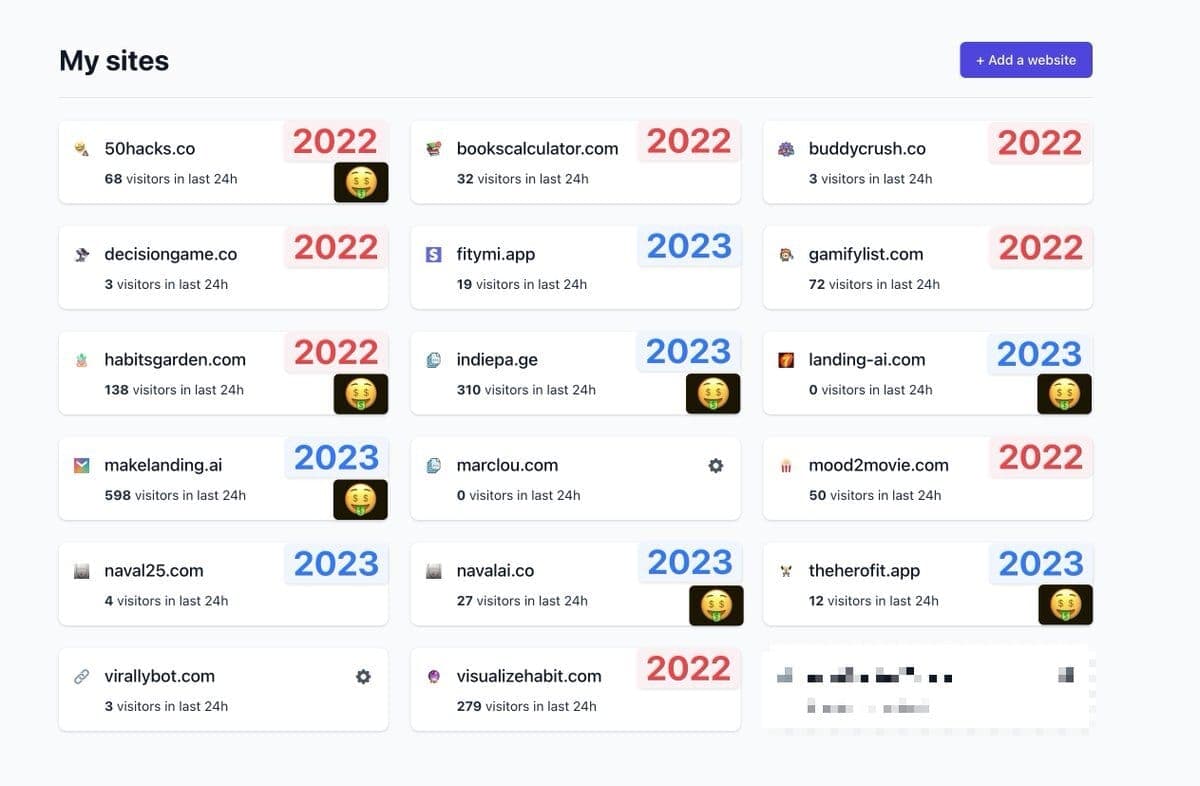
1. IS IT PAINFUL?
I spent a year working full-time on Habits Garden (a gamified habit tracker).
10,000+ accounts and tons of happy users, but it makes less than $400/month.
In comparison, VirallyBot (a marketing tool for escape rooms) generates
$600/month and I haven’t touched it since 2019.
The difference?
* Habits Garden is a vitamin: It’s cool to track habits
* VirallyBot is a painkiller: Escape rooms need marketing
People are much more willing to pay for a product that solves their problems.
* Focus on painkillers to reach profitability faster
* Turn vitamins into painkillers by explaining why your product is a must-have:
Track your habits → Diet habit you won’t quit
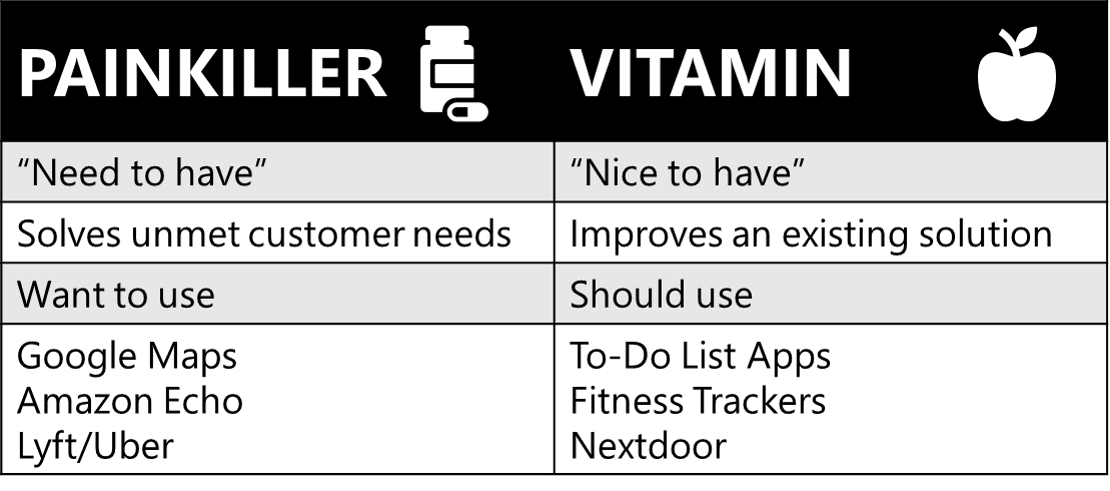
2. WOULD YOU (REALLY) USE IT?
My wife is a Korean teacher. So I typed Korean workbooks in Google and
discovered people were searching for this. 3 weeks later, WorkbookPDF was born
(AI-generated language workbooks).
I launched and made a few bucks. But the product is stuck because I don’t use
it: I have no idea how to write the copy or what features to add.
Validating ideas (i.e. keyword research) is important. But it’s pale in
comparison to actually using the product yourself:
* In the worst case, you improved your life
* Chances are someone needs the product too
* You understand the frustration, your copy will be on point
3. HOW LONG UNTIL LAUNCH?
You’re a solopreneur with limited time, primarily if you work 9 to 5. If it
takes 6 months to build a startup, it’s not a good idea. It will actually take
12 months (overthinking and bugs) and you could burn out and quit.
Instead, think in weeks, and ditch ideas that take longer than a month. You can
also lower your time-to-market:
* Presell a product
* Ditch code testing & dark mode
* Break big ideas into 1-feature-only products
There is no perfect idea. The only way to know is to launch it. This framework
helps you increase the odds of success and get profitable faster.
Part 4 Product
Ditch your subscription
I killed 3 startups because of recurring paymentsThe Subscription Fatigue Era$10/month VS. $100One-time payments alternativeWhen subscriptions make sense
The most popular advice for entrepreneurs is to charge subscriptions. Passive
income and predictable revenue, yes sir!
This is terrible advice.
Here’s why recurring payments are killing your business.
SOLOPRENEUR UPDATE
I spent the last 3 months building a new SaaS… 🥁
Introducing DataFast
https://datafa.st/— the actionable analytics tool for founders who want to grow their startups
with data.

If you try it, I’d love your feedback!
THE SUBSCRIPTION FATIGUE ERA
I killed 3 startups because of recurring payments:
1. IndiePage
https://indiepa.ge/* ✅ It makes $4,000/month on autopilot ($45 for lifetime access).
* ❌ It made $0/month when I priced it at $15/year.
2. MakeLanding
https://makelanding.ai/* ✅ It made $100/day when I launched ($19 per landing page generated).
* ❌ It made $0 with a $5/month subscription.
3. HabitsGarden
https://habitsgarden.com/* ✅ 100% of users chose the $47 lifetime deal.
* ❌ Nobody buys the $5/month plan.

10x the monthly price, but 100% of the sales
Netflix, Spotify, wifi... I spend a few thousand dollars a year on these
services. When I see $19/month, it’s not just $19. It’s $228 a year, on top of
everything else.
Business owners love subscriptions. Customers hate them.
Here’s the invisible cost of charging recurring payments:
* Conversion rate drop: People are reluctant to commit to another subscription,
which triggers objections and hesitation.
* Fighting churn: People lose interest soon after signing up. Instead of a
steady income, you’re constantly replacing customers who cancel.
$10/MONTH VS. $100
Selling a $10/month monthly subscription is as hard as selling a $100 one-time
payment.
Let’s assume you built an excellent SaaS (10% churn = 10% of your customers
cancel at the end of the month).

Imagine you get 100 customers today:
* You’ll earn $7,176 with subscriptions, after 365 days.
* You earn $10,000 with one-time payments, right now.
Subscription doesn’t mean recurring revenue. If you’re working solo, in 99% of
cases you’re better off financially with one-time payments.
ONE-TIME PAYMENTS ALTERNATIVE
Sometimes, your business has recurring costs, and you can’t afford one-time
payments. I’m not talking about bandwidth (that’s negligible) but things like AI
credits or database costs.
Then try credits-based pricing:
* Let your customers pay upfront for what they’ll use. Generate 10 AI photos
for $5.
* Then, add a Good-Better-Best
https://hbr.org/2018/09/the-good-better-best-approach-to-pricingpackage. 100 AI photos for $20 ($.2/photo looks cheap now)
This removes the subscription friction (which boosts your conversion rate) and
helps you avoid constantly fighting churn.
WHEN SUBSCRIPTIONS MAKE SENSE
* B2B: If you’re selling to businesses, subscriptions make sense because the
end goal of any business is to make money.
* Complex credits: When tracking credits is too complex or it’s hard to
quantify what your customers use.
Subscriptions serve a specific purpose. Recurring payment = Recurring value
according to my friend Dan
https://twitter.com/DanKulkovJust because competitors charge recurring payments doesn’t mean you should.
Remember, people are tired of subscriptions, and purchase behavior is changing.
Not charging a subscription can be a competitive edge.
Oh, and entrepreneurs flex on each other with MRR charts. It’s a status game,
don’t fall for it. In the end, the customer is king.
5 startups I built to help you:
1. ShipFast
https://shipfa.st/Ship startups in days, not weeks with the NextJS boilerplate loved by 4,200+
developers.
2. DataFast
https://datafa.st/Grow your startup with actionable data.
3. IndiePage
https://indiepa.ge/Join 7,000+ solopreneurs and showcase your startups.
4. ByeDispute
https://byedispute.com/Don’t get banned from Stripe for 1 chargeback.
5. ZenVoice
https://zenvoice.io/Stripe invoices, without the 0.4% fee.
I earn $1,753/day with this simple tech stack
When I learned to code, I struggled to decide on the right tech stack with all the noise out there. Here's the one I picked and never changed.Front-endBack-endHostingMonitoring Extras
I never change my tech stack.
My 21 products get 250,000 page views per month and generate $1,753 a day using
this simple, non-fancy tech stack:
SOLOPRENEUR UPDATE
I started making 1 YouTube video every Saturday in January 2024. One of my
videos went viral on Tuesday:
* 55,000 views (vs. 5,000 average)
* 7,000 new subscribers (hey 👋)
* My channel got monetized
It was also the 2nd biggest day for ShipFast. I didn’t realize the scale of
YouTube.
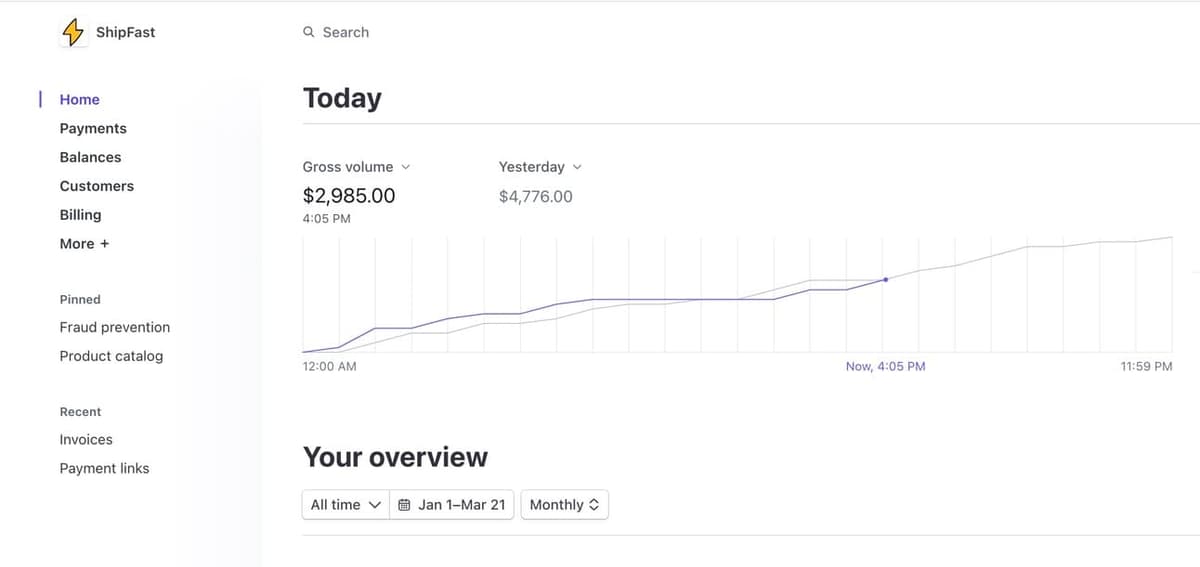
FRONT-END
I use ReactJS, Tailwind CSS, and NextJS.
I also use daisyUI, the awesome Tailwind component library to speed things up.
Design trends give birth to new UI components every day. It’s a distraction for
solopreneurs. daisyUI has 20+ themes and all the components, that’s enough.
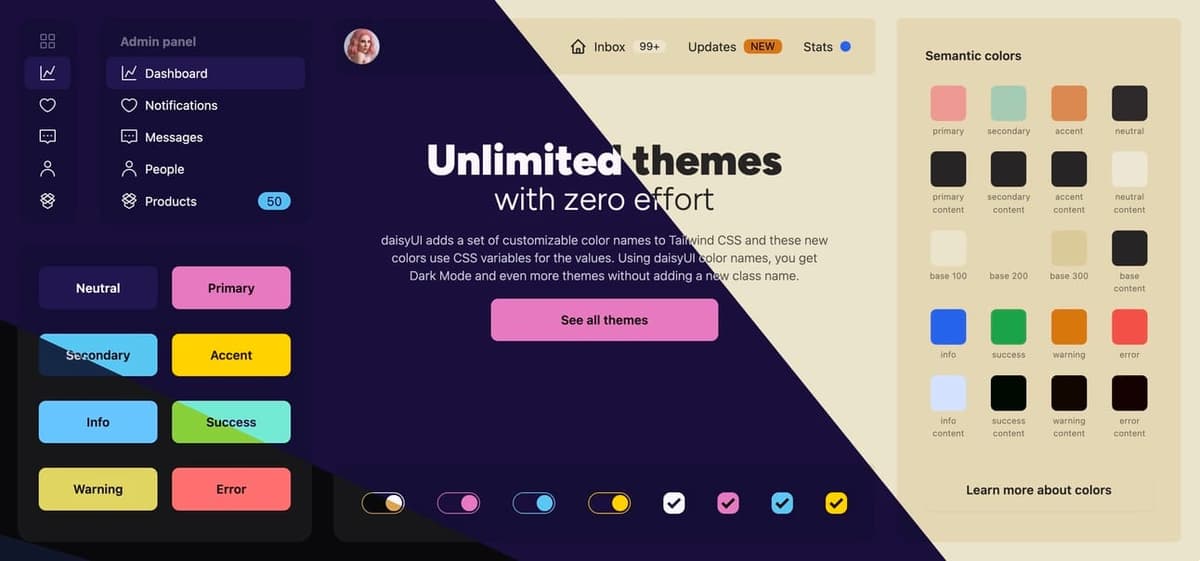
Pick a daisyUI theme, change the font, and your UI is ready.
BACK-END
I use serverless functions by NextJS. I don’t have to install packages or
maintain an OS. I clone a NextJS project and I have a scalable API for my micro
SaaS in seconds.
My database is hosted on MongoDB Atlas. I create a free M0 customer for each new
project and use daily backups ($10/month). I use mongoose on top to simplify
queries.
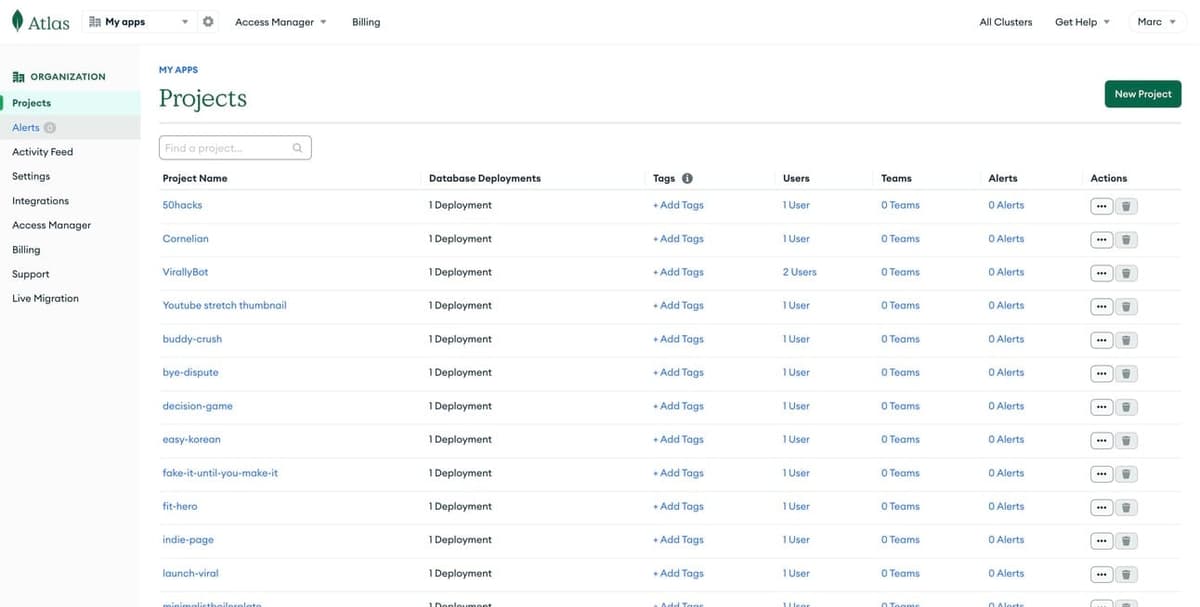
I use NextAuth to authenticate users (private dashboard for instance).
To send emails, I use Mailgun ($4/month). It’s easy and free to start.
Payments are processed via Stripe (3.5%). Getting started is a bit daunting. I
wrote this tutorial to handle subscriptions with Stripe
https://byedispute.com/blog/how-to-code-a-stripe-subscription-model-with-react-and-nextjsHOSTING
I host my 21 apps on Vercel ($20/month). I push changes to a GitHub repo and it
automatically deploys them.
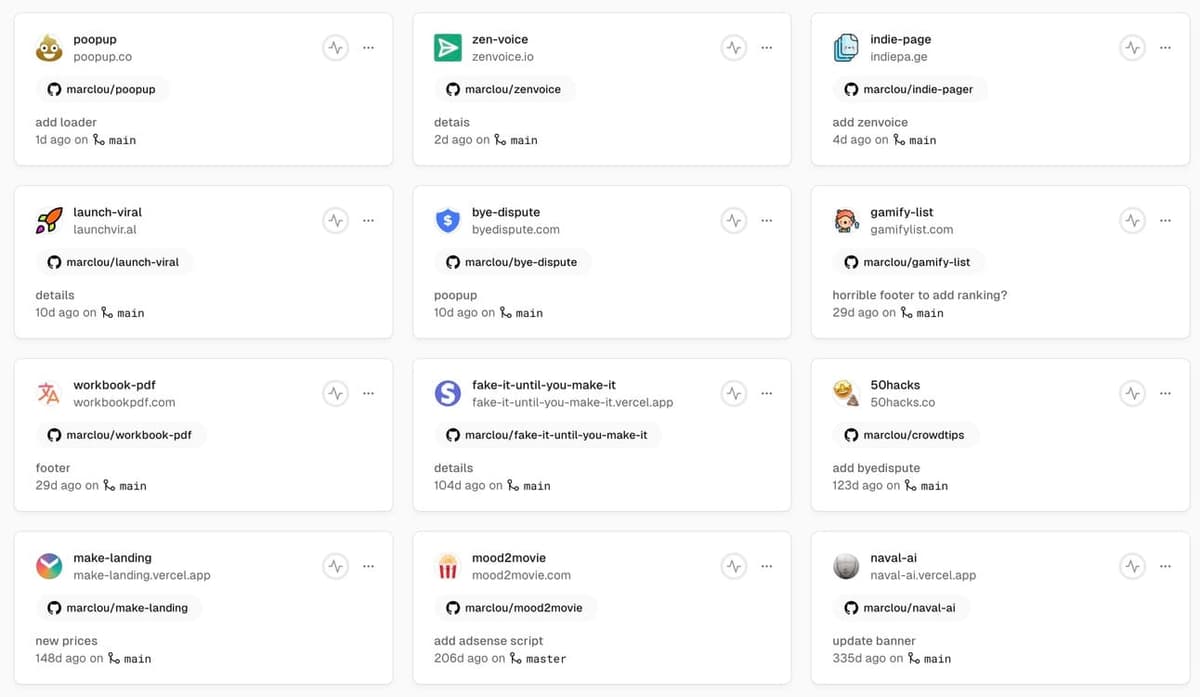
MONITORING
Simple metrics like visitors and pageviews are handled by Plausible ($29/month).
If something goes wrong, I check Vercel deployment logs.
I query the database using relevant filters for advanced monitoring, like split
testing. But I rarely do that.

I add a random split test number to the DB model and query the latest created
users
EXTRAS
I hired a junior developer for $10/month. His name is GitHub Copilot.
Some of my products use AI models like GPT-4. Pricing varies on usage,
currently, I spend ~$20/month.
And if I need specific features, like image hosting or a CDN, I use AWS
(1$/month)
When I learned to code, I struggled to decide on the right tech stack with all
the noise out there.
Tech stack doesn’t matter. Pick one and stick to it. You’ll get comfortable and
ship much faster.
How I built 21 products in 2 years
Speed is solopreneurs' best friend. Here is how to get ideas and build them fast.An idea, quickThe 24-hour startup
2017: I spent a year building a startup that made $0.
2023: I launched 10 products and made $263,000.
Speed is solopreneurs' best friend. Here is how to get ideas and build them
fast.
BUILD-IN-PUBLIC UPDATE
8 YouTube lives later, the micro startup is done!
Next week, I’ll stream the launch on Product Hunt, Twitter, Hacker News, etc.
Subscribe here to get notified
https://youtube.com/@marc-louso you don’t miss it 🤩

AN IDEA, QUICK
The most successful products were built by solopreneurs scratching their itches.
Pieter Levels building NomadList while traveling the world is a great example.
There are tons of existing problems gravitating around you. Build a habit of
looking around. If you’re working 9/5, it’s the best place to explore. Search
for experiences that bother you. Or knowledge you wish you had.
If nothing comes, start something new. Try a new sport, start a new daily
routine, or acquire new skills. You can also solve universal problems:
Businesses want more revenue, and people want to be more productive. Finally,
you can upgrade a product you or your friends are using.
When you get started, ideas don’t matter. Building them does. You’ll discover
real problems and get tons of promising ideas.
THE 24-HOUR STARTUP
My 2017 startup failure went like this: I threw away all the code, quit my
girlfriend, and moved to a new country.
The more time invested, the higher the expectations. In the tough world of
entrepreneurship where expectations are rarely met, spending months on a product
is a recipe for burnout.
Every startup has a 24-hour version: Airbnb is a spreadsheet, and Instagram is a
Google Drive.
Find yours. Remove all non-critical features. Spend a week or two building.
Write a good headline and ship with a buy button.
Building a successful startup is a repetition of tiny failures.
Be comfortable being imperfect. Take action. Now is a good time to write some
code.
How to get customers with free tool marketing
Grow your micro SaaS or AI tool, and fulfill your inner builderFree tool marketing How to find ideas2 key factors to get paying users
I never enjoyed marketing.
But I’d never earn $50K/month without doing some kind of marketing.
I found a better alternative by making free tools that fulfill my inner builder.
Estimated reading time: 4 min 13 sec
BUILD-IN-PUBLIC UPDATE
My free logo maker —LogoFast— was nominated for the Product Hunt Golden Kitty
Awards 2023
https://www.producthunt.com/golden-kitty-awards/bootstrapped-small-teamsIf you liked it, I’d love your support!

FREE TOOL MARKETING
I am a developer and I love building apps. But I also need marketing to pay the
bills.
Free tool marketing is symbiosis.
It consists of launching free and viral mini-apps to promote your main startup.

AI Tweet Generator (free) by Tweet Hunter (paid)
Free tool marketing works because:
* It expands your audience to a wider market.
* You rank for new SEO keywords.
* It’s sharable so people spread the word on TikTok, for instance.
* You grow an audience by launching often.
* It creates a good first impression to warm up potential customers.
* Your inner builder is motivated to work.

User Persona went viral on TikTok adding 226% revenue for MakerBox
Some guidelines for the best results:
* The app must be free, that’s how you create a viral loop.
* One feature is enough. It must be super simple.
* The name should tell exactly what the app does. That’s how people remember
and search on Google.
* The experience must start on the homepage. Visitors shouldn’t sign up or
click links.
* The app can be hosted on your main website, but it’s best to give it a
dedicated domain.

LogoFa.st
http://LogoFa.stis also hosted on ShipFa.st/tools/logo-fast
http://ShipFa.st/tools/logo-fastThe canonical URL points to the latter to boost the main site’s domain
authority.
Other marketing channels to get customers and grow your micro startup:
* Launch on Reddit
https://marclou.beehiiv.com/p/how-to-launch-a-startup-on-reddit* Launch on Hacker News
https://marclou.beehiiv.com/p/how-to-launch-a-startup-on-hacker-news* Launch on Product Hunt
https://marclou.beehiiv.com/p/how-to-launch-a-startup-on-product-hunt* Programmatic SEO
https://marclou.beehiiv.com/p/how-to-grow-a-micro-startup-with-programmatic-seoHOW TO FIND IDEAS
Take a standalone feature of your main startup and make a free version of it.
This works well if you already have traction because you know people need that
feature.
It’s also a good strategy to validate potential features. Instead of cluttering
your main product, launch a standalone feature as a free tool.
You’ll get more traffic, and you can still add the feature later if the market
validates it.

Ahrefs’s domain authority checker feature is also available in their paid plan
Another strategy consists of getting into your customer’s journey and thinking
about what they’ll need before using your product.

After realizing it’s possible to read 19 books a year with a 15-minute daily
habit, people might want to sign up for a habit tracker
2 KEY FACTORS TO GET PAYING USERS
#1 — PROMOTE YOUR STARTUP IN A SEAMLESS WAY
The simplest way to convert traffic from your free tools is to advertise your
startup. A simple ad placement can get up to 10% Click-Through-Rate.
You can pump these numbers up when the free tool seamlessly embeds into your
customer’s journey, so the promotion feels like an extension of your free tool.

This is a free tool to show how much can be achieved in a year with tiny habits.
It automatically imports the habits when the user signs up for the habit
tracker. The conversion rate is 30% (traffic on the free tool to traffic on the
habit tracker)
Alternatively, you can collect emails and market through a follow-up sequence.
#2 — LAUNCH, PROFIT, REPEAT.
With free tools marketing, it’s common to get media coverage and go viral on
TikTok thanks to the embedded virality.
Launch everywhere. Hacker News
https://marclou.beehiiv.com/p/how-to-launch-a-startup-on-hacker-news, Reddithttps://marclou.beehiiv.com/p/how-to-launch-a-startup-on-reddit, Twitter,Product Hunt
https://marclou.beehiiv.com/p/how-to-launch-a-startup-on-product-hunt. Themore noise you make, the higher the revenue.
I launched 7 free tools in a year. Thanks to viral launch videos
https://launchvir.al/each product goes viral on 𝕏, gets a Product Hunt badge, and is reshared on
other social media.

Once you’ve launched, move on to the next free tool.
Each launch will make more noise, increase your daily traffic, and grow your
startup — while keeping your inner builder satisfied.
3 profitable alternatives to free plans
Free users slow solopreneurs down. Avoid freemium and get paid for your work to reach financial independence faster.A free plan is a bad idea disguised as an opportunity. Alternative 1: Free creditsAlternative 2: Free trial with credit card and auto-subscription Alternative 3: Free tools
I recently received messages from solopreneurs making their first $1 online
after removing free plans.
If you think you need one, here are 3 alternatives to become profitable faster.
Estimated reading time: 3 min 43 sec
BUILDING IN PUBLIC UPDATE
I just came back to Bali after 3 weeks in France.
During the holidays, my startups made $2,000 every day. This would have been
unbelievable a year ago.
2024 is yours. Keep grinding!
A FREE PLAN IS A BAD IDEA DISGUISED AS AN OPPORTUNITY.
Only 3% of free users will convert to paid users
https://marclou.beehiiv.com/p/ditch-your-free-plan.To make $5,000 with a $20 plan, you’ll need 8,250 users (100K visitors). Let
that sink in.
BUT FREE USERS SPREAD THE WORD…
If someone refuses to pay for your product, they won’t tell their friends about
it.
Less than 3% of customers of my $50K/month product
https://shipfa.stspread the word. And they spent a few hundred $ on the product, worked with it
for hours, and made their $1 online.
Free users testing the water won’t become your marketers. They won’t give you a
backlink either.
BUT PEOPLE WON’T PAY IF THEY CAN’T TRY MY PRODUCT…
Then the problem is probably your landing page copy. It’s either unclear or not
speaking to your customers’ emotions.
Bannerbear by @yongfook
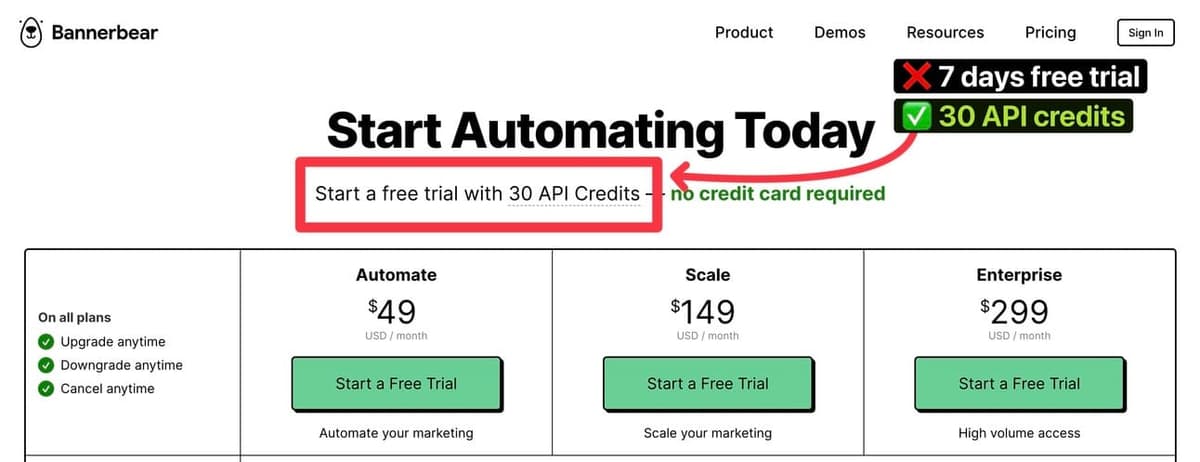
Bannerbear by @yongfook
ALTERNATIVE 1: FREE CREDITS
If your product requires significant time investment for customers, like
API-as-a-service, offer limited free credits to test it out.
The user should understand the core of your product without being able to
benefit from it.
For instance, it’s free to create a profile on my startup IndiePage
https://indiepa.geUsers pay to deploy their page to show it to others (the real value).
ALTERNATIVE 2: FREE TRIAL WITH CREDIT CARD AND AUTO-SUBSCRIPTION
If your product isn’t a painkiller and adds value over time, you can try free
trials.
* Maximum 7 days
* The user must add a credit card
* Subscription starts automatically
You want users to commit. An email isn’t a commitment. A credit card is.
Ahrefs free keyword research tool
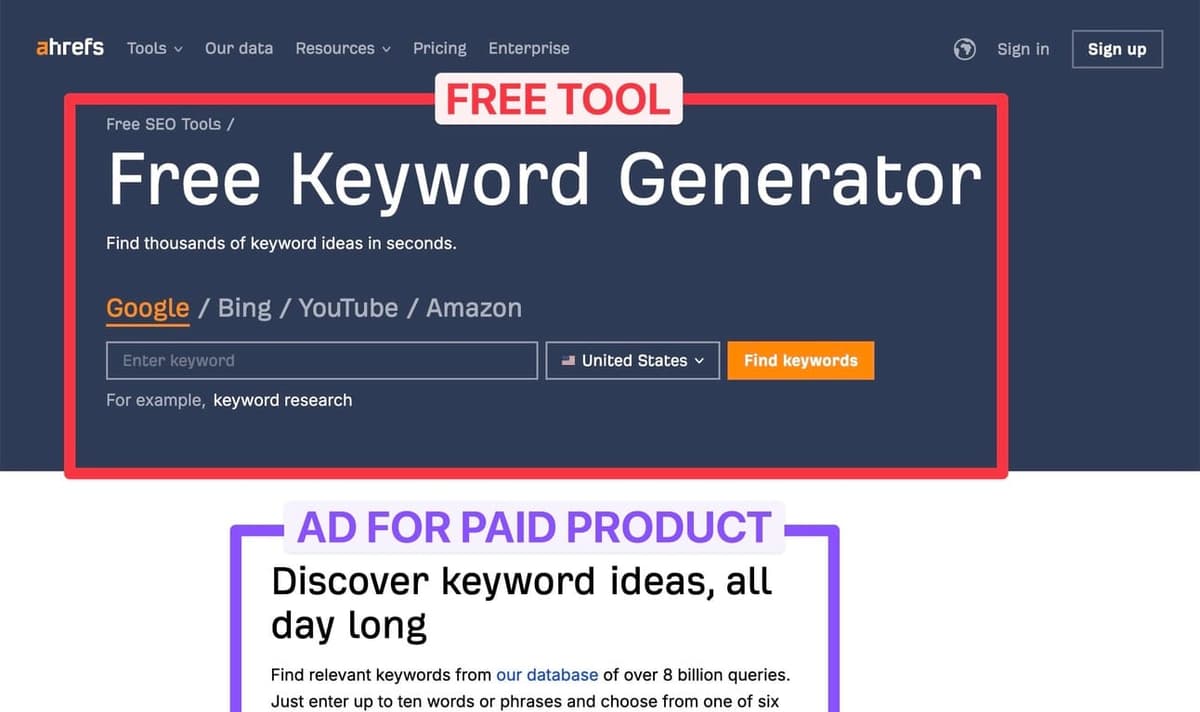
Ahrefs free keyword research tool
ALTERNATIVE 3: FREE TOOLS
If a standalone feature of your startup is sharable but not worth paying for,
turn it into a free tool.
Ahref gets tons of traffic from their free SEO keyword research tool. I also
added +25% daily traffic to ShipFast thanks to LogoFast
https://logofa.stFree tools help you make some noise by launching on Reddit
https://marclou.beehiiv.com/p/how-to-launch-a-startup-on-reddit, Product Hunt,Twitter, etc. For best results, let users try them without signing up.
AI wrappers are trendy and easy free tools to launch. My friend Dan doubled its
revenue in 2023 thanks to them. He documented everything in his new course
https://www.makerbox.club/ai-wrapper-courseFree users slow solopreneurs down.
Avoid freemium and get paid for your work to get profitable faster.
7 lessons from building 9 startups in 2023
1. Don't marry your idea 2. Ditch free plans 3. Subscriptions headache is real 4. Swap vitamins for painkillers 5. Emotions sell 6.First impressions matter 7. Food + Sleep + Workout = Psychiatrist1. Don’t marry your idea2. Ditch free plans3. Subscriptions headache is real4. Swap vitamins for painkillers 5. Emotions sell6. First impressions matter7. Food + Sleep + Workout = Psychiatrist
I was lucky in 2023 — my income jumped from $1,500 in January, to $65,000 in
November.
But the real outcome was the knowledge I acquired.
Here are 7 lessons I wish I knew when I started the solopreneur journey.
Estimated reading time: 2 min 36 sec
BUILDING IN PUBLIC UPDATE
My logo maker LogoFast
https://logofa.st/got the full awards from Product Hunt 🤩
Less time designing, more time shipping!

1. DON’T MARRY YOUR IDEA
Out of the 20+ startups I launched, only 1 made good money and grew.
It’s the same pattern for most solopreneurs who made life-changing money.
When it’s time to focus on your startup, you’ll know.
2. DITCH FREE PLANS
Only 3% of users upgrade to paid plans
https://marclou.beehiiv.com/p/ditch-your-free-plan.You need 10,000 users to make $3,000 ($10/mo subscription). That’s an insane
amount of work for a solopreneur.
“Grow first, monetize later” is for VC-backed startups.
3. SUBSCRIPTIONS HEADACHE IS REAL
I killed a startup by swapping one-time payments for recurring ones.
Monthly passive income is good for business owners only. Users are much more
reluctant to subscriptions.
Start with one-time payments. Add subscriptions if there’s a demand.
4. SWAP VITAMINS FOR PAINKILLERS
100,000 visitors on my nice-to-have product website made $6,000.
100,000 visitors on my must-have product website made $100,000.
Unless you have an audience, avoid note-taking apps or habit trackers. People
buy solutions to painful problems.
5. EMOTIONS SELL
Few care about a NextJS boilerplate. But many care about a shortcut to ship
startups faster and reach financial independence.
Rephrase your copy to trigger an emotional reaction.
6. FIRST IMPRESSIONS MATTER
In our digital world, it’s the headline of your website, the thumbnail of your
YouTube video, or the first sentence of your tweet.
That one sentence has more impact on your conversion rate than anything else.
7. FOOD + SLEEP + WORKOUT = PSYCHIATRIST
As a solopreneur, you’re wearing 10 hats (developer + copywriter + accountant…).
Burnout is around the corner.
* Eat healthy, avoid carbs, quit sugar and alcohol
* Exercise daily, even if it’s an easy 15-minute workout
* Make sleep your #1 priority. Sleep at the same time every day in a dark room
at 18°. Don’t drink coffee 10 hours before bed, don’t drink water 3 hours
before bed, dim lights 1 hour before bed.
Ditch your free plan
3% of users upgrade to paid plans. So If you have a $5/month plan, your average user is worth $0.15.“Grow first, monetize later”Why the most successful solopreneurs don’t do free plansRemoving free plans is removing pain
Hey, it’s Marc. Last week, my solopreneur journey hit an all-time high:
* 5,000 readers on this newsletter (thank you)
* 50,000 followers on 𝕏
* $100,000 of revenue in 2.5 months for ShipFast
Most of the recent growth can be attributed to removing free plans. I was
skeptical at first.
Estimated reading time: 3 min 23 sec
BUILDING IN PUBLIC UPDATE
I sold my AI landing page generator (MakeLanding) for $35,000 🎉
It’s my 3rd startup sale this year.
I wrote about the process and how it could change your life
https://marclou.beehiiv.com/p/how-to-sell-your-micro-startup.“GROW FIRST, MONETIZE LATER”
Facebook, Spotify… All the startup success stories we’ve heard started in the
same fashion: Get millions of users then make money.
But as solopreneurs who value freedom over unicorns. We won’t raise money and
hire a team of growth hackers.
We operate with fewer resources and there’s a major downside.
WHY THE MOST SUCCESSFUL SOLOPRENEURS DON’T DO FREE PLANS
140,000 visitors on my (recently sold) habit tracker made $6,000 in 1.5 years.
Here’s the red pill:
3% of users upgrade to paid plans. So If you have a $5/month plan, your average
user is worth $0.15.
If you need $3,000/month to sustain your lifestyle, you need 20,000 new users
per month or 150,000 monthly visitors.
For a solopreneur who deals with everything from tax to bugs, this is an insane
amount of work.
My friend Dan
https://twitter.com/DanKulkovgave me the red pill in 2022. I wish I’d have taken it earlier. It’s not that
bad.
REMOVING FREE PLANS IS REMOVING PAIN
As a developer, I struggled to ask for money. But here’s why I removed free
plans from all my startups:
1. Better users: Paid users are skin-in-the-game. They give you the right
feedback you need to grow your startups.
2. More motivation: There’s a magical thing about making money: it’s exciting
and helps you focus on work.
3. Sustainable: Free users won’t pay the rent. I lived with $1,000/month for 5
years and had to say no to dinners because I couldn’t afford them.
If you want to be profitable a solopreneur, consider ditching your free plan and
adding a paywall to your startups.
Build your micro SaaS in 24 hours
A guide for product-obsessed developers to build a minimum viable startup in days, not weeksThe hard truthEvery startup has a 24-hour version What’s enough for a minimal MVP?What you should ditch:
When I believed I was Mark Zuckerberg in 2017, I spent a year building a startup
that got 0 users.
20+ startups later and countless months spent on useless features, I can
confidently say this: We overthink startups.
Here’s how to launch in weeks, not months.
Estimated reading time: 3 min 48 sec

BUILDING IN PUBLIC UPDATE
Handling Stripe subscription events is a real headache… So I made it as easy as
a pie with ShipFast!
Add a react component and the boilerplate takes care of everything from creating
a checkout to providing or revoking access to your service.
Don’t spend weeks on your SaaS, it’s available now.
http://shipfa.st/THE HARD TRUTH
Let’s say you’re getting started and just launched your startup on Product Hunt.
1,000 visitors. Pretty cool! 900 will read your headline, 500 will scroll past
the first section, 50 will sign up, and 5 will pay to use your app.
That is a 0.5% conversion rate, which is optimistic for a first startup.
Spending 3 days on a password recovery form wasn’t probably worth your time…
Most of your efforts have 0 financial outcome—that’s entrepreneurship. Spending
months on a startup that will get 5 users and $100 in revenue is a recipe for
burnout (I was there in 2021). Shipping minimal MVP in weeks is an alternative
for mental well-being and financial success.
EVERY STARTUP HAS A 24-HOUR VERSION
* Airbnb is a spreadsheet
* Instagram is a Google Drive
* McDonald’s is a pop-up store
I’m not saying you should launch a scrappy product in a day (the
product-obsessed developer inside of you will resist anyway, I am the same).
But there’s a version of your startup that can be published within 24 hours.
What does it look like?
Start from that baseline and only add the bare minimum to get your minimal MVP
in days.
WHAT’S ENOUGH FOR A MINIMAL MVP?
A headline, a buy button, and 1 feature.
Your headline is the most important. It’s like the thumbnail of a YouTube video:
people will decide to invest their precious time on your site based on that
sentence. I wrote about how to make memorable headlines
https://marclou.beehiiv.com/p/how-to-write-a-landing-page-that-converts.You can only validate an idea if people pay for it. A waitlist isn’t enough.
Your minimal MVP should have a buy button.
Finally, the feature should solve the most painful customer’s problem. If that
feature requires smaller features, it’s OK. But don’t overthink it.
WHAT YOU SHOULD DITCH:
* Anything that’s invisible to the customer: Code testing, git branches, new
frameworks
* Anything that doesn’t add direct value to the customer: Forgotten password,
dark mode, a professional logo
* Any secondary features.
Shipping startups fast isn’t about working 12 hours a day. It’s about removing
noise. Ship minimalist. Be comfortable being imperfect.
How to name a startup
The first impression matters. Let’s talk about making up an unforgettable name people will search on Google.
This newsletter is written 30,000 feet in the air—I’m going to Taiwan.
I used to spend days brainstorming for a startup name, to finally come up with
something nobody understood…
Let’s talk about making up an unforgettable name. First impression matters.
Estimated reading time: 3 min 09 sec

Here are 3 common ways to name a startup:
1. A super easy and short name—like Stripe or Butter. ChatGPT is good at making
them.
2. SEO-oriented names—like HeadshotPro.
3. Benefit-oriented names—like NomadList or Tweet Hunter.
Let’s focus on the last one. It’s the easiest way to be memorable as a
solopreneur with limited resources. The name is usually made of 2 short words.
One word should be super relatable to your customers. Speak a language they use
and understand.
* Tweet Hunter is for professionals on Twitter
* ShipFast is for indie makers
* OurBabyAI is for couples
The other word should signal a change in your customer’s life. It shouldn’t be
about your product at all. Why is your product useful? How will it change my
life?
* ShipFast: Finally launch that side project
* CleanShotX: Take beautiful screenshots with no skills
* NomadList: Go nomad, change your life

Now you have 2 words, find 5 short synonyms for each. Quick? Fast. Launch? Ship.
When you have 2 lists of 5 synonyms, ask ChatGPT to create all combinations.
Remove combinations that are over 10 words. Keep it simple.
Pick your 3 favorites and send them to a few friends: “What’s your favorite?”
Their answers don’t matter, yet. After 24 hours, remove your messages from the
chat and ask “Which one do you remember?” Your new startup name is the most
remembered. That’s it!
Don’t spend too much time on this. A name won’t make a startup. Pick one, and
start building!
How to sell your micro startup
Your weekend project can change your life. Let’s talk about what it’s worth and how to sell it.Valuation Is it time to sell?The acquisition process How to transfer the assetsTips to sell faster
Hey, it’s Marc
Until last year, I believed a $300 MRR startup was worth nothing. I was so
wrong….
Your weekend project can change your life. Let’s talk about what it’s worth and
how to sell it.
Estimated reading time: 4 min 42 sec
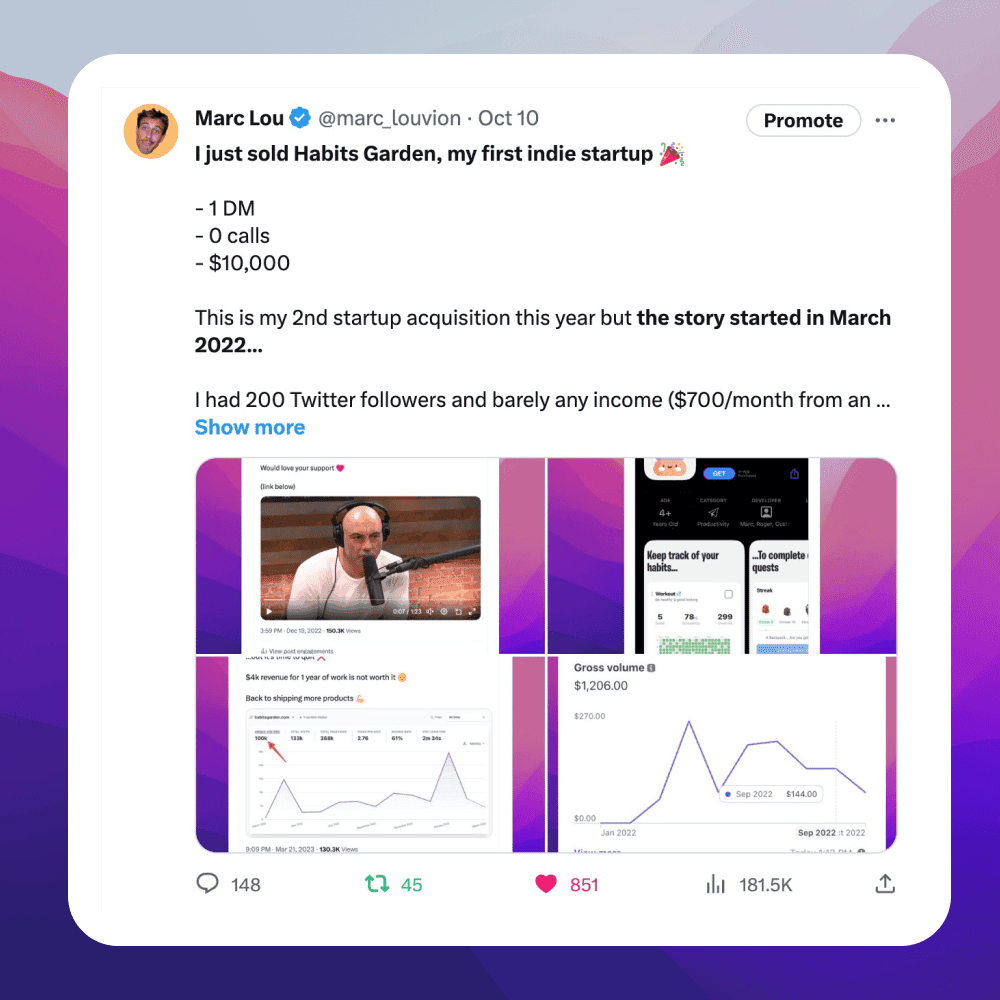
BUILDING IN PUBLIC UPDATE
10 days ago, I sold my second startup Habits Garden for $10,000. I flew to
Bangkok and bought a monitor for my laptop.
I wrote about the 1-year journey from idea to selling in public
https://x.com/marc_louvion/status/1711738505934856418Back in March 2023, I sold my first startup called GameWidget: $80 MRR for
$4,300. I flew to Singapore and bought a laptop. Coincidence?
VALUATION
Startup valuation can be very complicated. I’m going to assume we’re alike:
* You’re a solopreneur or have a co-founder
* Building software, AI tools, or mobile apps (no info products)
* Shooting for 5/6/7 figures valuation (no unicorn)
* Low operating cost (hosting, OpenAI credits, etc.)
Here’s the over-simplified formula to calculate your project worth:
Valuation = Annualised Revenue x 3
Let’s take a few examples.
* A habits tracker with $300 MRR could be sold for $10,800 (300x12x3)
* A logo maker with AI launched 3 months ago and made $4,000 so far could be
sold for $12,000 (4,000x3)
Note that Monthly Recurring Revenue (MRR) can be extrapolated to a year for the
habit tracker but the one-time payments for the logo maker with AI can’t.
You can dive deeper into startup valuation. I don’t. It gets overwhelming and
gaining 5% here or there isn’t worth the hustle. I’d rather build more apps.
Imagine you grow a weekend project to $1,000 MRR… You have a 2-year pass to quit
your job, move to Bali, and build apps full-time. Congrats!
IS IT TIME TO SELL?
It’s a tough question. For me, it comes down to 3 criteria:
* Can I 10x the revenue in a year?
* Do I care about the market?
* Do I need money right now?
It’s tempting to enjoy a juicy $500 recurring revenue. But keep in mind that
every abandoned business goes to 0 quickly.
When you sell a startup, you get temporary financial freedom (and less stress)
along with more time to focus on a new project.
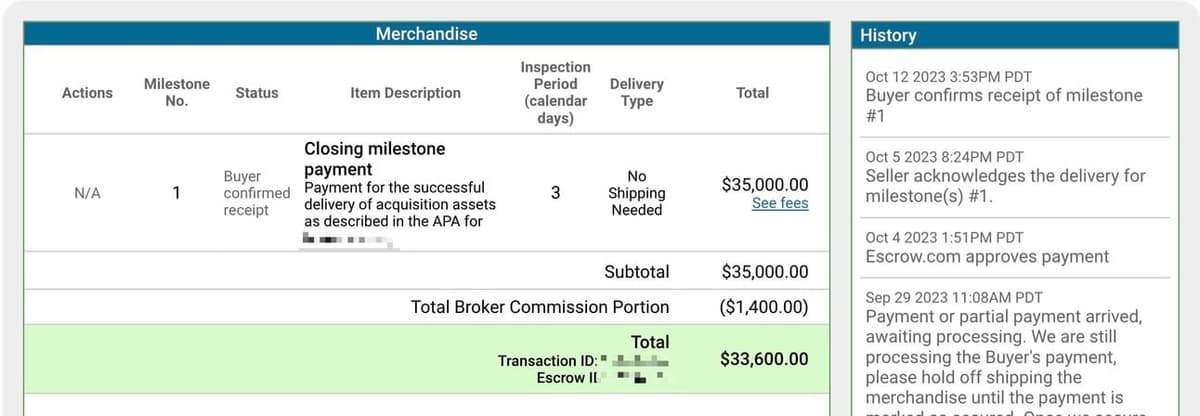
THE ACQUISITION PROCESS
You made up your mind, listed your startup, and got interested buyers. What’s
going to happen if someone decides to buy?
1. PAPERWORK
First, you’ll do boring paperwork like signing a Letter Of Intent (LOI) and an
Asset Purchase Agreement (APA). The latter is a summary of what’s going to be
bought, like your Intellectual Property (IP), marketing assets (like a Facebook
page), etc. You might also sign a non-compete agreement. Just make sure it’s not
too broad and allows you to build apps you care about.
Platforms like Acquire will do the paperwork for you. You don’t have to read 20
pages of boredness, ask ChatGPT to explain like I’m 5 to make sure you know what
you’re signing. If you don’t use Acquire, ChatGPT is also really good at making
the paperwork for you.
2. PAYMENT
Second, the buyer will secure a payment through a third party like Escrow. Once
the money is secured, you have to send the assets to the buyer.
3. TRANSFER
Lastly, transfer the domain name, database, credentials, etc (more on that
below). The buyer will inspect everything and tell Escrow to move forward with
payment. Congrats, you got acquired!
HOW TO TRANSFER THE ASSETS
Some platforms don’t allow you to transfer assets. For instance, you can’t
transfer an AWS S3 bucket, a Mailgun email-sending domain, or a Google Cloud
Console project.
Should you give your credentials and move on? I wouldn’t.
Chances are you use these platforms for other projects and sending your
credentials isn’t an option. In that case, explain it to the buyer and ask
him/her to create his own account/API keys.
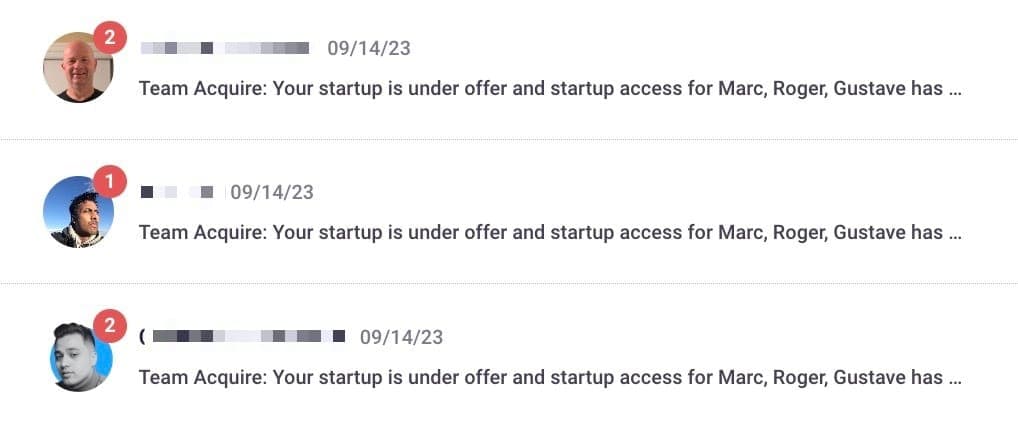
TIPS TO SELL FASTER
* Ditch buyers asking a million questions. If they’re highly skeptical, they
won’t buy and you’re losing your time
* It all comes down to trust so build your startups in public: you don’t know
it yet but potential buyers are following you and can wire the money to your
bank account without asking much (that was the case when I sold Habits
Garden). You also save the platforms’ listing fee (4% on Acquire, for
instance)
* Don’t be afraid to follow up and tell buyers you need an answer within 3
days.
* If you’re selling on Acquire, ensure your listing is 100% ready before
publishing. All buyers on the platform will be notified within 24 hours when
most opportunities land.
* If you’re selling on Acquire and no one is interested after a month, lower
your price a bit. Acquire tends to lift your listing up when significant
edits are made.
Selling your side project can give you the mental clarity to work harder on your
solopreneurship journey. Dive in!
How to validate a startup idea?
Picking the right startup to be profitable is a skill. Here is my 3-step framework.1. Is it painful?2. Would you (really) use it?3. How long until launch?
Hey—it’s Marc,
In 2022, 25% of my startups made money.
In 2023, 71% of my startups made money.
The last issue was about finding ideas
https://marclou.beehiiv.com/p/how-to-find-startup-ideas.This issue is about picking the right one.
Estimated reading time: 2 min 16 sec

1. IS IT PAINFUL?
I spent a year working full-time on Habits Garden (a gamified habit tracker).
10,000+ accounts and tons of happy users, but it makes less than $400/month.
In comparison, VirallyBot (a marketing tool for escape rooms) generates
$600/month and I haven’t touched it since 2019.
The difference?
* Habits Garden is a vitamin: It’s cool to track habits
* VirallyBot is a painkiller: Escape rooms need marketing
People are much more willing to pay for a product that solves their problems.
* Focus on painkillers to reach profitability faster
* Turn vitamins into painkillers by explaining why your product is a must-have:
Track your habits → Diet habit you won’t quit

2. WOULD YOU (REALLY) USE IT?
My wife is a Korean teacher. So I typed Korean workbooks in Google and
discovered people were searching for this. 3 weeks later, WorkbookPDF was born
(AI-generated language workbooks).
I launched and made a few bucks. But the product is stuck because I don’t use
it: I have no idea how to write the copy or what features to add.
Validating ideas (i.e. keyword research) is important. But it’s pale in
comparison to actually using the product yourself:
* In the worst case, you improved your life
* Chances are someone needs the product too
* You understand the frustration, your copy will be on point
3. HOW LONG UNTIL LAUNCH?
You’re a solopreneur with limited time, primarily if you work 9 to 5. If it
takes 6 months to build a startup, it’s not a good idea. It will actually take
12 months (overthinking and bugs) and you could burn out and quit.
Instead, think in weeks, and ditch ideas that take longer than a month. You can
also lower your time-to-market:
* Presell a product
* Ditch code testing & dark mode
* Break big ideas into 1-feature-only products
There is no perfect idea. The only way to know is to launch it. This framework
helps you increase the odds of success and get profitable faster.
Part 5 Design
Design beautiful websites to sell your product — Spacing
Forget creativity, design is about rules. Here’s there 80/20.Use the 4 points grid systemUse limited constraintsLet it breathe
07:23 am. Bali is windy. The surf session will wait until tomorrow.
We’ve covered headline
https://marclou.beehiiv.com/p/design-beautiful-headlines-to-sell-your-micro-saasand paragraph
https://marclou.beehiiv.com/p/design-text-paragraphs-to-sell-your-micro-saasUI design. Let’s combine them with spacing.
SOLOPRENEUR UPDATE
I launched IndiePage Leaderboards
https://indiepa.ge/leaderboardto gamify startups.
The number of solopreneurs crushing it blows me away 🤯
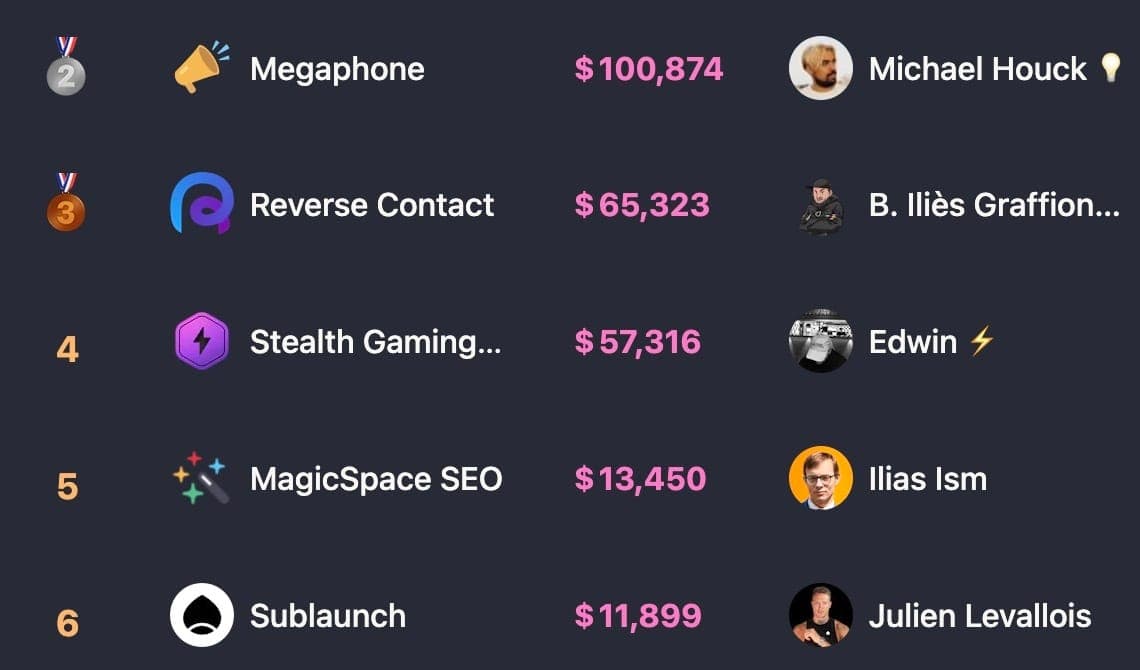
Last 30 days of revenue — verified with Stripe and updated every 12 hours
Lighter than text, but more powerful than words.
Spacing in UI design refers to the use of empty space between elements to
enhance readability, visual hierarchy, and overall user experience.
Place a button too close to the headline and you confuse users. Luckily, you can
be a wizard with these 3 rules:
USE THE 4 POINTS GRID SYSTEM
Every space (margin or padding) between elements (text, button, image, section)
should be divisible by 4.
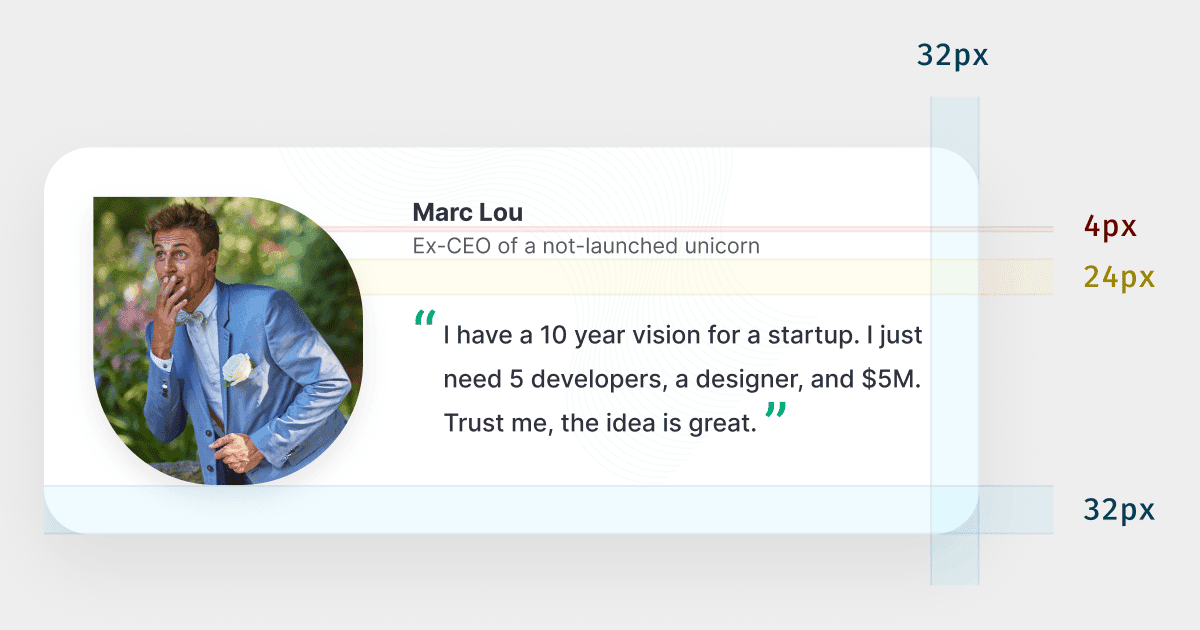
4px, 16px, 48px
It helps users understand how components relate to each other. And it’s a
shortcut to designing faster
USE LIMITED CONSTRAINTS
Spacing is semantic. The distance between UI elements explains their
relationships.
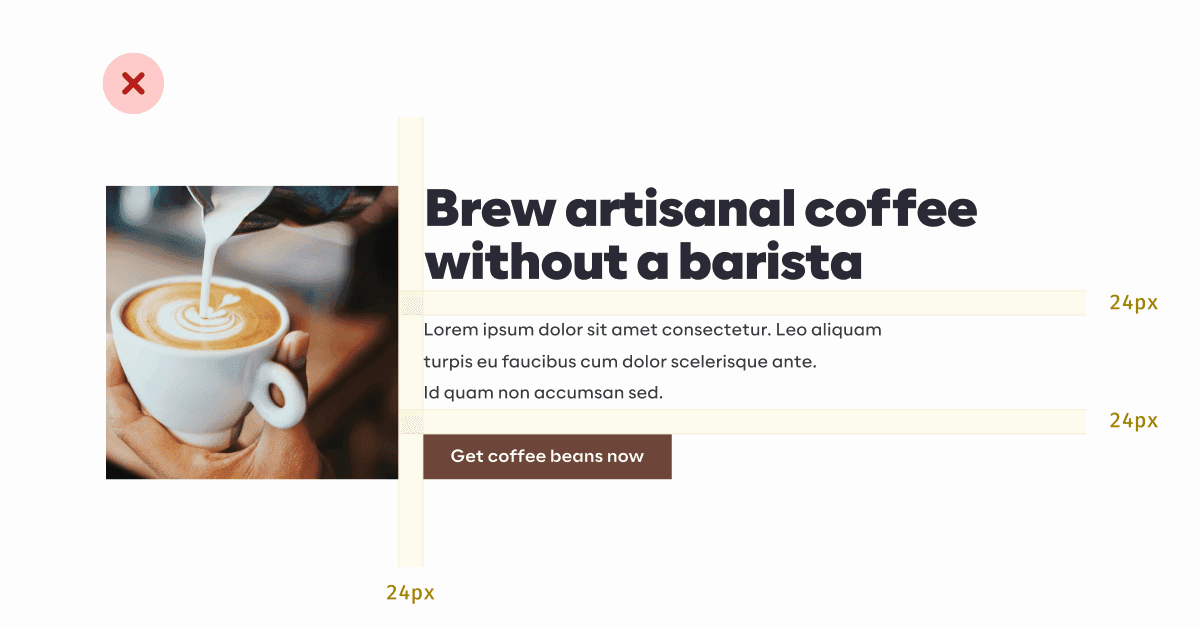
A headline and a paragraph should be close to each other because the latter
explains the former. The illustration, however, should sit farther away from the
text block.
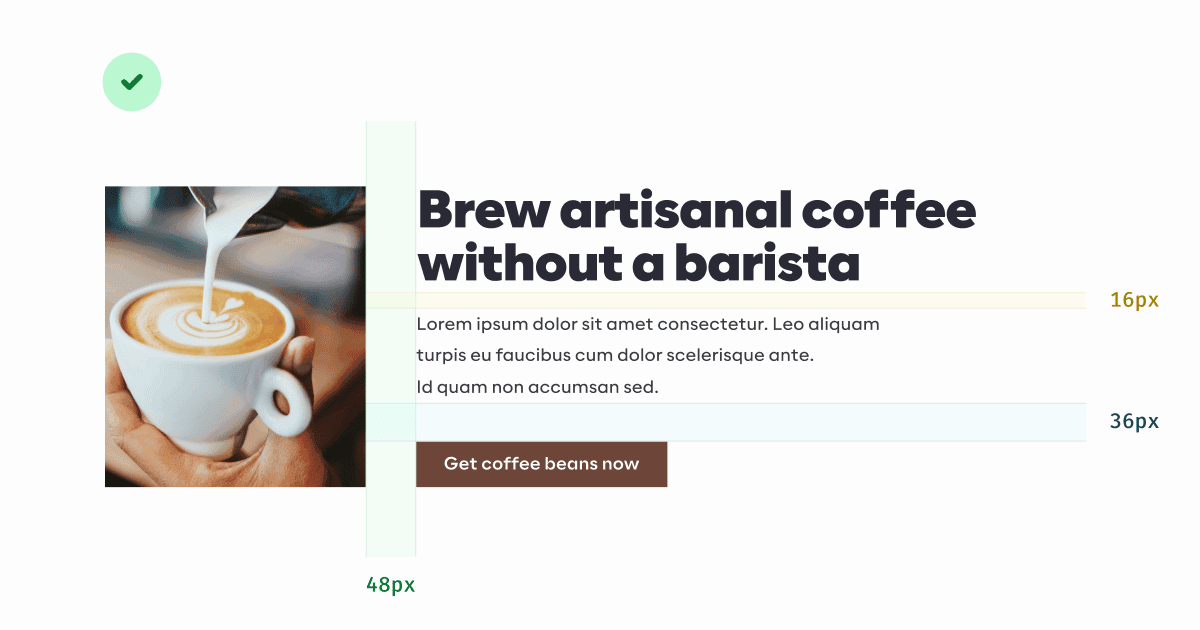
To help users create relationships between elements, we need rules:
* Paragraph to headline: 16px
* Button to text block: 32px
* Image to text block: 48px
* Section to section: 256px
Define your rules before coding. 5 to 6 maximum. Use them across all the landing
page for clarity.
LET IT BREATHE
When the UI is cramped, users get confused and leave.
If in doubt, add too much empty space.
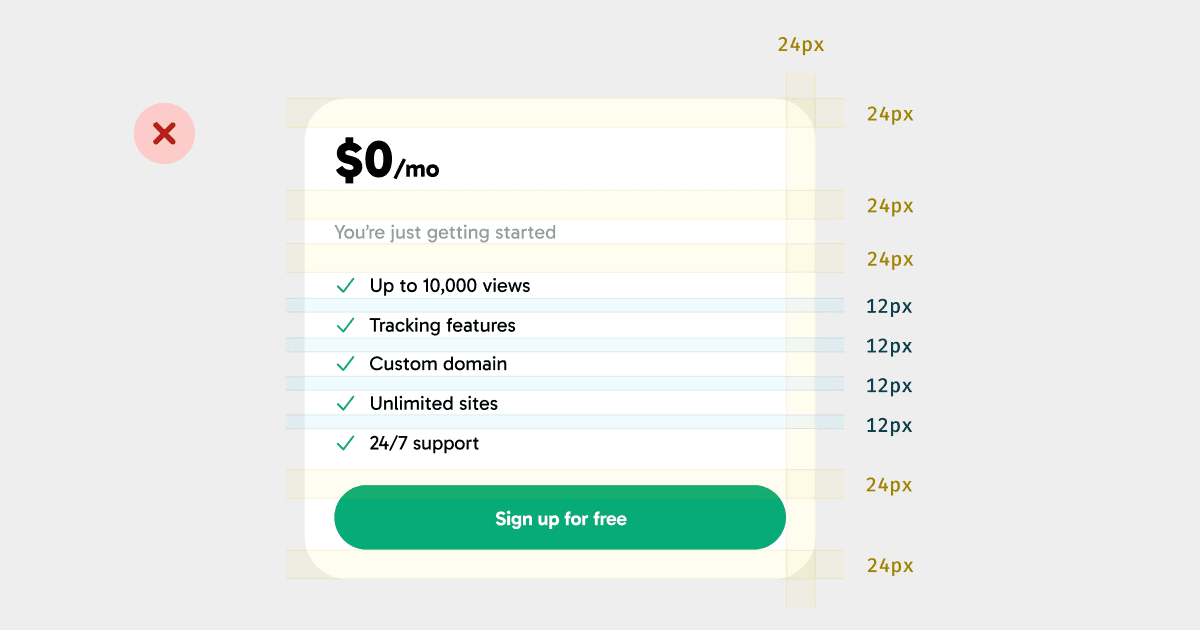
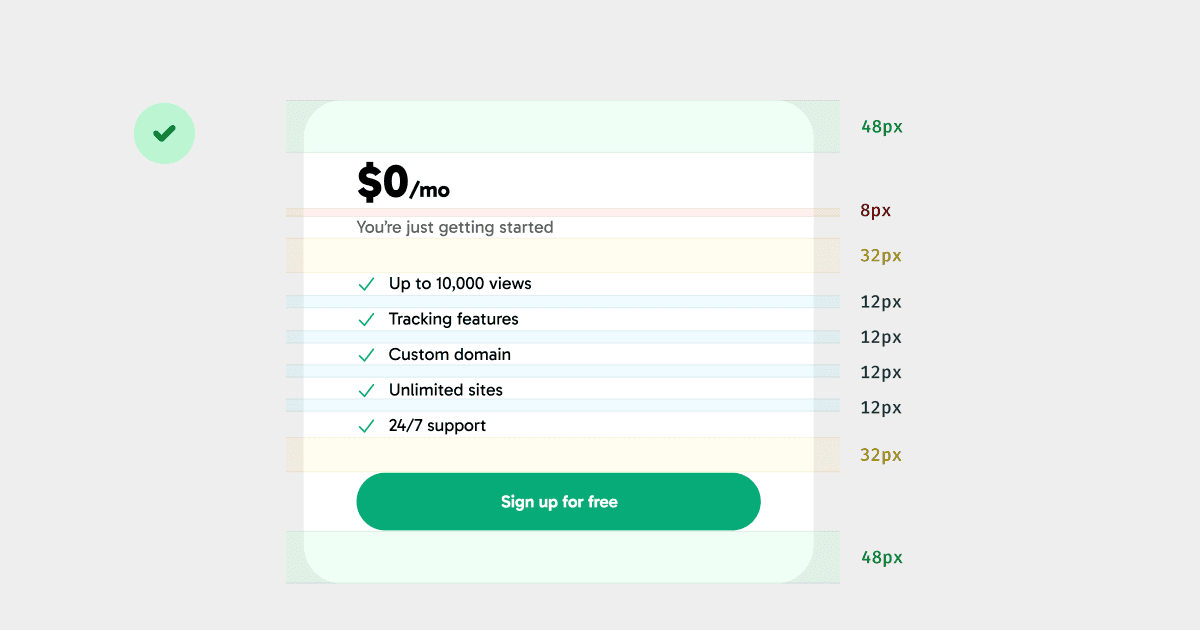
Design beautiful websites to sell your product — Paragraphs
Forget creativity, design is about rules. Here’s there 80/20.
Bali. 09:23 am. Linkin Park in my ears.
Last week, we talked about designing remarkable headlines
https://marclou.beehiiv.com/p/design-beautiful-headlines-to-sell-your-micro-saas.Today, let’s redesign the supporting text below your headlines.
SOLOPRENEUR UPDATE
I launched Insighto
https://insigh.to/on Product Hunt last week and… It got the #1 Product of the Day 🤩
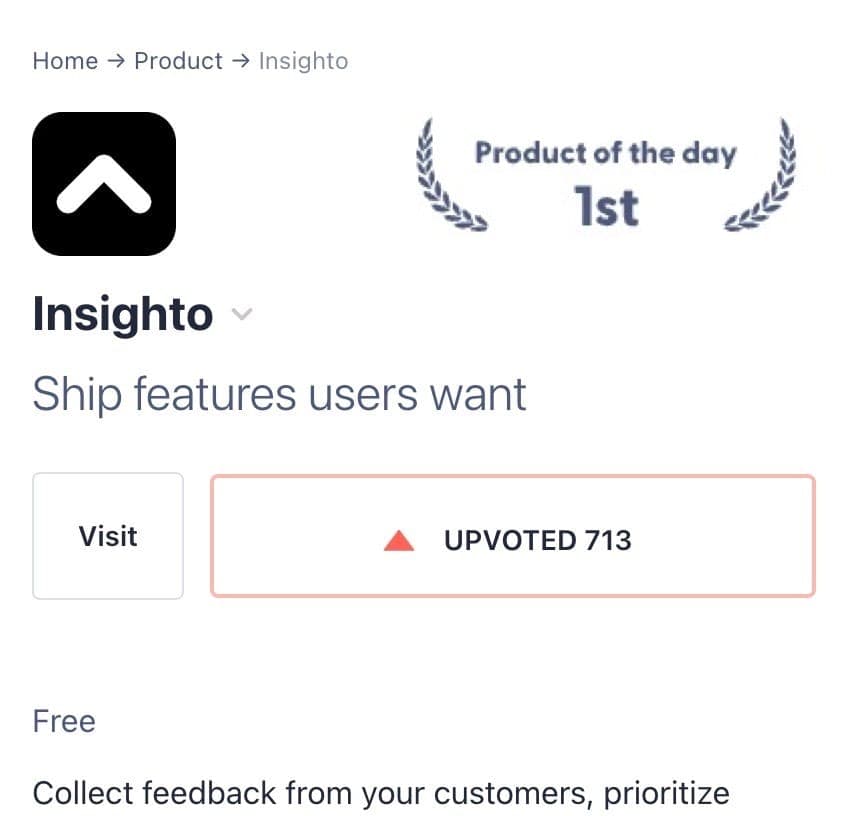
I also bought my first premium domain name — shipfast.com
http://shipfast.com— for…
🥁
…$5,000. That’s 3x my revenue in April 2023. It feels unreal.
The supporting text below the headline is crucial. It’s how you convert
attention to action.
But most people won’t read it. Here are 5 design tips:
USE A SECONDARY COLOR
The supporting text should be written in a color that contrasts less with the
background than the headline color.
That’s why we made the Base Content Secondary color
https://marclou.beehiiv.com/p/design-beautiful-websites-to-sell-your-micro-saaspreviously. It creates a visual hierarchy.
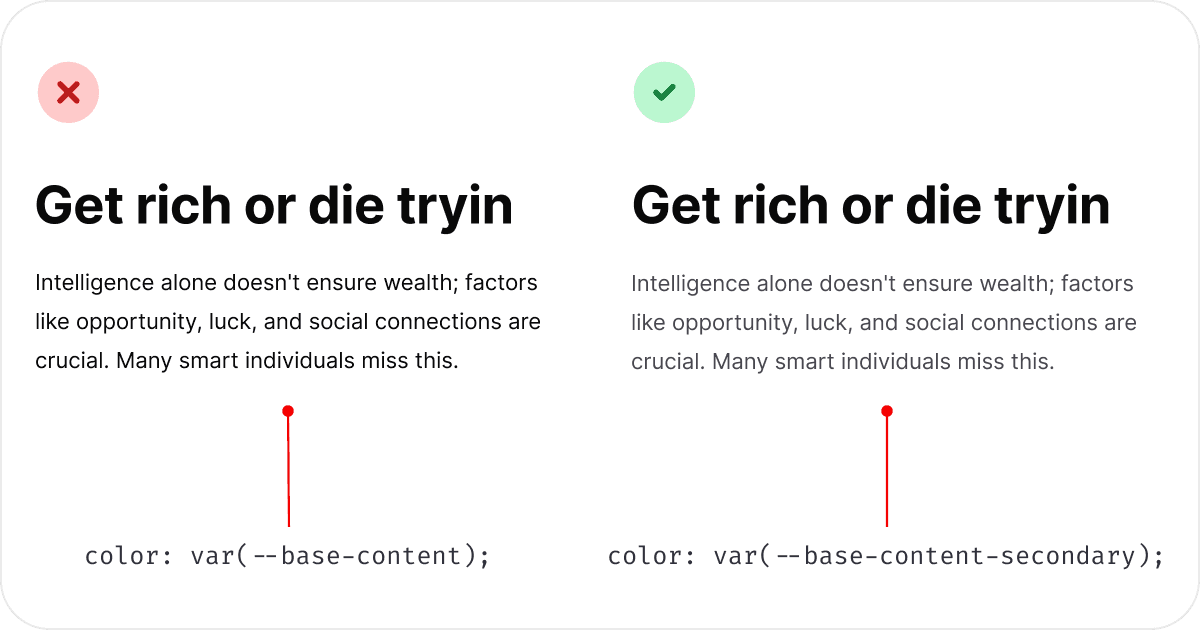
Use the default font weight (400) and font size (16px) for paragraphs.
LET THE CONTENT BREATHE
Unlike headlines, reading a paragraph in a small font size requires a visual
effort.
Make it easy for your visitors by increasing the height of each line.

ALIGN TEXT ON THE LEFT (OR RIGHT)
Our eyes are used to read from the left.
At the end of a line, we know where to look: The line below, on the left.
Centered-aligned text is hard to read because the eye has to scramble around
looking for the beginning of the next line.
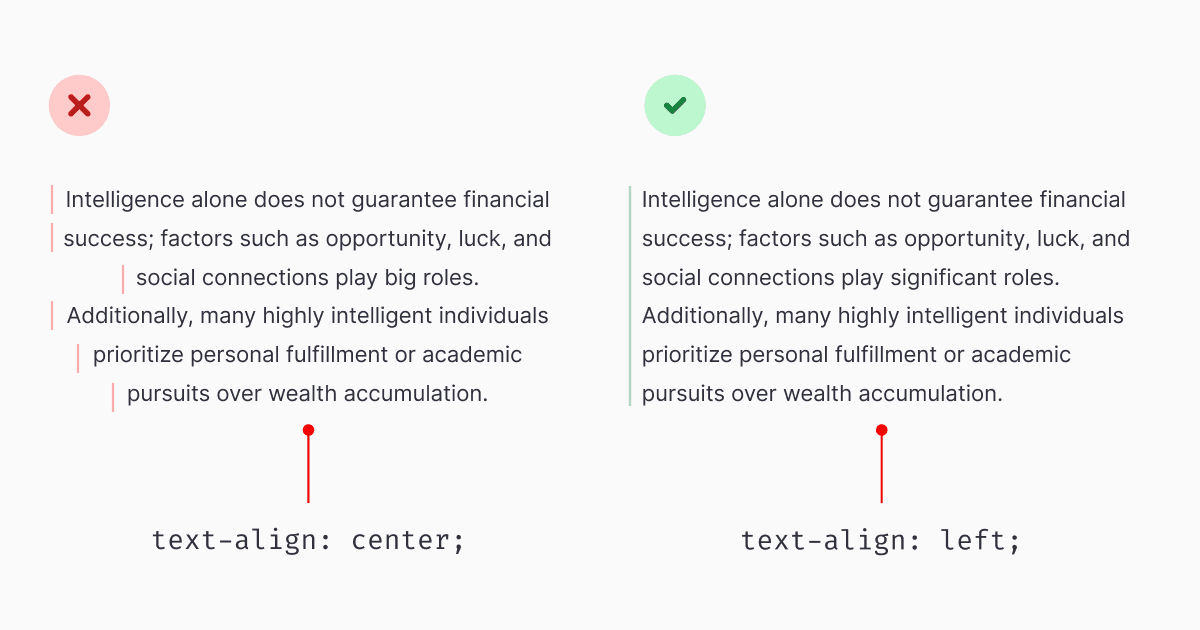
It’s OK for short paragraphs (2-3 lines). But avoid centering longer blocks of
text.
Good design = easy understanding for users.
WRITE BLOCKS, NOT LINES
Finding the beginning of the next line is hard when the line is long.
Add a maximum width to each paragraph. 500 px is a good range. It makes it easy
for the eyes to find the start of the next line.
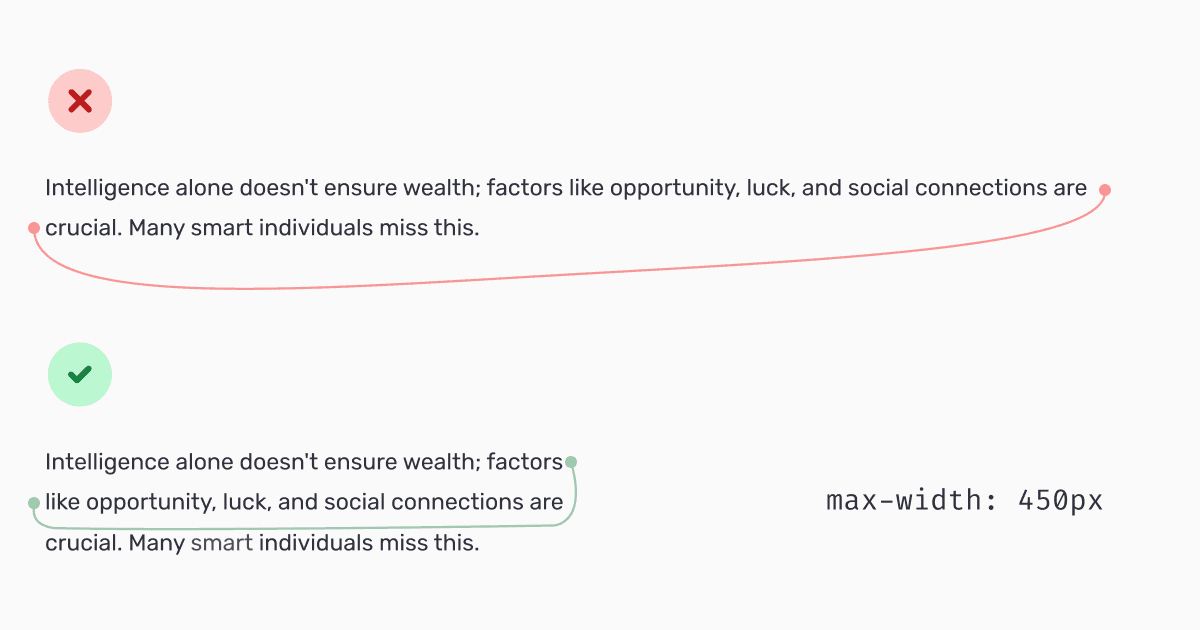
DON’T WRITE A NOVEL
A big block of text is scary. Most visitors won’t read it.
Structure your text block using bullet points.
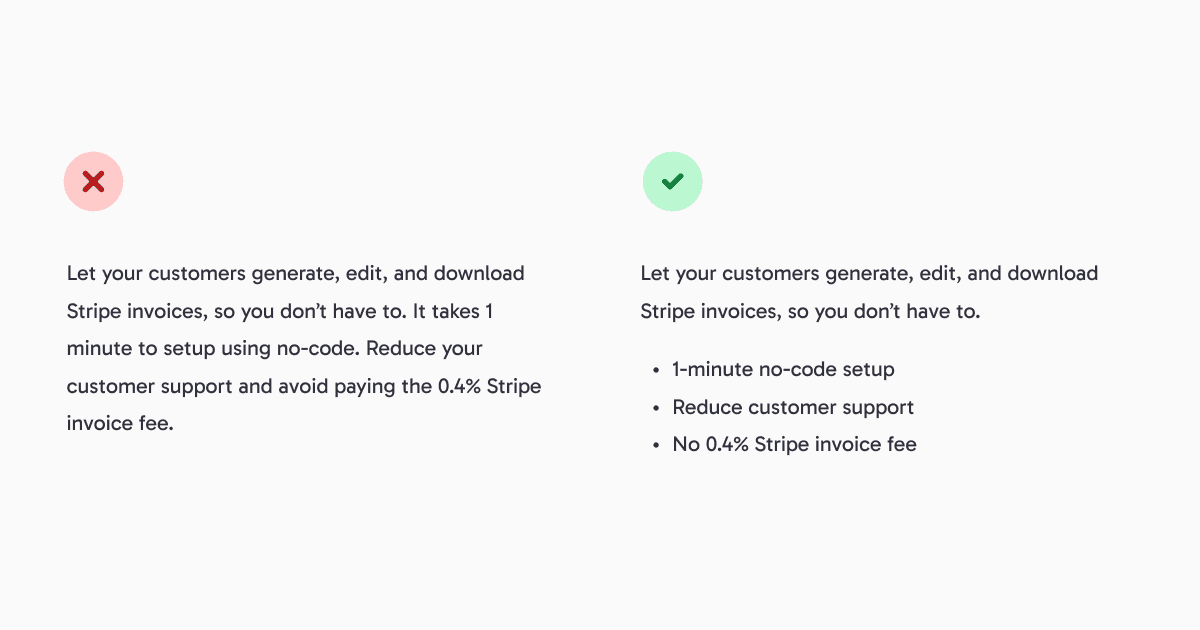
You can also use multiple paragraphs and emphasize some words to create rhythm.
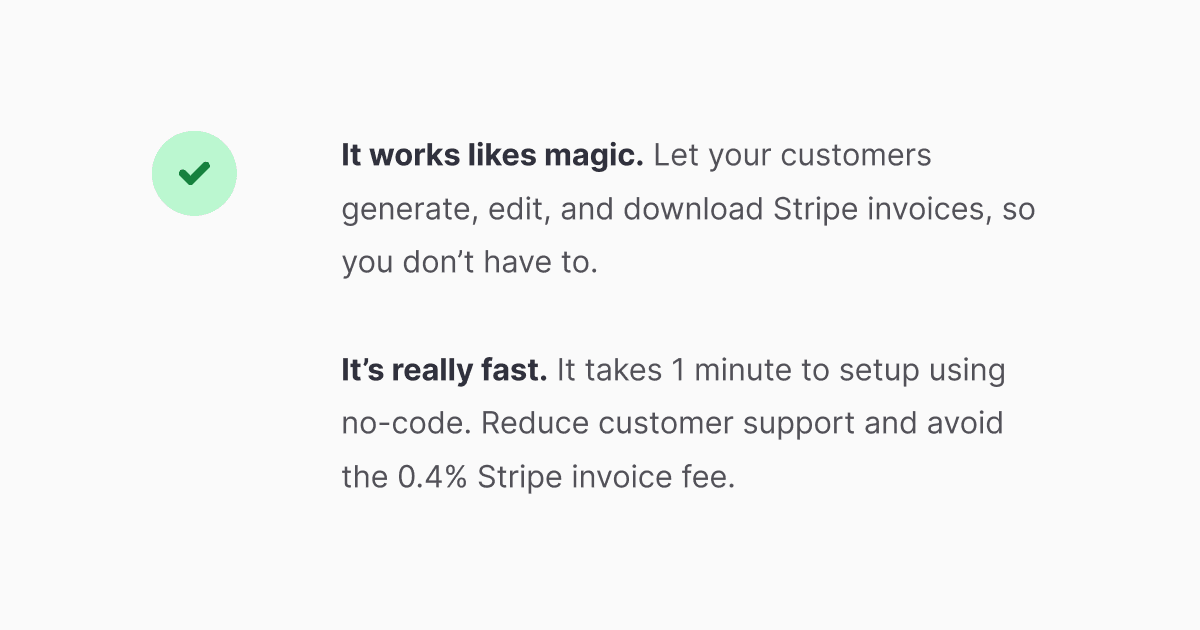
Use your Base Content color and medium/semibold font weight to emphasize words
I listened to the Hybrid Theory album 3 times. It’s time to have lunch with my
wife. Have a good weekend!
Design beautiful websites to sell your product — Headlines
Forget creativity, design is about rules. Here’s the 80/20.Rule #2: Emphasise your headline
Last week, we discussed how colors impact your conversion rate
https://marclou.beehiiv.com/p/design-beautiful-websites-to-sell-your-micro-saasand why less is better.
Now, let’s focus on the most important part of your landing page — headlines.
SOLOPRENEUR UPDATE
I launched a new micro SaaS on Product Hunt yesterday!
Introducing Insighto
https://insigh.to/— Ship features users (really) want:
* ✍️ Collect feedback from customers
* 💡 Prioritize features
* 😍 Build a product users love
It's a tiny alternative to Canny, and it’s 100% free :)
RULE #2: EMPHASISE YOUR HEADLINE
People don’t read text.
At least, not until you get their attention. Your headline must be remarkable if
you want people to read your copy. Let’s redesign it.
MAKE IT BIG
The default font size is 16px. Headlines should be bigger (of course, Marc). But
how big?
The sweet spot is somewhere between 36px and 60px. It depends on the typeface
you use.
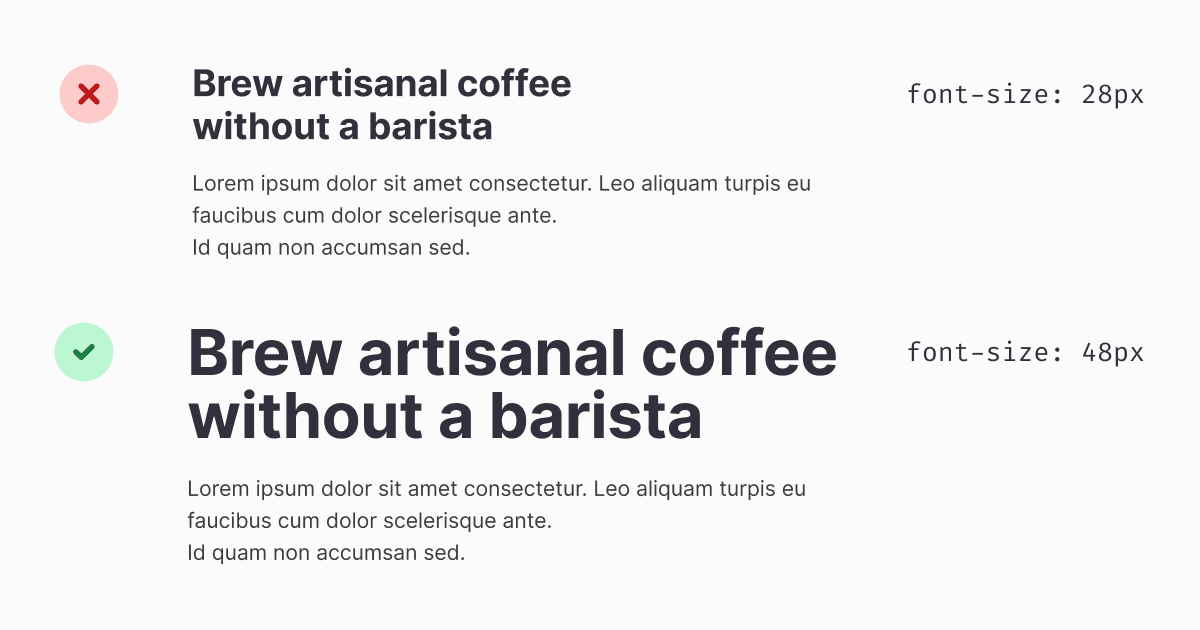
Your first headline (<h1> in the hero section) is usually bigger than the
secondary ones (<h2>).
Once you set a system, use the same for the entire landing page. Here’s mine:
* 60px for <h1>
* 48px for <h2>
MAKE IT BOLD
The default font weight is 400. Headlines’ font weight should be big too.
The sweet spot is between 700 (bold) and 900 (black). It depends on the typeface
you use.

Pick a font weight and keep it all across your website.
MAKE IT TIGHT
Headlines should be compact to be read easily.
1. Reduce the letter spacing by -0.4px
2. Reduce the line height to 1
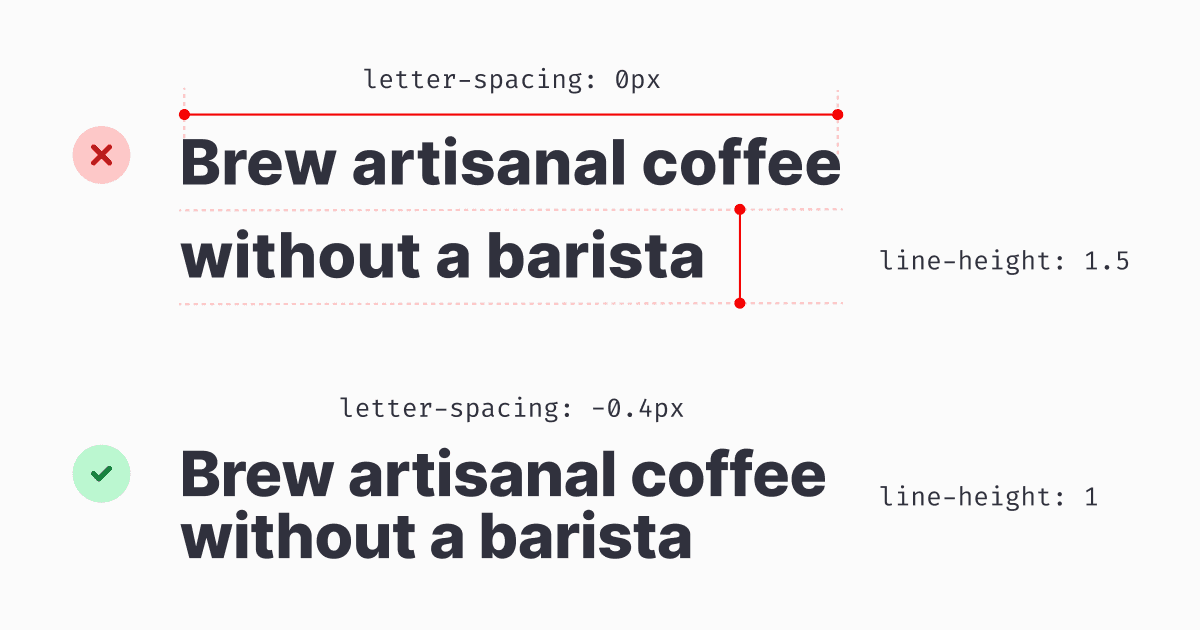
BUT MAKE IT LIGHT
Headlines must be short or your visitors will never read them. Use 70 characters
max.
If your headline is larger than 1000px, break the line. Find a semantic
breakpoint, not a visual one.
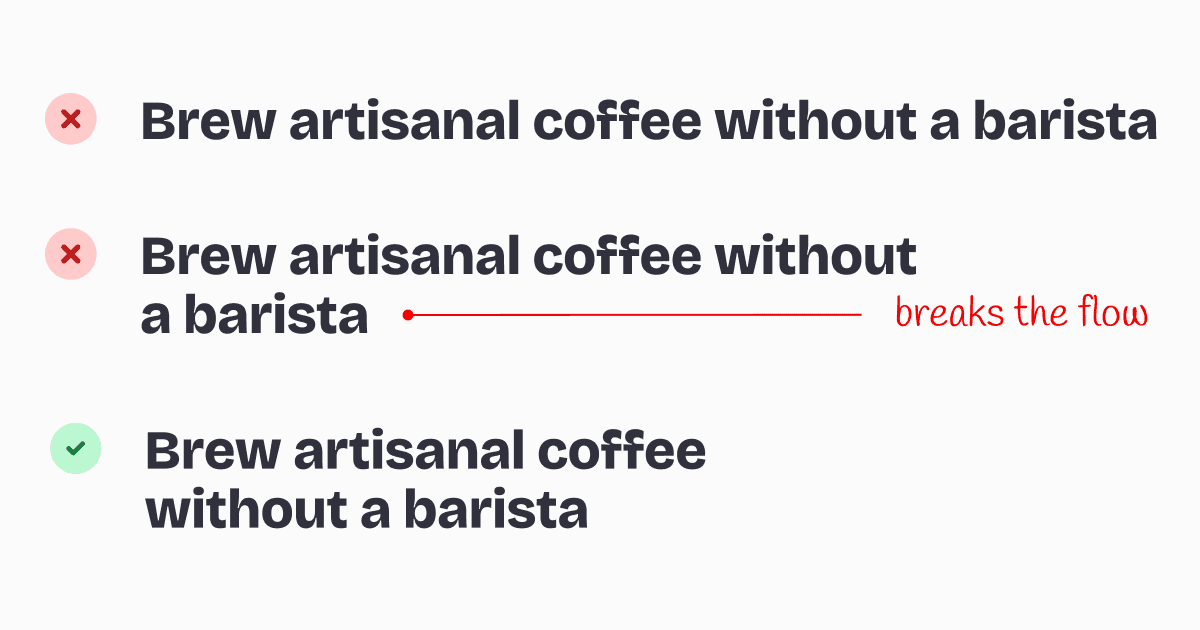
Avoid using more than 2 lines.
MAKE IT POP
Use the most contrasted color towards your Base (yep, the Base Content one
https://marclou.beehiiv.com/p/design-beautiful-websites-to-sell-your-micro-saas).Avoid dropping another color. It breaks the reading flow. And conflicts with
your main Call-To-Action.
If you need to highlight a word, use visual clues.
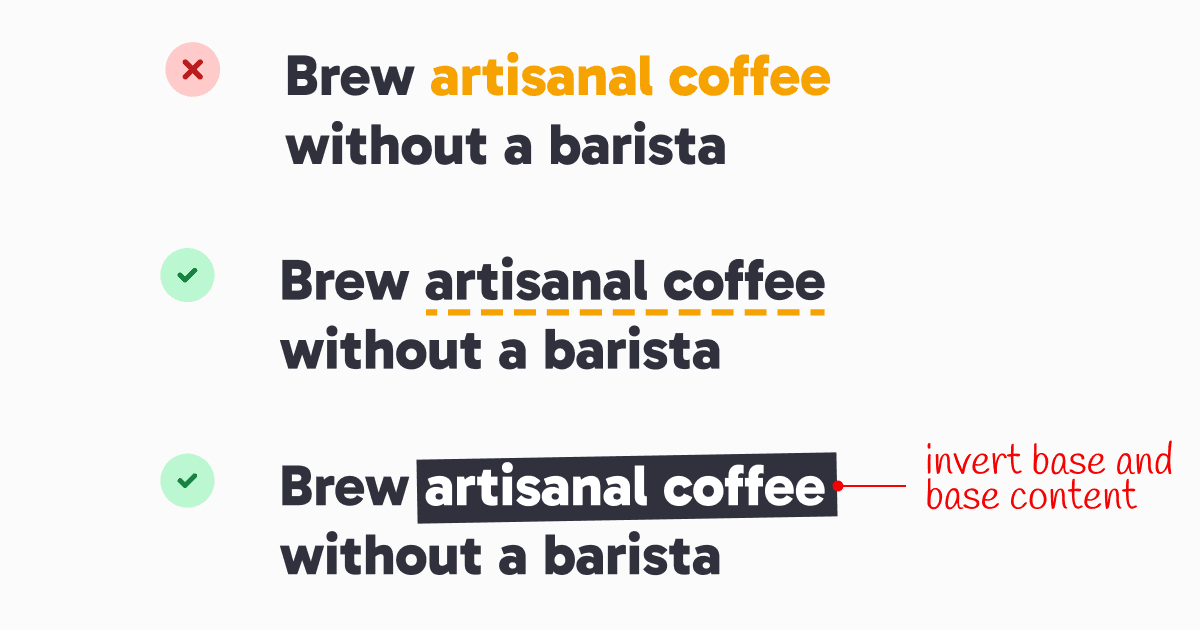
You can use the primary color to highlight numbers though
USE RESPONSIBLY
There’s nothing easier to understand than a website section with:
* 1 headline
* 1 paragraph
* 1 image
* 1 button
Write one headline per section of your landing page. Not 0, not 2, just 1.
MAKE IT RESPONSIVE
All rules above work on mobile devices, except for the font size.
Make your headlines a bit smaller than on desktop — 32px to 40px is the sweet
spot.

Design beautiful websites to sell your product — Colors
Forget creativity, design is about rules. Here’s the 80/20.Rule #1: Use less colors
I'm a developer, not a designer.
Yet, my landing pages generated nearly $1M in sales by applying design
principles.
In the coming weeks, I’ll show you everything I know about design.
SOLOPRENEUR UPDATE
* You and 19,999 solopreneurs read this newsletter
* My YouTube channel reached 50,000 subscribers
* I received the Product Hunt Maker of the Year award
https://x.com/marc_louvion/status/1788188363511783505Nothing happened for 6 years. Now, everything all at once.
I wish I could tell my younger self it’s gonna be alright.
RULE #1: USE LESS COLORS
Colors are like beers. Things get messy after 3 or 4.
Look at these 2 hero sections. Where do you want to click?
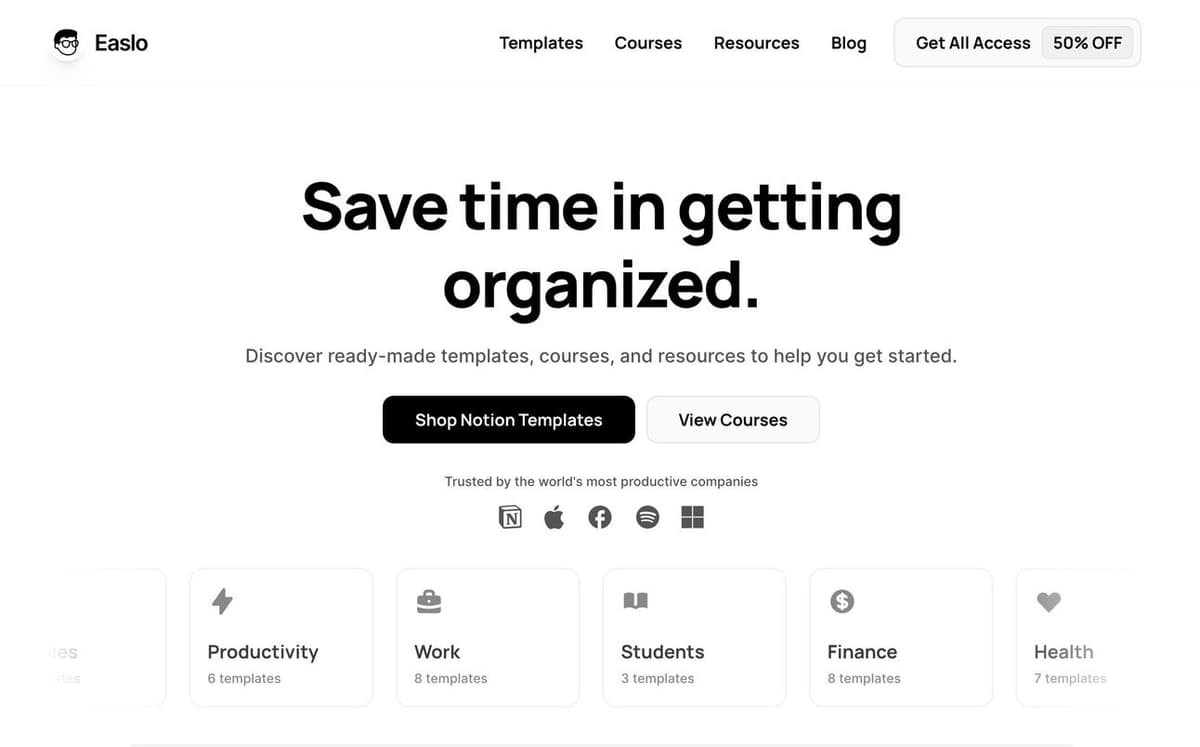
few colors, 1 call-to-action
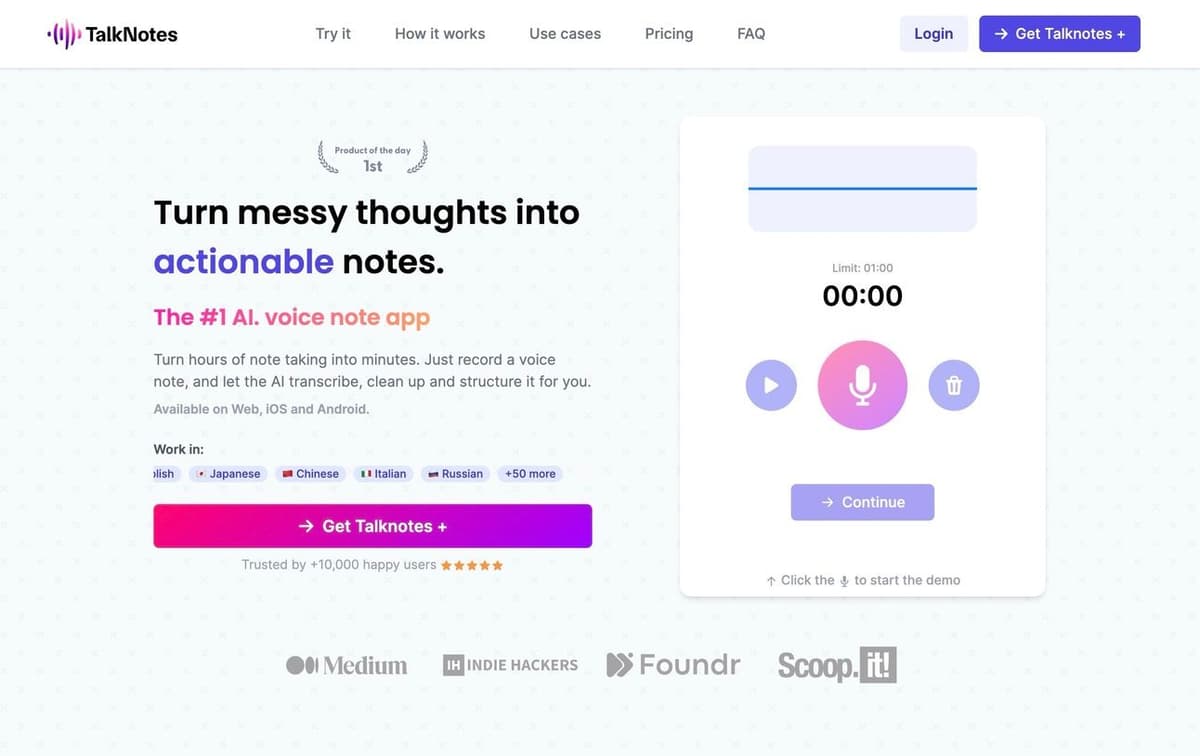
many colors, many call-to-action
Landing pages that convert have 1 main call-to-action (CTA), the rest is
secondary.
Start with a minimal color palette — 4 colors
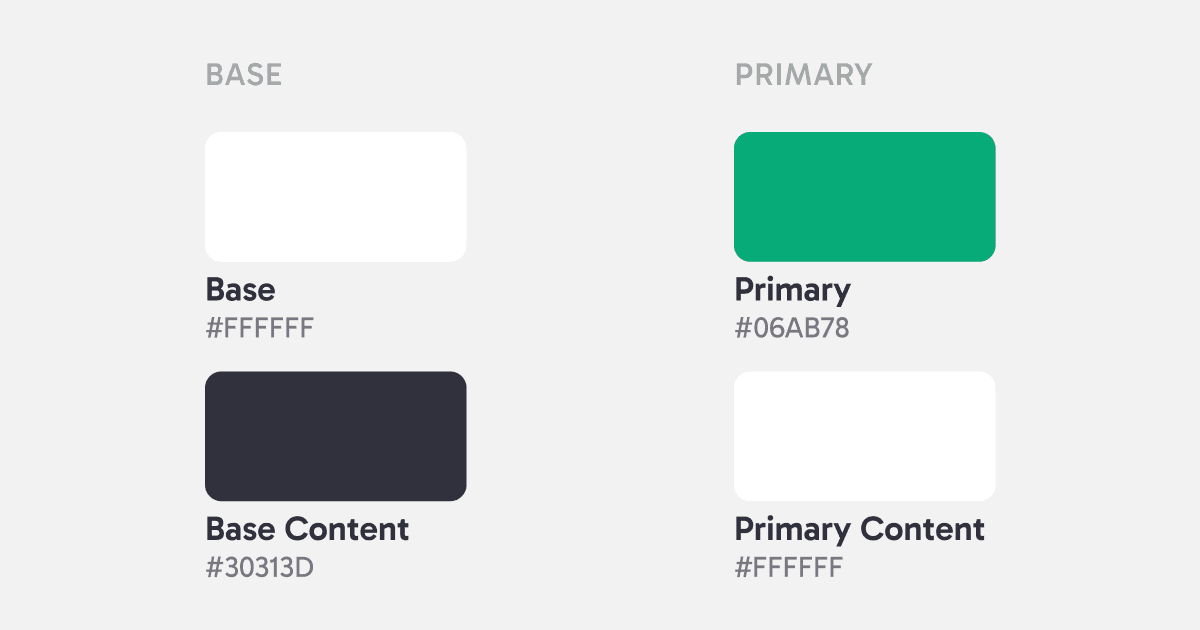
The color of the content must contrast well with the background.
1. Primary + Primary Content for the main CTA, like buying your product
2. Base + Base Content for everything else
You can design the most important UI components with 4 colors.
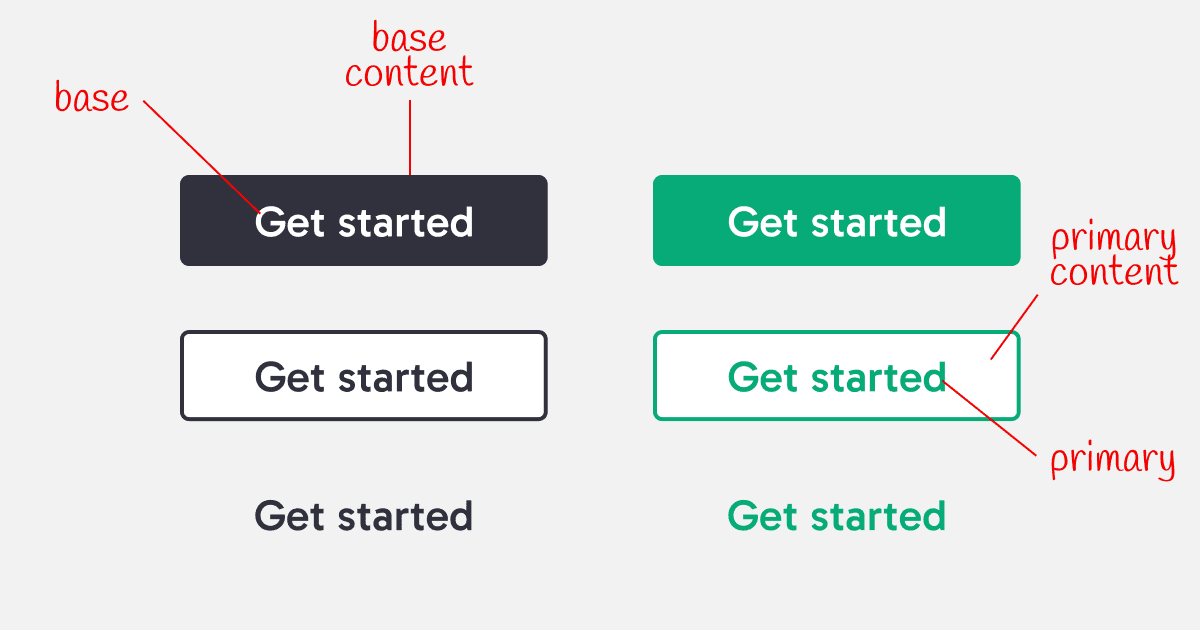
Avoid pure black (#000000). Instead, use dark gray, night blue, zinc, etc.
Even an entire landing page.
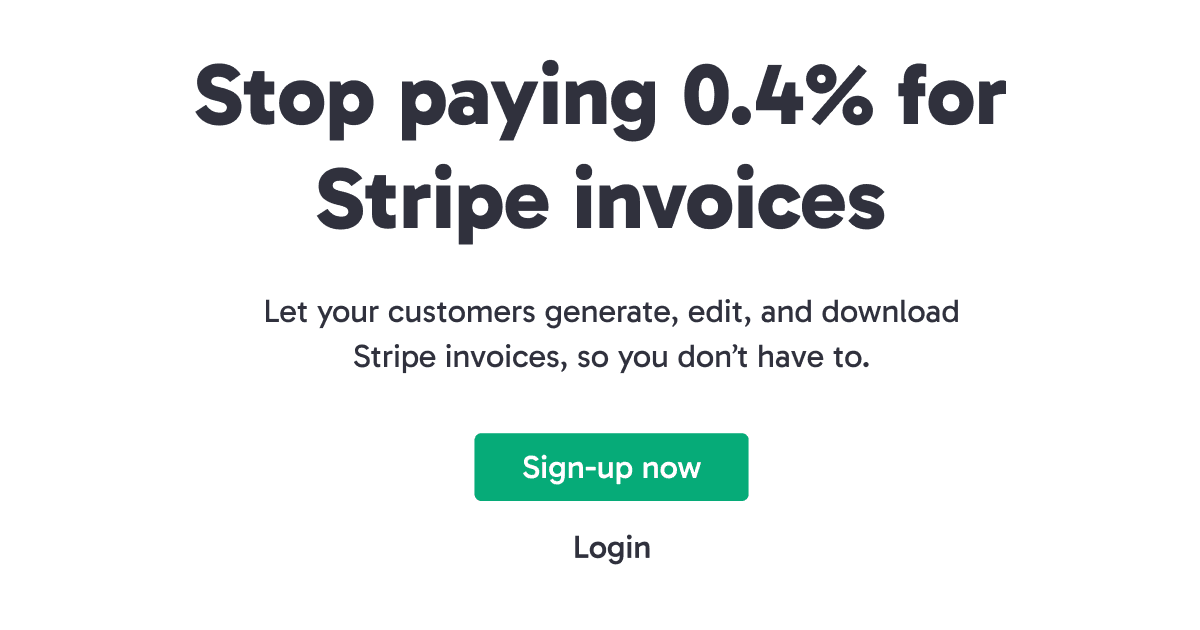
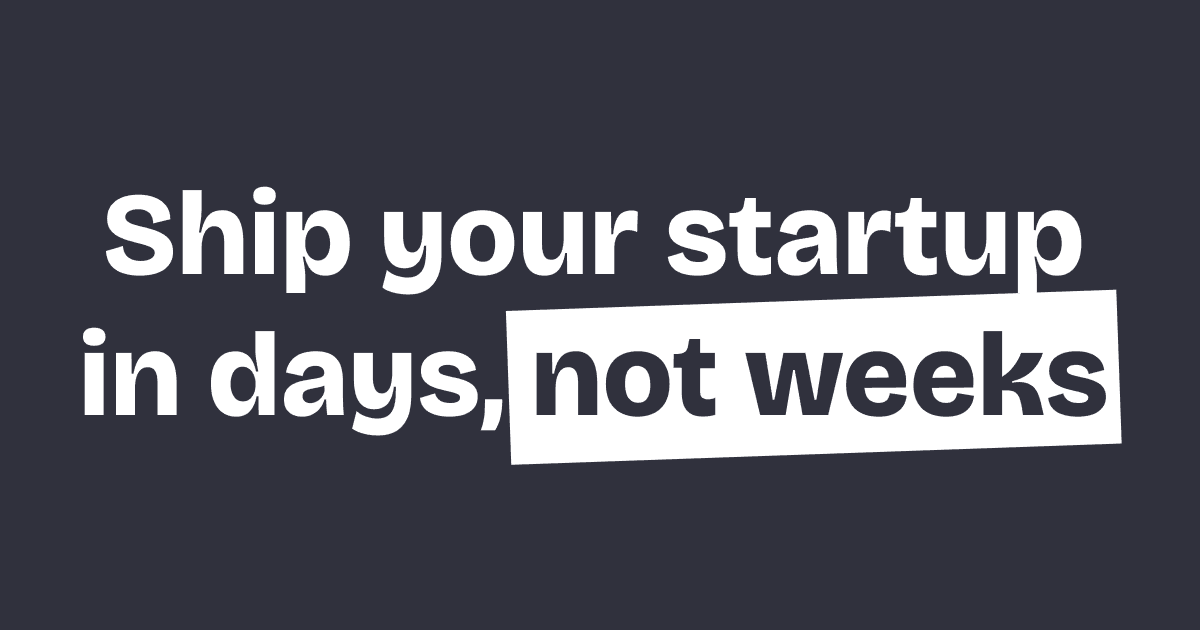
Expand your Base palette if you need more colors: Find slightly darker (or
lighter) colors — no more than 3.
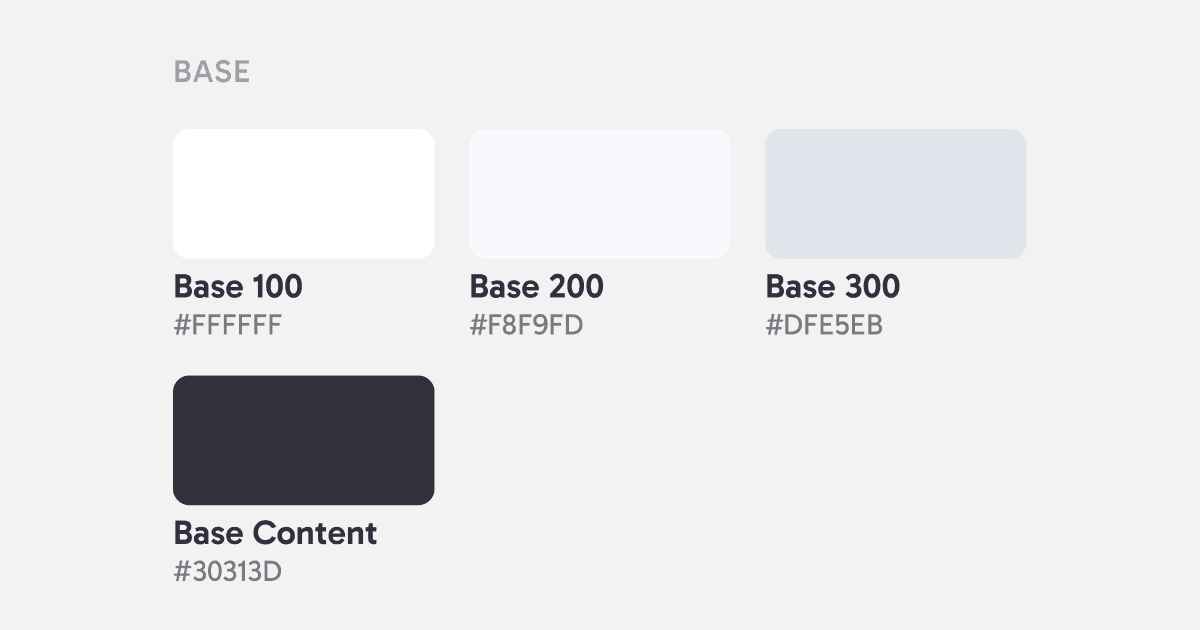
1. Each Base must contrast well with the Base Content.
2. Each Base should have a similar hue (all base colors below are yellowish)
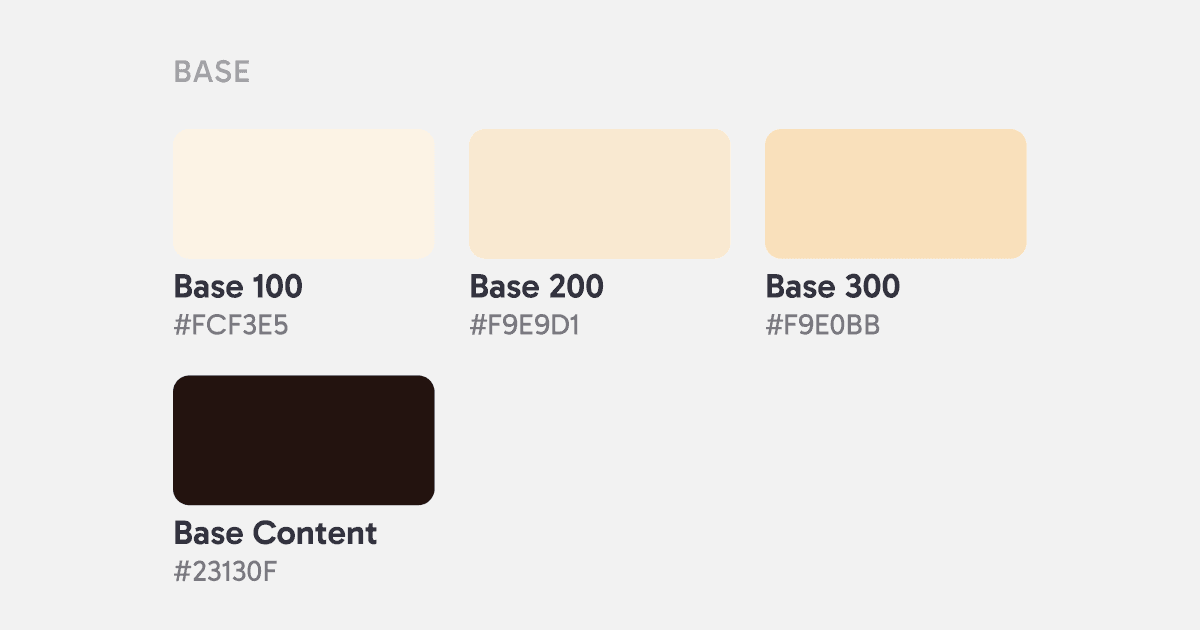
We can add a Base Content Secondary color to create a text hierarchy, like a
supporting paragraph below a headline.
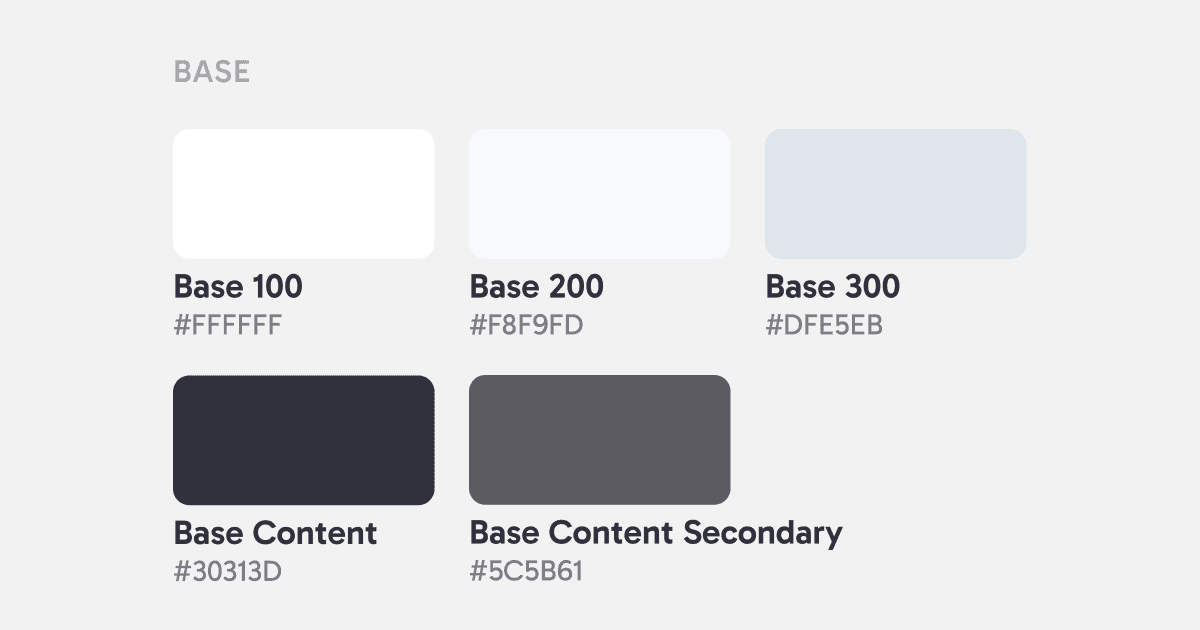
Base Content Secondary should contrast well with the Base, but less than the
Base Content.
Now, you can create any component for a beautiful landing page that sells.
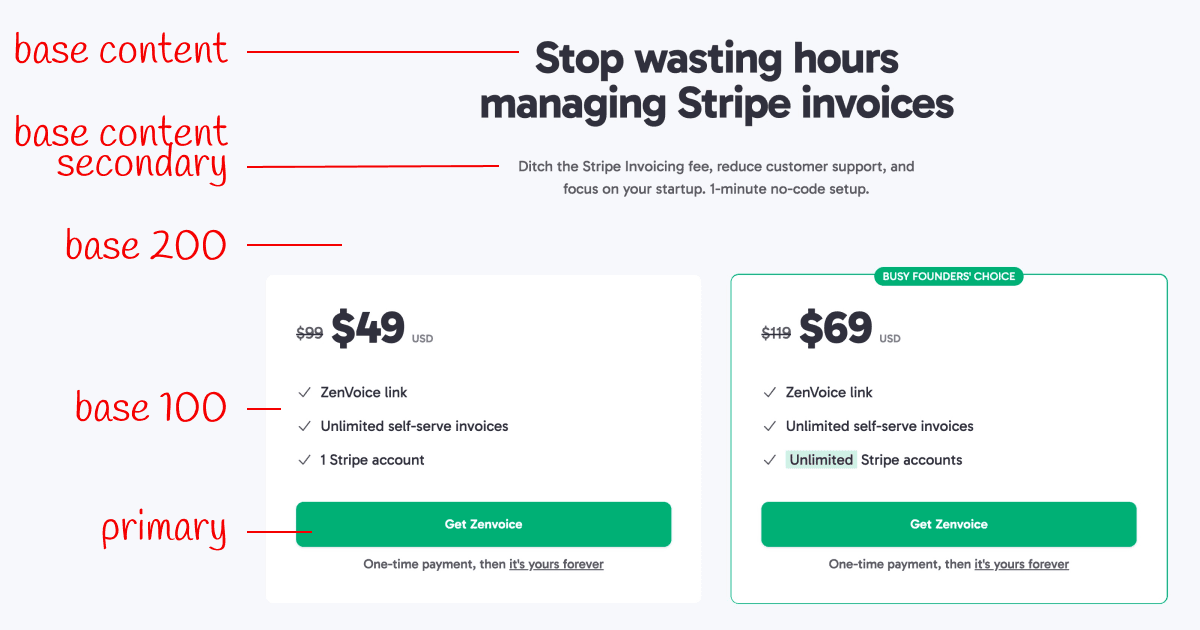
Real designers know how to use multiple colors to build gorgeous UI.
But if you’re a coder with unsophisticated taste for design (like me) go easy on
colors and stick to the rules.
You don’t want to confuse users, you want them to buy your product.
How to make a logo in minutes without design skills
As a solopreneur, being able to create your own logo in 5 minutes is bliss. No back-and-forth with a designer means more time shipping. Here's how to do it for free.What are you selling?Start with a shapeLet’s paint
Update: I created LogoFast
https://logofa.st/free tool to make stunning logos in seconds
As a solopreneur, being able to create my own logo in 5 minutes is bliss. No
back-and-forth with a designer means more time shipping.
I used to suck at design but after creating 30+ logos, I found a simple
blueprint that works all the time. No skills required. Let’s start.
Estimated reading time: 3 min 34 sec
BUILDING IN PUBLIC UPDATE
I never change my tech stack or learn new frameworks. It keeps me away from
shipping.
But users of ShipFast requested the same feature over and over…
So I broke the #1 rule and added Supabase to ShipFast
https://shipfa.st/Can we say it’s SupaFast?
WHAT ARE YOU SELLING?
Before jumping on Figma, we need to talk about why your startup exists. Your
product solves a problem. The problem solved upgrades the lives of your
customers. Let’s explore a few examples:
* A habit tracker helps people struggle to be consistent to get in shape
* A code boilerplate has templates to avoid writing code from scratch to help
developers build faster
* A PDF AI chat app saves time by not having to read long and boring documents
Find how your startup upgrades your customers’ life. It’s hard. But once it’s
done, you’re minutes away from having a beautiful logo.
START WITH A SHAPE
The shape of your logo shouldn’t be about the product at all. Instead, it should
depict the life upgrade you’re offering. Let’s use the previous examples:
* Habits tracker: A seed or a strong biceps represents a life transformation
* Code boilerplate: A lighting bold or a Formula 1 represents speed.
* PDF AI chat app: A clock represents time saved.
If you don’t know which icon could represent the life upgrade, google it: Icon
to depict [life upgrade]
For our example, let’s say we’re designing a logo for a habit tracker for people
who want to work out consistently. A strong bicep is a perfect fit.

Have you got your shape? The fun part begins. Head over to any free SVG
libraries. I always use one of these:
1. Iconbuddy
https://iconbuddy.app/2. React Lucide
https://lucide.dev/icons/3. Heroicons
https://heroicons.com/Search for your shape, download the SVG, and import it in Figma.
LET’S PAINT
At this point, you’re almost done. A few colors and you’re ready to ship.
If you’re a designer reading this, you’ll go bananas: ditch color palettes.
Solopreneurs don’t have the time and skills for this.
Pick one primary color and stick to it. If you need help picking the color,
search for symbolic color meanings—it’s how colors make people feel. Red brings
passion or excitement (Tinder), yellow is hope or joy (McDonald), and green is
nature or growth (Instacart).
For our habit tracker, we could have used green but we’ll go with red because
we’re targeting fitness.
Just add the primary colour in the background, and fill the icon with white. You
can also swap the background and filling color. And here’s our logo!
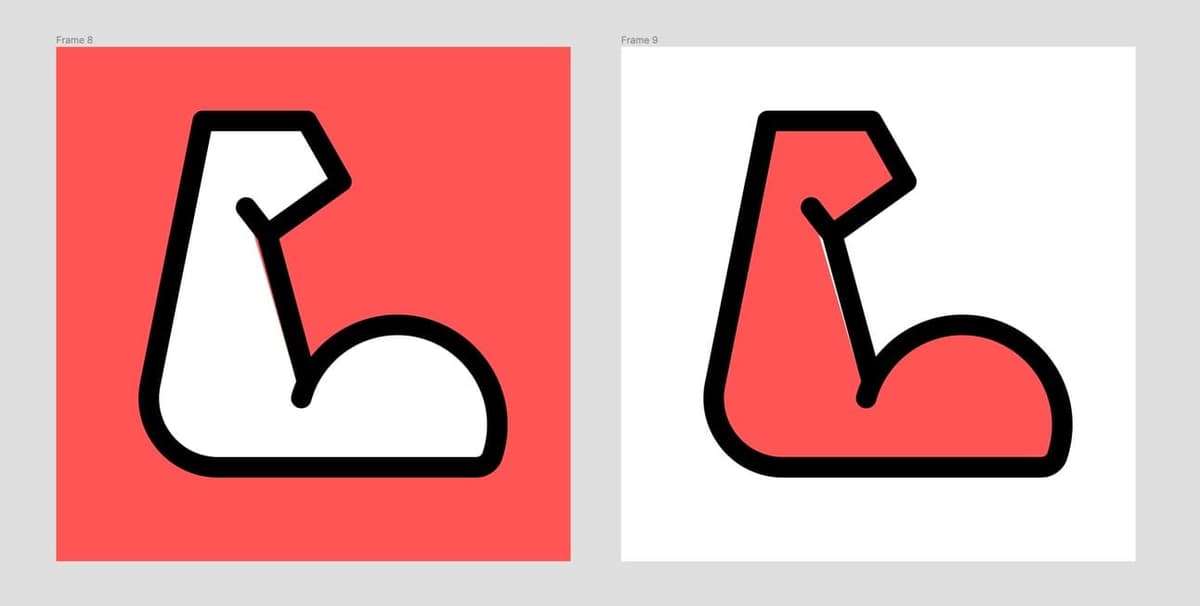
Let’s explore some alternatives. Gradients are trendy for AI products. Just
select the SVG and change the stroke color to a beautiful gradient. Keep the
colors of the gradient in the same zone, for instance, red with yellow or green
with blue. Avoid mixing hot and cold colors.
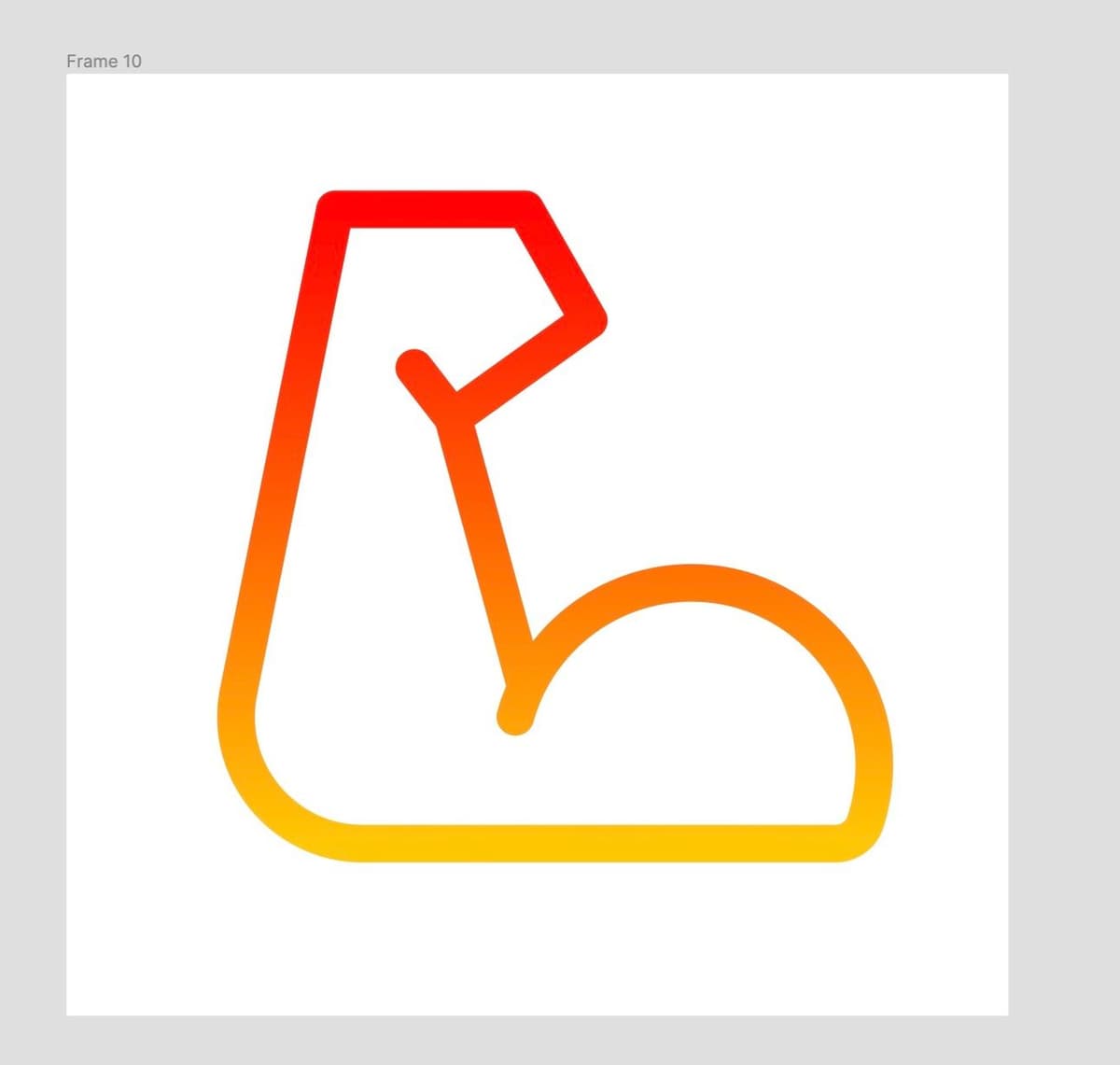
You can also stick to black and white. That’s what Twitter did when rebranding
to 𝕏 and it looks slick/noble. Play around with the SVG fill color and the
background color to find out what’s best.
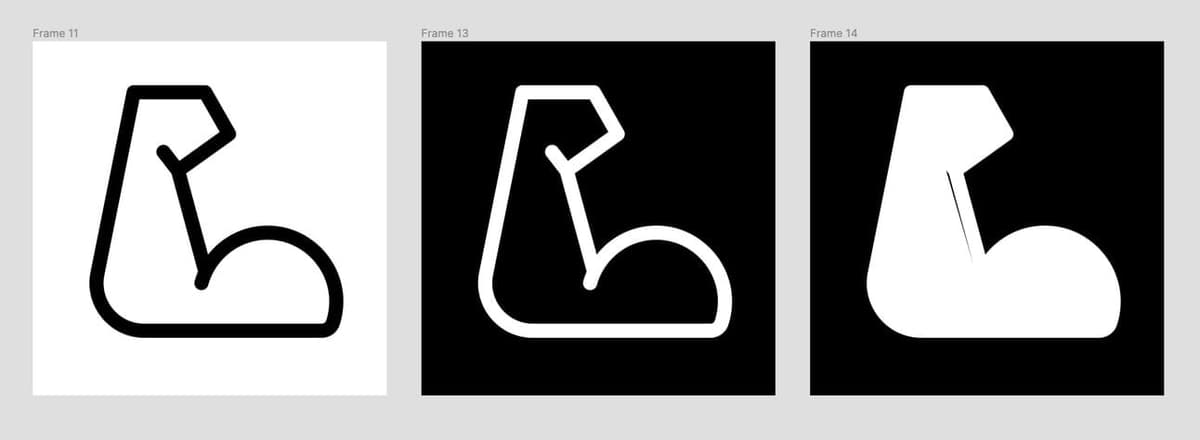
Finally, if you’re shipping a startup that’s mobile-first, you can easily give
it an app feeling: Add a large border-radius to the edges and a shadow.
The first logo will take some time. The second one will be faster. The third one
will only take 5 minutes. Keep shipping and you’ll be unstoppable.
Part 6 Personal
I Made $1M as a Solopreneur
What this means for usThe solopreneur nicheIt’s a dead-end“The bubble is about to burst”
Being rich was never the goal.
Freedom and fulfillment are. But $1M as a solopreneur? Hell yeah!
85% is profit. 19% went to taxes. It took 7 years, 2 burnouts, and 1 depression
https://marclou.beehiiv.com/p/solopreneur-rollercoaster.I could talk about what I learned, but my blog is [https://marclou.beehiiv.com/]
for that [https://marclou.beehiiv.com/]. And Starter Story made a video about
the journey
https://www.youtube.com/watchInstead, I want to write about what it means for us — Solopreneurs — who
organize our lives around work, not the other way around.
THE SOLOPRENEUR NICHE
When I started in 2017, there were three alternatives to employment:
* Wear suits and please VC for a 0.00001% chance to build a unicorn
* Open a restaurant with your parent’s legacy
* Dropshipping
Unless you were a Hacker News reader, you would have missed the startup
counterculture movement.
Guys like Patrick McKenzie
https://x.com/patio11and Pieter Levels
https://x.com/levelsiobuilding tiny startups in public while traveling the world.
IT’S A DEAD-END
I live where I want. I don’t have to ask for permission to take time off. And I
can prioritize other parts of my life like sleeping, surfing, and spending time
with my wife.
Solopreneurship is addictive. Once you crack the money code, there’s no turning
back.
It’s not surprising this new startup wave is spreading fast. COVID was a
catalyst.
“THE BUBBLE IS ABOUT TO BURST”
Some are skeptics and think we’ve reached the peak. I believe the opposite.
OK, let’s be honest: You won’t get a TechCrunch article for building startups
from Bali. That period is over.
But solopreneurship is just getting started.
1. AI makes everything easier: It writes my code, improves my broken English,
and brainstorms video ideas for my YouTube channel.
2. Niche businesses are exploding: AI apps, one-person design agencies,
newsletters… Just look at the IndiePage Leaderboard
https://indiepa.ge/leaderboard3. The wave is reaching the masses: Solopreneurs’ stories are popping up
everywhere on YouTube now. The move is about to go mainstream.
Out of 7 years of entrepreneurship, I was crippled with self-doubt for 6 years.
But there is a bright future ahead for those who don’t quit. Ignore the
skeptics, we are just getting started.
I root for you
— Marc
P.S. When in doubt, refer to Naval “Learn to sell, learn to build, if you can do
both, you will be unstoppable”.
P.S.S. I built this Twitter Revenue Bot
https://x.com/IndiePageApplast week and it has 502 followers.
Noah Kagan texted me, haters, broken boards.
A quick solopreneur update for June
30,000 feet in the air. Brad Strut
https://www.youtube.com/watchin my ears.
Hey, it’s Marc.
I’ve completed about 50% of that big bet. The weekly newsletter will be back
soon. Until then, I’ll send a short solopreneur update sometime.
I’m traveling back to my homeland. 20 hours in airplanes should be enough for a
few words.
In June, Noah Kagan WhatsApp’ed me. We did a podcast
https://noahkagan.com/marc-louvion/I also reached 100,000 Twitter followers
https://x.com/marc_louvion/status/1797285802566897823and did an interview with Starter Story
https://x.com/thepatwalls/status/1808313879614951723UPDATE: The video is live!
https://www.youtube.com/watch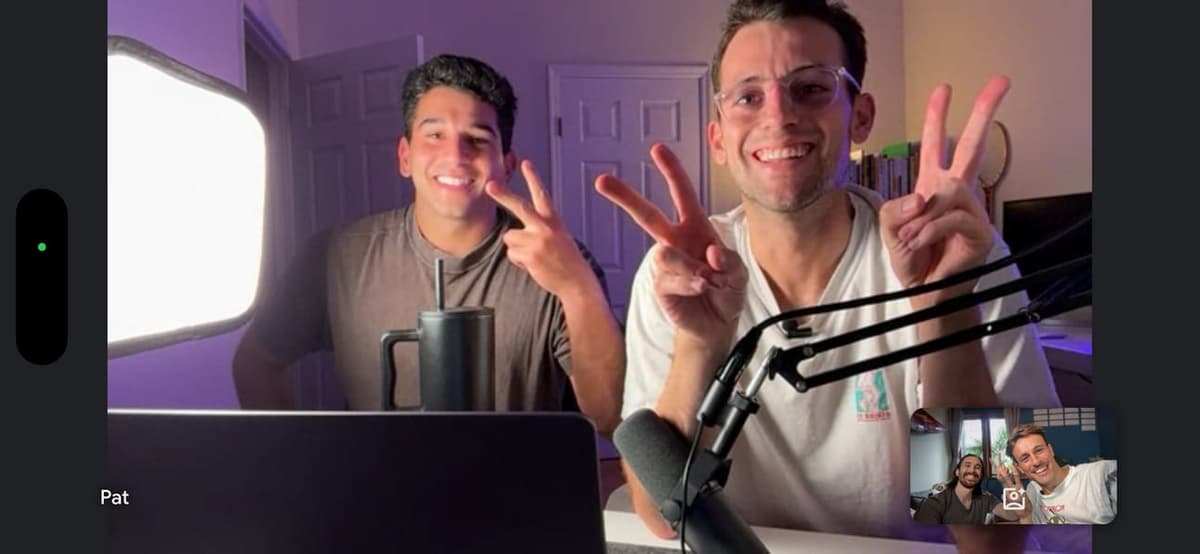
The video should be out in 6 weeks!
Seriously it’s crazy. Nobody cared about my work for 5 years (apart from my
wife). Sometimes, I think I don’t deserve all this exposure.
With the recent growth came a few haters.
I’m negativy-averse. I don’t know how to react, so I am spending less time on
Twitter right now. My friend Dan
https://twitter.com/DanKulkovsays I’m a Labrador.
Instead, I surf more often and broke 2 boards. I also added 2km of barefoot
running to my daily routine.
I love working out. It quiets the mind.

Morning surf before spending 10 hours behind the computer
Business videos aren’t fun — I want to change that. I’ll add a lifestyle
dimension to all my new videos. This one
https://www.youtube.com/watchwas my first experiment.
I hope you’re shipping. Take care.
— Marc
I earn $1,753/day with this simple tech stack
When I learned to code, I struggled to decide on the right tech stack with all the noise out there. Here's the one I picked and never changed.Front-endBack-endHostingMonitoring Extras
I never change my tech stack.
My 21 products get 250,000 page views per month and generate $1,753 a day using
this simple, non-fancy tech stack:
SOLOPRENEUR UPDATE
I started making 1 YouTube video every Saturday in January 2024. One of my
videos went viral on Tuesday:
* 55,000 views (vs. 5,000 average)
* 7,000 new subscribers (hey 👋)
* My channel got monetized
It was also the 2nd biggest day for ShipFast. I didn’t realize the scale of
YouTube.

FRONT-END
I use ReactJS, Tailwind CSS, and NextJS.
I also use daisyUI, the awesome Tailwind component library to speed things up.
Design trends give birth to new UI components every day. It’s a distraction for
solopreneurs. daisyUI has 20+ themes and all the components, that’s enough.

Pick a daisyUI theme, change the font, and your UI is ready.
BACK-END
I use serverless functions by NextJS. I don’t have to install packages or
maintain an OS. I clone a NextJS project and I have a scalable API for my micro
SaaS in seconds.
My database is hosted on MongoDB Atlas. I create a free M0 customer for each new
project and use daily backups ($10/month). I use mongoose on top to simplify
queries.

I use NextAuth to authenticate users (private dashboard for instance).
To send emails, I use Mailgun ($4/month). It’s easy and free to start.
Payments are processed via Stripe (3.5%). Getting started is a bit daunting. I
wrote this tutorial to handle subscriptions with Stripe
https://byedispute.com/blog/how-to-code-a-stripe-subscription-model-with-react-and-nextjsHOSTING
I host my 21 apps on Vercel ($20/month). I push changes to a GitHub repo and it
automatically deploys them.

MONITORING
Simple metrics like visitors and pageviews are handled by Plausible ($29/month).
If something goes wrong, I check Vercel deployment logs.
I query the database using relevant filters for advanced monitoring, like split
testing. But I rarely do that.

I add a random split test number to the DB model and query the latest created
users
EXTRAS
I hired a junior developer for $10/month. His name is GitHub Copilot.
Some of my products use AI models like GPT-4. Pricing varies on usage,
currently, I spend ~$20/month.
And if I need specific features, like image hosting or a CDN, I use AWS
(1$/month)
When I learned to code, I struggled to decide on the right tech stack with all
the noise out there.
Tech stack doesn’t matter. Pick one and stick to it. You’ll get comfortable and
ship much faster.
I built a micro SaaS in 31 hours
On February 5th, 2024, I hit "Start Streaming" and built a micro SaaS startup — live on YouTube in just 31 hours.Getting the startup idea Building the MVPGetting the 1st customer
On February 5th, 2024, I hit "Start Streaming" and built a micro SaaS live on
YouTube in 31 hours.
The product has made almost $2,000 in just 5 days. Here's the entire journey
from idea to launch.
Estimated reading time: 3 min 11 sec

GETTING THE STARTUP IDEA
After I realized I paid Stripe $1,600 to create PDF invoices, I turned off the
option. Within days, my inbox was flooded with customers asking for invoices.

A pain with a money incentive is promising. So I searched for alternatives but I
couldn’t find any. And just like this, a new startup idea was born: A self-serve
invoicing tool for Stripe (now called ZenVoice
https://zenvoice.io/I wrote more about getting ideas
https://marclou.beehiiv.com/p/how-to-find-startup-ideas (TL;DR; think less,build more).
BUILDING THE MVP
1. PRICING IS EVERYTHING
As a customer, that’s what you look at first, especially when you don’t
understand the product. As an entrepreneur, that’s how I pay the rent. So I
brainstorm pricing first.
I went with one-time payments because it’s almost free to run this startup:
* $49: Unlimited invoices for 1 Stripe account
* $69: Unlimited invoices for unlimited Stripe accounts

I only pay for bandwidth (<$1/month) and emails ($0.001 per email).
If a customer generates more than 49,000 invoices, I’m losing money. But this
will never happen for all customers.
There are 2 plans because people have no clue how much a tool like this costs.
Confused customers don't buy. The first plan ($49) is the anchor, so the second
one makes sense.
2. THAT ONE FEATURE
I had tons of features in mind. But I also remembered that 90% of startups
failed. So I have a rule to avoid wasting time (and eventually burning out):
1 startup = 1 feature
For ZenVoice, customers of my users should be able to generate invoices. That’s
it.

There’s no password reset form, invoice preview, or account deletion. But
there’s a feedback button so I know what users need instead of making a blind
guess.
3. THE LANDING PAGE IS AS IMPORTANT AS THE PRODUCT
On average, only 1 website visitors out of 100 will see your product.
I spent 11 hours on the landing page (37% of the time) to make sure it converts.
Here are the key elements I focused on:
* Problem agitation: Annoying notifications to remind potential customers why
they’re here.

Emails you’d get if you turn off Stripe Invoicing — it got Vercel’s CEO's
attention
https://x.com/marc_louvion/status/1760348752924352952* Headline: A promise with an emotional outcome “Focus on your startup, not the
invoices”
* Demo video: I’m not a cold VC startup, so I demo the product and explain why
I built it

* Social proof: I let a few users beta test the product in exchange for a
testimonial
* Startup name: ZenVoice is easy to remember because it’s short and related to
the pain (in-voice)
I wrote more about making landing pages that sell
https://marclou.beehiiv.com/p/how-to-write-a-landing-page-that-converts.GETTING THE 1ST CUSTOMER
To get the first visitors (and customers), I launch everywhere:
Product Hunt, Reddit, Hacker News, and Twitter have the most impact.
For each platform, I try to format the post for the user’s language. For
instance, I use cold tech words on Hacker News, and friendly vibes with emoji on
Product Hunt. I also made a launch skit to kickstart the post
https://x.com/marc_louvion/status/1759503527125323796on Twitter.
I don’t know what’s next for ZenVoice, yet.
When it reaches 10,000 visitors (currently 7,600), I’ll look at just one metric:
$ per visitor. The worst I’ve had is $0.06 per visitor. The best is $0.93
(ShipFast
https://shipfa.st/If ZenVoice $-per-visitor is above $0.5, I will focus. Otherwise, I’ll let it
run by itself, fix bugs, and move on to the next startup.
I made $250,000 selling JavaScript
When I launched ShipFast, I told my wife we’d be lucky to make $100.Background Elements of success
When I launched ShipFast
https://shipfa.st/I told my wife we’d be lucky to make $100.
5 months later, the product made a quarter million dollars at 90% profit.
Here’s why (I think) my code boilerplate worked.
Estimated reading time: 3 min 34 sec
SOLOPRENEUR UPDATE
My new SaaS startup is live 🎉
ZenVoice
https://zenvoice.io/— Stripe invoices, without the fee: Let your customers generate and download
invoices, while you focus on your startup.
Get the lifetime deal at $50 off during the launch 🚀

BACKGROUND
In November 2021, I joined the community of programmers building small startups
in public on Twitter
https://twitter.com/marc_louvionIn August 2023, I shipped almost 20 side-projects and grew an audience of 35,000
people. 10 of my products made money. I sold 3 of them for $50,000. The others
were making me $4,000/month. Reasonable salary when you live in Bali.

All my projects and revenue
https://www.marclou.com/To ship faster, I spent a week building a code boilerplate with landing page
components, Stripe payments, user login, etc. I launched on Product Hunt and
made $6,000 in 48 hours
https://marclou.beehiiv.com/p/usd6000-of-profit-in-48-hours.Part of the success is luck, but keep in mind that I was in the game for 2 years
— with an audience and proof of work.
ELEMENTS OF SUCCESS
The ShipFast growth launched hundreds of boilerplates. (It became a joke on
Twitter so I made a video
https://x.com/marc_louvion/status/1732015492788089142But none came close to ShipFast’s revenue. Here’s my take:
1. FIRST MOVE ADVANTAGE
Being first in entrepreneurship is a competitive advantage. First, people like
new stuff. Second, every other product will be compared to yours — it’s free
marketing.
In August 2023, there was no go-to boilerplate for NextJS — the most popular
React framework.
People talked about ShipFast on Twitter, blogs, and newsletters because it was
new. The website was getting 500 to 1,500 daily visitors without spending a dime
on ads.

The next trendy boilerplate will be for another platform than the web. visionOS
maybe?
2. EMOTIONAL OUTCOME
I can’t stress enough how important emotions are in marketing, especially if
you’re a product-obsessed developer like me.
People don’t care about features. People want money, status, and respect.

ShipFast was the first boilerplate to tie a product to an actual goal: Launch
your startup, get profitable, and quit your 9/5.
3. REAL SOCIAL PROOF
Thanks to the emotional outcome, customers of ShipFast are pumped to get
started. Their motivation drives results: they actually launch startups and make
money.
The testimonials on the site
https://shipfa.st/reflect that perfectly — Videos of coders in their bedrooms who just experienced
a life transformation.

It’s reinforced by my story. In 1.5 years, I went from 0 to $4,000/month with an
audience by shipping apps fast.
4. UNFAIR ADVANTAGE
You get attention when you make $55,000/month as a solo founder.
Newsletters, retweets from bigger accounts, YouTubers. People spread the word.
It brings traffic to my site, which increases revenue and makes more people
spread the word.
In hindsight, it’s easy to understand why it worked. But 5 months ago, I had no
clue what I was doing.
Your best bet to become profitable is to show up daily and produce something: a
tweet, an app, a video. You’ll be surprised by what can happen in a few months.
How I built 21 products in 2 years
Speed is solopreneurs' best friend. Here is how to get ideas and build them fast.An idea, quickThe 24-hour startup
2017: I spent a year building a startup that made $0.
2023: I launched 10 products and made $263,000.
Speed is solopreneurs' best friend. Here is how to get ideas and build them
fast.
BUILD-IN-PUBLIC UPDATE
8 YouTube lives later, the micro startup is done!
Next week, I’ll stream the launch on Product Hunt, Twitter, Hacker News, etc.
Subscribe here to get notified
https://youtube.com/@marc-louso you don’t miss it 🤩

AN IDEA, QUICK
The most successful products were built by solopreneurs scratching their itches.
Pieter Levels building NomadList while traveling the world is a great example.
There are tons of existing problems gravitating around you. Build a habit of
looking around. If you’re working 9/5, it’s the best place to explore. Search
for experiences that bother you. Or knowledge you wish you had.
If nothing comes, start something new. Try a new sport, start a new daily
routine, or acquire new skills. You can also solve universal problems:
Businesses want more revenue, and people want to be more productive. Finally,
you can upgrade a product you or your friends are using.
When you get started, ideas don’t matter. Building them does. You’ll discover
real problems and get tons of promising ideas.
THE 24-HOUR STARTUP
My 2017 startup failure went like this: I threw away all the code, quit my
girlfriend, and moved to a new country.
The more time invested, the higher the expectations. In the tough world of
entrepreneurship where expectations are rarely met, spending months on a product
is a recipe for burnout.
Every startup has a 24-hour version: Airbnb is a spreadsheet, and Instagram is a
Google Drive.
Find yours. Remove all non-critical features. Spend a week or two building.
Write a good headline and ship with a buy button.
Building a successful startup is a repetition of tiny failures.
Be comfortable being imperfect. Take action. Now is a good time to write some
code.
7 lessons from building 9 startups in 2023
1. Don't marry your idea 2. Ditch free plans 3. Subscriptions headache is real 4. Swap vitamins for painkillers 5. Emotions sell 6.First impressions matter 7. Food + Sleep + Workout = Psychiatrist1. Don’t marry your idea2. Ditch free plans3. Subscriptions headache is real4. Swap vitamins for painkillers 5. Emotions sell6. First impressions matter7. Food + Sleep + Workout = Psychiatrist
I was lucky in 2023 — my income jumped from $1,500 in January, to $65,000 in
November.
But the real outcome was the knowledge I acquired.
Here are 7 lessons I wish I knew when I started the solopreneur journey.
Estimated reading time: 2 min 36 sec
BUILDING IN PUBLIC UPDATE
My logo maker LogoFast
https://logofa.st/got the full awards from Product Hunt 🤩
Less time designing, more time shipping!

1. DON’T MARRY YOUR IDEA
Out of the 20+ startups I launched, only 1 made good money and grew.
It’s the same pattern for most solopreneurs who made life-changing money.
When it’s time to focus on your startup, you’ll know.
2. DITCH FREE PLANS
Only 3% of users upgrade to paid plans
https://marclou.beehiiv.com/p/ditch-your-free-plan.You need 10,000 users to make $3,000 ($10/mo subscription). That’s an insane
amount of work for a solopreneur.
“Grow first, monetize later” is for VC-backed startups.
3. SUBSCRIPTIONS HEADACHE IS REAL
I killed a startup by swapping one-time payments for recurring ones.
Monthly passive income is good for business owners only. Users are much more
reluctant to subscriptions.
Start with one-time payments. Add subscriptions if there’s a demand.
4. SWAP VITAMINS FOR PAINKILLERS
100,000 visitors on my nice-to-have product website made $6,000.
100,000 visitors on my must-have product website made $100,000.
Unless you have an audience, avoid note-taking apps or habit trackers. People
buy solutions to painful problems.
5. EMOTIONS SELL
Few care about a NextJS boilerplate. But many care about a shortcut to ship
startups faster and reach financial independence.
Rephrase your copy to trigger an emotional reaction.
6. FIRST IMPRESSIONS MATTER
In our digital world, it’s the headline of your website, the thumbnail of your
YouTube video, or the first sentence of your tweet.
That one sentence has more impact on your conversion rate than anything else.
7. FOOD + SLEEP + WORKOUT = PSYCHIATRIST
As a solopreneur, you’re wearing 10 hats (developer + copywriter + accountant…).
Burnout is around the corner.
* Eat healthy, avoid carbs, quit sugar and alcohol
* Exercise daily, even if it’s an easy 15-minute workout
* Make sleep your #1 priority. Sleep at the same time every day in a dark room
at 18°. Don’t drink coffee 10 hours before bed, don’t drink water 3 hours
before bed, dim lights 1 hour before bed.
My solopreneur story: $0 to $65,000/month in 2 years
After being fired by Tai Lopez in November 2021, I launched startups like a madman to buy freedom.4 years of failure Just for funI fell in loveBack on the grindProduct market fitWhat money buysWhat I’d tell myself if I started again:
After being fired by Tai Lopez in November 2021, I discovered the
build-in-public community on Twitter.
It changed my life. In 2 years:
* I launched 17 products
https://www.marclou.com/* I grew this newsletter to 7,000 readers
* I grew a Twitter account to 55K followers
https://twitter.com/marc_louvion* I reached $65,000/month at 91% margin and 0 employee
* And made new inspiring friends
This is my solopreneur story.
Estimated reading time: 7 min 02 sec
BUILDING IN PUBLIC UPDATE
I launched LogoFast
https://logofa.st/on Wednesday and got #1 Product of the Day 🎉
Fingers crossed for the #1 Product of the Week!
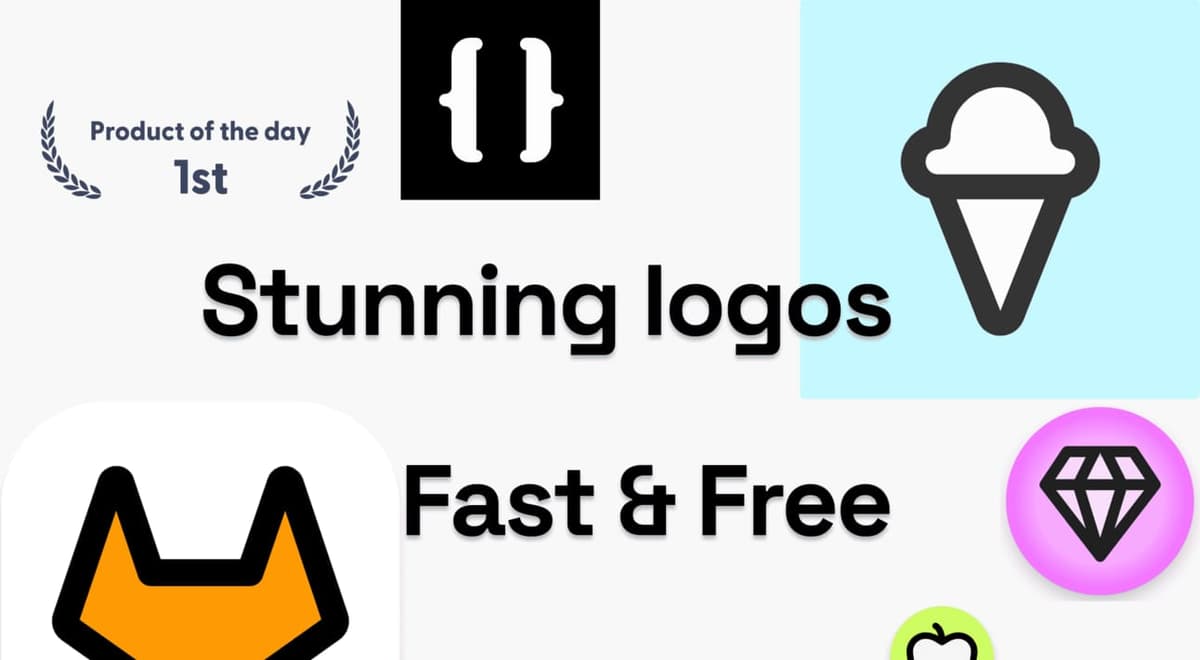
4 YEARS OF FAILURE
My entrepreneurship journey started in 2016 when I believed I was Mark
Zuckerberg.
It took 2 years to make my first $1 online
https://marclou.beehiiv.com/p/my-first-dollar-online. Later, I grew a SaaS to$3,000 MRR, but I started to see my journey as a failure after 4 years of grind.
I got depressed in 2021 and quit entrepreneurship.
I worked for Tai Lopez as a product manager to overcome my depression
https://marclou.beehiiv.com/p/solopreneur-rollercoaster. It worked because Ifinally had a sense of purpose.
When I got fired in November 2021, it didn’t matter. I had a dream. I discovered
my role models on Twitter: Pieter Levels
https://twitter.com/levelsioDanny Postma
https://twitter.com/dannypostmaaand other cool kids working solo on their projects from anywhere in the world,
making much more money than needed to live comfortably.
I wanted freedom. I was living in Bali with my Korean wife, $20,000 in the bank,
no audience, and bad coding skills.

I couldn't find a non-topless picture of us in Bali… this was in France
JUST FOR FUN
When there isn’t much happening in your life, it’s hard to find a startup idea.
I was so frustrated about my previous years of go-big-or-go-home mindset, that I
needed a simple project everyone could understand.
In December 2021, Mood2Movie
https://mood2movie.com/was born: A movie recommendation app based on your mood. It sounds fancy but
it’s just a simple if [mood] then [movie_genre].
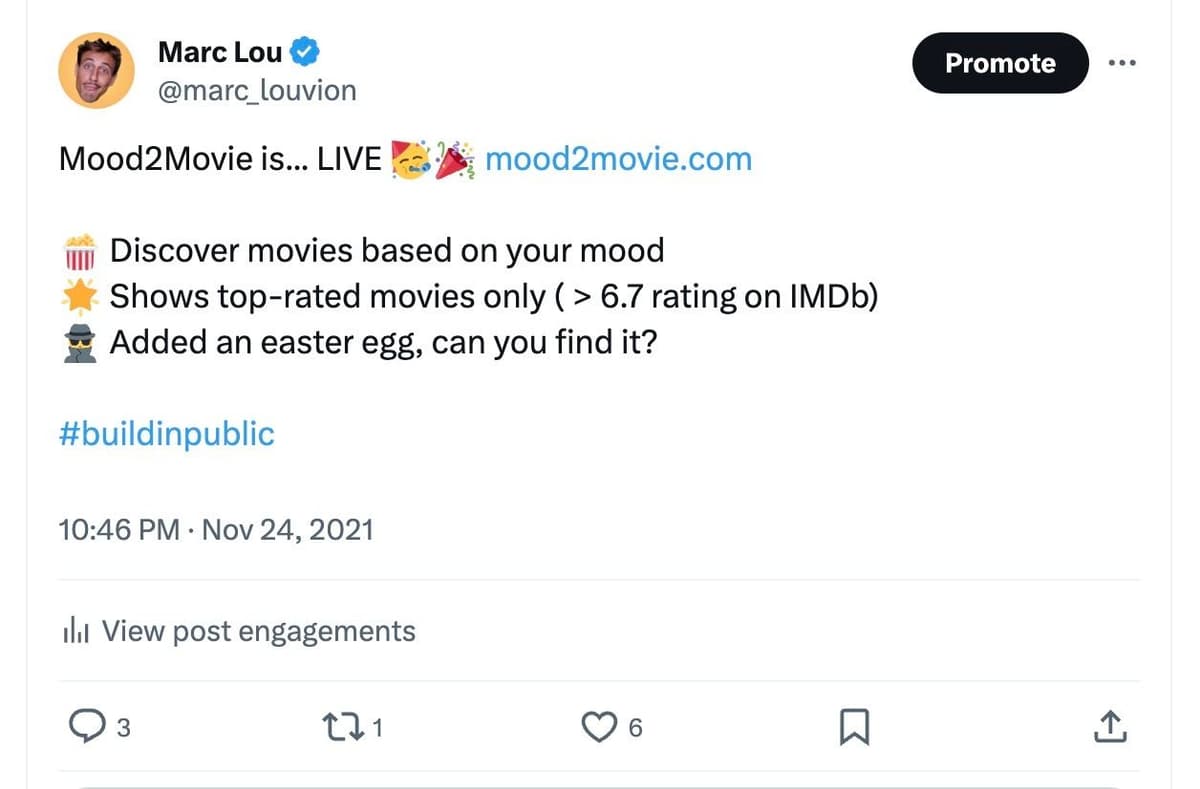
This project kickstarted my build-in-public journey. The app is free so I could
launch it everywhere on Reddit. One post went viral and got 10K visitors. So I
had somewhat valuable content to share on Twitter.
In 6 months, I launched 7 projects without thinking about business, just for
fun. I learned much about coding, SEO, writing, launching, and marketing. My
Twitter account reached 1,000 followers in July 2022.
Meantime, I ate healthy food, prioritized sleep, and worked out every day
(surfing or skating). I also raised a chick.
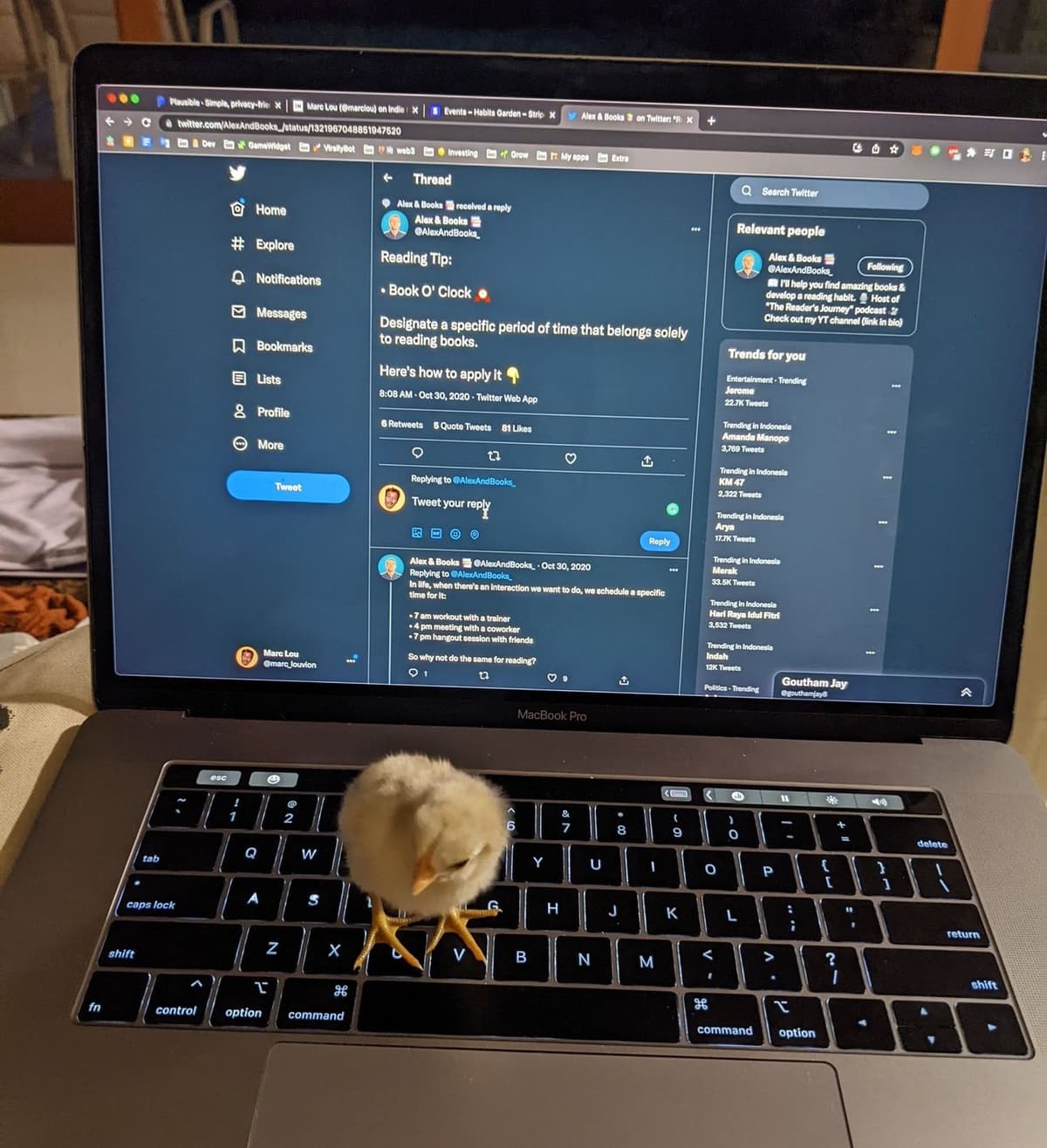
My wife named him 귤 (Kyul)
Even though I was making just a few hundred $ a month, it was too much fun to
give up.
I FELL IN LOVE
In August 2022, my gamified habit tracker, Habits Garden
https://habitsgarden.com/was making ~$200/month so I went all-in. But I’m a product-obsessed developer. I
don’t like marketing.
Side-project marketing saved me: Ship free tools to promote a paid one.
For instance, I launched VisualizeHabit
http://www.visualizehabit.com/free tool to visualize the compound effect of tiny habits. I plugged Habits
Garden and it brought 30,000 visitors in 2 months.
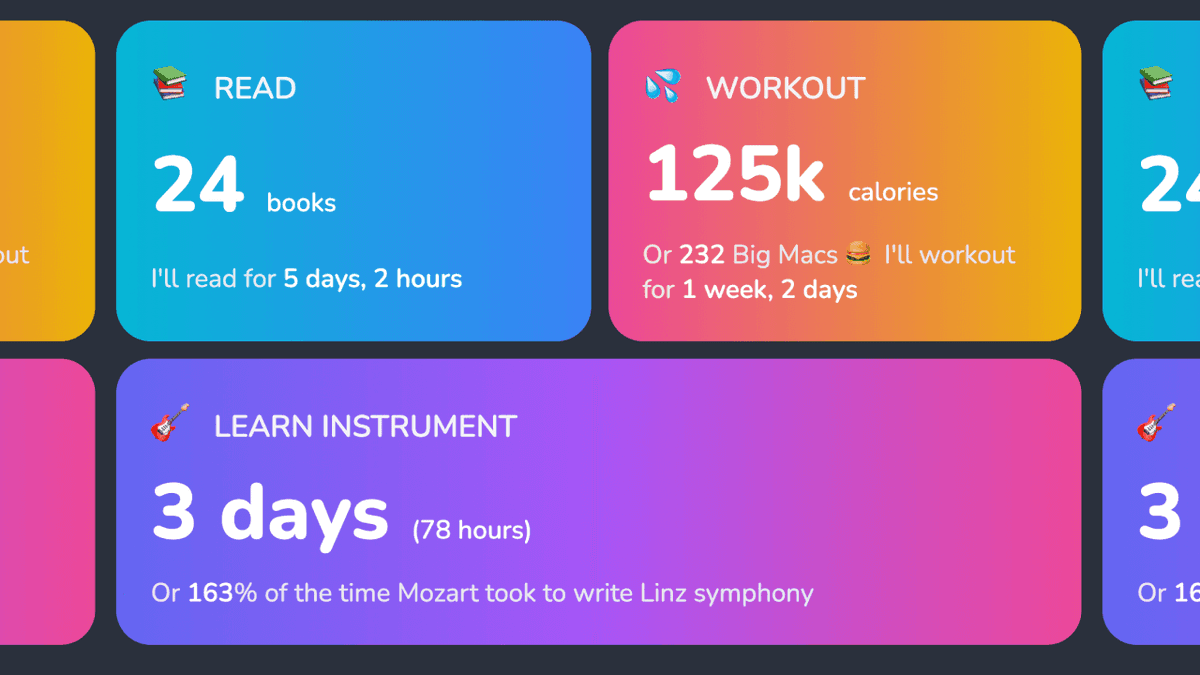
If you read 5 minutes/day for 1 year, you’ll finish 6 books
For a side project to work, I had to be good at launching. I started to make fun
launch videos
https://x.com/marc_louvion/status/1604748220198191104People enjoyed and shared them, creating a viral loop. Each side-project grew my
Twitter following and brought decent traffic.

Skit for the launch of ByeDispute
https://www.youtube.com/watchThanks to side-project marketing and launch videos, Habits Garden reached 10,000
users in January 2023.
Users requested a mobile app. I had no idea how to code them, but I tried. After
14 days with the help of my friend Martin
https://twitter.com/martindonadieuHabits Garden was live on the App Store and the Play Store.
It was making $700/month. Not bad, but not worth 6 months of my life. I fell in
love with the wrong product.
BACK ON THE GRIND
Early 2023, I sold a micro-startup
https://twitter.com/marc_louvion/status/1620057832585560064I built in 2021. It was making $80/month and was acquired for $4,300. I had
stories to tell. My Twitter account grew by ~50 followers a day.
But I was still not making enough to cover my cheap lifestyle.
So I did the 2021 strategy again: Ship startups like a madman. But this time, I
applied some rules:
* No free plan
* Only painkiller product
* Move on if no product market fit
I built 8 startups in 8 months. 6 made money. 2 paid the bills. Ship fast,
launch viral, repeat. In July 2023 I was making ~$3,000/month.
60% of my revenue was generated by MakeLanding, an AI landing page generator. I
tried to grow it but failed. I didn’t use the product and I didn’t care about
the market. I just built the startup out of AI FOMO.
In August 2023, my whole family flew to South Korea where my wife and I
re-married. It was wonderful.

PRODUCT MARKET FIT
Holidays are magic. When I left for Korea, my head was full of questions. When I
came back, it was obvious: I must build a business for customers I care about.
So I quit all my faceless AI projects and focused on products I’d use.
I sold my AI landing page generator for $35,000 and my habit tracker for
$10,000. It gave me time and clarity. I wrote about the process and the outcome
https://marclou.beehiiv.com/p/how-to-sell-your-micro-startup.On September 1st, I launched ShipFast
https://shipfa.st/a NextJS boilerplate to ship startups fast. I packed 2 years of shipping
knowledge in a GitHub repo.
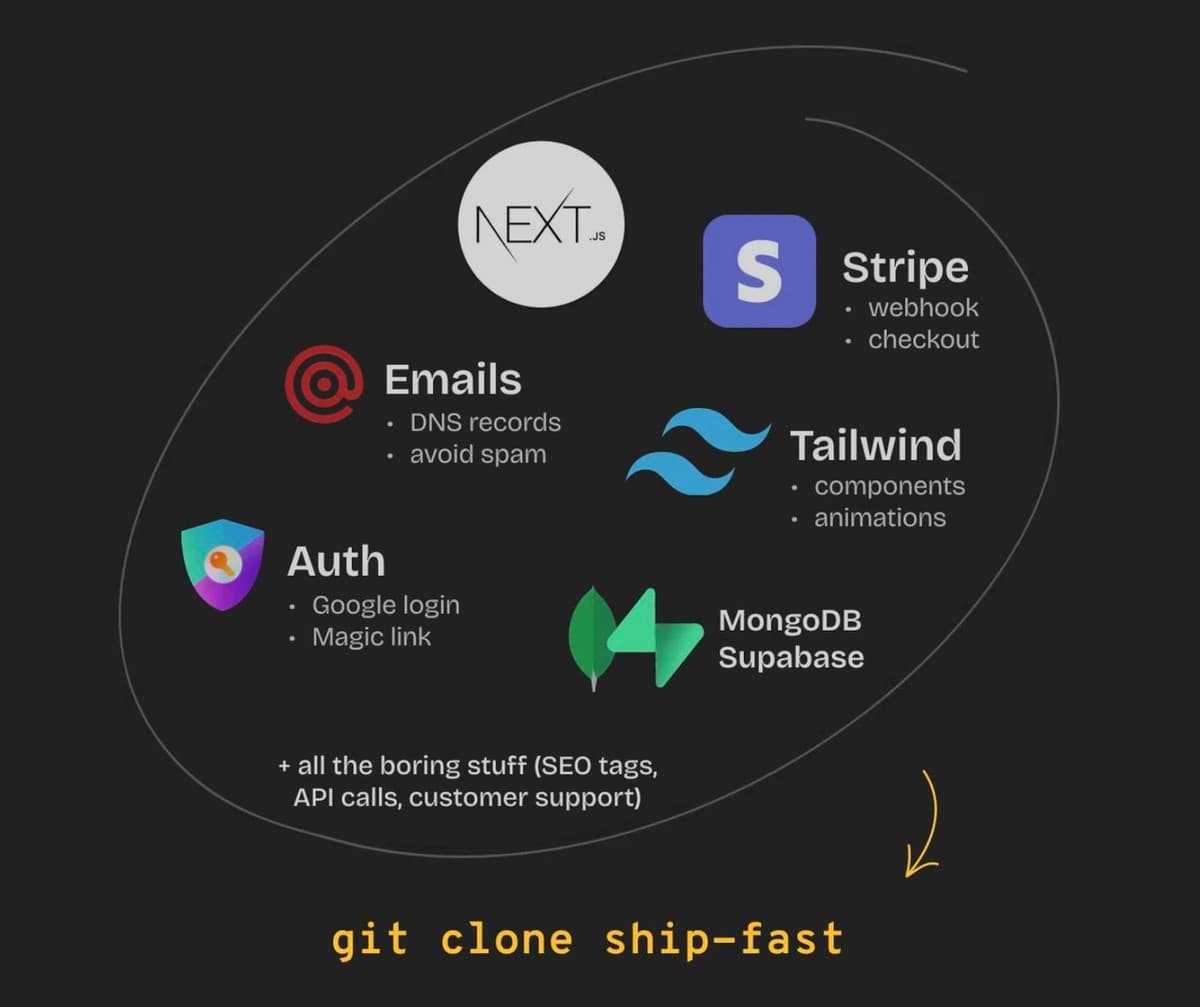
I told my wife we’d be lucky if we made $100 with it. By the end of the month,
ShipFast made $40,000. I was blown away. It’s hard to describe product market
fit, but when it hits, it’s clear.
I kept adding features while tweeting about it. I received tons of testimonials
from customers who made their first $1 online thanks to the boilerplate. I was
happy.
I also launched ByeDispute
https://byedispute.com/A no-code tool to prevent Stripe chargebacks.
In November, my revenue hit $65,400/month at a 91% margin and 0 employees. As of
today, December 17th, ShipFast alone made $168,100 in total revenue.
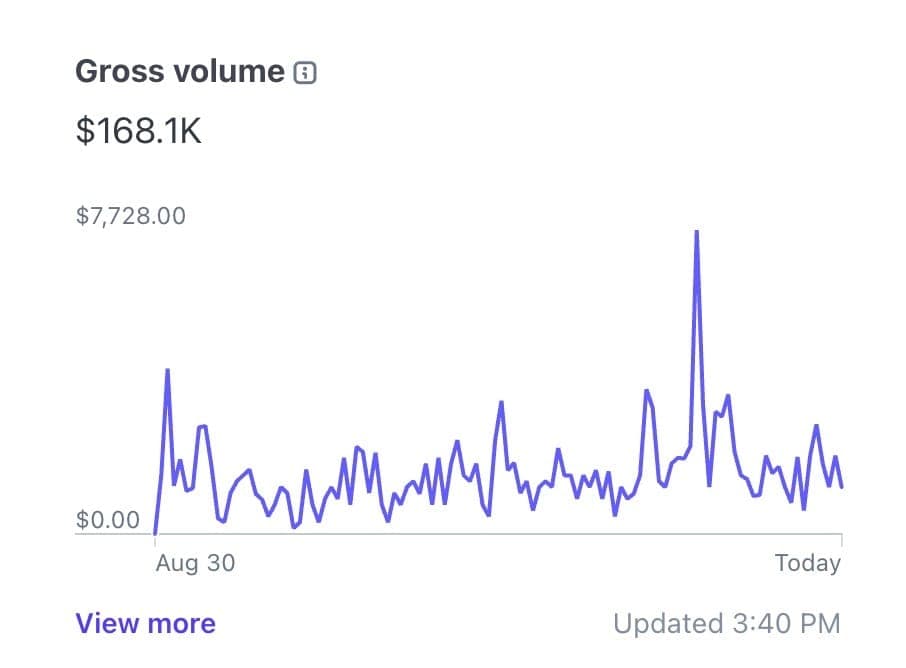
WHAT MONEY BUYS
I don’t stress about paying the bills anymore.
I can also speak to a bigger audience because everyone understands money. It’s
hard to explain to a doctor what a NextJS boilerplate is. But a $60,000/month
salary buys you attention.
Besides that, my life hasn’t changed.
I surf, write, and code every day.
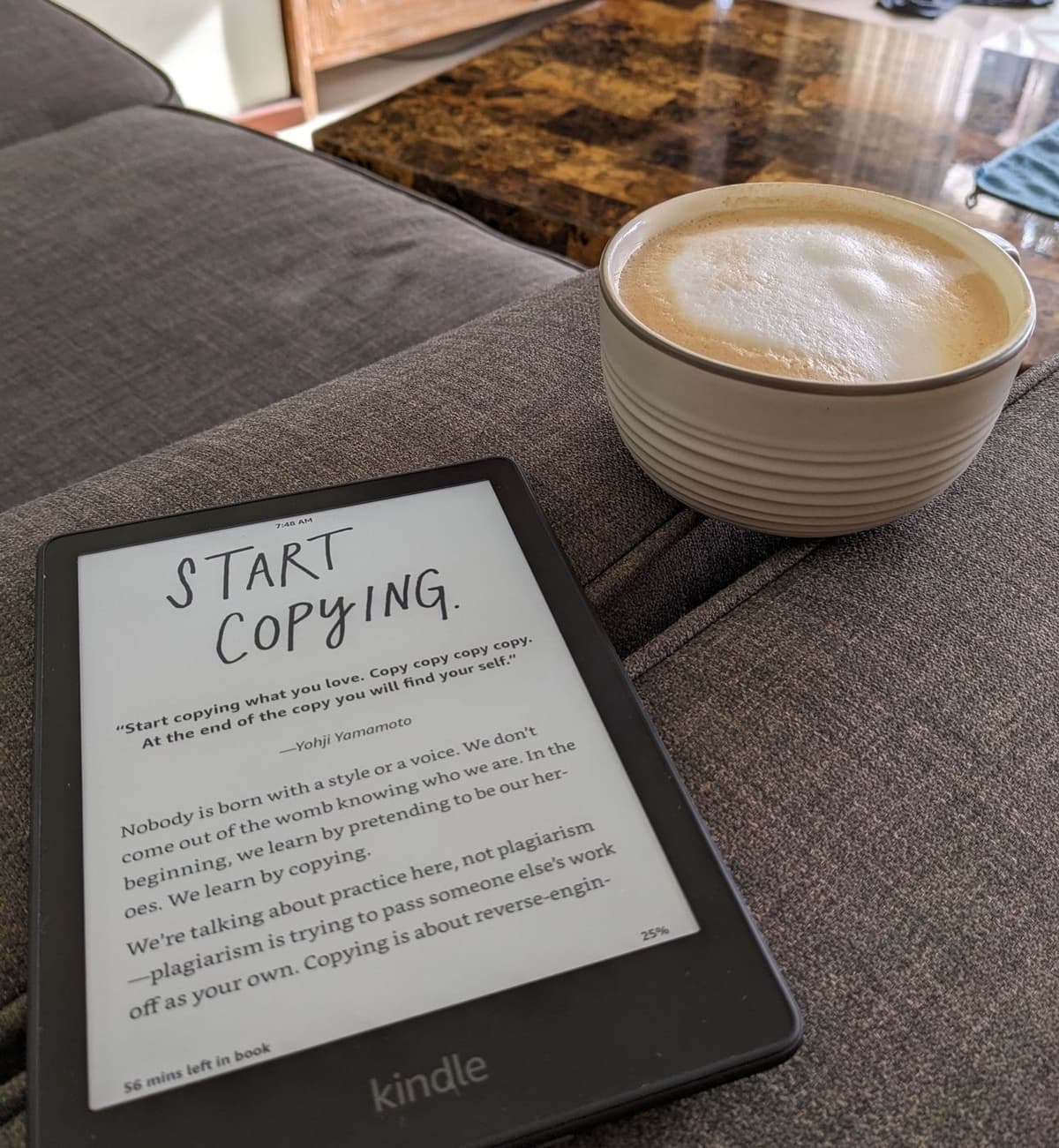
I also read for 30 minutes after waking up
Living for 6 years with $1,000/month taught me a lesson: My happiness comes from
creating, not consuming.
WHAT I’D TELL MYSELF IF I STARTED AGAIN:
* Find your models: To grind in the void for months, you need a dream.
* Don’t fall in love with your code: Most startups fail. Keep shipping until
one startup hits product market fit. Your customers will tell you which
features to build.
* Focus on painkillers, not vitamins
* Add a buy button to all your startups, and ditch free plans
https://marclou.beehiiv.com/p/ditch-your-free-plan* Start, then think: Even if it’s a stupid idea, build it. You will get more
and better ideas, sharpen your skills, and stay motivated.
Thanks for reading my story. But mostly, thanks for following my journey. I
wouldn’t be here without the attention you gave me across the last 2 years.
Solopreneur Rollercoaster: From $1 to overcoming depression
After making my first $1 online, I sunk into depression and quit everything.Growing a SaaSFailing lifeOvercoming depressionWhat I would tell myself if I had to restart again
Everything changed after making my first $1 online
https://marclou.beehiiv.com/p/my-first-dollar-online in the summer of 2018.I started to believe in a world where I could work solo, pay the bills, get
happy customers, and have no constraints whatsoever. Total freedom.
But I didn’t know the price to pay... Here’s my solopreneur rollercoaster.
Estimated reading time: 6 min 34 sec
BUILDING IN PUBLIC UPDATE
LaunchViral
https://launchvir.al/made $3,737 in preorders.
It’s my new course to make viral launch videos and grow your startup. A few
presale coupons are still available.
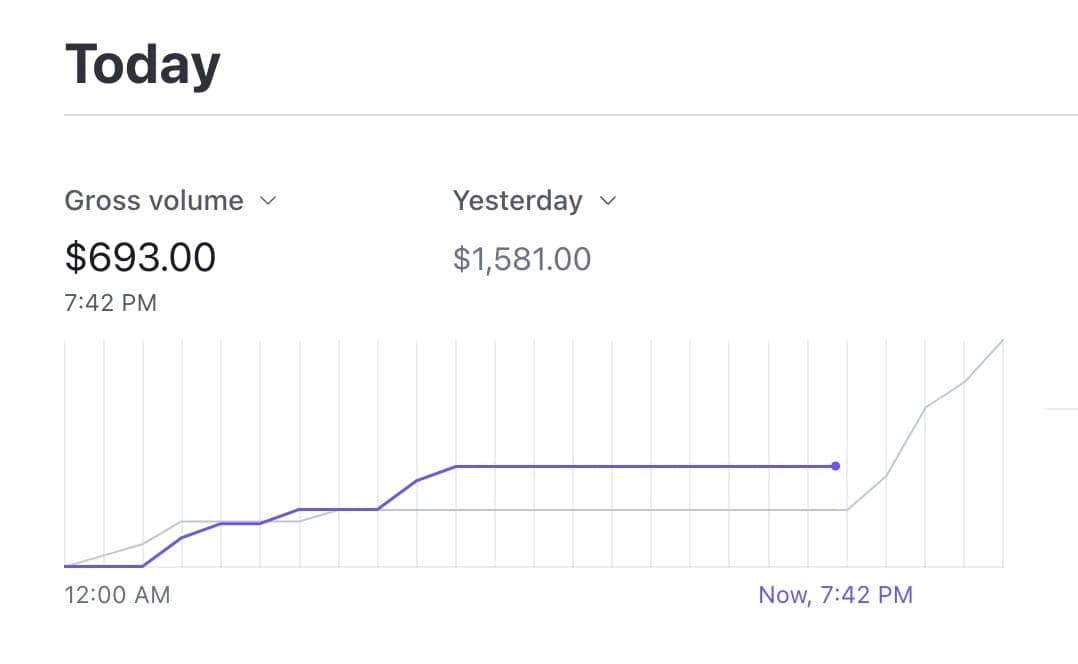
GROWING A SAAS
After making my first $1 online in 2018, my Korean girlfriend and I had no
reason to stay in Seoul anymore. We’d rather be somewhere hot and cheap. So we
moved to Bali in September.
I was working on VirallyBot: a gamified marketing tool for escape room
businesses, priced at $199/month. A typical day would be:
* Marketing in the morning: Collecting leads and sending cold emails. I tried
cold calls but it was not working for me.
* Product in the afternoon: Adding games and features while learning how to
code.
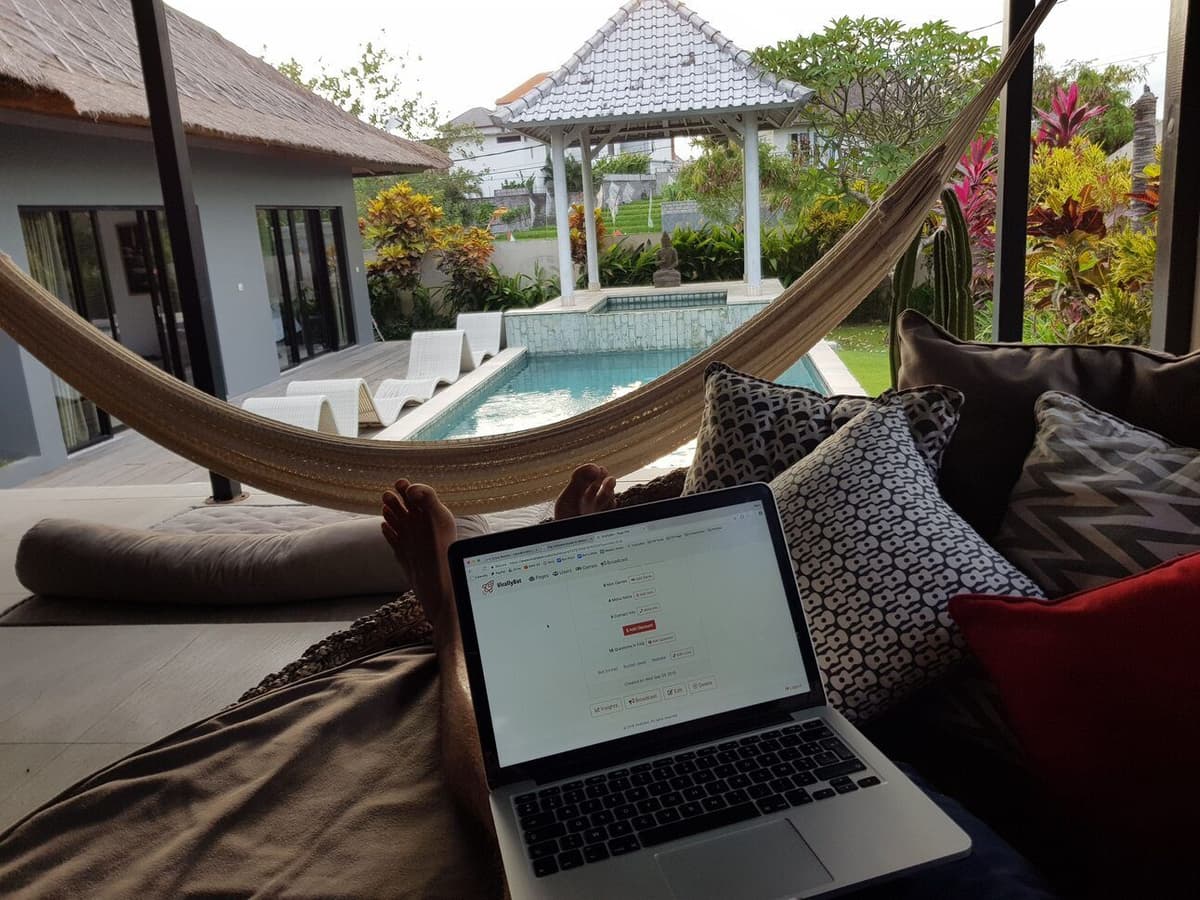
We lived in Canggu with 2 roommates
Life was good. I was not living in a bugs-infested room anymore, I learned how
to surf and the SaaS was making $1,500/month.
But churn was high. To earn money with my software, escape rooms had to use it.
Most didn’t.
I felt like on a treadmill: New customer, new churn. So I offered a yearly plan
for $1,999 and got some sales. My revenue hit $3,000 in early 2020. But I was
just running faster on the treadmill.
So I built a new product called GameWidget: An embedded mini-game on websites to
entertain visitors and offer discount coupons.
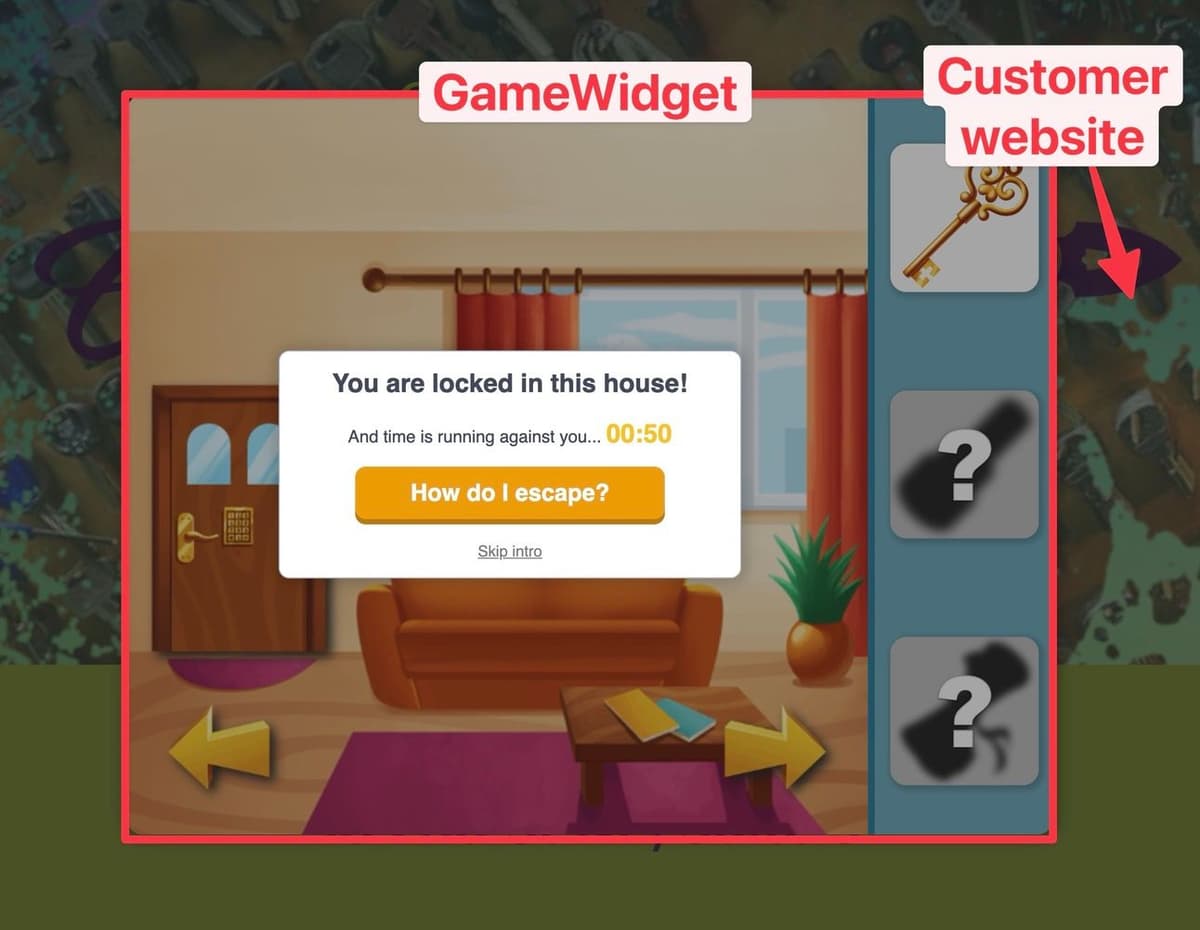
Winners of the game get a discount coupon for the escape rooms
Same market (escape rooms) and same strategy (gamification marketing) but
different fulfillment. Instead of using the software, my customers just had to
add a script to their sites and let the magic happen.
I beta-tested the product for 2 months and the results were impressive: +0.6%
conversion rate (3% is considered great in the industry). I was excited.
FAILING LIFE
When COVID hit in March 2020, all escape rooms closed. My revenue went to $0 in
a week.
I was fortunate to be in Bali because I met Hugues who became my best friend. We
spent 6 months surfing empty waves and talking about life.

We surfed 6-9 feet waves in tandem
Just like my girlfriend, he never judged me—I could show him every weird side of
my personality. Thanks to them, I stopped caring about what others think of me.
In the summer of 2020, my girlfriend and I decided to get married. We flew back
to France. My Korean parents too. The wedding was wonderful. Unfortunately, we
couldn’t go back to Bali due to COVID restrictions. We lived in Paris with my
parents and sisters for 1 year.
I worked on my previous SaaS and got it back to $1,000 MRR, but something was
off. I didn’t like it anymore, so I quit.
After a few months of nothingness, I had to start something new. Anything. So I
launched The Golden Plumber in January 2021. Males often dribble after going to
the toilet, due to the nature of our engine—as my sister explained (she’s a
doctor).

Entrepreneurship at its peak
I created an info-product (2-page PDF) and ran ads on adult websites. I made $8
in 2 months. I quit, again.
My parents gave me $100,000 as an early legacy. I invested everything in Tesla
in March 2021, when the stock hit an all-time high. I refused to use the money
for at least 10 years. I still believe it’s not mine.
2 weeks later, my portfolio went down by -$36,000.
I was 27 years old, broke, and living with my parents. A recurring thought
started to echo:
I am a failure…

On Wednesday 9th, June 2021, while drinking a morning coffee in my bedroom, I
started to cry. Sadness turned to anger and dug 4 holes in the wall.
OVERCOMING DEPRESSION
It’s not common to see a 27-year-old boy crying in his mum’s arms on the sofa.
But life isn’t like movies. I needed a change, a big one:
Quit entrepreneurship and get a job.
Within 2 weeks of applying as a software engineer, I got an interview. At the
end, the HR asked: Do you want to say anything to Tai Lopez? It wasn’t written
on the application, but it was a $9,000/month job offer to work for Tai Lopez. I
accepted.
I started reading. I thought I hated books because it was boring in high school.
It turned out to be my favorite activity. My first book was “Why We Sleep” by
Matthew Walker. It changed my life. I realized I was tired without knowing it.
Fixing my sleep unlocked more motivation, happiness, and less anxiety.
While I worked for Tai, I also learned Korean. 1 hour a day, 6 days a week. 3
months later, I could have a conversation with my wife.
My mood improved every day. I was growing, and I finally had a sense of purpose.
In October, we went back home to Bali. I got fired in November 2021.
But it didn’t matter. I was so inspired by Pieter Levels
https://twitter.com/levelsiobuilding startups in public that I went back to entrepreneurship. I had a new
dream.
It took 2 years to turn that dream into a real world of freedom with no
constraints, happy customers, and $65,000/month.
https://marclou.beehiiv.com/p/my-solopreneur-story-0-to-65k-month-in-2-yearsWHAT I WOULD TELL MYSELF IF I HAD TO RESTART AGAIN
* Money can’t buy product-market fit: When I worked for Tai Lopez, we launched
3 apps and spent thousands of dollars on marketing. None made money.
* Don’t link your revenue to your customer success: My friend Dan
https://twitter.com/dankulkovwas right—you can’t control how people use your product. They often get busy.
* Small actions today will compound tomorrow: When I quit working on
GameWidget, it was making $80 MRR. I sold it for $4,300 in 2023
https://twitter.com/marc_louvion/status/1620057832585560064* Make sleep your #1 priority.
* Get married: It creates a strong sense of commitment. We’re in the same boat
* Call your friends: My best friend Hugues passed away in 2022. I wish we spent
more time together.
* Be whoever the fuck you want: Don’t let anyone make you feel weird or wrong.
My first $1 online
Making $55,000/month was easier than making $1 online. What I would tell myself if I had to restart again.BackgroundShe said “Yes”What I would tell myself if I had to restart again
Although I earn $55,000/month as a solopreneur, I’ll never forget how much I
struggled to make $1.
It took 2 years of chaos and mistakes. Here’s what I would tell myself if I had
to start again.
Estimated reading time: 6 min 14 sec
BUILDING IN PUBLIC UPDATE
You can now build an entire Blog in minutes with ShipFast
https://shipfa.st/* Pre-generated pages for posts, authors, and categories
* SEO-optimized (itemProp, schema markup, meta)
* Custom design, responsive, and 20+ themes
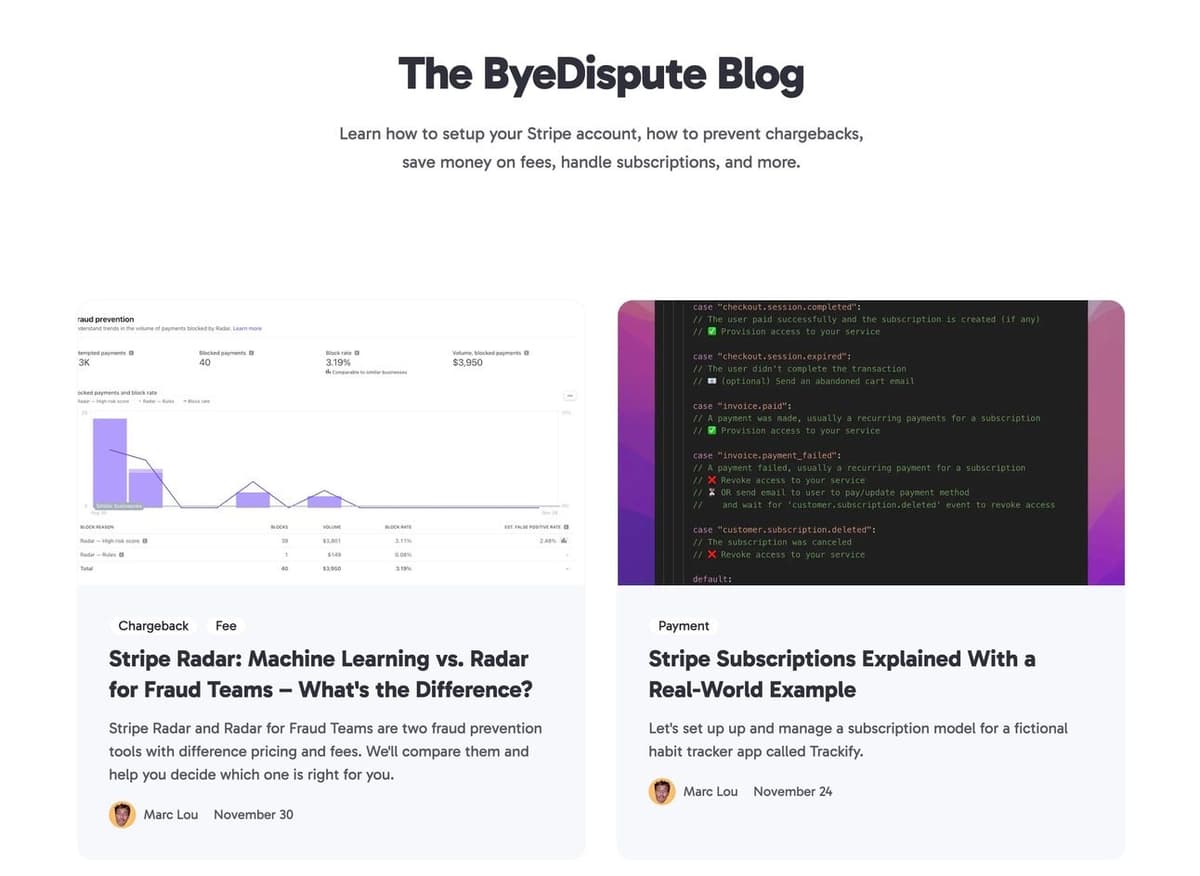
This blog ranked on Google 48h after submission
BACKGROUND
I graduated from Computer Science in 2016. My friends applied for a job in Paris
but it didn’t feel right to me. My exchange semester in Hong Kong in 2015
transformed me. I didn’t know what I wanted—I just didn’t want that.
On a regular hangover Sunday morning (2 pm) I watched The Social Network movie
and had an epiphany: I will be the next Mark Zuckerberg.
My secret unicorn idea? Tinder for sports lovers. I spent an entire year:
* Learning to code because I was partying instead of studying at the university
* Asking people to sign an NDA to listen to my idea
* Designing a logo and business cards
A waiter
https://media.beehiiv.com/cdn-cgi/image/fit=scale-down,format=auto,onerror=redirect,quality=80/uploads/asset/file/5ff20310-b2d6-4990-9740-afd9dee500c9/IMG_2327.JPGI was making $10/hour and believed I was Mark Zuckerberg
To pay the bills, I was a waiter in a restaurant in Paris. During my shift, a
customer mentioned a new school to learn entrepreneurship.
I was lonely so I registered. The teacher asked how my startup would make money.
I froze. How come I didn’t think about it after a year of work?
My app was a disaster. Users couldn’t even sign up. And I was the only user. My
relationship with my girlfriend wasn’t working either.
On March 10th, 2017, I quit everything. The next week, my parents drove me to
the airport. I cried in the car.
My friend, Sacha
https://twitter.com/park_sacha_was waiting for me in Seoul, South Korea. We raised $100,000 from angel
investors and built an AI startup with 2 employees.
a person giving a speech
https://media.beehiiv.com/cdn-cgi/image/fit=scale-down,format=auto,onerror=redirect,quality=80/uploads/asset/file/ffd48d44-c92b-4f8f-94a0-97db6938cfc1/IMG_5639.JPG10% real work — 90% pretending
We were trying to reverse engineer flight ticket pricing to predict their future
prices. 9 months later, we had a bad product, no income, and I was wearing a
shirt every day. So I quit, again.
In December 2017, I was broke, in a foreign country, and had zero
self-confidence. I started to smoke again (I smoked for 7 years in university
and stopped when I arrived in Korea).
After reflection, a pattern started to emerge: Big goals, big failures.
I saw an ad on Facebook selling gloves for couples (1 big mitten to hold hands
together). I decided to copy and sell them on Facebook for Koreans.
As a product-obsessed engineer, I didn’t think about dropshipping. I had to
build the product. A lovely Korean grandma knitted 50 Glovers:
Gloves for Lovers (I was quite proud of the name).
a couple holding hands

It took a month and a half to knit 50 Govers
My new Korean girlfriend helped with the translation. I burned all of my savings
on Facebook Ads (a few hundred dollars) with this video
https://www.youtube.com/watchI made 0 sales.
In January 2018, my 8-square-meter bedroom was filled with Glovers, but my bank
account was empty. At $20 per piece, I had to sell them to pay the rent. My
girlfriend and I went down the street every night to sell them.
To brave the minus 15 degrees Korean winter, we had to drink 1 liter of beer
before standing in the street for 2 hours. We would sell 2 gloves per day. I
would wake up sick and coughing.
What the fuck I am doing with my life?
SHE SAID “YES”
In April 2018, I was more broke than ever, out of shape and unhealthy. I needed
a big change.
I applied for a second role acting to pay the bills. I would get a call once or
twice a week and get paid $200 per gig. Then I started to work out every 2 days
for clarity of mind—20 minutes of intense jumping rope. I got shredded in 1
month.
Finally, I set a simple goal: Make $1 online with code.
To avoid another failure, I focused on problems, not products. Every business
wants to grow. So I decided to build a gamified marketing tool for escape rooms.
At a startup event, I met Andrey
https://twitter.com/andrey_seasa talented marketer who became my friend. He said: Why don’t you sell it before
you make it?
I’m an engineer, I love building. Marketing? Not at all. But I failed for 2
years so I decided to listen. He taught me the foundation of marketing. After a
few cold emails, Daniela from Time's Up Escape Rooms in Australia wanted to
learn more about the product over a quick call.
a selfie of a person in a small bedroomm

On Friday 13th, 2018, I was in Osaka, Japan for a 3-day visa run. I just had a
bad night of sleep in the cheapest guest house I could afford. 9 am. I was in
the common area, it was hot, and the wifi was bad. The call started.
There are no words to describe how cringe I was. So here’s the intro
https://drive.google.com/file/d/1YcckfsYOCkaNSnhhUBWHHaDhJSXrTRY1/viewof the sales pitch. After 42 minutes, she said “yes”. By the of the day, she
subscribed to the $99 monthly plan. YES!
I went back to Korea and built the product. That call started a SaaS business
called VirallyBot. It made $70,000 and it’s still paying the bills ($600/month
in 2023).
A stripe dashboard
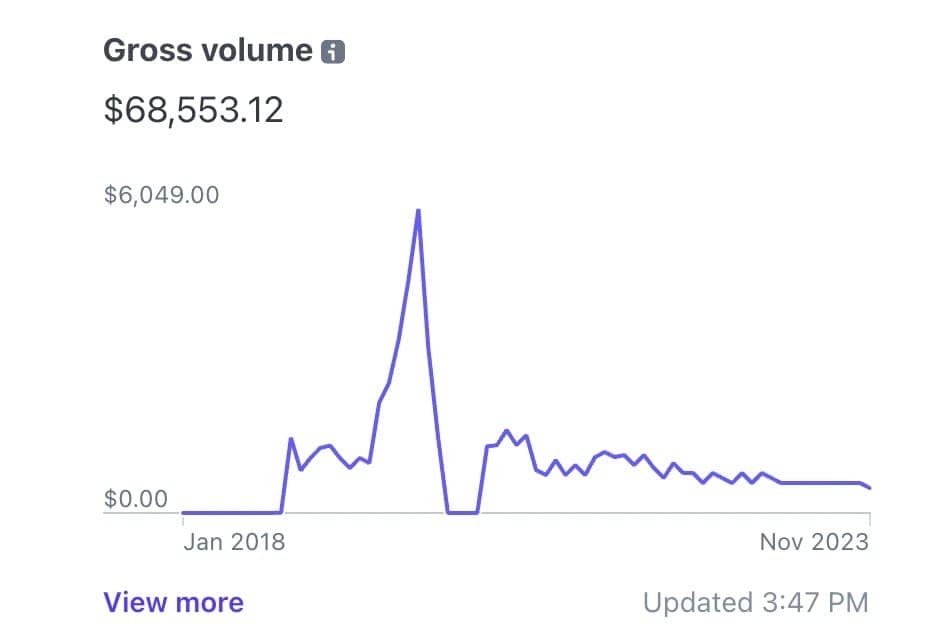
1 call paid the bills for 5 years
WHAT I WOULD TELL MYSELF IF I HAD TO RESTART AGAIN
1. Forget big startups, try making $1 online first. Movies and media make
unicorn founders famous. But making a living with your craft is the deepest
source of happiness.
2. Listen to relevant persons. I didn’t question my friend Andrey about
marketing. I applied everything he taught me.
3. Hard times build strong relationships. My Korean girlfriend with the gloves
project is now my wife and my best friend.
4. Success happens much more quickly than expected. Make a radical U-turn,
throw away the past, and restart.
5. Eat healthy, work out, and sleep well. It impacts all your decisions.
6. Don’t fall in love with your product. Ship fast and launch fast. One feature
with a buy button is enough. Your customers will shape the rest of your
product.
$6,000 of profit in 48 hours
4 lessons to launch profitable startups1. Don’t build AI products2. Focus is overrated3. Design is underrated 4. Product Market Fit, or no
Hey, it’s Marc.
The last 3 days were wild.
* I’m writing this issue locked in my 8-square-meter bedroom—the strongest
typhoon in the last 80 years is hitting Hong Kong
* I launched ShipFast
https://shipfa.st/and earned more money in 48 hours than I did in 2022
Here are 4 lessons that’ll change my journey forever.
Estimated reading time: 3 min 16 sec
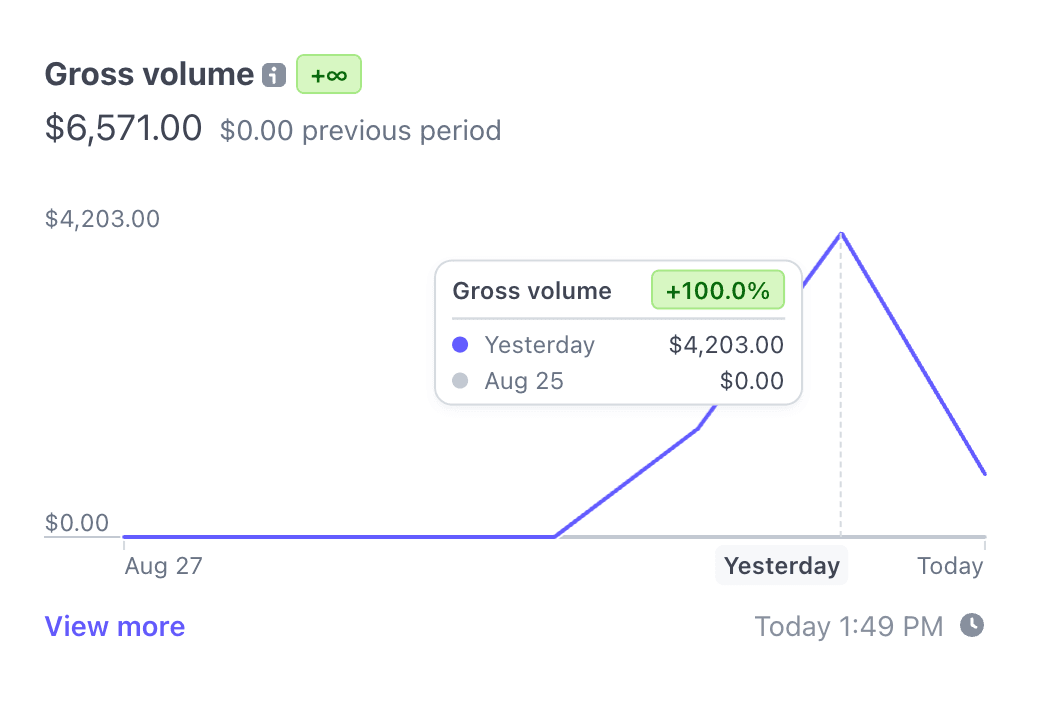
BACKSTORY
I made 2 decisions in April 2023:
1. Always have a buy button on every project
2. Build painkillers, not vitamins
At that time, AI FOMO was at its peak. I took the plunge and built MakeLanding
https://makelanding.ai/and WorkbookPDF
https://workbookpdf.com/Both made money. MakeLanding generated $12,000 in a few months. But something
was off… Low conversion, angry customers, high refund rate.
In August, I took 2 weeks off to Korea, remarried my wife
https://twitter.com/marc_louvion/status/1678020135926517761and came back with a new goal: Make something people want.
But I don’t know what people want — me too.
So I built something I wanted—a code boilerplate to ship faster—and hoped people
would need it too. I built it in a week, with no expectations, and launched it.
Here’s what I learned:
1. DON’T BUILD AI PRODUCTS
What can AI improve or fix? A million ideas come to mind, but none fix the
problems I have.
If there’s an easy way to find startups, VCs and people who experience the
problem are already on it.
FOMO is real. Twitter success stories keep reminding us. Don’t fall into the
trap. If you want to build with AI, build something else and see how AI could
improve your workflow.
2. FOCUS IS OVERRATED
* 365 days on my first startup: $0
* 365 days on a habit tracker: $5,000
* 7 days on ShipFast: $6,000
Startups and relationships are the same. You wouldn’t marry someone you met last
week. Don’t try to make a startup work if there is no initial traction. Create a
bunch of startups, see what sticks, and then focus.
I was dating for 6 years. Now my focus is IndiePage
https://indiepa.ge/and ShipFast.
But there is a guy on Twitter who focused on a startup and it took off after 2
years… This guy knows what he’s doing. He’s probably been working in the
industry for years and knows something people don’t. Unless you’re that guy,
don’t marry startups without product-market fit.
3. DESIGN IS UNDERRATED
Landing page is hot — One of the most common feedbacks I heard for ShipFast.
Your design is the YouTube thumbnail. Your copy is the video title. Visitors are
caught by the design and stay for the copy.
I’m not saying you should spend weeks adding SVG doodles. A good design is just
3 things:
1. Padding: The right space between copy, buttons, and sections. RefactoringUI
https://www.refactoringui.com/by TailwindCSS is a masterpiece.
2. Layout: Big headlines, smaller paragraphs.
3. Typeface: I found Bricolage Grotesque for ShipFast and I love it so much,
that my wife is jealous.
ShipFast homepage
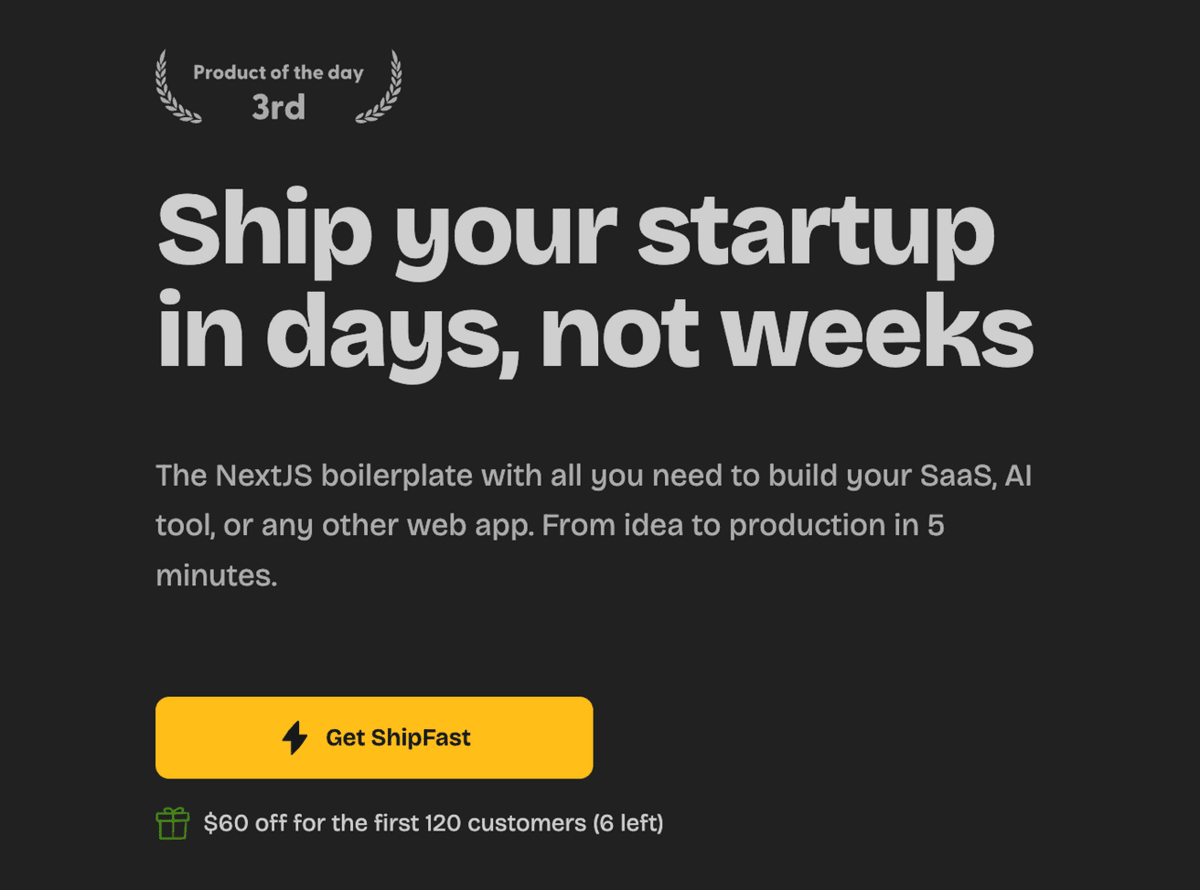
ShipFast homepage
https://shipfa.st/4. PRODUCT MARKET FIT, OR NO
* A customer of ShipFast apologized because there was a bug and he couldn’t
access what he paid for
* Another one asked for my bank details because he didn’t have a credit card—he
wired the money
For 7 years, I tried to convince users my apps were worth trying—pushy. But with
ShipFast, users were pulled into the product.
Build something that makes users want to pull their credit cards like a
no-brainer. Don’t waste time on the rest.
We live 4,680 weeks, you have 4,680 shots.
